The Ultimate Ecuador Itinerary 2023
09/27/2023 by Guest Blogger Leave a Comment
This is a guest post by Alyssa.
There is something extra special about visiting Ecuador. Maybe it’s because it is still somewhat off the beaten path, meaning there are far fewer crowds than more popular travel destinations; or perhaps it’s because Ecuador is the country of four worlds: coast, jungle, highlands, and islands; or maybe it’s the llamas (it’s definitely the llamas). And that’s not to mention the ancient ruins, magical hot springs, and rich culture.
Budget-friendly Ecuador features activities for all interests. History buffs will love its many ancient ruins. Adventure enthusiasts will be in paradise among the Andes Mountains. And who doesn’t love taking a dip in a natural hot spring at the end of a long day?
Is it obvious I am absolutely enthralled by this country? While Ecuador is often not the first choice for women planning a solo trip, I cannot begin to describe what an underrated, beautiful country I think it is.
Table of Contents

Ecuador Planning Details
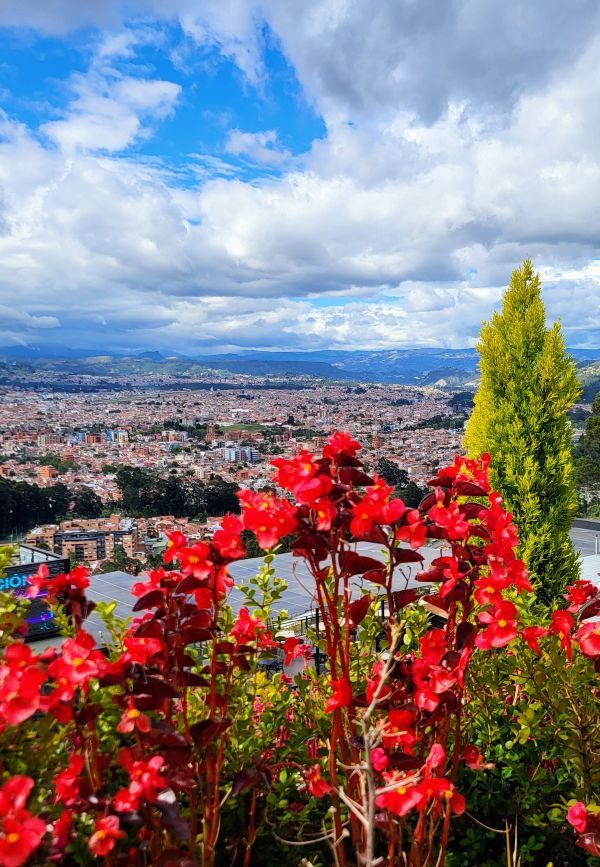
Location: Ecuador is located between Colombia and Peru in South America. Its international airport is in the capital city of Quito.
Altitude : Ecuador is in the middle of the Andes Mountains. This makes for absolutely incredible views, but also means you must take altitude into consideration. The higher-altitude places in Ecuador are Quito and Cuenca. This means experiencing altitude sickness is more likely there, so I recommend taking advance precautions, such as packing altitude sickness medication or other remedies that work for you. Altitude should not get in the way of enjoying your Ecuador trip.
Weather : Did you know that Ecuador is the Spanish word for “equator”? This is because the line crosses directly through Quito, Ecuador! Aside from a new fun fact, this is also the reason Ecuador is known for very mild temperatures year-round. Not many places have the advantage of being a temperate travel destination no matter the season! This makes creating an Ecuador packing list easy, and ensures you won’t need to take many different outfits, no matter the region.
Cuenca: 3 Days
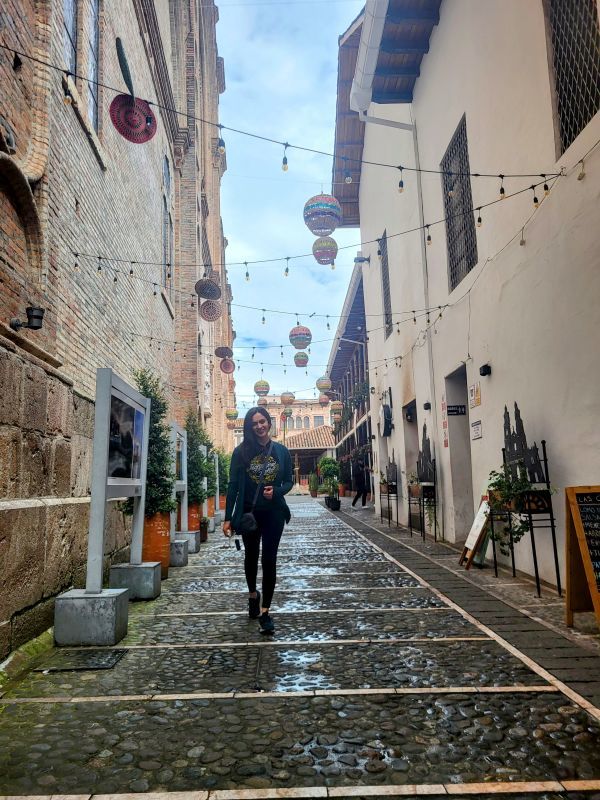
After arriving at Quito’s international airport, catch one more flight down to Cuenca. There are no direct international flights into Cuenca, so plan accordingly. I recommend spending at least three full days in Cuenca to enjoy its charm and take a day trip.
Cuenca is known as one of the safest spots in Ecuador. Located in the southern highlands, its geographic features are unmatchable. Local day trips, like Cajas National Park, provide lush greenery amid alpine lakes, making for an otherworldly experience. Weather in the national park can be unpredictable, though, so it’s important to plan for a variety of conditions and to pack layers, as it can get pretty chilly no matter the time of year. Isolated rainstorms are common.
Other popular day trips from Cuenca include Ingapirca ruins or the towns of Chordeleg and Sig Sig.
I recommend traveling by local bus for day trips from Cuenca. It is a fraction of the cost of tours, and it feels very safe. However, public transportation also means many stops to pick up passengers in several places along your journey, so this might not be the choice for you if you are tight on time.
When exploring the Cuenca itself, you can’t miss Pumapungo Museum (it’s free and houses ancient ruins) and the San Francisco Plaza, which is surrounded by historic architecture and churches, and is home to the second biggest flower market in the world (runner-up to Amsterdam!).
The best viewpoints overlooking Cuenca are Mirador Turi and Mega Parque Ictocruz.
In the evening, relax at one of Cuenca’s two thermal hot springs: Piedra de Agua or Novaqua. Piedra de Agua is bigger and offers more underground caves but comes with a starting price of $35 (not including the caves). Novaqua has more affordable package options, and is an adult-only spa. Purchase tickets for either hot spring at the front desk of the spa upon arrival.
Tip : If you are short on time, skip the Ingapirca ruins and visit the ones at Pumapungo Museum. It is open 8:00am-5:00pm Tuesday-Friday, and 10:00am-4:00pm Saturday and Sunday; it is closed on Mondays.
Stay: The Selina Hostel in Cuenca is more of a boutique hotel. Features include a rooftop restaurant and yoga studio.
Baños: 3 Days
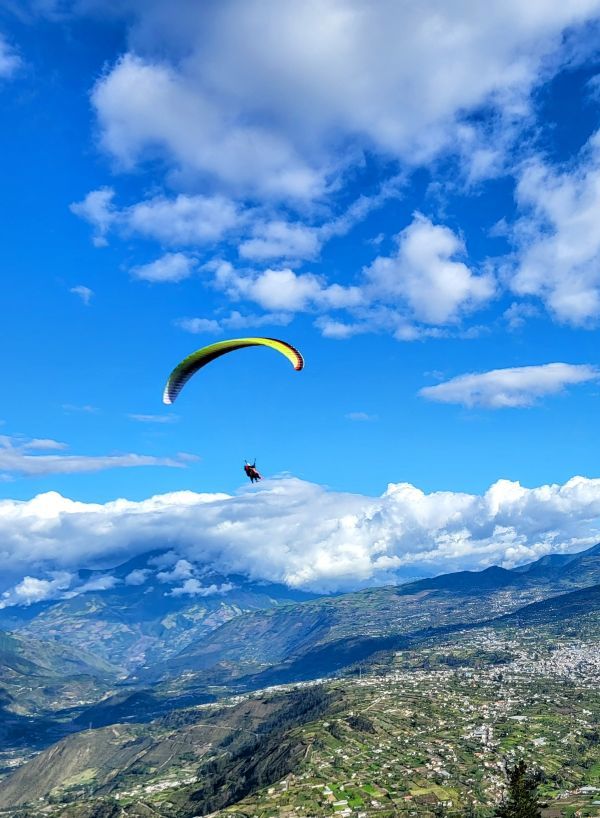
Catch a bus six hours north from Cuenca’s Terminal Terrestre into Ecuador’s adventure capital, Baños. I recommend purchasing tickets at the bus station upon arrival.
The town features world-class white-water rafting, canyoning, and paragliding. All of these activities are offered at extremely affordable prices, smack in the middle of the Andes Mountains. What’s not to love about that?!
Activities can be booked through your hostel or at one of the various tour companies downtown. I recommend spending three days in Baños in order to experience your preferred adventure activities and make time for relaxation in between all of the adrenaline. Two full days can work if you are tight on time.
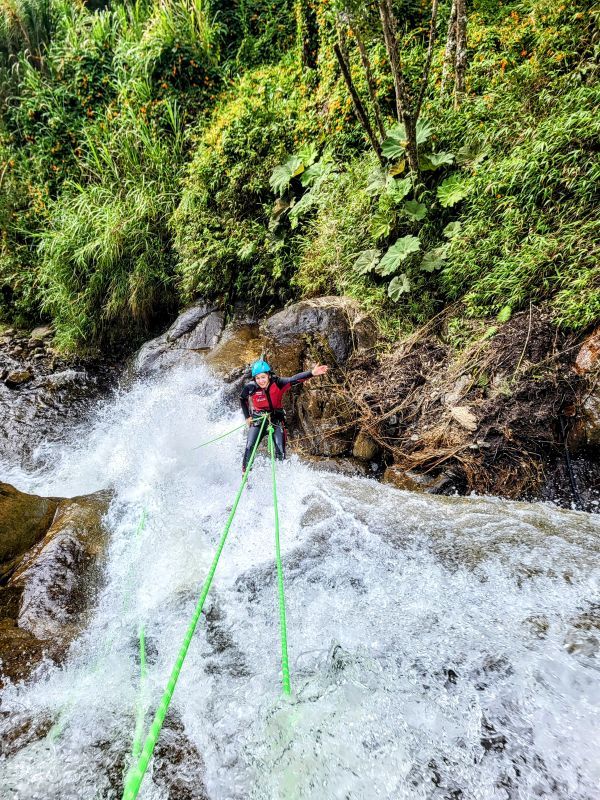
Baños is dynamic because it caters to a variety of interests. Yes, it is the adventure capital of the country for a reason. However, it also offers breathtaking accessible viewpoints (without a 12-mile hike), famous hot springs, and several spas. It is the ultimate balance between adrenaline and relaxation at an affordable price.
The two budget bathhouses in Baños are Termas de La Virgen and El Salado. These hot springs are favorites among locals, so plan to have an authentic experience. Lunca Volcán is known as the luxury hot spring. It is located high in the mountains with beautiful views but comes at a starting cost of $72. This includes lunch or dinner, three hours of hot spring access, and one spa treatment. To purchase tickets, visit the website .
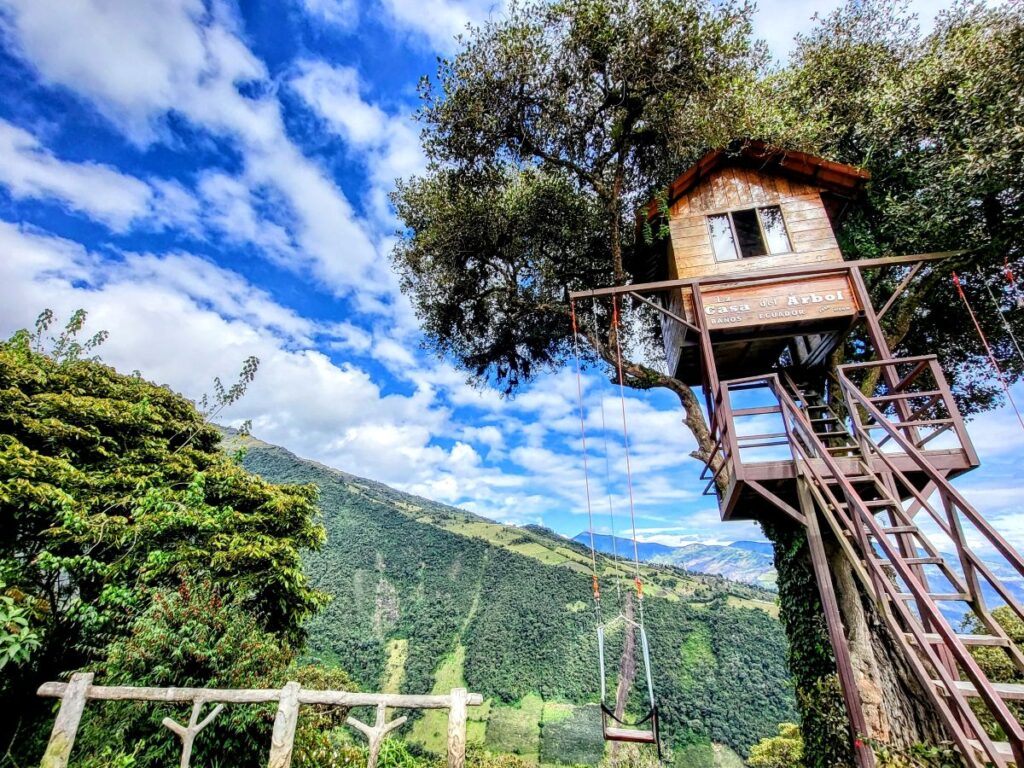
One of the most famous things to do in Baños is taking a ride on the Swing at the End of the World. Come on, the name is already epic! This is one of my favorite things I did my entire time in Ecuador. Some visitors claim photos make it look better than it is, but I think it’s amazing.
The easiest way to get here is taking a Chiva bus from Baños city center to Casa de Árbol. It costs $1 USD to get into the park, and the Chiva bus waits about one hour before returning to town.
Tip: Arepas 2 Go was my favorite restaurant in the entire town. Its $5 Venezuelan arepas are super filling and flavorful. I loved the vegetarian and vegan options.
Stay : Princesa Maria is one of the top-rated budget options in town, and Luna Volcán is one of the top-rated luxury stays.
Amazon Rain Forest: 1 Day
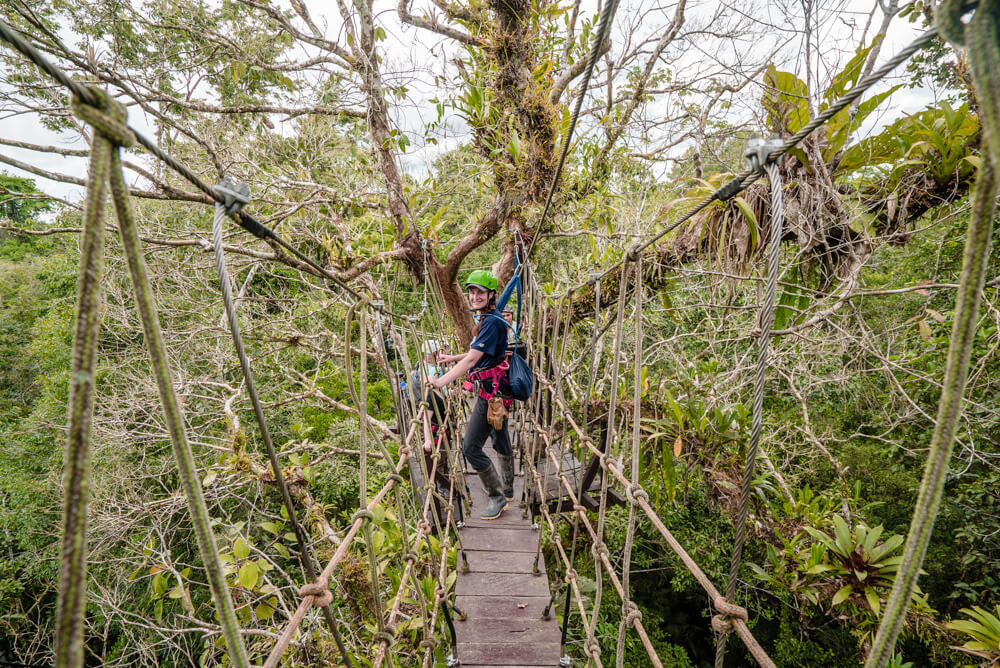
Take a 3 hour direct bus from Terminal Terrestre in Baños to Tena. Purchase your tickets directly at the bus station in Baños. The station is very small and easy to navigate. Growing up, I learned about the Amazon Rainforest as a mystical, unknown gem of the world. Something for dreamers. It is amazing just how accessible a visit can be!
I recommend making Tena your base because it is considered Ecuador’s gateway into the Amazon.
The Amazon is a HUGE part of the country’s ecosystem, covering nearly 50 percent of its land. There are several affordable day tours from Quito or Baños to the Amazon Rainforest. Most Amazon tours include water activities such as rafting or swimming in waterfalls! The tours are typically action-packed covering a full 12 hour day.
You can also visit the Amazon Rainforest in Peru , Colombia, Brazil, and more. The Amazon is on my list for my return trip to South America!
Tip : If you are tight on timing, you can also take a day trip into the Amazon Rainforest from Baños or Quito.
Stay : Rema Kayak Lodge in Tena provides good value for the money.
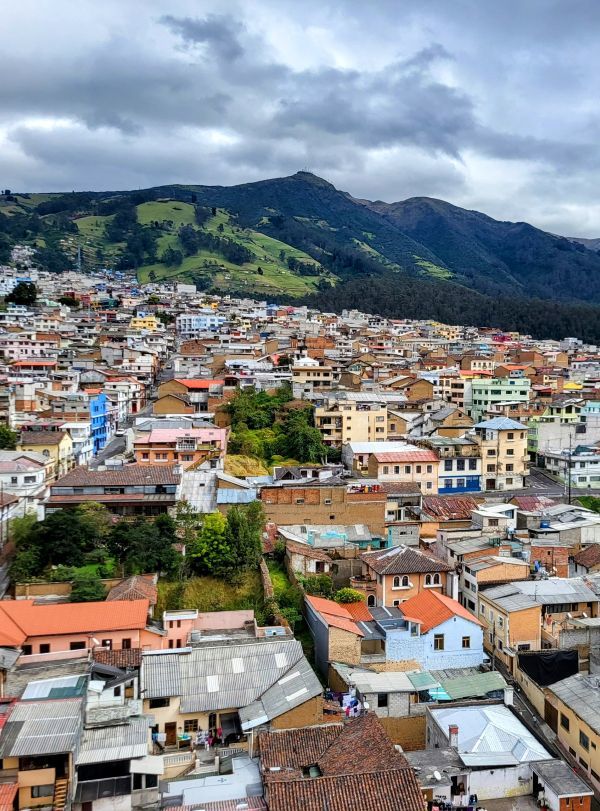
End your trip back in Quito, Ecuador’s capital. Most travelers make it a quick layover en route to the Galápagos Islands or other famous destinations, like Machu Picchu in Peru or Patagonia in Argentina . But Quito is so much more than that. I recommend spending no less than two days in Quito. If you have the extra time, I recommend allotting two additional days for day trips.
It was the city that surprised me most. I had received so many warnings from travelers and locals that I arrived a bit on edge. I very quickly got my bearings and fell in love with its authenticity.
READ NEXT: Is South America Safe for Solo Female Travelers?
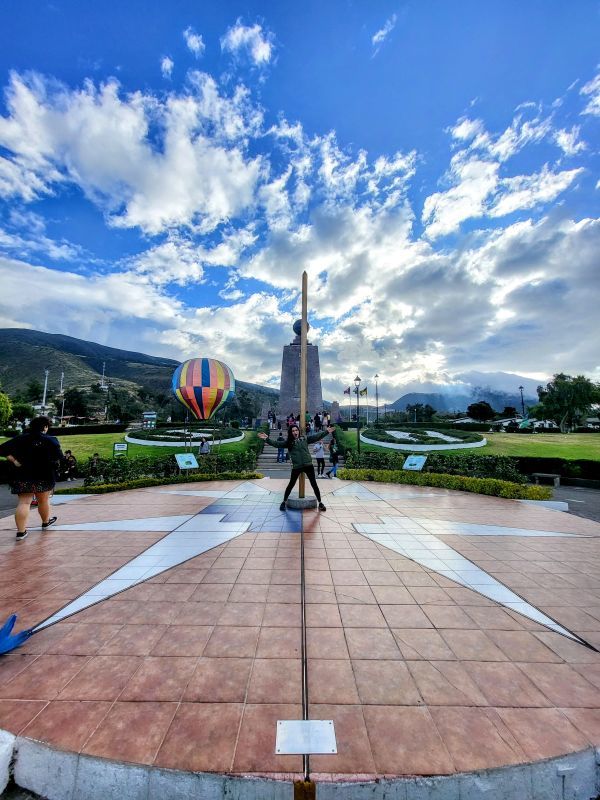
My favorite thing to do in Quito, while may be it cheesy, was taking a tour to the center of the world. Let’s circle back to our Ecuador history lesson. Ecuador is the Spanish word for “equator,” which runs directly through the country. Call me a science geek, but I loved completing science experiments on the equator line, like balancing an egg upright.
I am also still enthralled about standing in two hemispheres at once. And jumping across hemispheres — yup, I highly recommend capturing that photo!

Ecuador’s capital is also known for authentic handicraft markets featuring goods created by artisans in nearby indigenous villages . The most convenient one to visit is La Mariscal Artisan Market in the Mariscal neighborhood, a 10-minute drive from Quito’s historic center. La Mariscal has got it all: we’re talking brightly colored dresses, jackets, purses, dolls, jewelry, shoes — you name it, they got it. (Full disclosure: I shopped here every day. Oops!)
For a full day of shopping, venture on a day trip to Otavalo Market, the largest of its kind in South America.
The best views in Quito are from El Panecillo and El Telefónico (cable car). It is not safe to walk the city stairs to El Panecillo, so be sure to take a bus or Uber here.
Quito is also a great launching point for some of the best adventure day trips in the country, like Cotopaxi Volcano National Park, Quilotoa Volcano, and Mindo Cloud Forest.
Tip: My favorite Ecuadorian meal on my entire trip was at Miskay in La Mariscal, where they are able to make almost any menu item with plant-based protein (I’m looking at you, vegetarians!).
Stay: I suggest Casa San Marcos in Quito’s historic center.
Ecuador Safety Tips
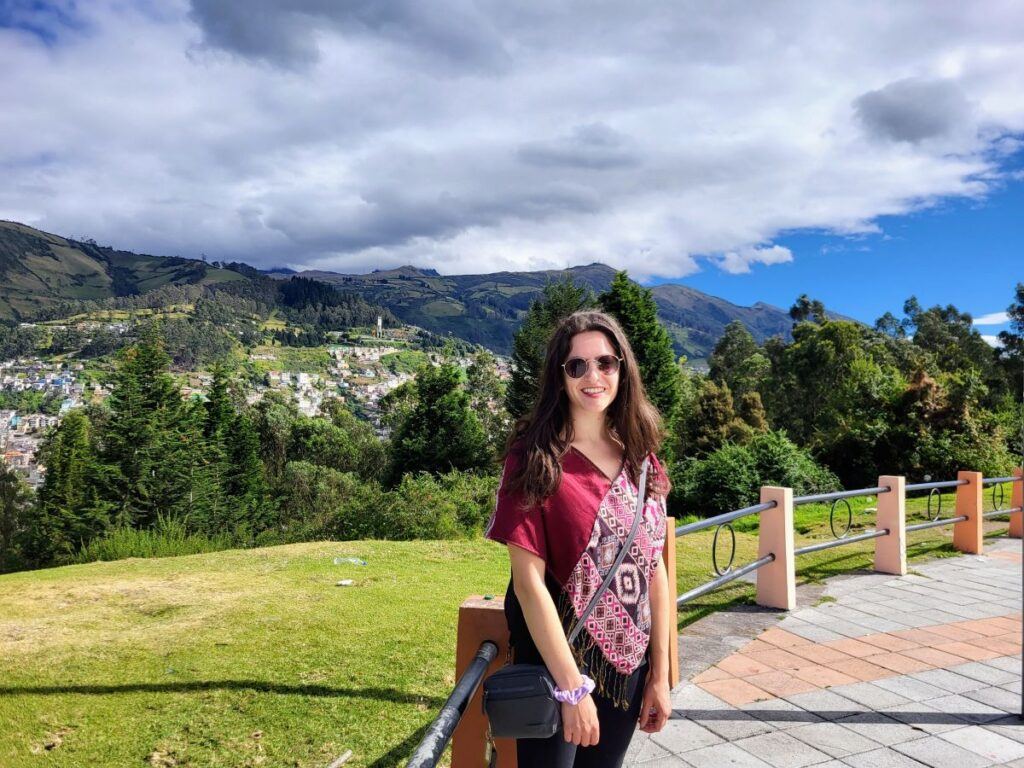
Ecuador isn’t famous for having the world’s safest reputation. If you follow news stories across media outlets, you have probably heard a lot about crime and violence. Safety should be taken very seriously on any trip, but this is simply not a reason to avoid traveling to Ecuador.
Quito is the only place in Ecuador where I was given several well-intentioned warnings by fellow travelers and locals. While it is not inherently dangerous, these warnings are not without reason. Quito has many impoverished neighborhoods. Lack of money historically relates to higher crime rates anywhere in the world, because people are trying to provide food for their families.
In any case, it is important to research prior to any solo trip in order to be aware of necessary general precautions in order to protect yourself.
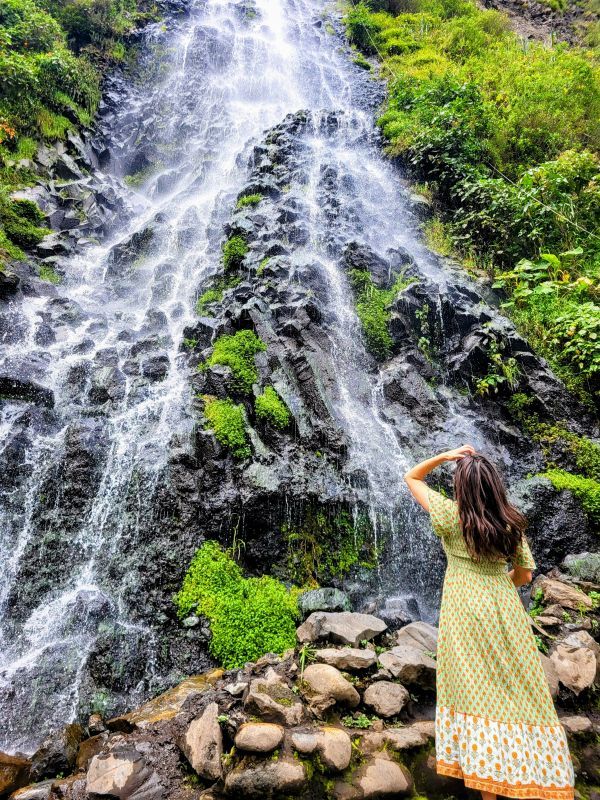
My top solo female safety tips for Ecuador are:
- Share your itinerary : It gives you peace of mind to know that someone knows where you are in case of an unexpected emergency. In fact, I recommend this tip to all solo female travelers no matter the destination.
- Stay indoors after dark in Quito : While it might be enticing to be out and about because the sun sets early, around 6:30pm, the top tip I received from locals and tourists was to stay indoors after dark, unless you are in a touristy area with several people.
- Do not explore isolated streets : Reported crime is more likely to happen in uncrowded areas, and where there are no other people. Of course you should still be careful in more crowded areas, as pickpocketing is common. Follow this tip day or night.
- Do not walk to El Panecillo : …or stay in a hostel near a set of city stairs. El Panecillo features one of the best viewpoints in Quito. However enticing climbing one of the many sets of stairs to the top may be, take a car or bus instead. There are several reported instances of violent crime and robbery against tourists and locals through the neighborhoods that line the stairs. (Once at the top, it is safe.)
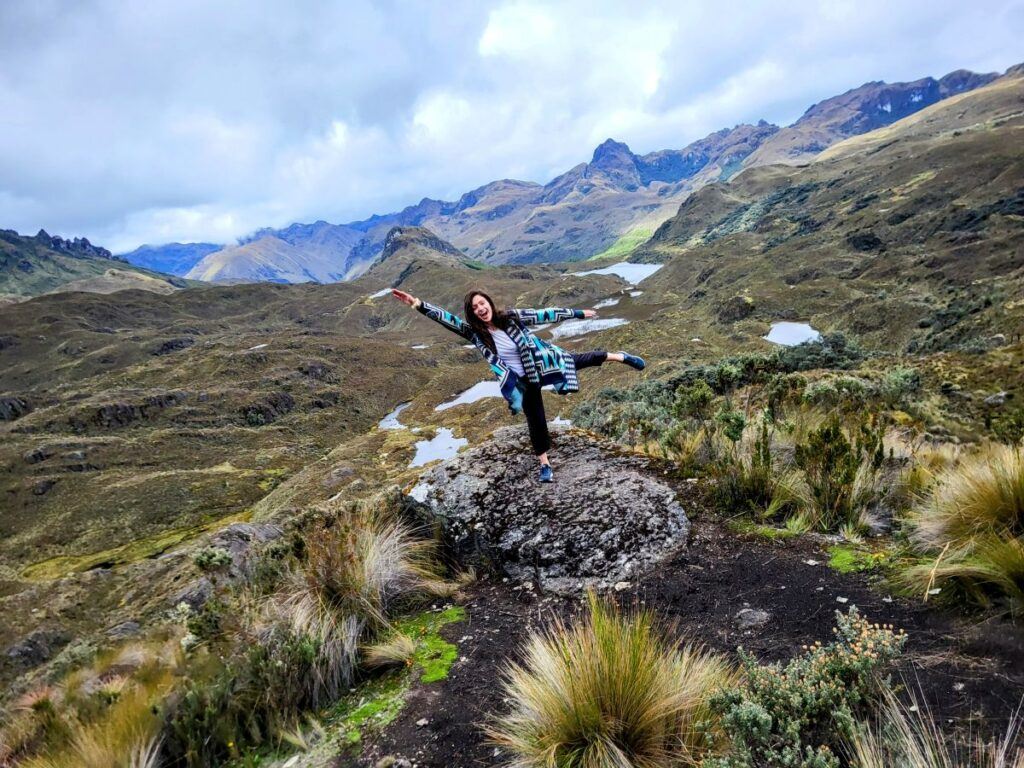
Ecuador is ultimately a safe destination for female travelers if you stick to the touristed route and follow general safety precautions. The most common crime is petty theft, like pickpocketing. Always follow your intuition and exit any situation that feels sketchy or unsafe.
I recommend visiting Ecuador alone after you feel comfortable with solo travel . Traveling solo as a woman for the first time can be scary . Much of this fear is instilled by well-intentioned loved ones and by alarming warnings from media sources.
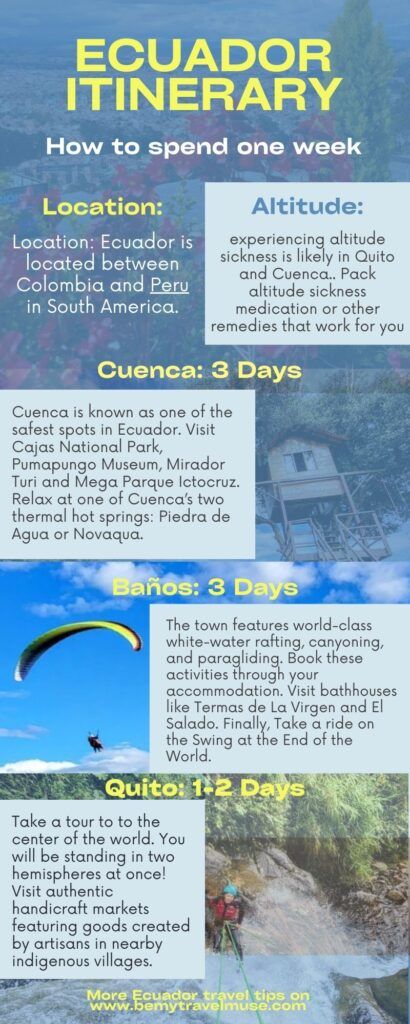
Ecuador should be considered more than a layover destination in South America. From its bustling cultural capital of Quito to its adventure capital of Baños, to its charming southern highland town of Cuenca, your itinerary is sure to be unforgettable.
About the author: Alyssa is a full-time teacher who travels the world on a budget. She is on a mission to teach fellow educators how to balance travel on a school schedule through maximizing holiday breaks and long weekends. She has traveled to 30 countries and documents her journeys on her blog, An Apple a Plane .
Leave a Reply Cancel reply
Your email address will not be published. Required fields are marked *
Save my name, email, and website in this browser for the next time I comment.
subscribe to our newsletter
This site uses Akismet to reduce spam. Learn how your comment data is processed .
Ecuador 2-Week Itinerary: The Ultimate Travel Guide
Post summary: The perfect itinerary for 2 weeks in Ecuador and a detailed travel guide with everything to know about traveling in Ecuador
This post contains affiliate links, which means that I will make a small commission of the purchase you make using my links – at absolutely no cost to you!
Are you ready for the trip of a lifetime? If so, 2 weeks in Ecuador is the perfect way to go.
If you are planning your trip to Ecuador, this is the guide for you.
Experience the best of Ecuador with this adventurous 2 week trip itinerary.
With extraordinary views, vibrant culture, and endless opportunities to explore nature, this South American country has something for every type of adventure.
From lush jungle and sprawling grasslands to rugged coastline and active volcanoes, there are endless ways to immerse yourself in everything that Ecuador has to offer.
Whether you are visiting for 2 weeks or 2 months, this guide will tell you everything you need to know so you can make the most of your trip through one of Latin America’s most diverse and captivating countries.
From where to hang out with the locals, to which natural wonders you definitely can’t miss, this ultimate guide to Ecuador is packed with essential tips and information to make your trip through this major Andean country something you’ll never forget.
Table of Contents
Posts to help you prepare for your trip
19 Important Things to Know About Ecuador Before You Go
How to Use Google Maps to Plan Your Next Road Trip (Step-By-Step Tutorial With Examples)
15 Useful Apps to Download Before Your Next Road Trip (for Free!)
What to Pack for a Day Hike: Essential Gear and Complete Packing List
Best Hiking Backpacks for Women: Find the Perfect Hiking Pack for Your Next Adventure
The Perfect 2-Week Ecuador Itinerary
Ecuador is one of the most diverse countries in the world. The Amazon Basin and the Pacific Ocean straddle either side of the Andes Mountains, creating varying altitude, extreme landscapes, and four different microclimates across Ecuador.
And because Ecuador is so small, you can see a ton in a short amount of time!
You don’t have to travel far to visit pristine beaches in the Galapagos, snow capped volcanoes in Cotopaxi, Emerald green lakes in Quilotoa, the rare cloud forests in Mindo, or the Amazon Jungle…all in a few weeks.
And let’s not forget the vibrant culture that permeates every inch of this wonderful country!
With those things in mind, I crafted this itinerary based on our own Ecuador road trip, the places that left us speechless, and the things we wish we did just a little bit differently. I included as much detail as possible in order to create THE Ecuador travel guide that I wish we had when we were planning our visit.
This is the best Ecuador itinerary if you want to see a little bit of everything – and then some! It’s also jam packed to make sure you have the most epic adventure possible.
Keep reading for an overview and detailed day-by-day outline on traveling in Ecuador.
The 2 Week Route Overview
This 2 Week Ecuador Itinerary starts and ends at Mariscal Sucre Quito International Airport (UOI) in Quito , the capital city of Ecuador.
From Quito, you will first go west to the Mindo Cloud Forest , before circling back up to Otavalo and then going south to Cotopaxi, Quilotoa and Banos .
This itinerary is best completed with a car. However, it’s not an issue if you don’t rent a car because Ecuador has a very good bus and shuttle system.
If you plan to take buses and shuttles, then I recommend calculating your departure and arrival times at each destination to ensure that you’ll have enough time. You willl have to adjust this itinerary accordingly.
Alternatively, each of these destinations is easily accessed via day trips and overnight trips from Quito. Just about any hotel can help you arrange that. So, it’s possible to use Quito as your home base if you wanted to avoid the public bus system altogether, if you’re a solo traveler who wants to travel with people, or if you’re just nervous about navigating Ecuador on your own. Doing it this way is easy if you don’t have a car, but you will lose a lot of time going back and forth to Quito.
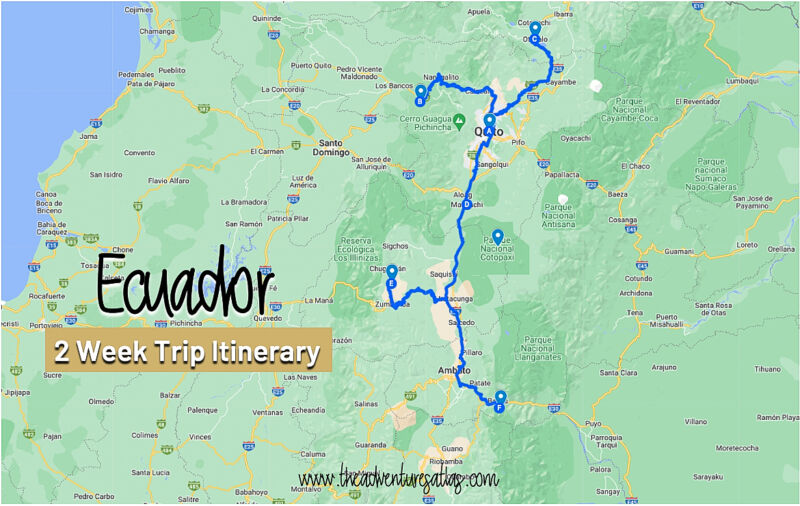
Access the interactive Google Map here
Day 1: Arrive in Quito
Day 2: Quito
Day 3: Quito to Mindo
Day 4: mindo, day 5: mindo to otavalo, day 6-7: otavalo, day 8: otavalo to cotopaxi.
Day 9: Cotopaxi
Day 10: Cotopaxi to Lake Quilotoa to Baños
Day 11-13: Baños
Day 14: Baños to Quito
Estimated total drive time: 17 hours
Estimated total miles for this route: 569 miles (915 km)
Have extra time? Scroll down to find out how you can extend your trip in Ecuador!
Read next: How to Plan Your Road Trip Using Google Maps
Day 1: Arrive in Quito, Ecuador
This 2-week Ecuador itinerary starts in Quito , the capital city of Ecuador.
Situated high in the Andes, in the Guayllabamba river basin, Quito is the first city in the world to be crowned a UNESCO World Heritage Site.
In the 16th century, the city was rebuilt by the Spanish atop the ruins of an ancient Incan city that ruled the northern half to the Incan Empire. Today, Quito is a vibrant city full of rich culture , well-preserved historical landmarks, and one of the best-preserved historic centers in all of South America.
Peppered throughout the city, you’ll find over two dozen historic churches, a huge variety of museums, fascinating tourist attractions, and an emerging food scene.
On day 1, fly into Mariscal Sucre Quito International Airport (UOI), which is about 45 minutes outside of the city center. Unfortunately, you probably won’t have much time to explore on the first day since most of the flights into UOI arrive at night. So just grab a ride to your hotel and wind down from your long day of travel.
Don’t forget to walk slowly once you get off the plane. Quito is the second highest capital city in the world. It sits high in the Andes Mountains, at an elevation of 9, 350 feet (2850 meters). This high altitude might cause you to feel symptoms of altitude sickness, such as short breath, nausea, or headaches. Remember to drink a lot of water and get a good nights sleep!
You’ll spend the next 1.5 days taking it easy in Quito to allow your body time to adjust to the altitude.

Where to stay in Quito
The city of Quito is split into two halves: South Quito and North Quito .
In the middle of the city is Centro histórico de Quito, or the “Old Town/Historic District” , which is where you’ll find a lot of the old historic buildings and elaborate architecture that dates back to the 1500s.
Most travelers stay at the north end of Quito, also known as the “New Town”, and in Centro Histórico (the Historic District) in the middle of the city.
Stay in Centro Histórico to be near the old churches, Plaza Grande, elaborate architecture, and all of the historic points of interest.
Stay in the New Town (North Quito) to be near all of the lively restaurants, bars, and hostels. The best neighborhoods in the New Town are:
- La Mariscal
- La Floresta
- La Carolina
Avoid south Quito altogether.
There’s no shortage of hotels and hostels in Quito. But something I really loved about this city is the myriad of small family run boutique hotels run by friendly owners who are more than happy to help with your travel planning.
View all stays in Quito here.

- Budget: The Secret Garden Quito , Selina Quito Hostel
- Moderate: Friends Hotel , Terra Premium Boutique Hotel
- Splurge: Hotel La Basílica Quito , Hotel Casa Gangotena
I personally recommend Friends Hotel , which is located down a safe little side street in the Historic District. They charged us $30 to pick us up at the airport in the middle of the night and drive us to the hotel. And fresh breakfast was included in the stay.
Day 2: Quito, Ecuador
Welcome to your first full day in Ecuador! You will wake up in Quito, which is the perfect place to begin your adventure.
Wake up early, grab a hearty breakfast and head straight for Centro histórico de Quito, which essentially looks just like it did at the end of the colonial period, which dates back to the 1500s.
Here are some of the best places to see in historic Quito:
- Plaza Grande
- La Campana church
- The top of the Neo-Gothic Tower inside Basilica del Voto Nacional
For great views over the whole city take the Teleferico cable car to the Cruz Loma lookout or head to the top of Panecillo hill , where you’ll also find the massive La Virgen de Quito statue , which was constructed entirely from aluminum by Spanish artist, Agustin de la Herran Matorras.
Although some travel guides might tell you to walk up the steps of El Pancillo, it’s actually not safe to do so – the steps are a hot spot for pickpockets and muggings. So, even if you’re within walking distance, you should always err on the side of caution and take a taxi or an Uber to the top of Panceillo Hill.
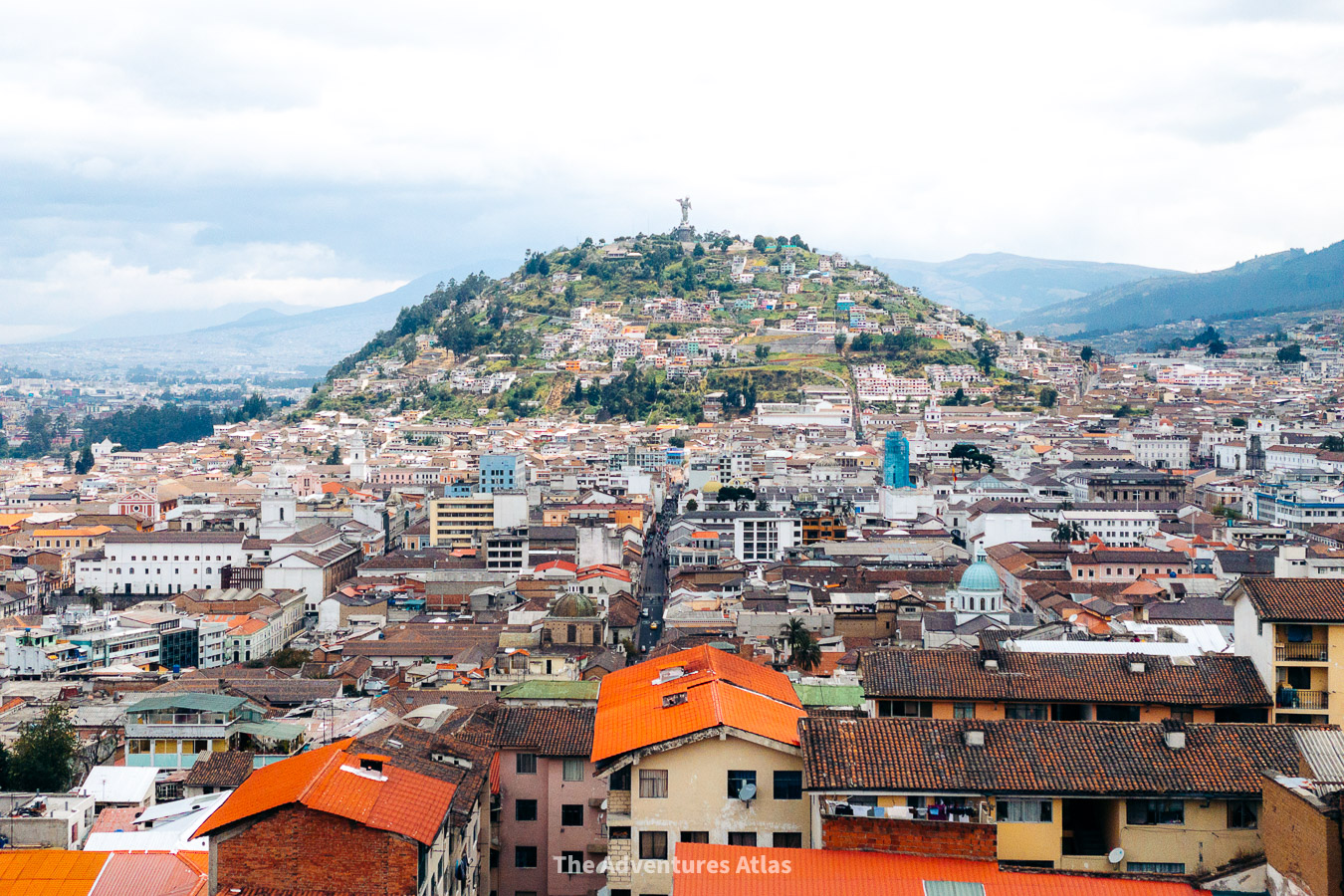
Other major attractions in Quito are the Intiñan Solar Museum and the Mitad del Mindo monument, or “center of the world”, which are supposed to be located on the Equator. However, I honestly wouldn’t waste your time going because your GPS will show you that neither one of them is even on the equator. They’re actually almost 800 feet off.
In the evening try some local food – llapingachos and empanadas are a must!
Getting around Quito
Depending where your hotel is, you can either walk, uber or hail a taxi with an orange license plate to get around.
Uber is a safe and reliable way to get around Quito. It was our preferred method of transport because it was convenient, very cheap, and we didn’t have to worry about haggling a taxi fare with our less-than-satisfactory levels of Spanish.
If you walk anywhere around Quito, always leave your valuables locked up in your hotel room.
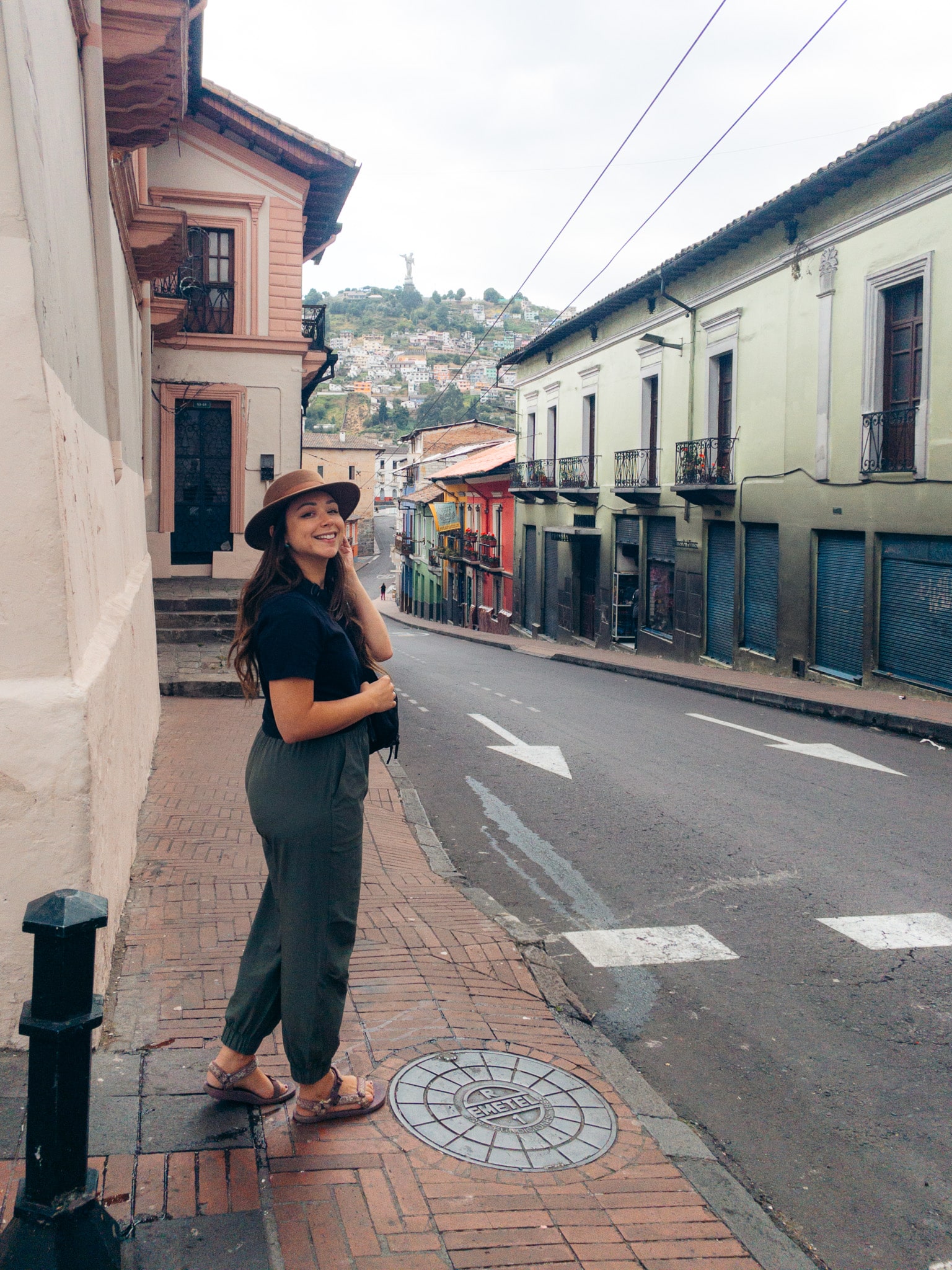
Now that you’ve had a few days to acclimate to high altitude, you will pick up your rental car and head to the enchanting cloud forest in Mindo.
Even though it’s only 2 hours west of Quito, Mindo is still relatively undiscovered by the masses. However, it is becoming more and more popular with locals – especially on weekends and around the holidays. On weekdays though, the tiny town remains quiet and tranquil.
The route to Mindo passes through the arid landscape of northwest Quito before snaking along mountain roads with sheer drop offs on one side and towering, forested mountains on the other. The transition is abrupt and absolutely stunning.
On the way to Mindo, stop at San Tadeo Birding , which is a small garden and hummingbird reserve perched in the mountains. You’ll pass it on your way to Mindo Valley on Route E28 ( here’s the exact location ).
San Tadeo is home to many species of hummingbirds endemic to Ecuador, as well as several species of toucans and tanagers. It’s the perfect place to see tons of birds for hardly any effort. It’s run by a nice, local woman who charges $5 (cash) per person to access the reserve.

When you arrive in Mindo, grab food at El Quetzal before checking into your hotel. Don’t forget to take a brownie for the road! They have the best brownies in the world – which I felt was a large claim…until I tasted one. And WOW – were they right.
The town is small, yet vibrant. And you can walk pretty much anywhere in about 10 minutes. However, you’ll need a car or take a taxi to get to the waterfalls and hiking trails, which are all in the mountains outside of town.
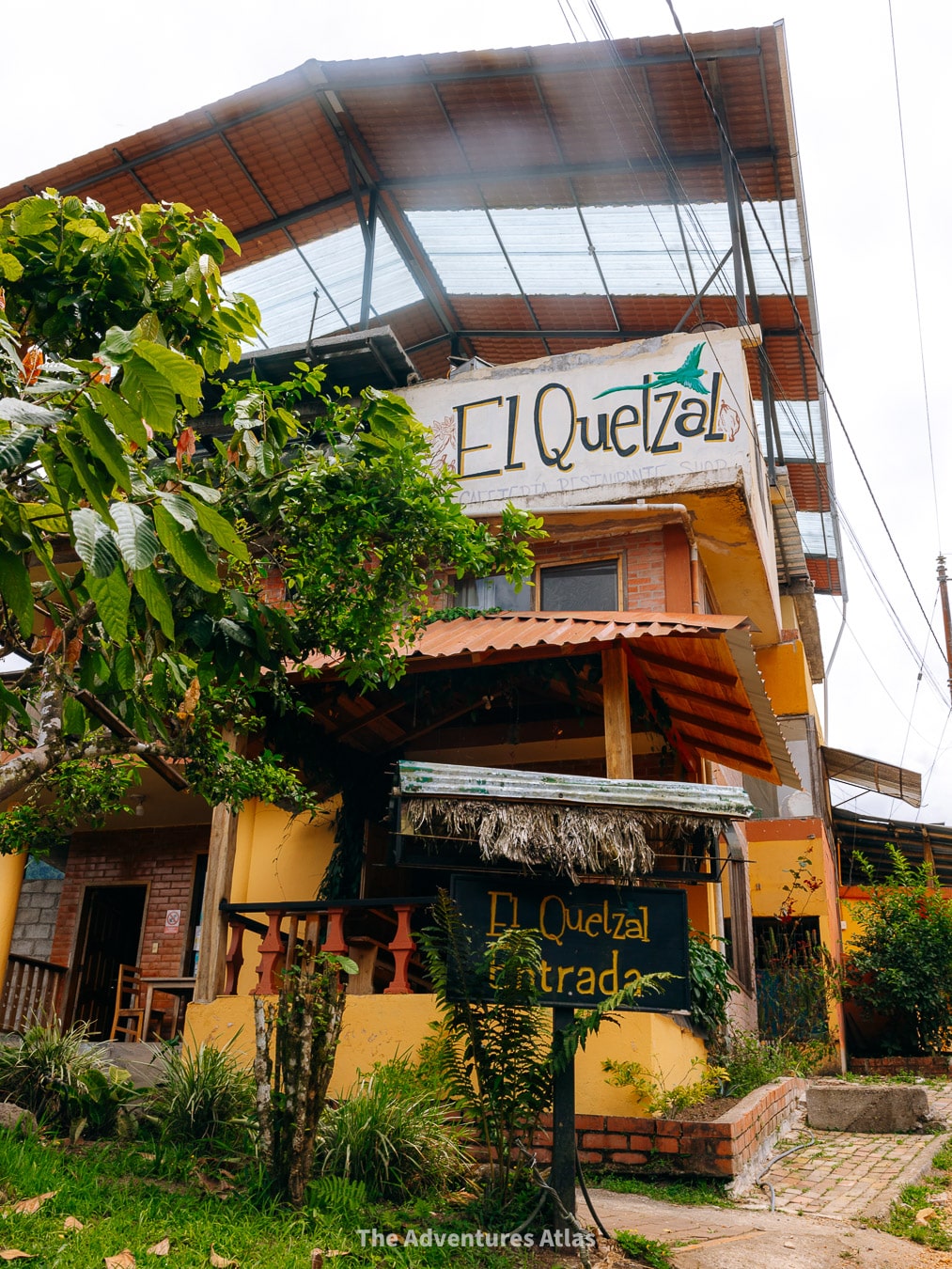
How to get from Quito to Mindo
Without stops, driving yourself from Quito to Mindo takes approximately 2 hours .
You don’t need a 4×4 to get to Mindo, but you might need a 4×4 to reach some of the trailheads if it’s particularly rainy. If you don’t have a 4×4, you can just take a taxi truck for a few dollars from the center of town.
You also might need a 4×4 if you’re staying at one of the remote Airbnbs outside of town. If you’re staying at one of these, check with your Airbnb host ahead of time. They will tell you what type of transportation you need or help you arrange a ride if necessary.
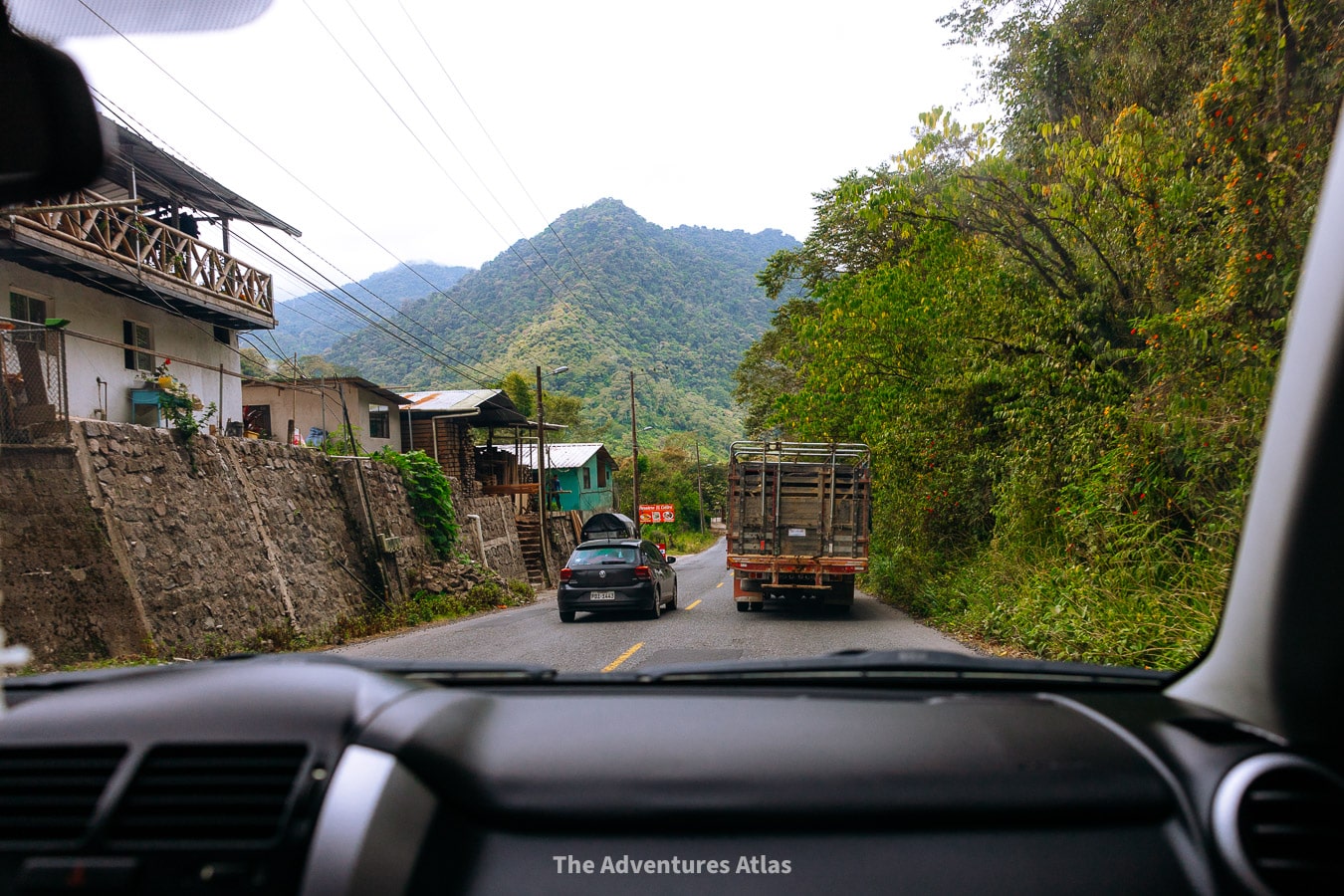
Bus or shuttle
To get to Mindo by bus, you need to go to Terminal La Ofelia at the north end of Quito.
There is only one bus company that goes to Mindo, which is called Flor de Valle . The trip takes about 2 hours and a one-way ticket costs $4. You can pay for it at the booth before you get on the bus. The bus departs from Quito several times a day. Once you get to Mindo, it’s a quick 5-10 minute walk to most of the hotels/hostels in town.
Like most public buses in Ecuador, the bus between Quito and Mindo is notorious for thefts. Always keep your backpack zipped up and on your lap and keep your phone and wallet zipped up where pickpockets can’t get them.
Note: if you take the bus, you won’t be able to stop at San Tadeo Birding. Instead, you can visit Nathaly Butterfly Garden , which is walking distance from Mindo. There aren’t as many hummingbirds as at San Tadeo, but you can still watch an impressive amount of hummingbirds whizz by while you relax in the hammocks.
Where to stay in Mindo
Given how small the town is, there is a surprising number of hostels and small hotels to choose from in Mindo.
The majority of hotels and hostels are located within a 5-10 minute walk of the town center. I personally recommend The Cinnamon House , which is tucked away down a quiet street, but still easily within walking distance to the center of town.
If you prefer an Airbnb, you can rent one of the more remote cabins farther from town.
View all stays in Mindo here.

- Budget: Cinnamon House , La Casa de Cecilia
- Moderate: El Descanso , Mindo Green House , CasKaffeSu Hotel
- Splurge: Hosteria Saguamby , Casa Divina Eco Lodge
If you prefer a more remote experience, book one of the unique Airbnbs in the mountains around the town.
This tranquil cabin is about 40 minutes from town, so it’s not ideal if you like to be near the action or have easy access to the town center. But it’s the perfect place to disconnect and completely unwind in the middle of Ecuador’s most beautiful landscape. We stayed for 2 nights and it was the highlight of our trip!

Tranquil cabin in Mindo, Ecuador. Click here to book on Airbnb.
Mindo is – hands down – one of Ecuador’s most beautiful hidden gems (for now). Hidden among the clouds, Mindo is the perfect place for bird watching, adventure, and a bit of an adrenaline rush.
Similar to Monteverde in Costa Rica , Mindo is best known for it’s rare cloud forest , which is among the most unique and biodiverse ecosystems in the world. Cloud forests form at high altitudes and are shrouded in a constant layer of mist and low-hanging clouds. These rare forests make up less than 1% of all forests on Earth, yet they support 2.5% of the entire world’s biodiversity!
The best way to experience the Mindo cloud forest is by taking the Tarabita cable car across the Rio Nambillo to the Ruta de las Cascada (Route of the Waterfalls) in the Nambillo Ecological Reserve. The car operates between 8:30am-4pm and costs $5/person for the return trip. Cash only.
Start your hike early to give yourself time to explore and to beat the bad weather that notoriously rolls in during the afternoon.

The Ruta de las Cascadas is an easy-moderate hike that passes by 7 waterfalls , some of which crash into crystal clear pools that are perfect for swimming. The trail is split in two, so you can pick one or both trails to complete. Step off the cable car and turn left to visit the 6 waterfalls along the Cascada Nambillo Route, or go right to reach Cascada Reina.
Either way, budget a few hours to complete your hike – or more if you want to swim (which you should!). And don’t forget to wear proper hiking boots !
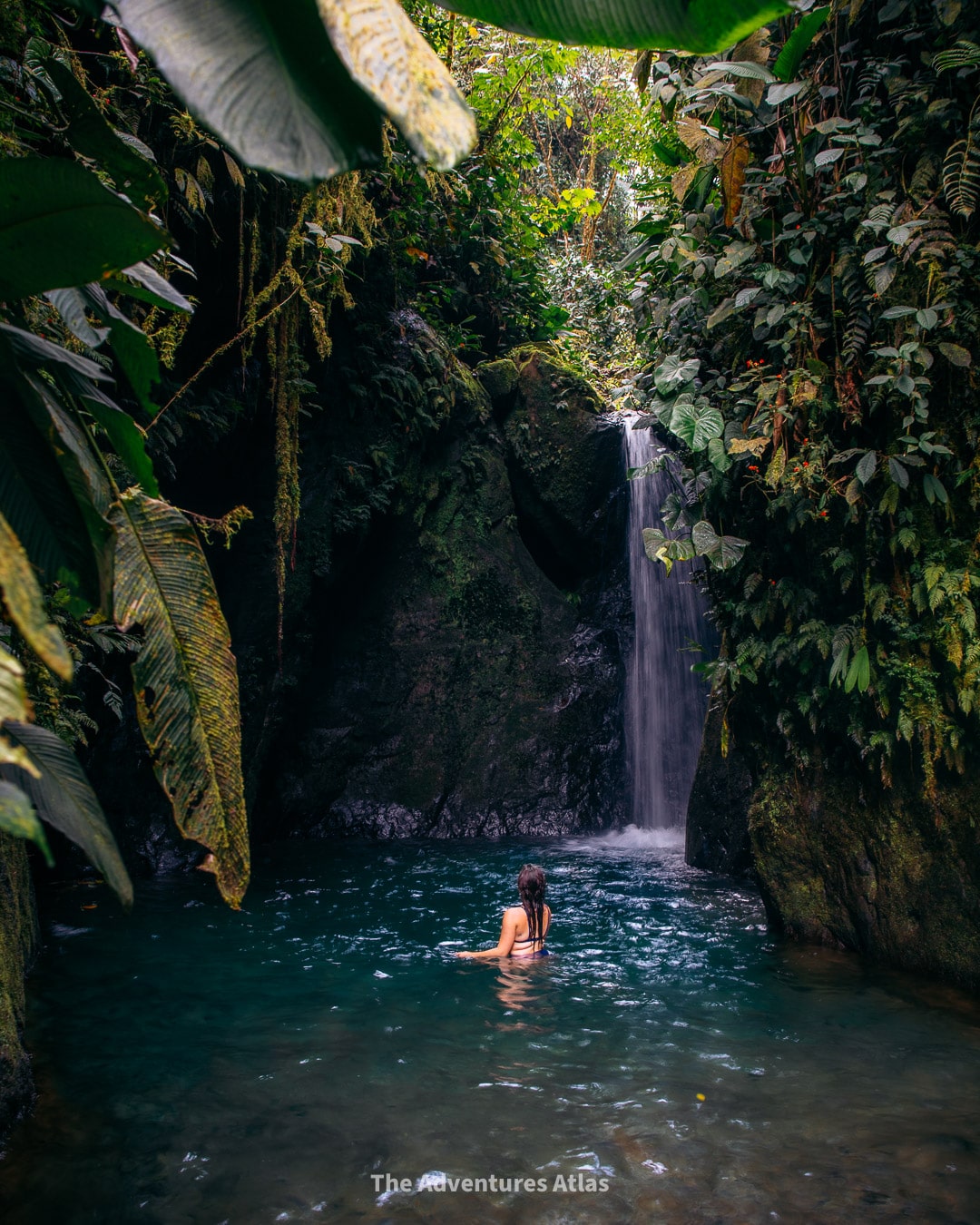
After you explore the cloud forest, head to Hosteria Mariposas de Mindo , a butterfly sanctuary located just outside of town. Here, you can learn about the lifecycle of the butterflies and the sanctuaries conservation efforts, before entering the butterfly garden, which is home to an astonishing number of butterflies. The entrance fee is $8.50 per person (cash or credit card).
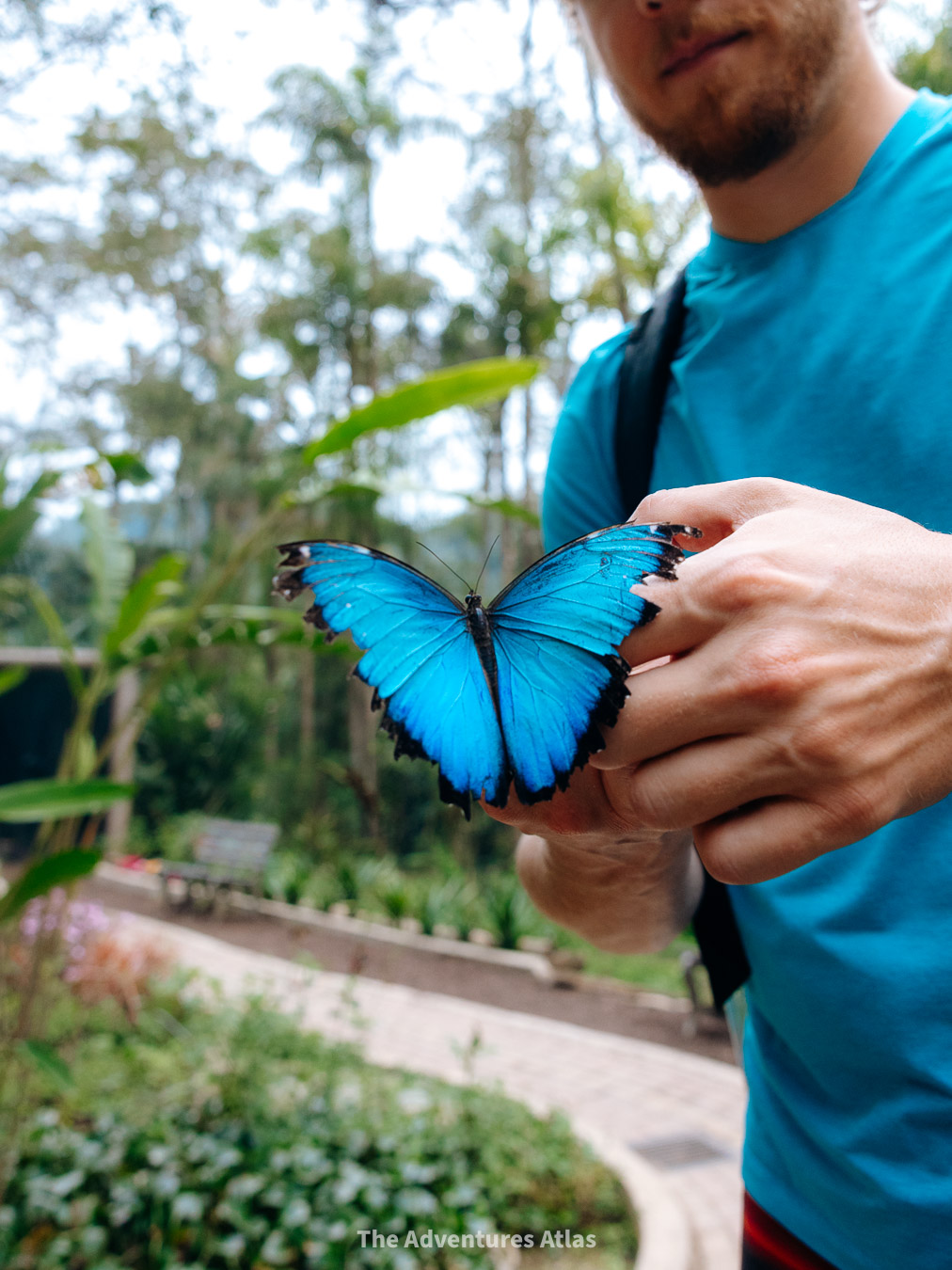
It’s officially day 5 of your two weeks in Ecuador! If you haven’t had your fill of Mindo, this morning would be a great time to wake up extra early to catch one last birding tour before heading off to your next stop.
Your next destination is the indigenous mountain town of Otavalo in the Imbabura Province of Northern Ecuador. The town is surrounded by volcanoes and is mostly known for its vibrant market, where you can find locally made arts and crafts (more on that below).
By the time you arrive in Otavalo, you’ll probably just want to check into your hotel and unwind. But if you have time to spare, Lago San Pablo is a great place to go for incredible views of the Imbabura Volcano.
You can find the best views from the dock just outside Puerto Lago Restaurant. Word has it that the food is pretty good, but even if you don’t eat there it might be worth going just for the view (as long as its not cloudy).
If you’re hungry, there are plenty of great places to eat in Otavalo. Maytushka has some really unique dishes inspired by Amazonas cuisine , or Restaurant La Palma is a great place for a cheap home-cooked Ecuadorian meal.
How to get from Mindo to Otavalo
Otavalo is located approximately 166km from Mindo and 110km north of Quito.
The journey from Mindo to Otavalo is fairly easy and takes about 3 hours by car. The scenery along the way is stunning, so make sure to take your time and enjoy the ride!
Take the bus from Mindo to Quito. The ride takes about 2 hours and costs $3.10. This bus arrives at La Ofelia Terminal in Quito. From there, take a taxi or an Uber to Terminal Carcelén, where you can take the Cooperativa Otavalo or the Cooperativa Los Lagos to Otavalo for $2.50. There are many buses departing for Otavalo throughout the day.
Once you get to Otavalo, you can take a taxi pretty much anywhere within the city for $1-2.
Where to stay in Otavalo
There are budget-friendly airbnbs and hostels around Otavalo, but the best way to experience Otavalo is to stay in one of the historic haciendas! These colonial farming estates have been converted into secluded boutique hotels with beautiful rooms, home-cooked meals, and tranquil surroundings.
While haciendas are not cheapest places too stay in Otavalo, they’re definitely worth splurging on if you can.
View all stays in Otavalo here.

- Budget: Hostal Curiñan , The Traveler Hostel
- Moderate: La Palmeras Inn , Acoma Hotel
- Splurge: Hotel Otavalo , Hacienda Pinsaqui , Hacienda Cusín
Otavalo is a charming, historically indigenous community surrounded by volcanoes. The town is mostly known for being the best place in Ecuador to buy fine wool textiles , but there are also waterfalls, volcanic lakes, and museums to explore.
The first thing you have to do in Otavalo is visit the famous Otavalo Artisan Market. It’s the largest outdoor market in South America and dates all the way back to pre-Inca times.
The Otavalo Artisan Market is held in the central Plaza de Ponchos. It’s held every day from 7am – 6pm, but you should visit on Saturday or Wednesday for the largest selection of goods. Those are the biggest market days, when hundreds of craftsmen come out to sell their textiles, handicrafts, baked goods, and pottery.
When you’ve had your fill of shopping, choose from these best things to do in Otavalo:
- Wander the cobbled streets and admire the architecture around Simon Bolivar Park
- Take a short hike through a eucalyptus forest to visit the Peguche Waterfalls
- Visit Lake Cuicocha
- Hike at Mojanda Lakes
- Go shopping in Cotocachi – Ecuador’s leather capital
- Learn about the local Indigenous culture at the Otavalango Living Museum and Instituto Otavaleño de Antropología.
And don’t miss a visit to Parque Condor , which is a bird sanctuary that rescues birds of prey from abusive situations and illegal owners. You can see free flight demonstrations at 11:30am and 3:30pm every day Wednesday – Sunday (in Spanish).
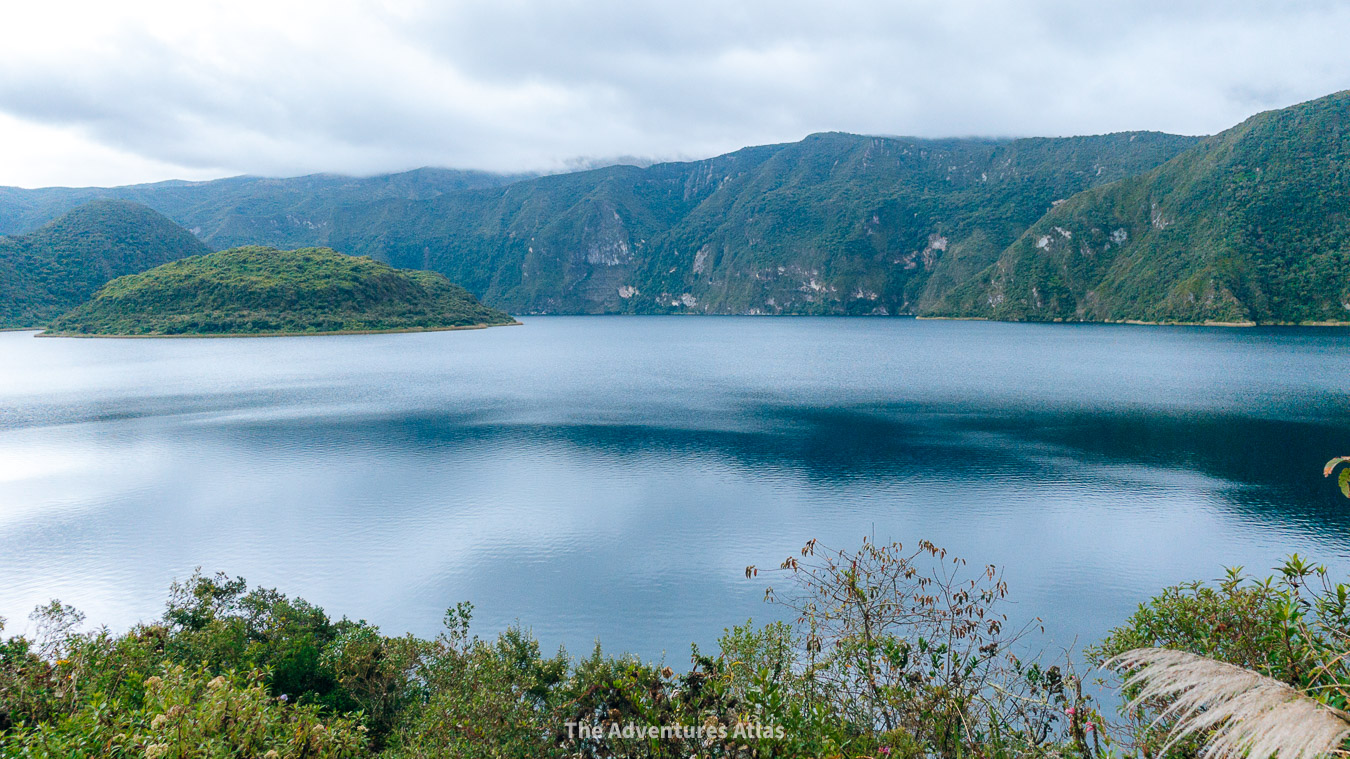
Tips for shopping at the Otavalo Market
- The most important tip for shopping at the Otavalo Market (and pretty much any market in Ecuador) is to be prepared to haggle for everything. This is because the first price the vendors tell you is almost never the final price. The prices are usually inflated from anywhere between 15-50% because of something jokingly called “the gringo tax”. .
- Many vendors at the market sell identical goods, so shop around to find the best deals. .
- The Otavalo market is arranged by “seniority”, with the families who have been selling at the market for decades closer to the middle of the market. Head straight for those middle stalls, where you’ll find the most authentic and unique goods. .
- Don’t believe everyone who tells you that sweaters and blankets are made from alpaca. It’s something they tell you to sell goods at a higher cost. The truth is, alpaca is not as common (or nearly as cheap) in Ecuador as it is in Peru. Most goods in Ecuador are made from a wool or synthetic blend. So if someone is trying to sell you an “alpaca” blanket for $25, you can safely assume that is not alpaca – at least not entirely.
READ NEXT: 19 Important Things to Know About Ecuador Before You Go
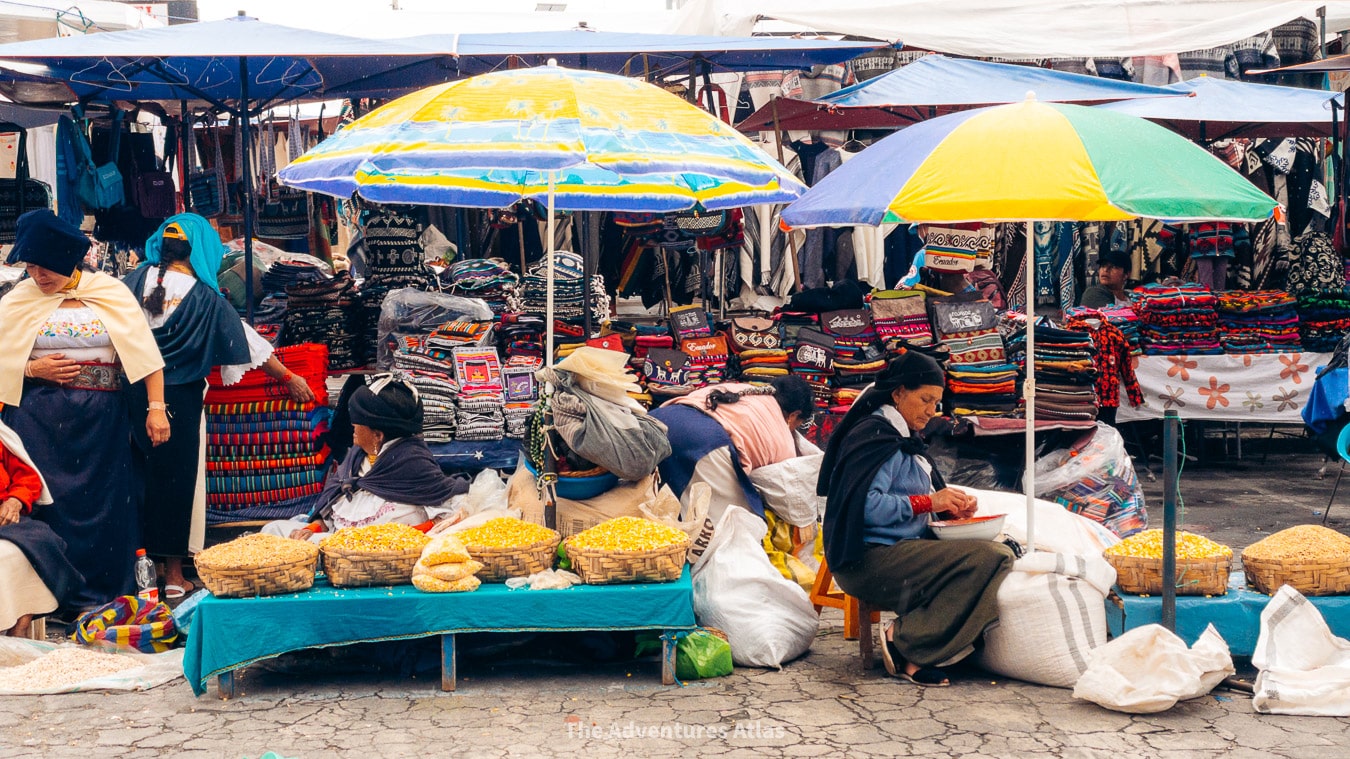
Where to find the best alpaca textiles near Otavalo
For genuine handmade alpaca goods, go to Aresania El Gran Condor in Peguche, which is only about 10 minutes outside of Otavalo. This small artisan craft shop is run by a family who has been hand making alpaca and wool goods for decades. The store is packed to the brim with all kinds of textiles.
They also offer free demonstrations on the traditional process of dying and weaving different types of wool (in Spanish). They even show you how to tell the difference alpaca, baby alpaca, wool, and synthetic wool – knowledge that really comes in handy when you’re shopping in the markets!

Today you’re trading the volcanoes of Otavalo for the volcanoes of Cotopaxi National Park.
On this drive, you’ll enter what is aptly named the Avenue of the Volcanoes. This route starts just south of Quito and runs down the spine of the Andes, all the way to the city of Cuenca.
On the way, you’ll see some giant volcanoes in the distance, including Ilinizas, Corazón, Rumiñahui, and Cotopaxi. If you get an early start before the clouds roll in – and the weather Gods are on your side – you can actually see Cotopaxi all the way from Quito.
This drive is also where you begin to enter the heart of Indigenous Ecuador , which is best known it’s rich traditional culture, colorful weekly markets, small artisan villages, and breathtaking views.
If you have time to spare, you can visit Cascada Condor-Machay, which is a waterfall in the nearby town of Rumipamba. The hike is just over 4 miles round trip, so you should allocate several hours to complete it. We personally didn’t have time to check it out, but if you have the time, it looks to be well worth a visit!
Directions to get there aren’t entirely clear, so I recommend reading this blog post before you go for updated directions.
Stop in Latacunga on your way to Cotopaxi to try some traditional chugchucaras at Restaurante La Mamma Negra.
How to get from Otavalo to Cotopaxi
Cotopaxi is 189 km south of Otavalo, located between the towns of Machachi and Latacunga on the Panamerican Highway.
There are two main entrances to Cotopaxi National Park:
- The South Entrance ( El Chasqui ) near the town of Lasso
- The North Entrance ( El Pedregal ) near Machachi
While a little farther from Quito, the south entrance is the most popular because it’s easy to access and the roads are in good shape.
The north entrance is less used because you have to drive through Machachi on rough, cobblestone roads. This is the entrance you need to use if you are staying anywhere near Machachi, including Hacienda El Porvenir, Chilcabamba, or Tambopaxi.
To drive to the South Entrance, follow the Pan American Highway past Machachi until you see the signs for the southern entrance to Cotopaxi National Park. You’ll see the sign just before you reach the village of Lasso. If you reach Lasso, you’ve gone too far.
To enter through the North Entrance, take the exit for Machachi and follow signs for El Pedregal and Cotopaxi National Park. The roads here are mostly cobblestone and sometimes dirt. It’s not a comfortable drive if you have a small car, so you definitely want a 4×4 or at least a high clearance 4×2.
Unfortunately, there is no public bus service that goes directly into Cotopaxi National Park.
- To get to the south entrance, take the bus to Latacunga from terminal Terrestre de Otavalo, which is Otavalo’s main bus terminal. Ask the bus driver to drop you off at the El Chasqui entrance of Cotopaxi National Park (the main entrance). . Buses leave 4 times a day every day and the earliest bus departs around 8AM. The journey takes about 3 hours and costs roughly $10-13. From there, you can catch a ride or try to get a taxi to take you to where you need to go inside the park. Make sure to tell them exactly where you want to go. Otherwise they’ll just drop you off at the park gate, which is several miles from any of the attractions. .
- To get to the north end of Cotopaxi National Park, take the bus from Otavalo to Quito’s main terminal. And then take the Carlos Brito bus into Machachi. Here, your best bet is to hire a taxi-truck in Machachi to give you a lift to your lodge. Expect to pay about $20-30 for the ride.
Overall, I don’t recommend using public transport to get around Cotopaxi National Park because everything is so spread out. It’s way easier to just go straight to your lodge and book a day tour from there.
I included more details on getting to Cotopaxi and recommendations for the the best day tours in this Complete Guide to Cotopaxi National Park .
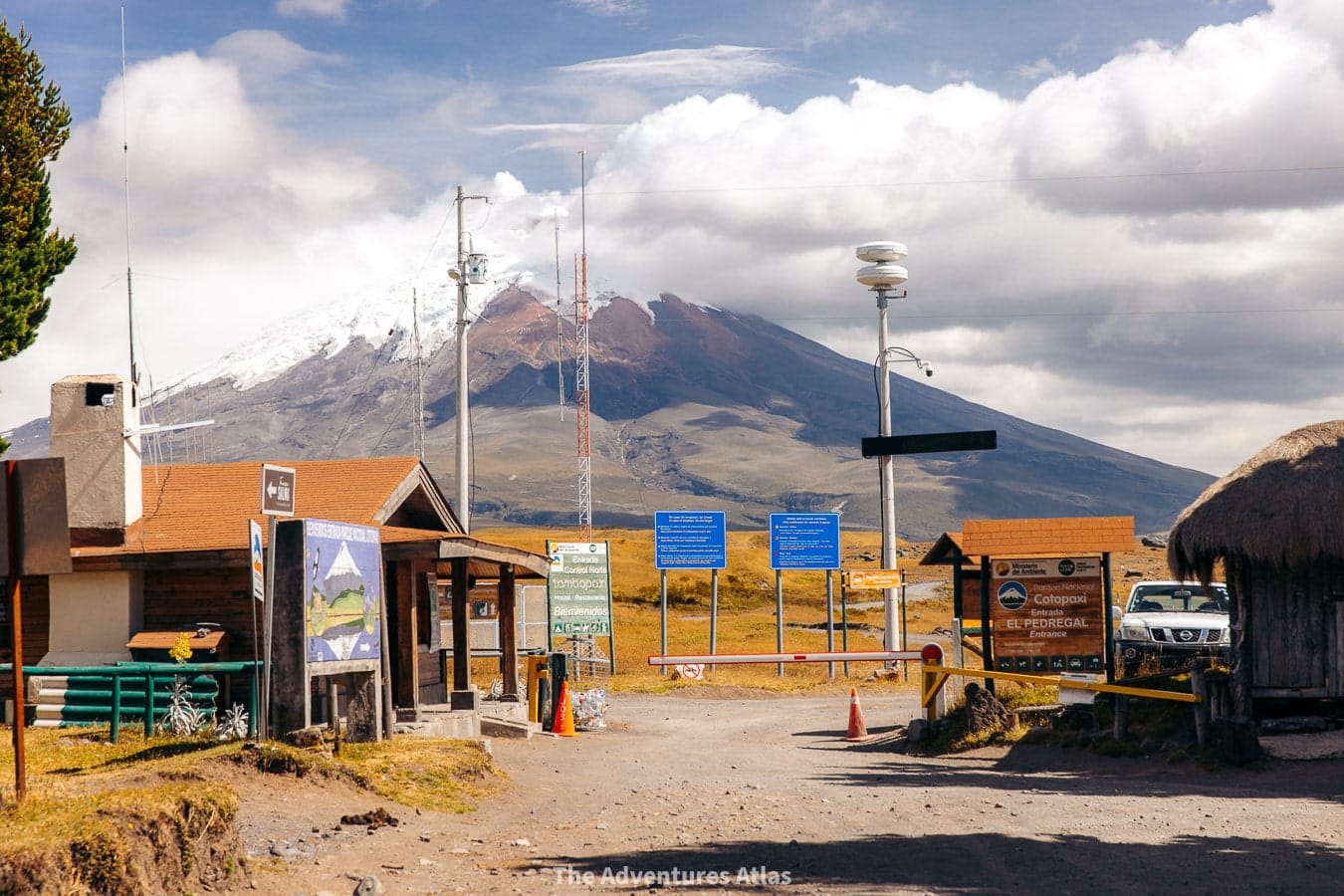
Where to stay near Cotopaxi
There are a lot of places to stay near Cotopaxi, no matter what your budget is. You can choose from luxurious haciendas, hostels, farmstays, and glamping either inside the National Park boundaries or in one of the surrounding towns, such as Lasso and Latacunga (near the south entrance) or Machachi (near the north entrance).
Lodging inside the national park is most expensive and gets cheaper as you move into the neighboring towns. The most popular lodges near the park are:
- Chilcabamba Lodge
- Hacienda Los Mortiños
- Hacienda El Porvenir
They all have unbeatable views of Cotopaxi volcano and – in my opinion – are well worth splurging on if it’s in your budget.
View all stays near Cotopaxi here.

- Budget: Mateospaxi , Randador Hostel , Hostel Rosita
- Moderate: Hosteria Papagayo , Hotel Cuello de Luna
- Splurge: Chilcabamba Lodge , Hacienda El Porvenir , Hacienda Santa Ana
Because they’re so remote, most of the lodges in and around Cotopaxi offer some sort of meal service or on-site restaurant. They also offer pretty much the same tours for hiking, horseback riding, and biking in the national park. Book a tour by emailing them in advance or once you get there by just asking the front desk.
Day 9 of 2 weeks in Ecuador: Cotopaxi National Park
With a nearly symmetrical cone shape rising high over the páramo grasslands and a permanent cap of snow, Cotopaxi is THE most iconic peak in all of Ecuador.
Standing at 5897m, Cotopaxi is Ecuador’s second tallest peak, just after Chimborazo volcano. It’s also home to one of the few “tropical” glaciers on the planet, and happens to be one of the highest places on planet Earth, thanks to a bulge in Earth’s equator.
The best time to see Cotopaxi is in the morning. So wake up early, cross your fingers for good weather, and make a beeline for Cotopaxi National Park. The park is open from 8AM – 3PM every day and entrance to the park is free.
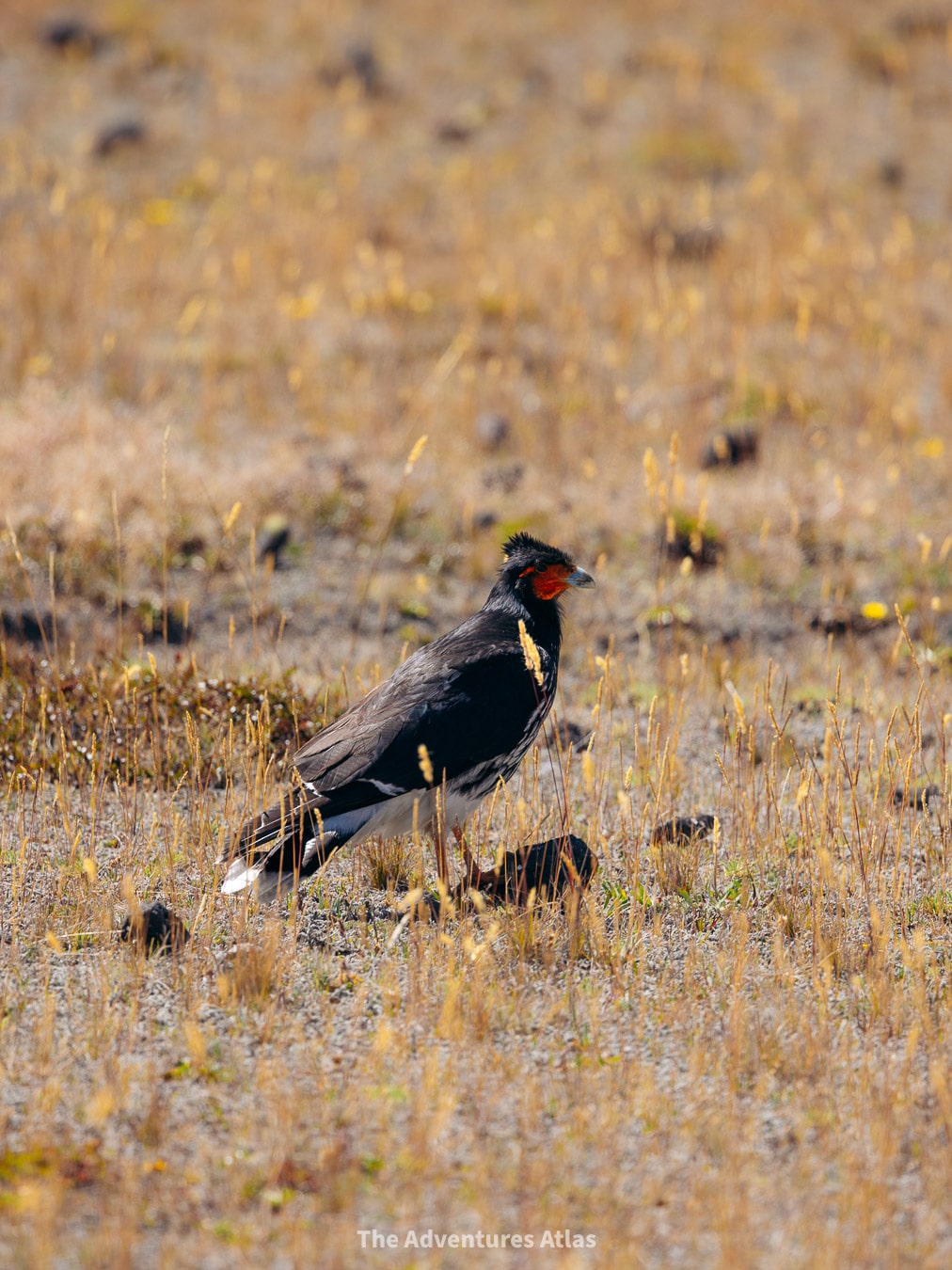
One of the main attractions in Cotopaxi National Park is the Jose Rivas Refugio. It’s a hut that’s perched on the side of Cotopaxi volcano at an altitude of 4864m (15,958 ft). It’s used as a day hike destination and as a basecamp for climbers to acclimate to the altitude before they summit the volcano.
While the hike to Jose Rivas Refugio is relatively short, it’s deceivingly difficult given the altitude and climb up loose volcanic rock. Inside, they sell warm drinks and modest snacks (cash only), so you can warm up for a few minutes before you hike back down.

Before you leave the park, stop to take in the views at Limpiopungo Lagoon , which is a glacial lake that reflects the surrounding peaks. You can view it from the parking area or walk around the whole thing, which takes about an hour.
Do you need a guide to visit Cotopaxi National Park?
If you have a rental car, you do not need a guide to visit the main attractions in Cotopaxi National Park. There are basically 3 roads that lead to the major attractions. They’re in good shape and very easy to navigate. A 4×4 or high clearance 4×2 is necessary.
If you don’t have a car, then the best way to visit the park is by booking a day tour with a guide who can pick you up at your hotel and drive you around the park. You can book a tour ahead of time on your own, or ask your hotel to book one for you.
READ NEXT: A Guide to Visiting Cotopaxi National Park in Ecuador
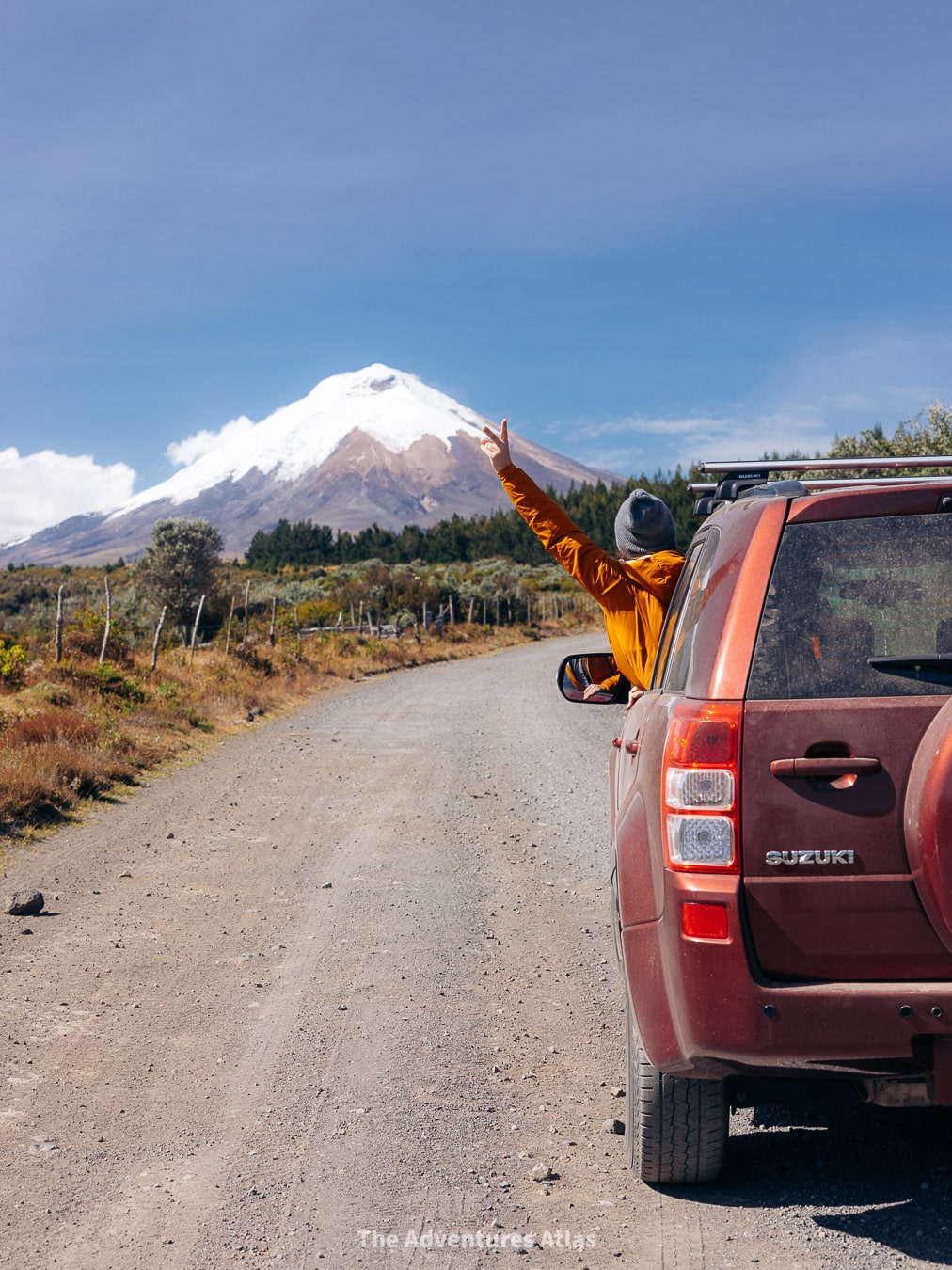
Day 10: Cotopaxi to Baños
It’s day 10 of your two weeks in Ecuador and today you’ll go to Baños, the adventure capital of Ecuador! On the way to Baños, take a detour off the tourist trail to visit Laguna Quilotoa (Lake Quilotoa).
Laguna Quilotoa is an emerald green lake in a volcanic crater that formed when Quilotoa volcano exploded and collapsed. It’s located in the remote village of Quilotoa, high in the Andes Mountains.
The route to Quilotoa passes through some of the most breathtaking landscapes in the country, including the indigenous villages and patchwork fields of Tigua and Zumbahua.
This is the best area of Ecuador to buy local artwork, so stop by Galería Arte Milenario Tigua to browse local art, baskets, pottery, and other handicrafts.

It takes about 3 hours to drive from Cotopaxi to Quilotoa and another 3 hours from Quilotoa to Baños. At 6 hours total, it makes for a long day of driving, but Quilotoa is definitely something you shouldn’t miss if you have the time. Just make sure to leave Cotopaxi at sunrise so that you have enough time to fit everything in.
The entrance fee to Quilotoa is $2 per person. From the parking lot, follow signs to the crater. From there, check out the panoramic views of Quilotoa Lake from the crater lookout (mirador), hike a portion of the 7.5 mile Quilotoa rim trail, or hike down to the bottom of the crater.
Down at the lakeshore, there’s a small dock where you can rent kayaks and spend some time out on the lake. The way down is steep and sandy, but not overly difficult. However, keep in mind that you have to go all the way back up, which is way harder due to the high altitude. Please practice responsible animal tourism and do not hire a mule to take you back up.
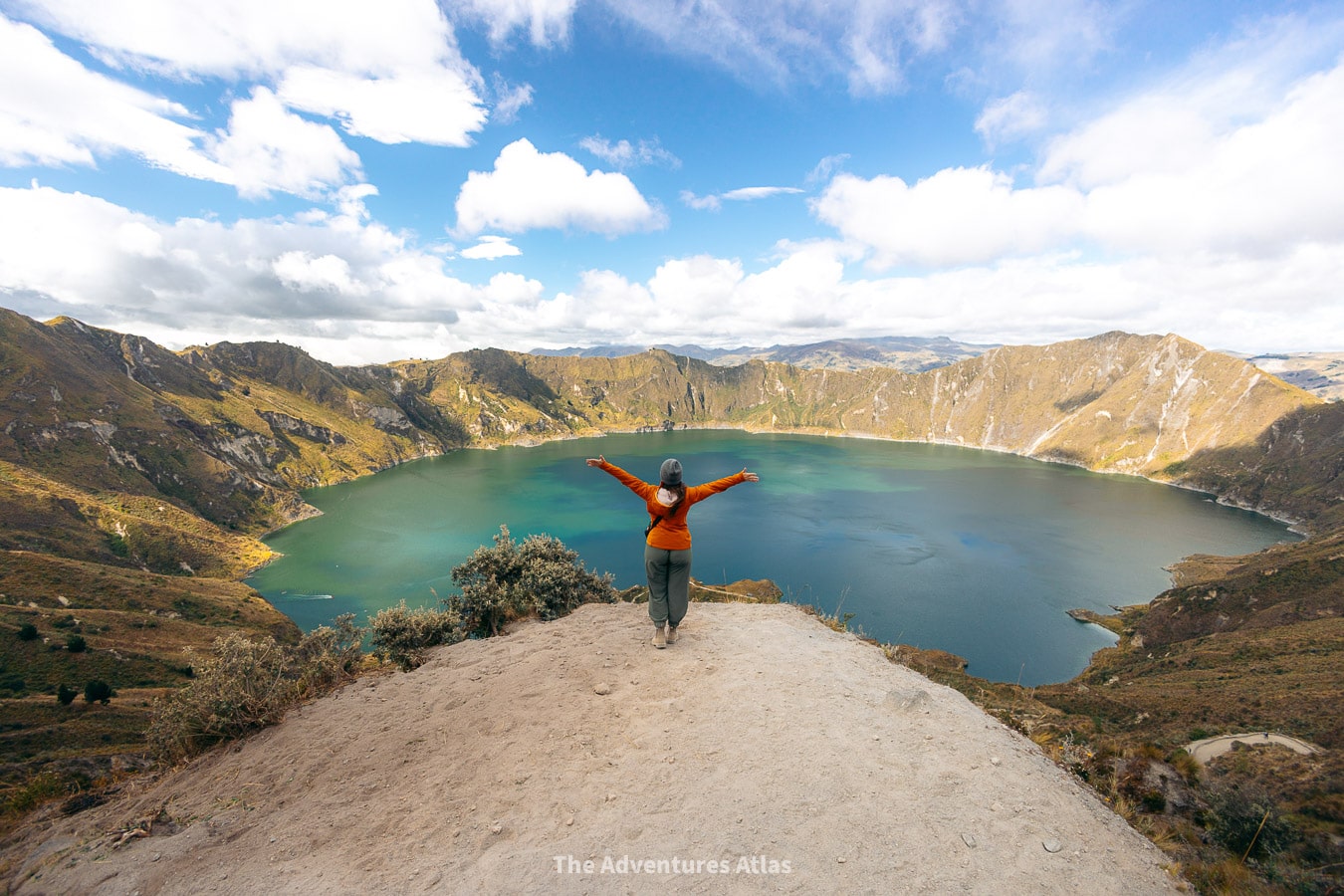
Tip: you will need a wide-angle lens to fit Lake Quilotoa into one shot
When you’ve had your fill at Lake Quilotoa, embark on your 3 hour journey to Baños, where you can unwind and prepare for the next few days of adventure.
How to get from Cotopaxi to Baños
Without stops, driving yourself from Cotopaxi to Baños takes approximately 2.5 – 3 hours via the Panamerican highway.
Stopping at Lake Quilotoa will add about 3 hours to your drive, bringing your total drive time to about 6 hours.
To get to Lake Quilotoa, follow the Panamerican highway south from Cotopaxi and then follow Route E30 west from Latacunga. While the route to Lake Quilotoa climbs through the mountains, the entire thing is paved and well maintained, so no need for a 4×4. Just watch out for all of the dogs that like to lie in the road!
There is no direct bus from Cotopaxi to Baños. You will have to take a bus from Latacunga to Ambato and then transfer from Ambato to Baños. The entire journey takes about 2 hours.
Without a car, you won’t be able to visit Quilotoa Lake and get to Baños on the same day. This is because the earliest bus from Latacunga Terminal to Quilotoa Lake leaves in the afternoon, so you won’t have enough time to do everything.
To visit Quilotoa Lake, I recommend spending the night in Lake Quilotoa and going to Baños the next day. Or head straight to Baños and book a day tour to Lake Quilotoa from there.
Once you’re in Banos, you can easily take local buses in and out of the city or call a taxi to get around.
Where to stay in Baños
Baños is a big tourist part of Ecuador, so there are a ton of places to stay. There’s a place for every budget, from modest hostels and quaint Airbnbs to luxury hotels perched on cliff high above town. And the best part is that you’ll have phenomenal views of the surrounding valley, no matter where you stay.
View all stays in Baños here.

- Budget: Hostal Balcon del Cielo , Hosteria Llanovientos
- Moderate: Hotel De Mi Pueblo , Isla de Baños Hotel , La Floresta Hotel
- Splurge: Finca Chamanapamba Guest House
Welcome to Baños! If you crave adrenaline filled adventure , this is where you’ll find it!
Also known as Baños de Agua Santa , this town is located directly between the Andes Mountains and the Amazon Basin. It’s known as the ‘adventure capital of Ecuador’ because of its huge range of adventure sports, including paragliding, rafting, zip lining, canyoning, and mountain biking.
You won’t have any trouble finding a place to book any of the above adventures. Simply visit the numerous tour operators in the town center or book through the hostels and hotels around town.
One thing you must do is cycle the Ruta de las Cascadas, also known as The Waterfall Highway . Just hire a bike for the day and follow the road from Baños to the town of Puyo along the Río Pastaza canyon. Along the way, you’ll pass seven waterfalls before finally arriving at the best of them all: Pailón del Diablo, or the Devil’s Cauldron.

Another great thing to do in Baños is to take a swing at the end of the world at Casa del Arbol (entry is $1 per person). For the best views, go in the morning or on a clear afternoon before the clouds roll into the valley.
After a full day of adventure, relax in the volcanically heated hot springs.
I personally recommend splurging on a day pass at Luna Volcán , an adventure spa perched on the side of the mountain overlooking the town. A pass to the pool and jacuzzis are $20 per person – and well worth the cost.
For a cheaper alternative, check out the two public hot springs Termas de la Virgen and El Salado. Termas de la Virgen is close to the town center, while El Salado is about a 10 minute drive but a lot less crowded. Entrance is only $3.
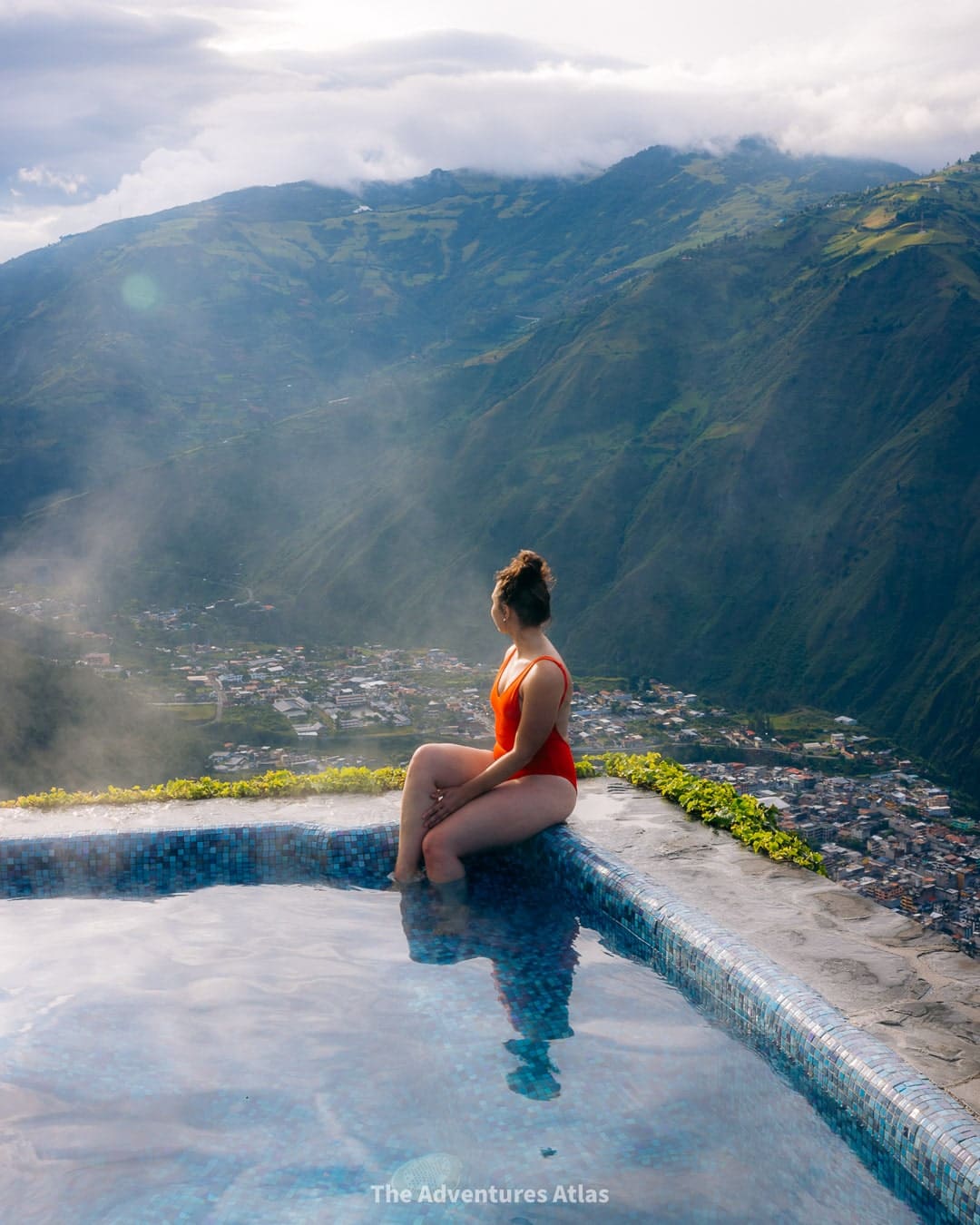
Day 14: Baños to Quito
Your adventurous 2-weeks in Ecuador is coming to an end, as you pack up to catch your flight home. Hopefully you’ll be ending your trip with plenty of amazing memories and epic photos to tide you over until your next visit to South America!
Extend your trip to Ecuador
Not ready to leave Ecuador yet? Honestly, I’d be surprised if you were!
If you have more time to spare, here’s how you can extend your trip through Ecuador:
- Cuenca, Ecuador . Time needed: 3 days
- The Galapagos Islands . Time needed: 5-10 days
- The Amazon Jungle . Time needed: 4-6 days
City and Culture: Cuenca, Ecuador
The city of Cuenca, Ecuador is the third largest city in Ecuador.
What you can expect from your visit to Cuenca:
- Lively urban vibes
- Colorful colonial architecture
- Stunning centuries old cathedrals
- Friendly locals and bustling markets
The city overlooks the Rio Tomebamba River, which provides incredible photo ops (and cooling relief on sunny days).
When you’ve had your fill of the city, there are also plenty of outdoor activities such as hiking, mountain biking or taking day trips to nearby villages that offer even more traditional cultural experiences. You can even explore the Inca ruins scattered around the area for a unique experience that you won’t find anywhere else.
The people here are incredibly welcoming and the city itself is filled with friendly locals, warm vibes, and plenty of cultural activities like painting and dancing. Cuenca is also the best place in Ecuador to learn Spanish!
How to get to Cuenca
Cuenca is located approximately 467km south of Quito. From Quito, the drive takes just over 7.5 hours via Route E35. However, if you add Cuenca to this road trip itinerary, then you’ll want to head straight there from Baños, which takes about 6 hours.
The route between Quito and Cuenca is filled with magnificent volcanoes, valleys, and picturesque indigenous villages.
By plane from Quito
A direct flight from Mariscal Sucre Quito International Airport (UIO) in Quito to Aeropuerto Mariscal La Mar (CUE) in Cuenca takes less than an hour. Flights on LATAM or Avianca are extremely affordable and you can book them just a few days in advance.
Taking the bus to Cuenca takes the most amount of time.
Take the bus from Quito’s Terminal Terrestre Quitumbe to the station in Cuenca. The journey costs about $28 and takes about 9-10 hours.
SCUBA Diving and Wildlife: The Galapagos Islands
The Galapagos Islands hold an incredible place in history as the inspiration for Charles Darwin’s theory of evolution. This remote group of 13 islands is located about 600 miles off the Pacific coast of Ecuador.
The Galapagos are a natural wonder, a UNESCO World Heritage Site, and a huge draw for wildlife enthusiasts. In fact, it’s estimated that 90% of the land-dwelling species found here are not found anywhere else on the planet.
What you can expect in the Galapagos Islands:
- Observing wildlife in it’s natural habitat
- Snorkeling on pristine turquoise shores
- Scuba diving around abundant coral reefs
- The only place in the world where you can watch penguins swim over coral reefs!
You can even observe fascinating wildlife on land , including endemic species like giant tortoises, blue-footed boobies, and the iconic marine iguana. It’s no wonder why the Galapagos have captivated people for centuries and why they remain one of the most popular tourist spots on earth.
How to get to the Galapagos Islands
Getting to the Galapagos from Quito is super easy!
Most people will fly into Quito’s Mariscal Sucre International Airport. From there, you will take a domestic flight to the Galapagos. But first, the flight will stop in Guayaquil to pick up more passengers before heading to the islands.
The flight from Quito to Guayaquil takes about 30 minutes, and the flight from Guayaquil to the Galapagos takes about 2.5 hours.
Once you arrive in the Galapagos, you’ll have to book a cruise or a variety of boat tours to explore the diversity of wildlife and nature found on each of the islands.
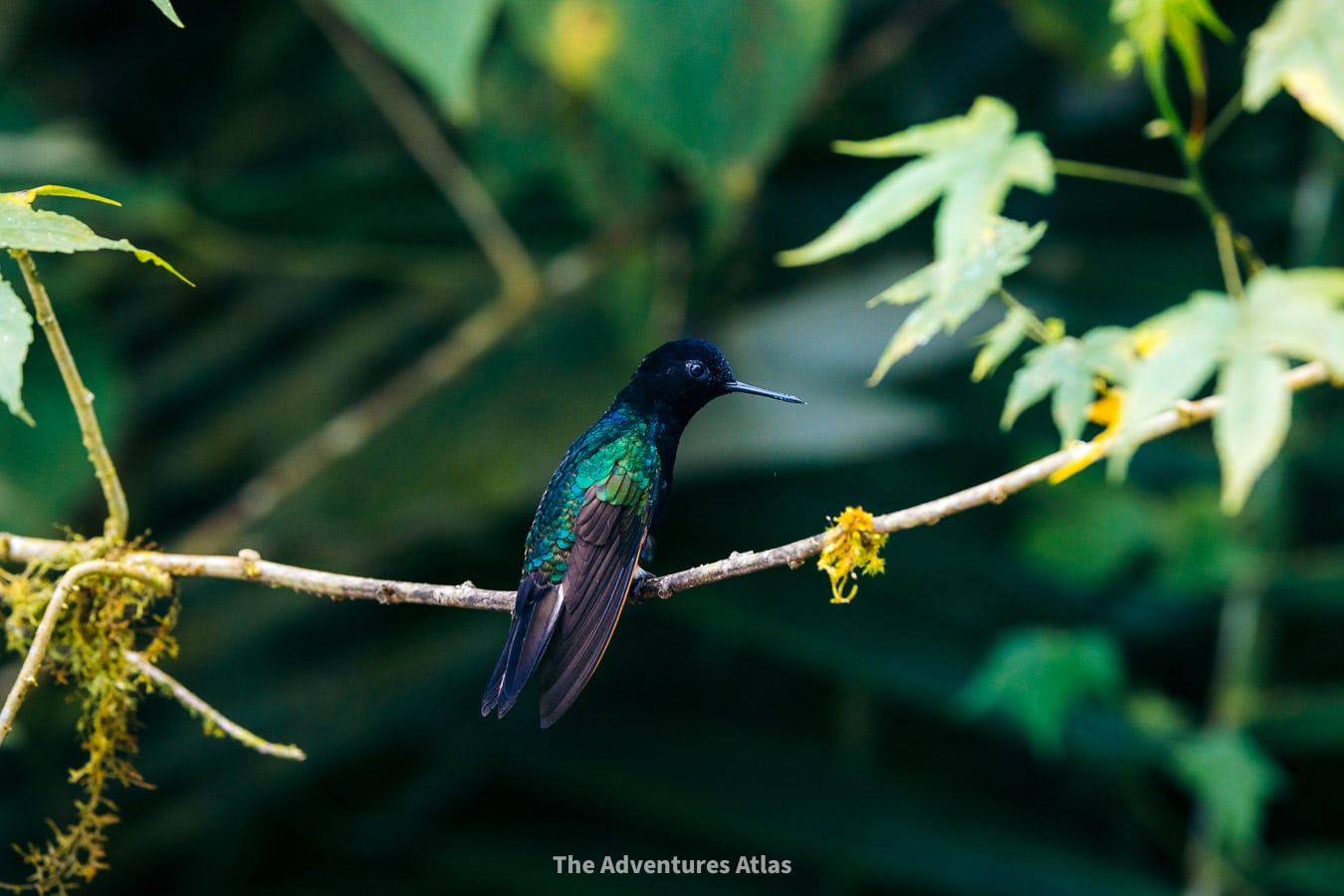
The Amazon Jungle: Cuyabeno Wildlife Reserve and Yasuni National Park
With its world-renowned biodiversity , a trip to the Ecuadorian Amazon (Amazonia) should be at the top of every adventure traveler’s list.
Exploring the Amazon rainforest is an experience like no other. Visiting the Ecuadorian Amazon gives you an opportunity to witness nature at its best and catch a glimpse of the extraordinary wildlife that calls this special part of the world home.
You’ll have a chance to observe troops of squirrel monkeys leaping through the trees, admire colorful macaws perched on branches, and swim alongside pink river dolphins .
The two most common ways to experience the Amazon in Ecuador are by visiting Cuyabeno Wildlife Reserve or Yasuni National Park. Both Cuyabeno and Yasuni both offer incredible opportunities to experience the Amazon Rainforest.
Accommodations range from luxurious eco-lodges to rustic cabins and can be booked online or with the help of your hotel in Quito.
While Yasuni caters to more of a luxury travel crowd, Cuyabeno attracts more backpackers because you can easily visit for a fraction of the cost of Yasuni.
We had a really hard time deciding between Cuyabeno and Yasuni, but ultimately chose Cuyabeno for it’s price and the fact that the river is a lot narrower, allowing us to potentially see more wildlife along the shore.
We stayed at Guacamayo Eco-lodge in Cuyabeno and were so incredibly thrilled with our experience. The lodge itself is very rustic and modest, but it was all part of the adventure.
I think what really made it though was our guide, Neiser Toro. He’s an experienced naturalist guide and founder of the Amazon conservation group Amazon Shepherd .
I would 100% recommend that you contact Guacamayo ahead of time and try to line up dates that Neiser is guiding. His passion and knowledge of the Amazon rainforest is truly unmatched.
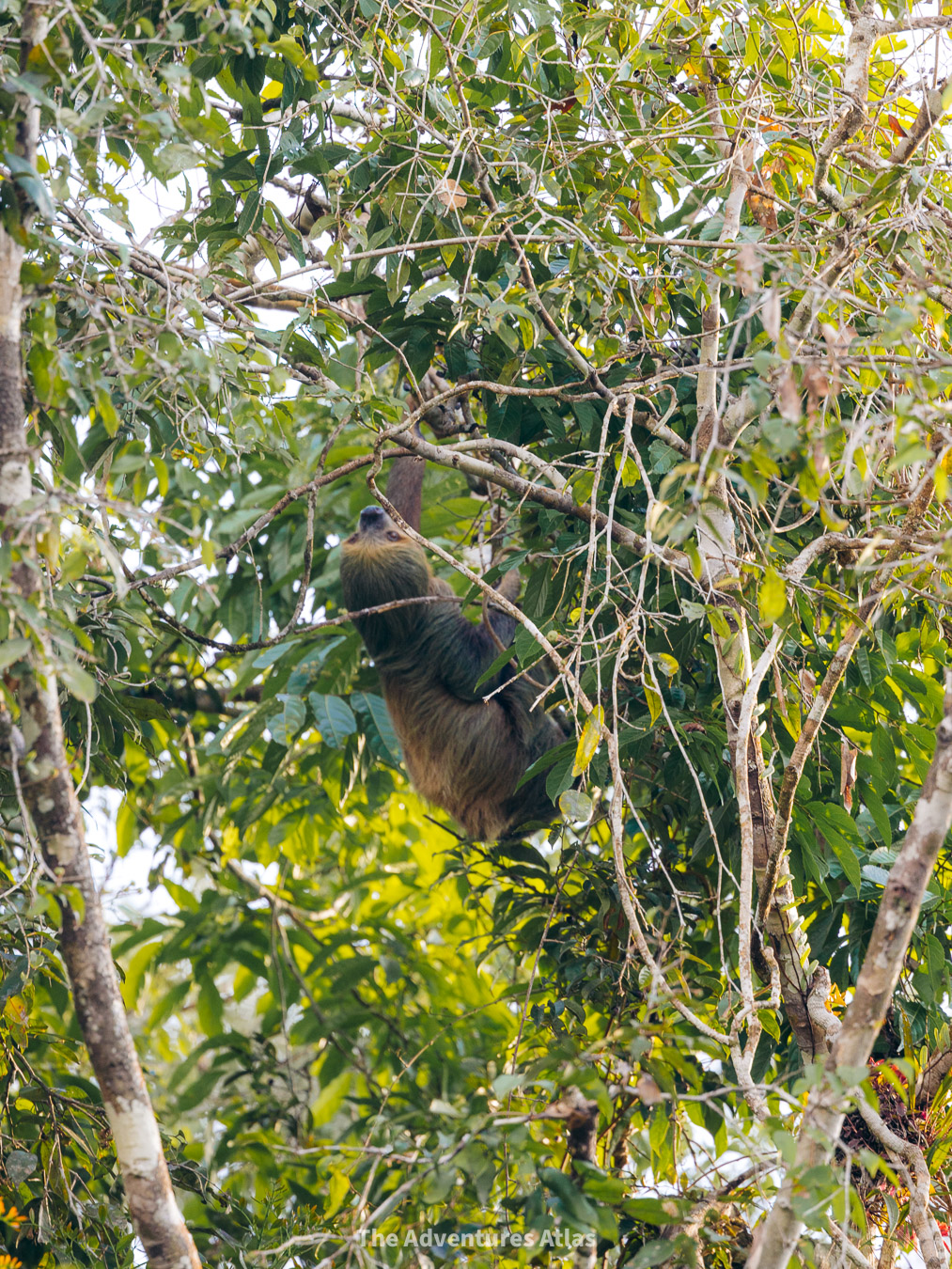
How to get to Cuyabeno Wildlife Reserve
The tours to Cuyabeno Wildlife Reserve start in the city of Lago Agro (Nueva Loja) in the Amazon region of Ecuador. Lago Agrio is 387km east of Quito, near the border of Colombia.
You basically have to find your way to Lago Agrio, where you will meet up with the tour guide from your lodge. For this reason, all tours to Cuyabeno need to be pre-booked.
Most people take the overnight bus from Quito to Lago Agrio, which costs about $40 per person round-trip. Your lodge will tell you where to meet the bus in Quito. The journey from Quito to Lago Agrio takes about 10 hours. At first, we were really anxious about the long ride, but we just ended up sleeping most of the time.
We booked our tour of the Amazon with Guacamayo Ecolodge. Our bus picked us up at 11PM at the Secret Garden Hostel in Quito’s Historic District. We arrived at another hotel in Lago Agrio at approximately 9AM the next morning, where we had breakfast and met with the rest of our group. From there, we boarded a local bus which drove us 2 hours to our meeting point on the shore of the Cuyabeno River. There, we took another 2 hour boat ride in a motorized canoe down the Cuyabeno River to our lodge.
The entire trip from Quito to arriving at our lodge took roughly 16 hours. It sounds like a long time, but truly it was all part of the adventure!
It used to be a lot easier to access Lago Agrio by plane from Quito. However, TAME airlines, which was the only airline that flew between Quito and Lago Agrio, no longer operates those flights.
Instead, you will have to fly from Quito toFrancisco de Orellana Airport (OCC) in Coca and arrange for transportation to the hotel where the local bus picks you up on the way to the Cuyabeno River. You can try arranging this with your lodge ahead of time. Make sure you can speak some Spanish!

How to get to Yasuni National Park
Getting to Yasuni National Park is a little more straightforward than getting to Cuyabeno. While Yasuni is more expensive, the ease of accessing Yasuni might be something to consider if you’re short on time.
You can fly from IUO in Quito to Francisco de Orellana Airport (OCC) in Coca, which is the meeting point for tours to Yasuni. A nonstop flight takes approximately 30 minutes.
Your guide will meet you in Coca and transport you to a meeting point before you take the boat down the Napo River to your lodge. Tours to Yasuni need to be pre-booked.
Ecuador Entry Requirements for COVID-19
As of October 2022, Ecuador no longer requires proof of COVID-19 vaccination cards or proof of a negative COVID-19 test prior to entering Ecuador. However, international travelers are still required to complete a declaration of health prior to entering Ecuador, which is available through the ministry of Public Health. You can find the link here .
To visit the Galapagos Islands, you also need to present a “transit control card”, issued by the Government of Galapagos.
This information is up-to-date as of December 2022. For more details and the most recent updates , please review COVID-19 Information issued by the US Embassy and Ecuador’s Emergency Operations Committee .
Do You Get Altitude Sickness in Ecuador?
Since Ecuador is home to some of the highest mountains in the world, you might experience symptoms of altitude sickness in certain parts of the country. This is because the air is thinner at high altitude, which makes your body work harder to get oxygen.
Symptoms of altitude sickness generally start around 8,200 ft (2,500m) above sea level and feel a bit like a hangover.
Common symptoms of altitude sickness
- Shortness of breath
However most people only experience mild symptoms and adapt within a few days.
To alleviate symptoms of altitude
- Drink plenty of water
- Get plenty of rest
- Avoid alcohol to start
- Take ibuprofen
While altitude sickness typically takes a few hours to set in, you might notice some immediate effects as soon as you arrive in Quito.
At its highest point, Quito is over 9,000 feet above sea level, making it one of the highest elevation cities in the world. As soon as you step off the plane, you might notice that just walking makes you feel a little bit out of breath. This is especially true if you’re coming from somewhere around sea level.
This two week Ecuador itinerary starts off with a few days in Quito to allow your body to acclimate to the altitude before continuing on to other parts of Ecuador.
However, even after adjusting to the altitude in Quito, you might still feel some effects in higher elevation areas like Cotopaxi or Quilotoa, which sit between 13,000 – 15,000 feet above sea level. Remember to stay hydrated and don’t be surprised if you’re out of breath or more tired than usual simply from walking around.

Getting to Ecuador
There are two major airports in Ecuador :
- Mariscal Sucre International Airport (UIO) in Quito
- José Joaquín de Olmedo International Airport (GYE) in Guayaquil
Quito is usually the best airport to fly into because it’s the most convenient starting point for a country-wide road trip and the jumping off point for flights to the Amazon. Quito is also the best city for tourism because it’s a lot prettier and a lot safer than Guayaquil.
Flying into Guayaquil makes the most sense if your only destination is the mainland beaches or if you have a single night layover before you travel to the Galapagos Islands.
However, it’s generally best to arrive in Ecuador a few days before you fly out to the Galapagos. This is to account for any weather issues and to allow extra time if your international flight loses your luggage. For this reason, it would be best to fly into Quito and spend a few days before leaving for the Galapagos.
When it comes to finding the best flight deals, timing is everything. For the cheapest flights, try to book your tickets at least three months in advance and avoid peak season and major holidays.
For the most part, flights are most expensive from June – August, which correlates to summer vacation in the United States and Europe.
The best way to travel in Ecuador: How to get around for a 2 Week Itinerary
You won’t find a better way to explore this unique country than by hitting the road and seeing it firsthand.
The best place to rent a car in Quito is from Amigo Car Rental . They were professional, honest, and had great prices with unlimited kilometers.
Here’s how you can contact Amigo Car Rental:
- Whatsapp: +593 98 548 2751
- Facebook: click here
- Email: [email protected]
We arranged our car rental through WhatsApp and made the downpayment (which was one day of rental) through western union. When we arrived at the office, it was super small but the service was very professional. We paid the remaining balance in cash, filled out the paperwork, and were given a quick overview of the car. The whole process took about 20 minutes.
Don’t rent a car from the airport because they’re notorious for not having the car for you once you show up, even if you reserve way ahead of time. We talked to a few travelers during our trip who had horror stories about renting from the airport.
In fact, I would suggest sticking with local companies only and avoiding large international companies altogether.
Most cars in Ecuador are manual transmission, so expect to pay almost double if you want an automatic.
Gas stations are full service. Go to Petroecuador for the best prices. Just pull up and tell them you want a full tank of gas. Gas is extra or super, so make sure you find out which one your rental car takes. They will expect you to pay cash, or “ effectivo ” in Spanish. However, they will accept credit cards.

Public Transportation
If you don’t want to rent a car, public buses, taxis, and private/shared shuttle services are very accessible in Ecuador. Obviously using public transport is not as convenient as a having your own car. But a combination of public transportation, shuttles, and some creativity, can definitely get you almost anywhere you need to go.
Day trips from Quito
Quito is centrally located to most of the spots on this 2 week itinerary. You can also easily Ecuador’s top attractions from Quito, including the Amazon Rainforest, the Galapagos Islands, and Avenue of the Volcanoes. In fact, if you don’t have a car and don’t want to take a bus, then you can find a day tour that leaves from Quito and takes you to all corners of the country.
All of these destinations are easily accessed via day trips and overnight trips from Quito. Just about any hotel can help you arrange that. So, if you wanted to avoid the public bus system altogether, it is possible to use Quito as your home base.
Doing it this way is easy if you don’t have a car. Just note that you’ll lose a lot of time going back and forth to Quito. It’s also more expensive and much less flexible than doing things on your own schedule.
Private Driver
Hiring a private driver is super common in Ecuador, and it can even be cheaper than renting a car in some cases. You can hire a driver for as many days as you need.
Here are some reasons why you might want to consider hiring a driver:
- If you’re intimidated by driving in Ecuador but still want the flexibility .
- So you can fully enjoy the scenery while you’re chauffeured from one incredible destination to the next.
- To have a local expert who can show you the country’s hidden gems that you might have otherwise missed.
If you’re interested in a hiring a driver, Guanguiltagua Expeditions comes highly recommended. If we go back to Ecuador and hire a driver, this is the company we will use.
We hired a driver for one day through Ecuador Best Tours to take us shopping around Otavalo after we returned our rental car. Our driver, Eduardo, was so accommodating and we had the best time! The only downside was that Ecuador Best Tours charged us $200 for the day, which is a little pricier than other companies.
We didn’t mind paying extra because our request was very last minute. Normally though, you can expect to pay about $100-150 per day for a private driver. This doesn’t include their accommodation costs, which are extra should they need to travel around the country with you.
What month is best to visit Ecuador?
Ecuador is full of incredibly diverse landscapes, so the weather mostly varies by region and depends on geography and altitude. According to the locals, any time of year is a good time to visit Ecuador, as long as you craft your itinerary around the weather.
- June – October is the best time to visit the Andean Highlands (Quito, Cotopaxi, Quilotoa, Cuena, Otavalo) and the Amazon Basin (Banos, Coca, Puyo, Yasuni, Cuyabeno). . These are the coolest and driest months. During this time, you can expect dry, sunny weather and a better chance of clear skies for panoramic views of Ecuador’s mountains and volcanoes. This is also the best time to visit Peru if you plan to extend your trip. . The downside is that June, July and August are some fo the busiest months of the year due to summer vacation in North America and Europe. .
- December – May is the best time to visit Ecuador’s coastal regions and the Galapagos Islands. While this is considered the rainy season in Ecuador, the waters around the Galapagos are the warmest and crowds are a lot lower. The water is also calmer, which allows for better visibility for snorkeling and scuba diving. . Crowds are highest during the holiday season in December and January, so you’ll want to book far in advance if you plan to travel during this time because lodging, rental cars, and tours will sell out fast. .
- The rainiest months are March and April throughout the whole country , so try to avoid those. .
- For the best combination of weather and crowds, visit in February, September or October.
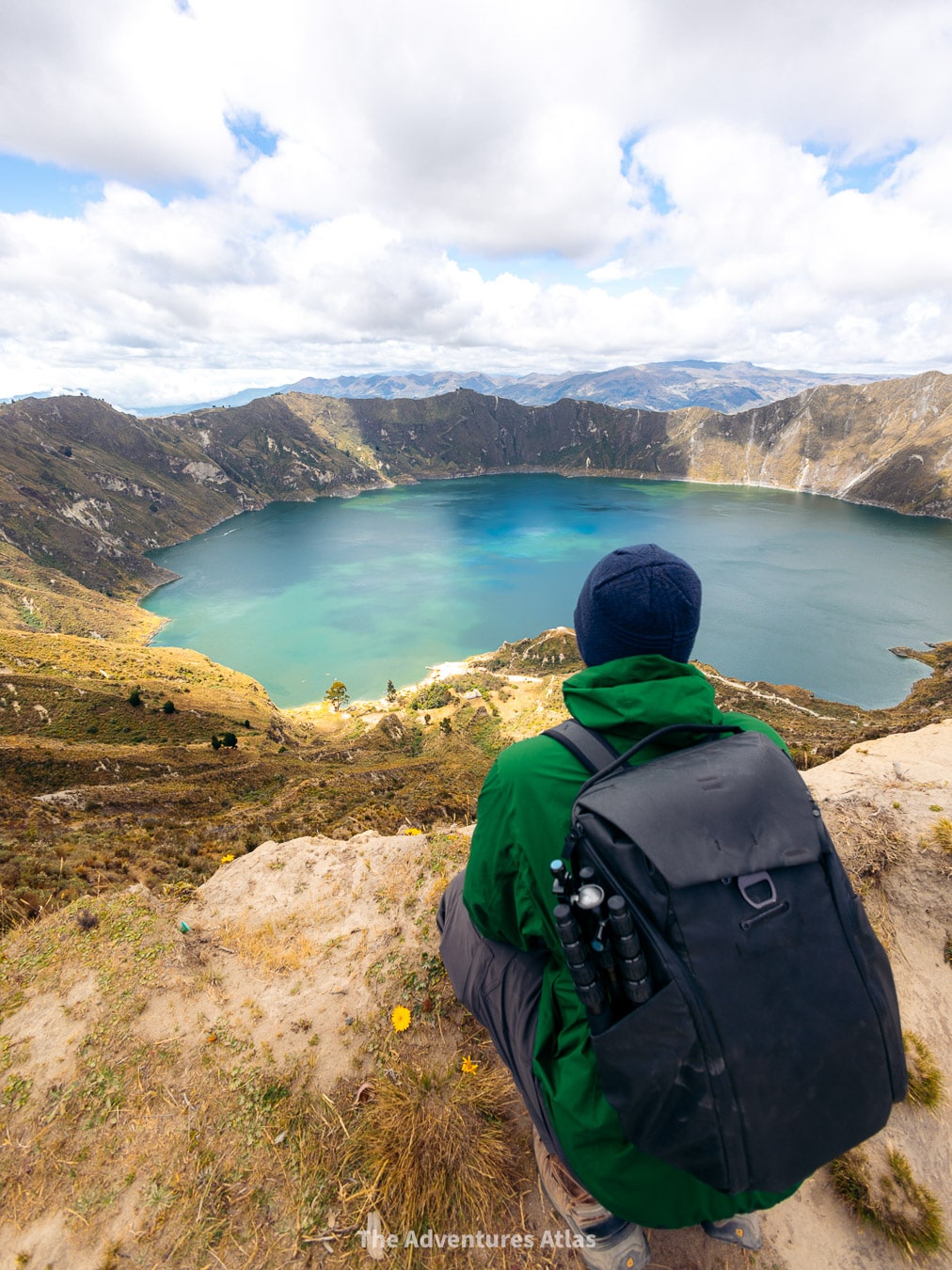
How much does a 2 week trip cost?
How much money will you need for your trip to Ecuador ? Prices vary greatly depending on the time of year, the location, and how you get around. But you can easily take a two-week trip to Ecuador for less than $700 per person if you’re careful with your budget. This averages out to about $50 per day .
Compared to the United States or Canada, a self-guided two week trip to Ecuador can be extremely affordable, even if you decide to splurge here and there on fancier meals and accommodation.
The most expensive part of the trip will likely be the rental car. For this itinerary, having a rental with high clearance is more important than a having a 4×4, which will save you a lot of money. Still expect to pay roughly $70 per day for a manual 4×2 SUV. If you need an automatic car, the price is closer to $100 per day. Alternatively, you can take public transportation, which is significantly cheaper but may not be as convenient as having your own car.
Accommodation is very affordable in Ecuador, with the exception of the Galapagos Islands. A shared room in a hostel can cost as little as $10 per night, which is perfect if you’re on a shoe string budget. But you can often spend just a little bit more and find a private room in a nice hostel for about $20-30 per night. Even if you decide to splurge a little bit, the fanciest hotels or hacienda’s rarely cost more than $300/night.
While food prices vary a lot in Ecuador, expect to pay about $15-20 a day for food . A fish or steak meal at an upscale restaurant costs about $20 per person. But the majority of meals will cost roughly $6 per person for a full plate of food. Breakfast is typically cheaper than lunch and dinner. The cheapest meal we had was at a Greek restaurant in Mindo, where we paid $3 per person for a full breakfast and coffee.
How much we spent in 2 weeks in Ecuador
- Flights from JFK to Quito: $0 (credit card points)
- Travel insurance: $180
- Airport parking: $192
- Checked bags: $60
- Car rental: $630
- Lodging: $636.58
- Uber and shuttles: $50
- Textiles and handicrafts: $900
- Entrance fees: $106
- Parking: $13
- Tours (including guide tips): $248
GRAND TOTAL: $3289.58
These prices are for two people and we split everything in half, which came to $1744.79 per person for the whole trip, or $872/person/week.
We did treat ourselves to some splurge stays, some fancy meals, and a bunch of handicrafts. We obviously weren’t being very careful with our budget and could have saved almost $1000 had we not gone crazy for textiles and handicrafts. No regrets tho.
But overall, Ecuador is definitely an ultra budget friendly destination. Just don’t spend a thousand dollars on textiles and you’ll be fine.
Is Ecuador safe?
In general, Ecuador is safe to visit .
The crime rate outside of big cities is relatively low, and the vast majority of travelers enjoy their time without any issues.
Guayaquil has the highest crime rate in Ecuador, so it’s best to stick to the tourist areas when visiting or avoid Guayaquil altogether. The same goes for these areas in Quito.
Violent crime is relatively rare, but petty theft and muggings are common. Because of this, it’s important to stay aware of your surroundings, avoid traveling at night, and keep your valuables hidden. Be cautious of anyone who becomes overly friendly. While the people in Ecuador are lovely, anyone who seems too eager to help or distract you is probably trying to scam you. Unless it’s an emergency, kindly refuse any assistance from locals and keep your possessions (especially your cell phone!) hidden away in an internal pocket of your jacket or backpack.
Robberies/pick pockets are pretty common on public buses, so it’s better to use registered taxis, tourist shuttles, or ride-sharing services whenever you can. In addition, protests and demonstrations can sometimes turn violent, so always avoid protester areas and be aware of your surroundings at all times.
Don’t let all of this scare you though! Overall, Ecuador is a relatively safe country full of vibrant culture and friendly, welcoming people. If you just use common sense and take basic safety precautions, you should have an enjoyable and safe trip to Ecuador.
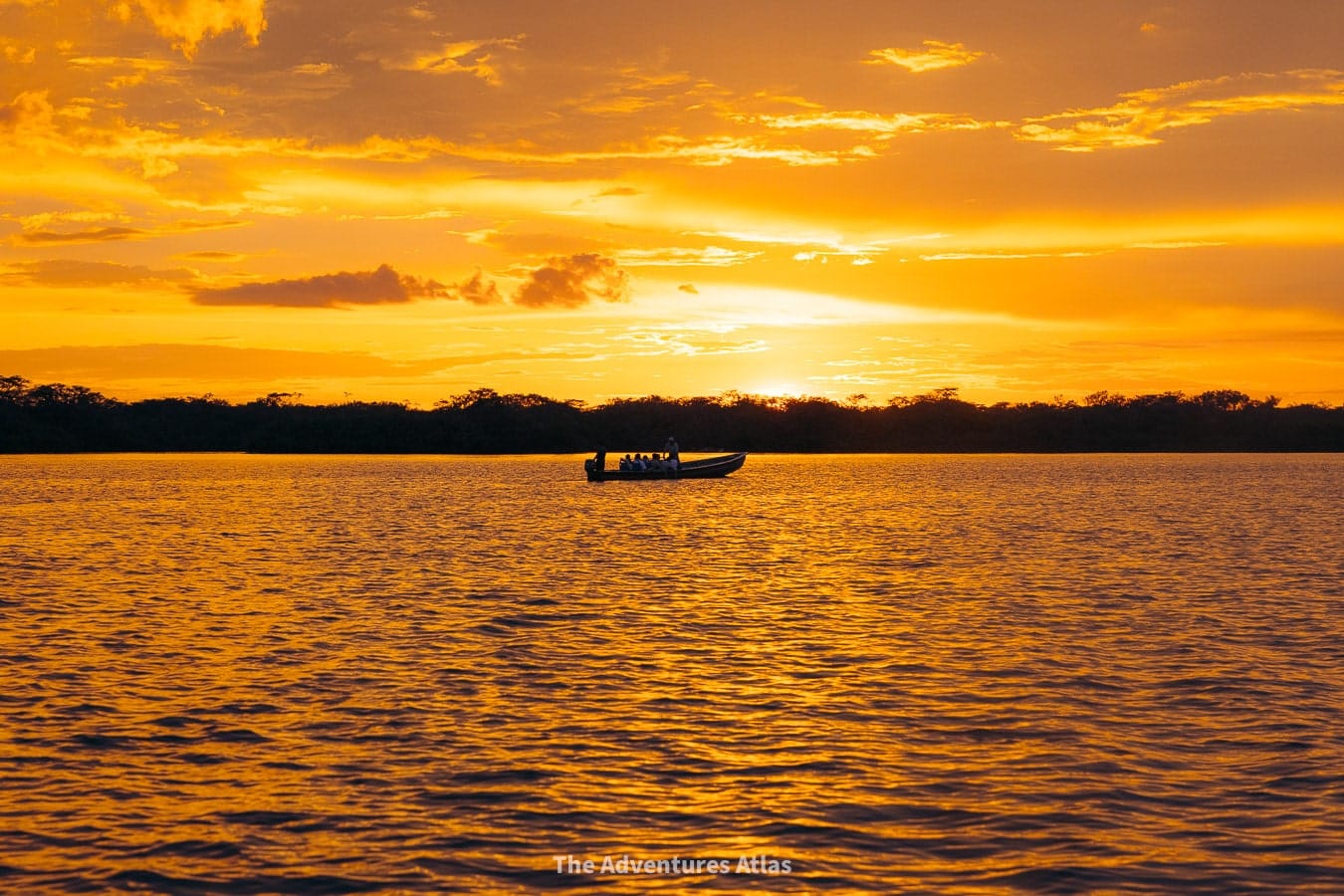
What language is spoken in Ecuador?
Spanish is the official language of Ecuador. Some people in rural communities also speak indigenous languages, such as Quichua and Shuar.
English is spoken mostly by people who interact with tourists, such as tour operators, hotel staff, and most rental car companies. It basically ends there though.
In short, English is not widely spoken in Ecuador, so you will need to know a bit of Spanish to get around. If you don’t already know some Spanish, you can quickly learn some basic volcab and useful sentences with apps like Mondly .
I also recommend downloading iTranslate for translating on the go. You have to pay for the offline version, but I think it’s worth it. We found that it was super reliable and a lot more accurate than Google Translate.
Can you drink the water in Ecuador?
No, you cannot drink the tap water in Ecuador. This is due to a variety of factors, including poor water treatment and contamination from agricultural runoff. As a result, it is important to only drink bottled water while in Ecuador, unless you’re specifically told otherwise (i.e. if your hotel has a RO system).
Currency in Ecuador
The official currency of Ecuador is the US dollar . The US dollar is the only currency is that is accepted in Ecuador.
Additionally, Ecuador is very cash based. You can pay with major credit cards at most tourist businesses, some gas stations, larger hotels, and larger restaurants. However, expect to pay cash for basically everything else – including anything at the markets, entrance fees, tours not booked online, and even rental cars (weird, I know!).
Don’t bother carrying too many bills larger than $20. Most places won’t accept anything larger than a $20 bill , with the exception of rental car companies, grocery stores and gas stations.
Did you find this 2 Week Ecuador Itinerary and Travel Guide helpful? Let me know in the comments!
Pins for your pinterest.
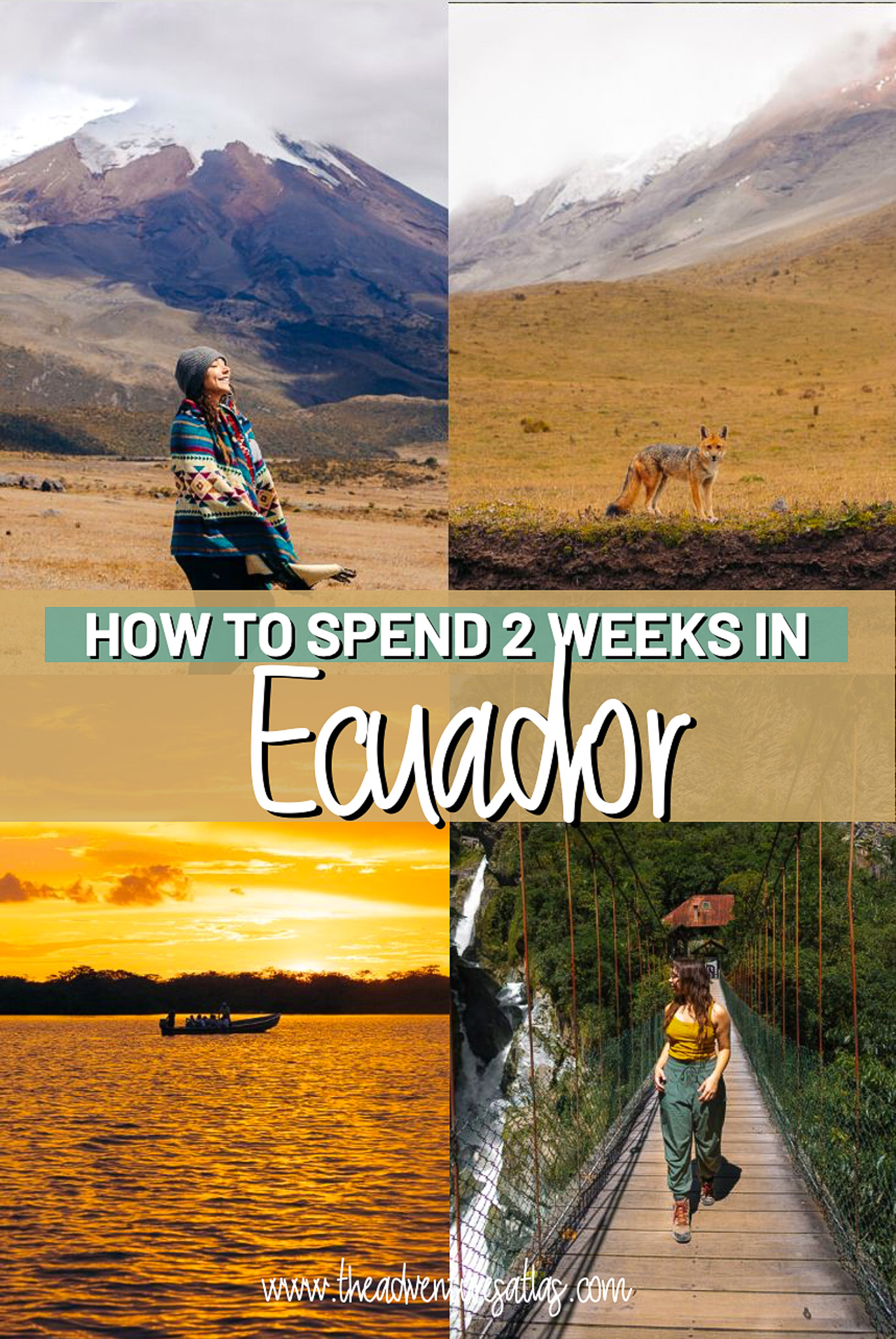
Related Posts

Top 10 Things to Do in New Hampshire in the Winter (White Mountains and Great North Woods)
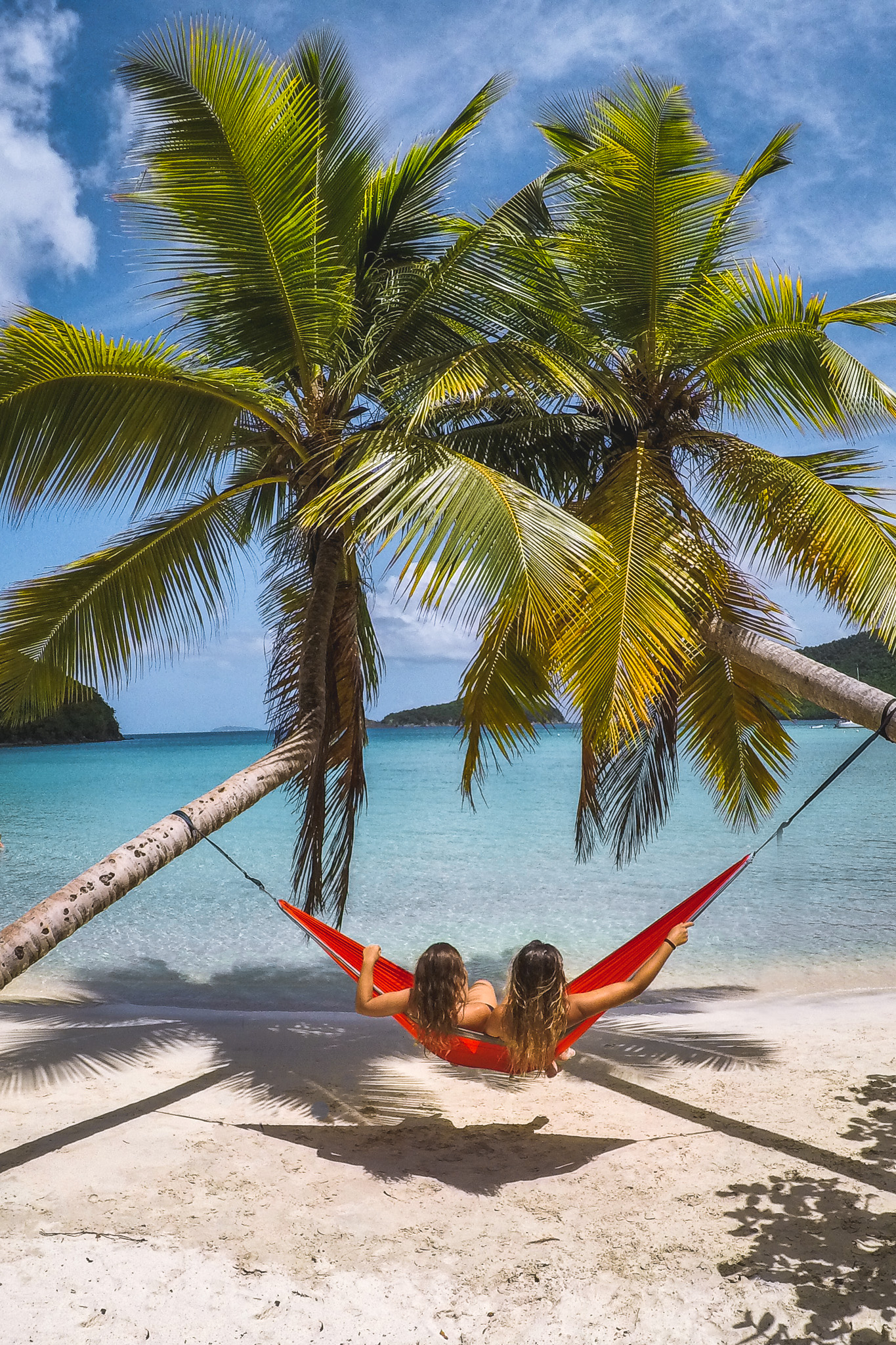
The Best Places to Stay in St John, US Virgin Islands
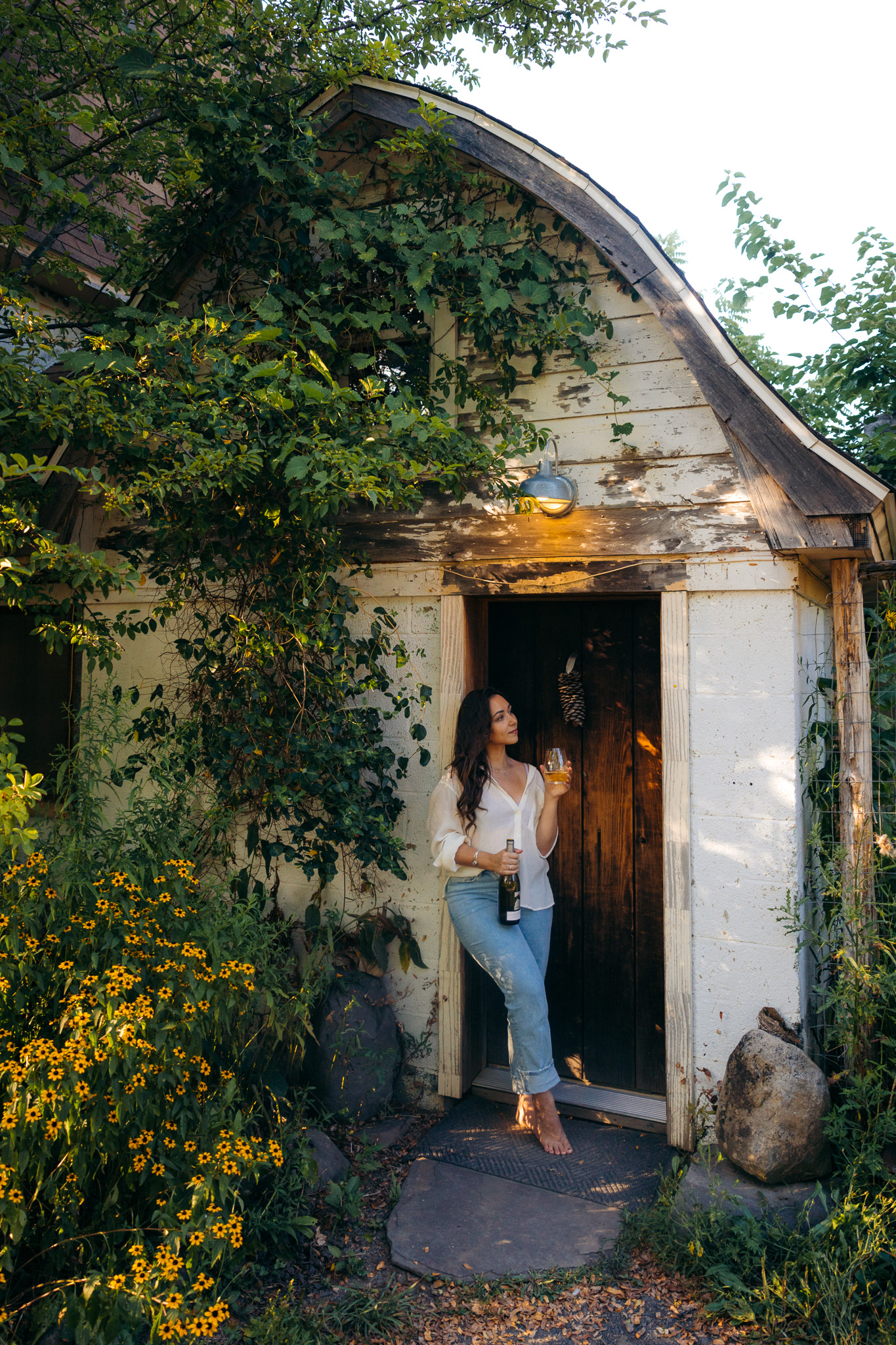
15+ Hudson Valley Wineries & Vineyards You Need to Visit in NY
Leave a comment cancel reply.
Save my name, email, and website in this browser for the next time I comment.
WANT TO SAVE MONEY TRAVELING?
Check out the travel resources →
Check out my list of reliable budget-friendly travel resources that are guaranteed to save you the most money, without compromising your experience.
This error message is only visible to WordPress admins Error: There is no connected account for the user 17841400792270379.
Get in touch
Contact Portfolio Let’s work together
Explore the blog
Destinations Guides and itineraries Travel planning tips
Let’s connect
Never miss an adventure, privacy policy | terms of service | disclaimer | by zazen designs.
Back to top

How To Spend Two Amazing Weeks in Ecuador: An Itinerary for 2023
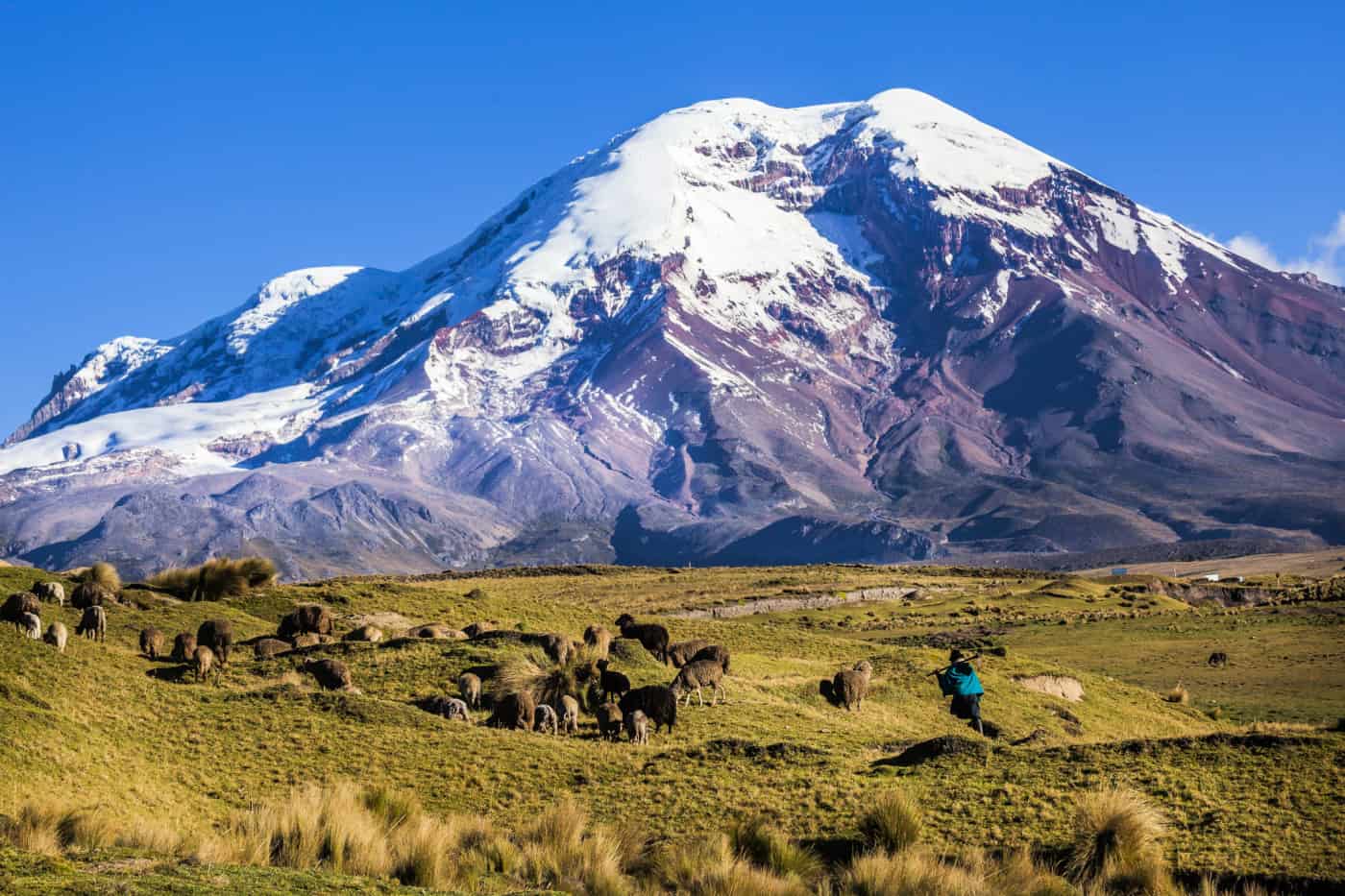
Ecuador is one of my favorite countries I’ve traveled to. It truly does have something for every traveler.
Often overlooked by the countries surrounding it, like Peru and Colombia , this small coastal country is the perfect destination for a two-week vacation. From the vibrant culture of Quito to the adventure-inducing city of Banos, you will be busy every single day.
Located on the west coast of South America, Ecuador is easily accessible by air. The country’s largest airport is in Quito and its second-largest is located in Guayaquil. Many regional airports offer domestic flights to different parts of the country but because of their extensive bus systems and straightforward gringo trail, a lot of people choose to travel by land.
Many travelers seem to only come to Ecuador for access to the Galapagos Islands, which are stunning and a bucket list item BUT there is so much more to the country than this. Spend two weeks exploring the Amazon jungle, trekking in Cotopaxi National Park, or relaxing on the beautiful beaches of Montanita.
There are so many different landscapes, and Ecuador is one of the few countries in the world to have all four climate zones including the coast, mountains, rainforest, and the Galapagos. This means you can enjoy all of these incredible experiences within a short amount of time. Because the country is located on the equator, the weather is pretty much always great!
The food in Ecuador is mouth-watering, with some of my favorites being ceviche, grilled fish, plantain chips, and the famous tornado. The locals are so friendly that you can find yourself spending hours chatting away. They’ll be sure to give you a tour of their favorite spots, making sure you get the full experience.
I originally almost skipped Ecuador and I am so glad I didn’t. I had the opportunity to travel for one month in the country and it was easily one of my favorite trips to date. Exploring the coastline was a mesmerizing experience that allowed me to mingle with incredible people, both locals and fellow travelers. I spent a few nights in the Cotopaxi National Park and saw some of the most breathtaking views. I biked in Banos and hiked in the Amazon rainforest. I tasted all types of food, some I didn’t even know existed!
I could easily go on and on about why Ecuador is the perfect destination for a two-week vacation – but it’s better if you experience it for yourself. So I’ve taken all of my first-hand knowledge and created the perfect two-week itinerary in Ecuador.
This unforgettable journey has left an indelible mark on my heart and I’m excited to share with you all my tips and tricks to ensure that you have the best Ecuadorian experience possible.
Enough chatting, here is the perfect way to spend two weeks in Ecuador.
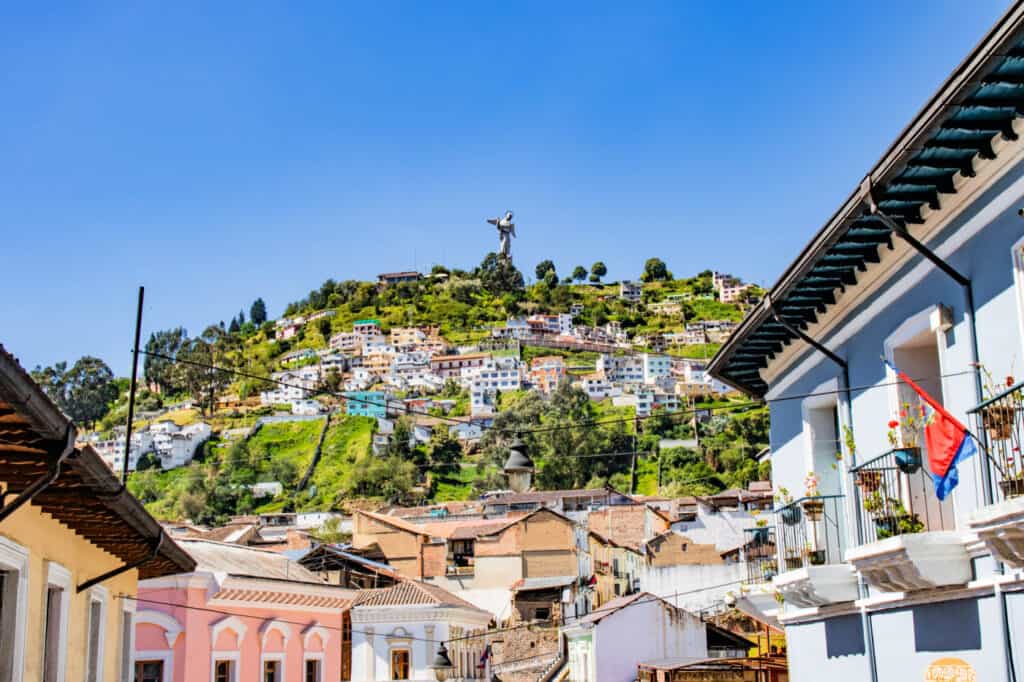
Day 1: Arrive in Quito
At 9,350 feet above sea level in the center of Ecuador, Quito is one of the highest capitals around. Therefore, it’s best to take things slow on your first day and discover some of its many amazing attractions as you adjust to this new altitude.
Depending on what time you arrive, drop your luggage at your hotel and head out for breakfast at a local spot, like the farmer’s market right off of Plaza Foch. We’re jumping right in!
Start your day off on the right note with some of the most delicious tropical fruits or my all-time favorite, El Tigre. It’s a blend of mashed plantains and cheese topped off with tomatoes, avocado slices, and an egg for added flavor. Just thinking about it is enough to make me drool!
Once you’ve had your morning meal, journey over to The Ciudad Mitad del Mundo – a literal representation of the middle of the world! Located about an hour from downtown and often visited as part of day trips, this attraction will give you a chance to stand equidistant from both the northern and southern hemispheres; something that can’t be experienced anywhere else… well except Uganda.
After exploring the equator, head back into Quito for lunch at one of my favorite little spots. It’s called De la llama. I really enjoyed the Ecuadorian meat soup, they also have bowls of quinoa with vegetables and your choice of meat. It’s always deliciously fresh and full of flavor.
After lunch, make sure to hop on the Teleferiqo cable car that will take you up to a soaring 12,000 feet! While strolling around at the summit of this unique park, feast your eyes on Quito’s amazing skyline. Additionally, don’t miss out on visiting the museum located at the top which will give you an insight into the history of the cable car and the country.
If you still have time, I highly suggest taking a cab to Mirador el Panecillo. This breathtaking park presents an astounding view of the city and contains an iconic sculpture of an angel that is visible from numerous places in Quito. DO NOT WALK HERE – this area isn’t safe for tourists and even locals will tell you not to walk around late at night.
As the sun sets, make your way back to Parque El Ejido and take in a live concert or performance. There’s always something happening in this vibrant city – from street performers to cultural festivals and other exciting events, so don’t miss out on an opportunity for some evening entertainment!
Make sure to rest up because your two weeks in Ecuador are just getting started!
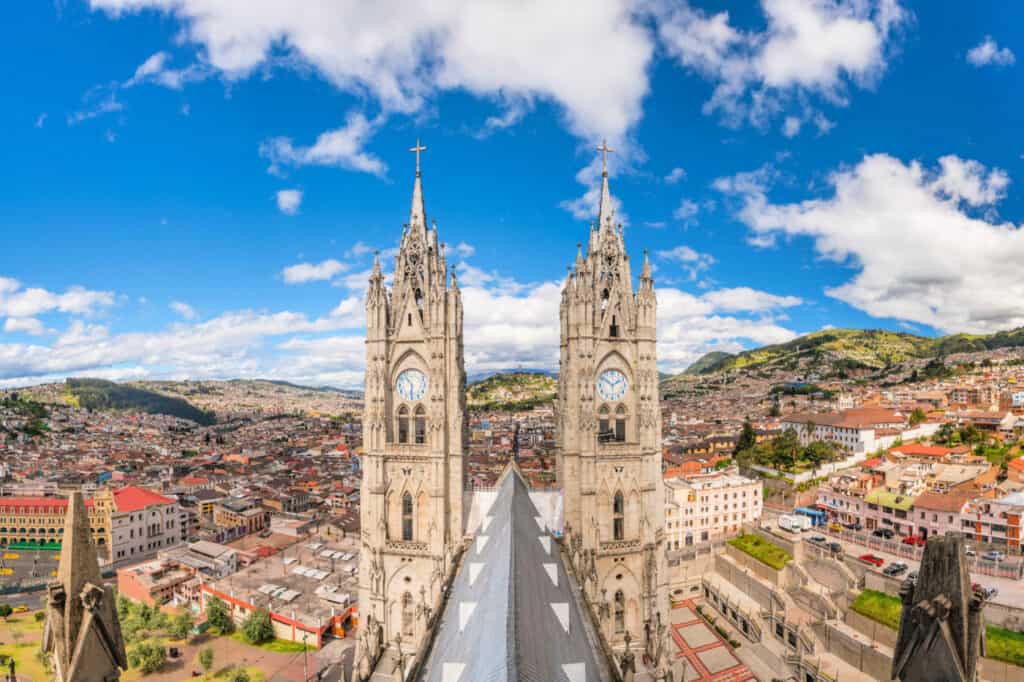
Day 2: Quito
Good morning! It’s time to take in the renowned sights of Quito’s Historic Centre, a UNESCO World Heritage Site, on this free walking tour departing from The Secret Garden hostel. This was one of my favorite walking tours I’ve taken in a long time and trust me, I’ve been on quite a few.
You will be guided through the core of this majestic city, with stops to admire iconic landmarks like Basilica del Voto Nacional and La Compania de Jesus (the largest religious edifice in all of South America) to Plaza de la Independencia.
After you have immersed yourself in the historic center, it’s time to dive deeper into Ecuadorian history and culture by heading over to Museo de la Ciudad. This museum offers free entry on Sundays from 9 AM until 3 PM – if it’s not Sunday, there is a small entrance fee. Here, one will be able to appreciate Quito’s past while getting an intimate look at Ecuadorian heritage. Some interesting interactive exhibits help to bring the past to life.
Once your day of sightseeing is complete, refuel with an array of delicious flavors available at Mercado Artesanal La Mariscal. Indulge in the local favorites, such as vibrant fruit juices and empanadas or savor a classic Ecuadorian ceviche from cafes, restaurants, or stalls scattered throughout this local market.
After indulging in some yummy market food, make your way back to the basilica. On the walking tour you only had a chance to admire its gothic exterior; now is your opportunity to explore its intricate insides! This church is considered one of South America’s most remarkable renditions of Spanish Baroque architecture.
For a truly unique dining experience, I suggest you make your way down to La Floresta for a night out! It is renowned for its hip and trendy restaurants. Personally, my go-to spot there is Cafe Mosaico which not only has an incredible atmosphere but also serves some mouthwatering dishes. Be sure to sample some of the local delicacies like cuy (guinea pig), seco de chivo (goat stew), or quinoa with shrimp.
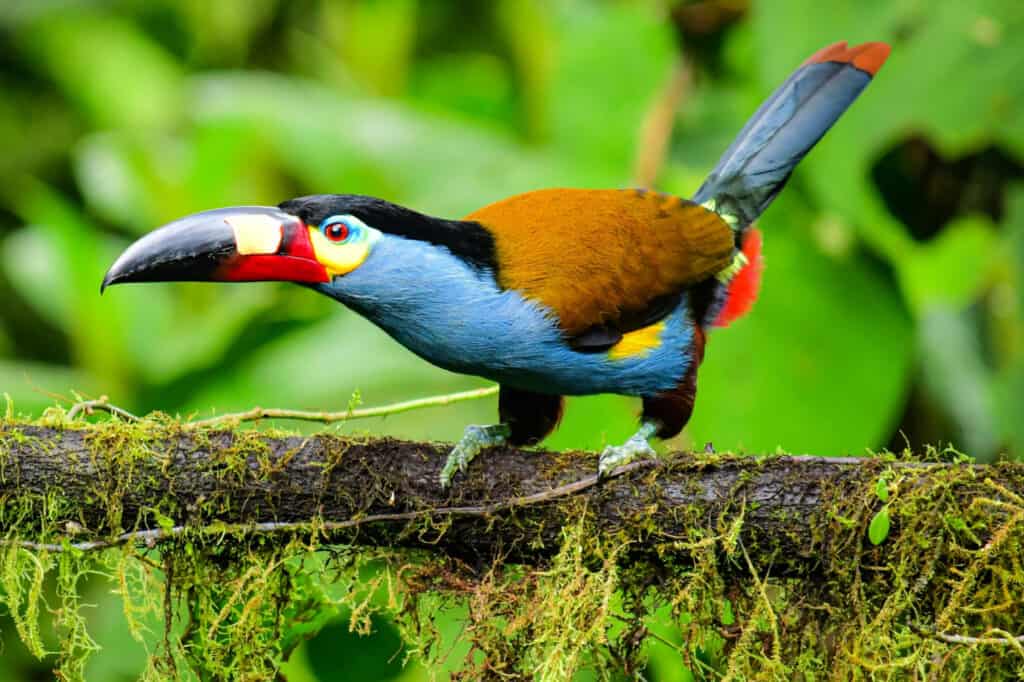
Day 3: Mindo
Rise and shine! Today you’ll be driving to the small mountain town of Mindo which is located only two and a half hours away from Quito. Because of our schedule, it makes the most sense to make this a day trip. A lot of day trips leave from Quito and will book everything for you – I took this tour and had an incredible time.
You will be immersed in a completely different environment as you enter Mindo’s cloud forests – a place full of lush vegetation and fascinating wildlife. Here, you will find several nature reserves and butterfly gardens. Mindo is a true birdwatchers’ paradise, with over 535 species of birds living in the area!
I was able to see two toucans perched in a tree, along with a host of other colorful species such as red and yellow tanagers. On our walk, we were even lucky enough to spot a sloth hanging from the branches!
In the afternoon you can take some time to explore this beautiful town – you can do it on foot or take advantage of the area’s popular cable car which takes you up and down the mountainside. This cable car gives you an amazing aerial view of Mindo, including the Cascada San Jorge waterfall.
After you’ve explored the town and its natural reserves, you can visit one of the many cacao farms in the area. A visit to a cacao farm provides you with an immersive experience, from learning about the process of making chocolate to actually tasting it! So yummy!
This was one of the best tours I took in Ecuador, so I really do recommend it! Check availability for your dates using the widget below:
End the evening by having dinner at one of Mindo’s many restaurants before heading back to Quito. Here, you can get a taste of the local cuisine – try the empanadas de viento or encebollado, a traditional seafood soup with onions and cilantro.
Where to Stay in Quito
Whether you are traveling solo or with a group, I highly recommend The Secret Garden Hostel in Quito . This hostel is located in a quiet area close to the historic city center, providing plenty of amenities and comfort. Plus it’s conveniently located near restaurants, cafes, and bars – making it easy to explore the city.
They have one of the best rooftops and breakfasts in town, making this a great place to call home during your stay in Quito.
The Secret Garden Hostel also offers private rooms as well as dorms, so you can choose which one is best for you. The staff is friendly and accommodating and the hostel has a great selection of activities at their onsite travel agency.
Plus, our next destination is at their sister hostel in Cotopaxi.
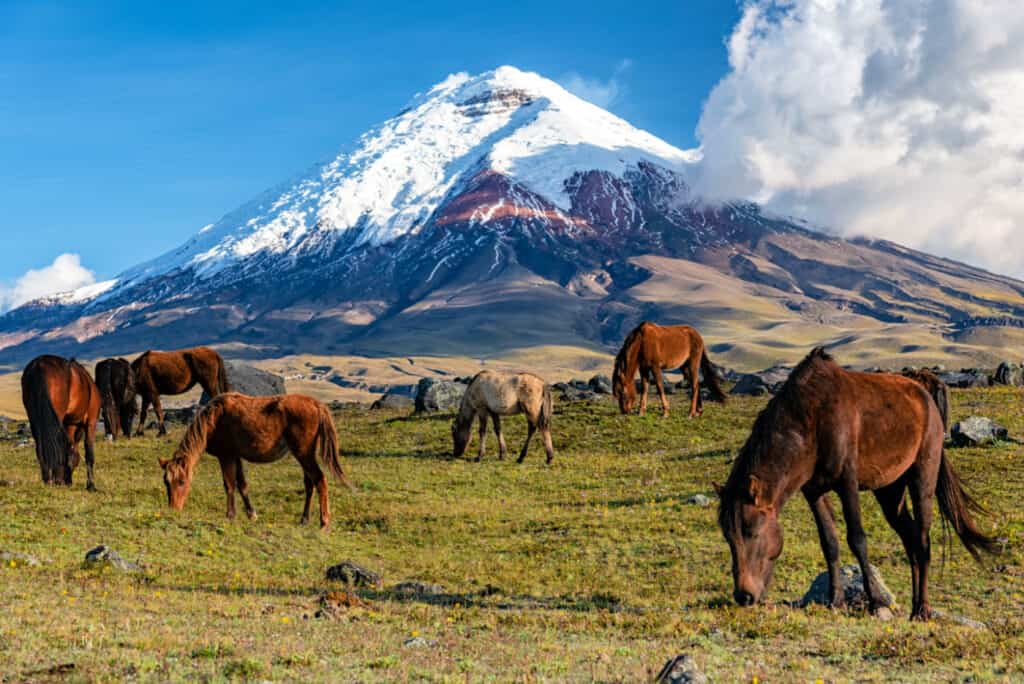
Day 4-6: Cotopaxi
Wake up and enjoy some breakfast on the Secret Garden hostel’s beautiful rooftop before heading out to Cotopaxi National Park.
The van will pick you and whoever else is going up from the hostel making it an easy breezy beautiful experience. The National Park is about a two-hour drive from Quito, so it’s a great way to break up the travel.
The Secret Garden Hostel is the only place to stay inside the National Park. There are multiple different accommodation styles ranging from luxury suites to hobbit houses, and they all provide the same incredible views of the Cotopaxi Volcano.
Cotopaxi is a hiker’s paradise! With glacier-capped volcanoes, mountain lakes, rugged trails, and diverse wildlife – you’ll be completely blown away by its beauty. It’s one of the few places in Ecuador where you can find wild horses, llamas, and other animals.
When you arrive on day one you will enjoy a guided hike to one of the many nearby waterfalls. Followed by dinner and drinks with everyone else staying there. This is such a beautiful hostel to stay out with hammocks overlooking the park, a Jacuzzi, and lots of furry friends around.
Because it’s in the national park there is ZERO cell reception, so it’s a great way to disconnect and take in the beauty of your natural surroundings. Some of the people I went with became my best travel buds for the rest of Ecuador.
Cotopaxi is one of the best places to observe stars, so make sure you head out for an evening walk with your friends or alone and enjoy the night sky. I made sure to grab a glass of wine and spend some time on the biggest hammock outside. It can get cold so bundle up!
On day two you will join another guided hike that takes you to the top of a mountain to get a 360 view of the whole park, as well as the Cotopaxi Volcano. It takes about 4-5 hours total and is a great way to work up an appetite for lunch.
You’ll have the rest of the day to explore, take a nap, read a book, or just enjoy the company of everyone else staying there. It was really something special to get away from the hustle and bustle of Quito and just relax in such an incredible setting.
On the final day in Cotopaxi, you will ascend to the actual volcano and be able to touch the glacier, but this part of the tour is optional and only available if you are fit enough. It’s a rather tough hike and the altitude can be hard to manage for some people. So make sure you know your body and its limits before attempting this one!
You’ll arrive back at the hostel for a quick lunch before heading off on the van to Banos. It’s about a 4 to 5-hour drive, so make sure you grab some snacks and drinks on the way. The journey is extremely beautiful as you watch the scenery out the window. I’m talking about some of the most beautiful mountains I’ve ever seen.
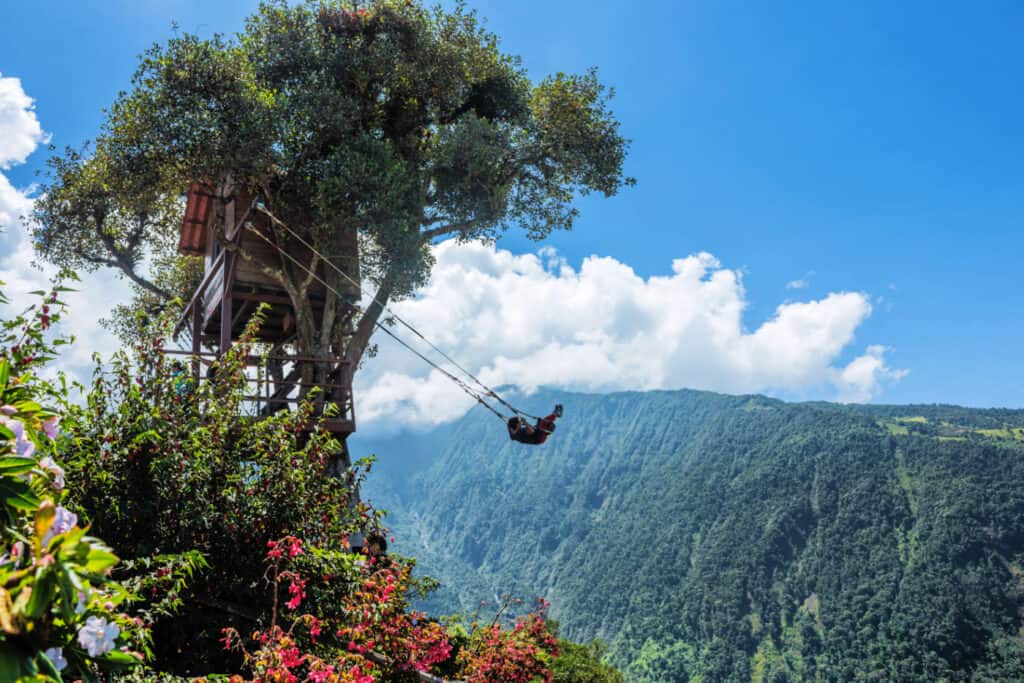
Day 7: Banos
Ahhhh Banos. You’ll fall in love with this small mountain town the minute you arrive!
Banos is known as “the adventure capital” of Ecuador and it has become an increasingly popular destination for young travelers who want to experience all the outdoor activities it has to offer. From white water rafting, canyoning, and mountain biking to paragliding, bungee jumping and trekking – you’ll definitely find something that suits your outdoor spirit.
I highly recommend spending your first morning doing a self-led bike tour of seven different waterfalls. You will be blown away by the beauty of this place, and the bike ride is a great way to take it all in. You’ll pass quite a bit of other travelers and locals, so if you’re feeling up for it join them and make some new friends along the way.
It’s about a 20 km ride, and “mostly” downhill, or at least that’s what everyone says; to me, it wasn’t “mostly” downhill, but it was still fun! You’ll see five different waterfalls and two natural swimming pools, so make sure you bring your swimsuit and towel!
You can grab a menu del dia lunch at one of the local eateries to enjoy while taking in more views of the area. After lunch, make your way back into town. They have trucks driving up and down the highway for you to chuck your bike in and hop in the back so you won’t have to bike back up the “mostly” downhill road.
One of the best things about Banos is the thermal baths! These hot springs are located in a natural swimming hole just outside of town and it’s an absolute must-do for anyone visiting. It’s a great way to relax after more intense activities while taking in the stunning views of the nearby mountains.
Banos is also known for its nightlife, with plenty of bars and clubs scattered throughout the town. On a warm evening, they have some nice outdoor bars with live music, rooftop views, and great drinks!
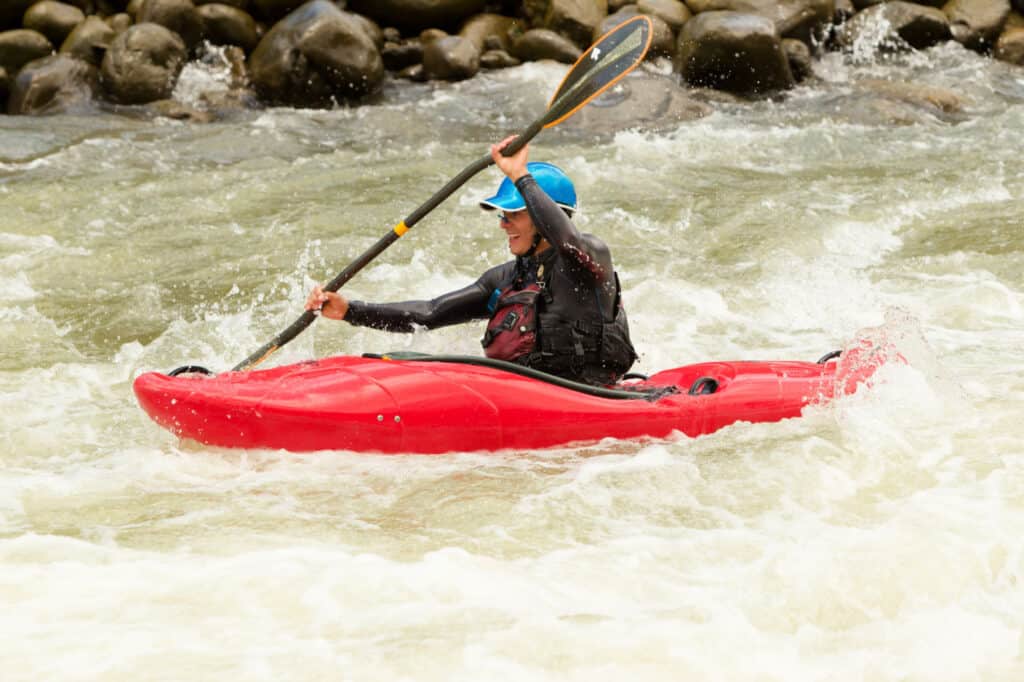
Day 8: Banos
Grab your swimsuit because we are going white water rafting! It’s a great way to not only experience the area but also get a good adrenaline rush. You’ll be accompanied by an experienced guide and the rapids are suitable for people of all levels.
The waters are cold but you’ll have wetsuits and other safety equipment to keep you warm. It’s about a three-hour tour, so make sure you bring plenty of water and snacks as well. I recommend going on the morning tour because lunch is included!
I promise you’ll have a blast! After your adventure is done, you can head back into town and spend the day exploring some of the local markets and shops or lounging around with new friends.
It gets dark pretty early here, but things stay open late so you can still enjoy the nightlife and explore the town. On your last day, you’ll have time to pack up and get ready for your next destination – Cuenca!
You’ll take a bus from Banos to Cuenca which is about a six-hour ride, but again, it’s absolutely beautiful out the window. You’ll be able to see a lot of small towns, farms, and some of the biggest lakes in Ecuador on the way!
By the time you arrive in Cuenca, you’re sure to have fallen in love with Ecuador but if not, then this is sure to do it!
Where to Stay
There are a lot of options when it comes to hotels in Banos. From luxury boutique hotels to more affordable hostels, you’ll find something that fits your budget and needs. But I can’t stress enough how important I think it is to stay near the city center; it’s just so much easier to explore the area from there.
So, with that said – I recommend staying at Casa Del Balcon for your stay in Banos. It’s a great price and has all the amenities you need when traveling on vacation. Plus, the staff is extremely friendly and helpful – they’ll help you arrange your activities, answer any questions you have, and make sure you’re comfortable during your stay.
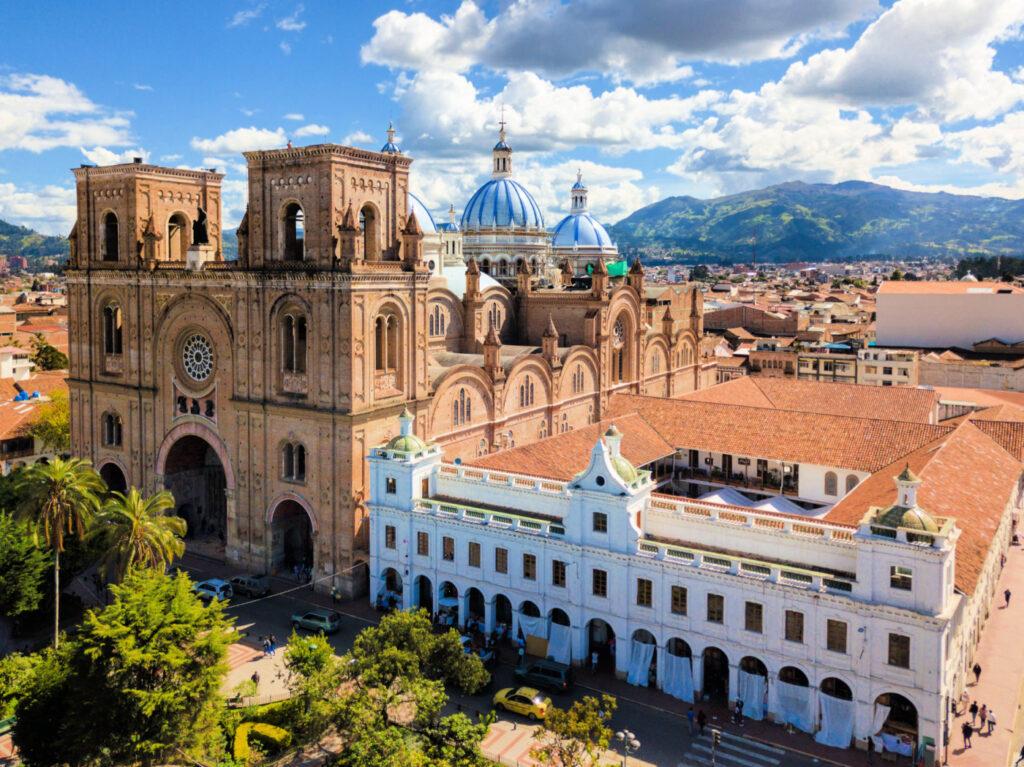
Day 9: Cuenca
Welcome to Cuenca! This colonial city is nestled in the Andes Mountains and it’s incredibly beautiful.
Your first stop should be Catedral de la Inmaculada Concepción, a stunning Catholic church right in the center of the city. It’s worth a visit even if you don’t consider yourself a religious person.
From there, you’ll want to explore the cobblestone streets of El Centro and take in all the sights – from brightly colored buildings to unique street art. Head out for lunch at the local Mercado 9 de Octubre and enjoy some traditional local cuisine.
The empanadas and tamales de queso are my favorite, but you really can’t go wrong with anything. You’ll have some free time for the rest of the day to explore the city on your own; don’t forget to make a stop at Parque Calderon and pick up some traditional Panama hats! I know I know, everyone thinks they come from Panama, but they actually come from Ecuador.
Then on your way home stop at the flower market, it’s one of the biggest in South America and you will be surrounded by bouquets of colorful flowers, you can also grab some fresh fruit for around only $1 per kg. So good!
At night, the city comes alive with plenty of restaurants and bars to explore. The locals are friendly and always up for a chat if you need someone to show you around and you will see a booze bus making the rounds that you can jump on and have a drink with locals.
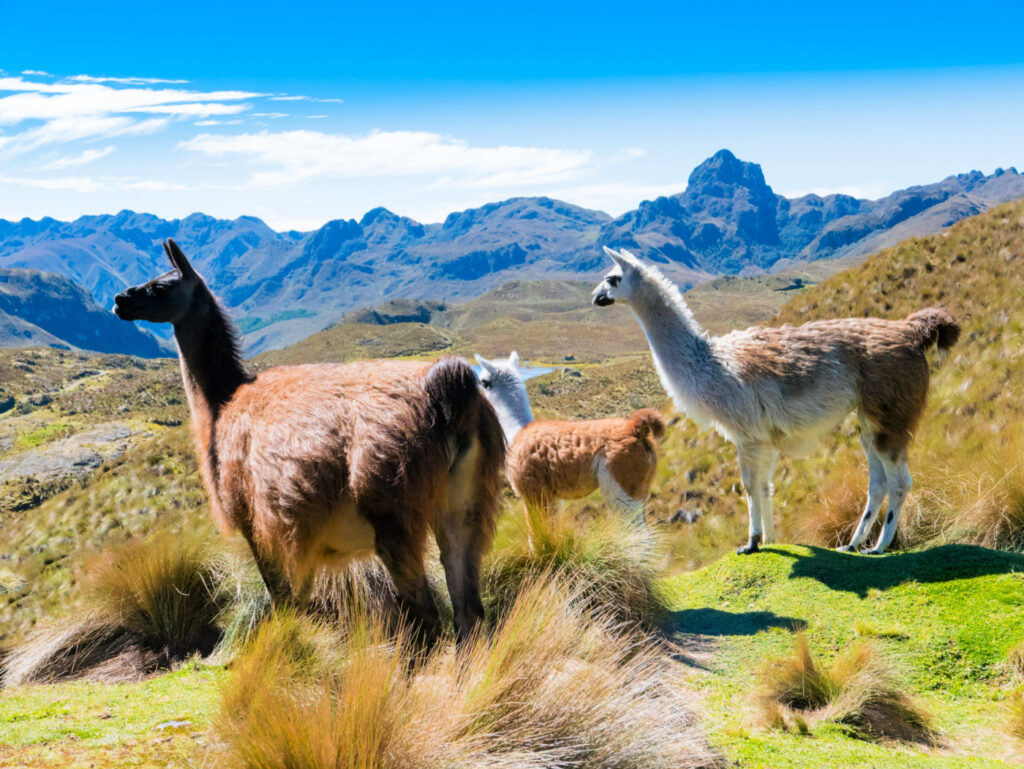
Day 10: Cuenca
Wake up early and head to the nearby national park, Cajas National Park. This stunning park is full of hiking trails, lagoons, and even hot springs! Depending on how much time you have, make sure to pick a trail that works best for you — or a take this tour to optimise the time you have in the park. Either way, it’s a great way to get away from the hustle and bustle of the city.
If you’re lucky, you’ll spot some of the local wildlife like Andean Condors and Spectacled Bears! Don’t forget to bring sunscreen and a hat – it can get pretty hot in there. Check availability for Cajas National Park tours below:
After your hike, make sure to grab lunch at one of Cuenca’s restaurants; my favorite is El Ingenio which serves up delicious Ecuadorian cuisine. The staff here is incredibly friendly and always up for a chat, so don’t hesitate to ask them any questions about the city.
In the afternoon, head over to El Barranco and take in some of the amazing views of Cuenca from above! You can even take a cable car ride to get a higher perspective of the city.
Get a good night’s rest tonight as your last long journey is ahead of you in the morning!
The perfect place to stay in Cuenca is Guillerminas . It’s a beautiful boutique hotel situated right in El Centro, so you’re never too far from all the sights and attractions. Plus, the staff here is incredibly friendly and helpful.
I stayed here and to this day it is one of the best South American hotel experiences I’ve had. Their breakfast everyone is amazing, you would think you were at a five-star resort.
So if you’re looking for a cozy, unique place to stay in Cuenca, Guillerminas is definitely the right choice. Click here to check prices .
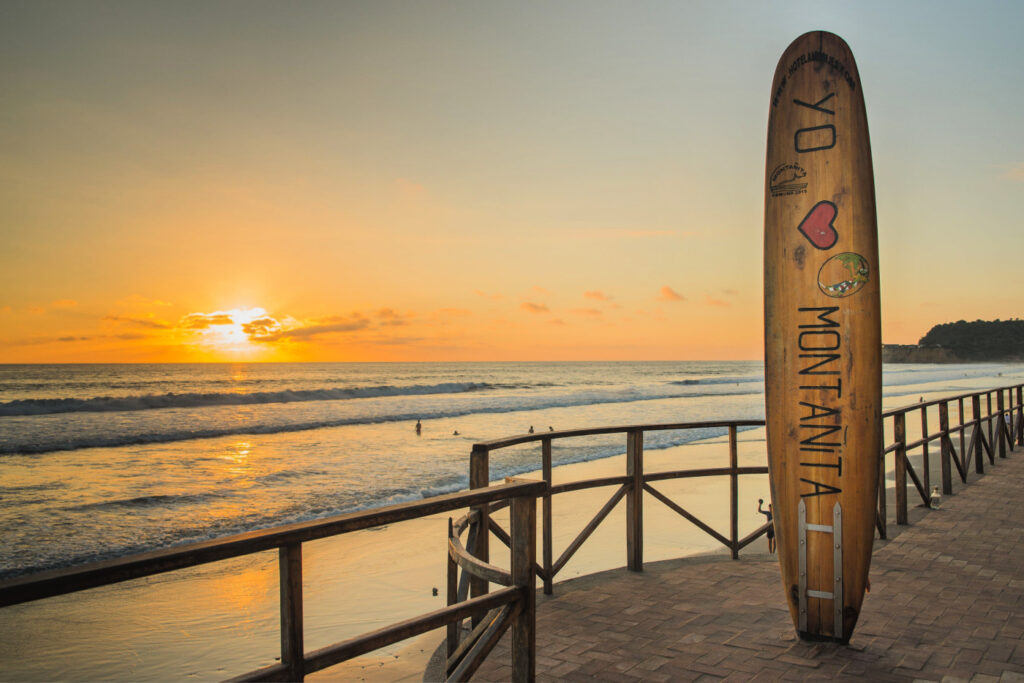
Day 11: Travel to Montanita
Wake up early and make your way to Montanita, Ecuador’s coastal town! This small beach town has become a bit of a tourist hotspot in recent years but still retains its laid-back appeal.
The journey can be a long one but if you want some sun, sand, and surf in your life, you gotta make it. You’ll catch the bus from Cuenca to Guayaquil which can last anywhere from four to seven hours. Yeah, not the best timetable.
You will then catch another bus from Guayaquil to Montanita, which is about two and a half hours but the bus will drive through some stunning coastal scenery and you’ll be able to take in some of Ecuador’s wildlife. Make sure to pack plenty of snacks and water for the journey.
It may sound like a lot of moving pieces, but it’s really pretty easy.
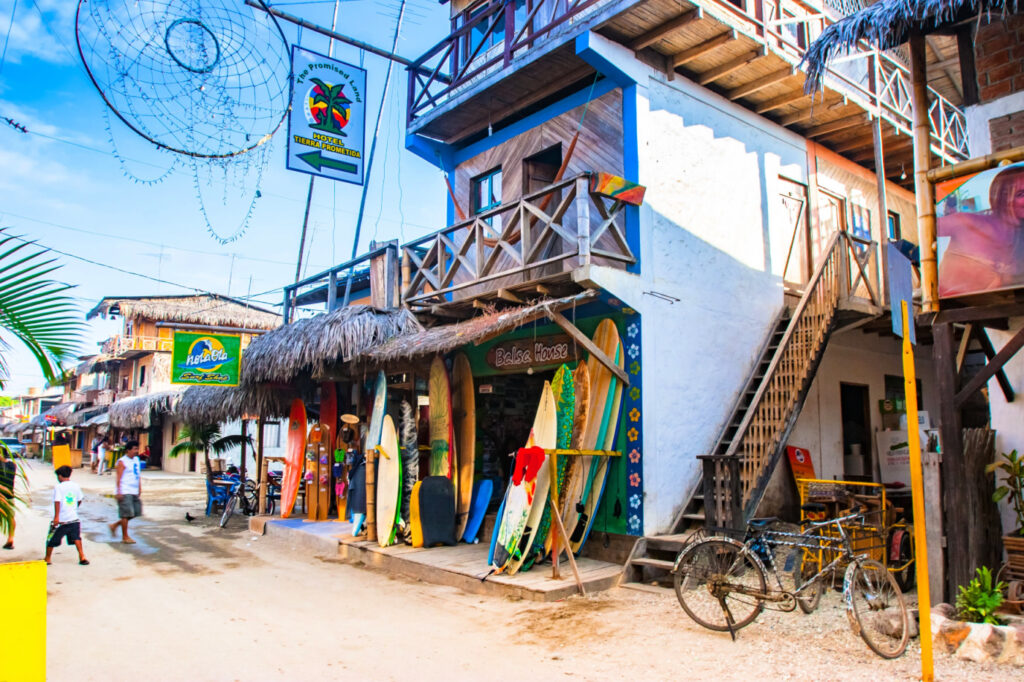
Day 12-13: Montanita
Once you arrive in Montanita, you’ll realize how worth it the journey was. This beachfront paradise is full of long beaches, colorful sunsets, and plenty of water sports to help keep you entertained.
Spend your days lounging on the beach or taking part in some exciting activities like kite surfing, paddle boarding, or some games of beach volleyball. If you enjoy surfing, you’ll be happy to know that there are some great beginner-friendly waves here.
You can take a lesson or two to get you started and they offer rentals if you don’t have your own board.
Montanita is also full of fun, it’s where a lot of Ecuadorians come to party on the weekends. I’m not kidding, they have all-you-can-drink bars for $6… It’s a crazy scene, but one you won’t forget… or maybe even remember. Start the evening at cocktail alley, where you can experiment with all kinds of delicious concoctions, and then hit the dance floor at one of the local clubs.
The whole town seems to eat, surf, party, sleep, and then start all over again the next day. It’s a great way to end your adventurous holiday in Ecuador!
Casa Del Sol brings Montanita to life, you will have access to yoga classes every morning, free breakfast and you can even take a surf class. The staff here is incredibly friendly and they will be more than happy to help you with anything you need.
The rooms are also top-notch, so you can rest assured that your stay will be comfortable and relaxing. It’s a little bit down the beach away from the heart of the town, but at night time when the parties are raging until 6 AM, you’ll be thankful.
It’s a little slice of paradise. Click here to check prices .
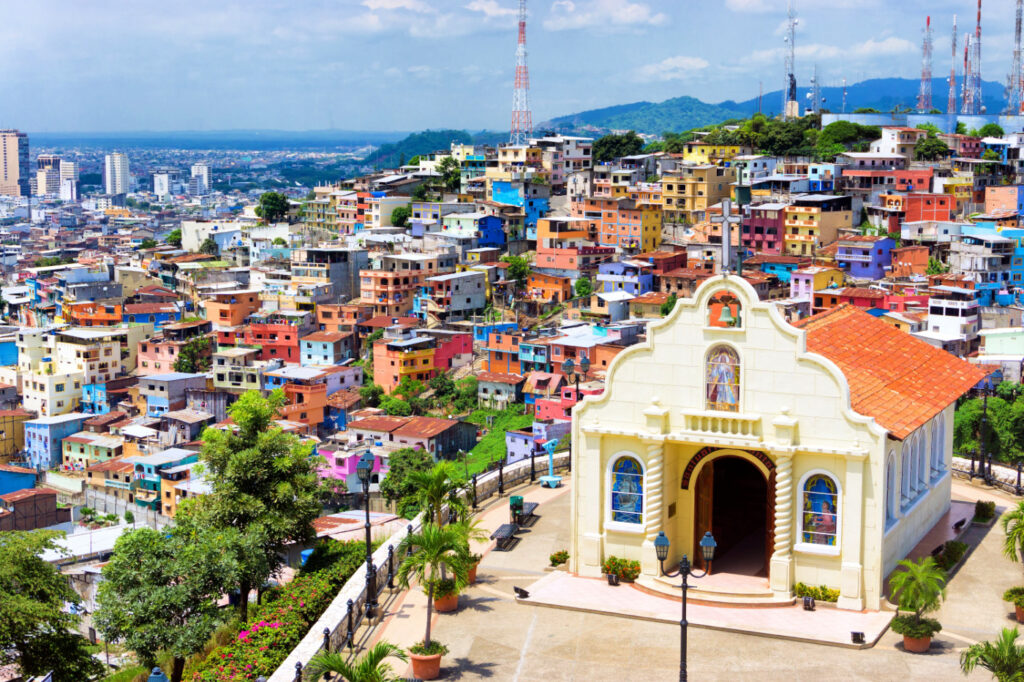
Day 14: Head to Guayaquil and fly home
Unfortunately, your time in Ecuador has come to an end but oh how fun it was! You’ll grab the bus from Montanita and make your way to Guayaquil, where you’ll fly back home.
Sadly, I don’t recommend spending any time in Guayaquil, it’s become pretty dangerous in recent years, so make sure to get to the airport as quickly as possible.
Guayaquil is a great airport to fly out of whether you’re heading to the Galapagos Islands, the US, Europe, or South America as it has direct flights to many major cities around the world.
How useful was this post?
Click on a star to rate it!
Average rating 5 / 5. Vote count: 1
No votes so far! Be the first to rate this post.
Thanks so much!
You can follow along on my travels through my social media accounts below
Sorry you didn't find this article useful!
Help me improve it by leaving your comments below
All feedback is anonymous and emailed directly to me. If there's anything I can do to improve the quality of this article, please do let me know and I'll make the suggested changes within 24 hours
Lauren Juliff
Lauren Juliff is a published author and travel expert who founded Never Ending Footsteps in 2011. She has spent over 12 years travelling the world, sharing in-depth advice from more than 100 countries across six continents. Lauren's travel advice has been featured in publications like the BBC, Wall Street Journal, USA Today, and Cosmopolitan, and her work is read by 200,000 readers each month. Her travel memoir can be found in bookstores across the planet.
Related Posts
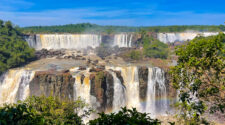
The Ultimate Guide to Iguazu Falls: Argentina and Brazil

How to Spend One Week in Mauritius: An Itinerary for First-Time Visitors
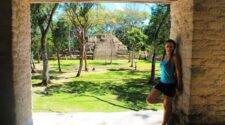
How to Spend Two Weeks in Belize: An Itinerary for First-time Visitors

How to Spend Three Magnificent Days in Tbilisi, Georgia: A 2023 Itinerary
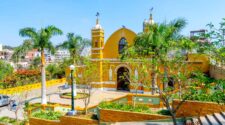
23 Fantastic Things to Do in Lima, Peru

How to Spend Three Perfect Days in Delhi: An In-Depth Itinerary
Leave a reply cancel reply.
Your email address will not be published. Required fields are marked *
Meet Lauren Juliff

10 Days In Ecuador: Route, Itinerary & Tips (2023)
Some links in this post contain affiliate links. I receive a small commission if you use the links at no extra cost to you! Happy reading 😀
Need some help planning 10 days in Ecuador? You’re in the right place! I know how overwhelming planning trips to countries you’ve never been to can be, so I’ve put together the *perfect* route for 10 days in Ecuador.
Whilst some destinations in Ecuador are cheaper than others (cough cough, the Galapagos), Ecuador is one of the ‘cheaper’ countries to travel to in South America and is perfect for first-time backpackers and travellers.
Whether you’re visiting Ecuador on a shoestring budget or as a luxury traveller, it’s an amazing country to visit. With incredible and diverse landscapes, you can go from seeing some of the best wildlife in the world on the Galapagos to exploring the depths of the Amazon Rainforest in a matter of days.
So, where do you start when planning an epic 10-day trip in Ecuador? In the following post, I explain everything you need to know, including where to go, how to get around, what to see and do and where to stay. So, let’s get started and plan the perfect 10 days in Ecuador!
Still got a question about planning 10 days in Ecuador? Let me know over on Instagram or shoot me an email at jennie(@)jenniewanders.com!
🇪🇨 Other Ecuador posts:
- Amazon Tours Ecuador: BEST Cuyabeno Trip From Quito
- Ecuador Itinerary 3 Weeks: FULL Route + Guide
- Quito To Mindo: BEST And Easiest Routes
- What To Wear In The Amazon Rainforest (That Isn’t Ugly)
Want to see epic photos and videos from these experiences?
Follow me on Instagram! As we travel, I post everything live on Instagram, so check out my recent highlights and posts. If you can’t find what you’re looking for, drop me a DM!
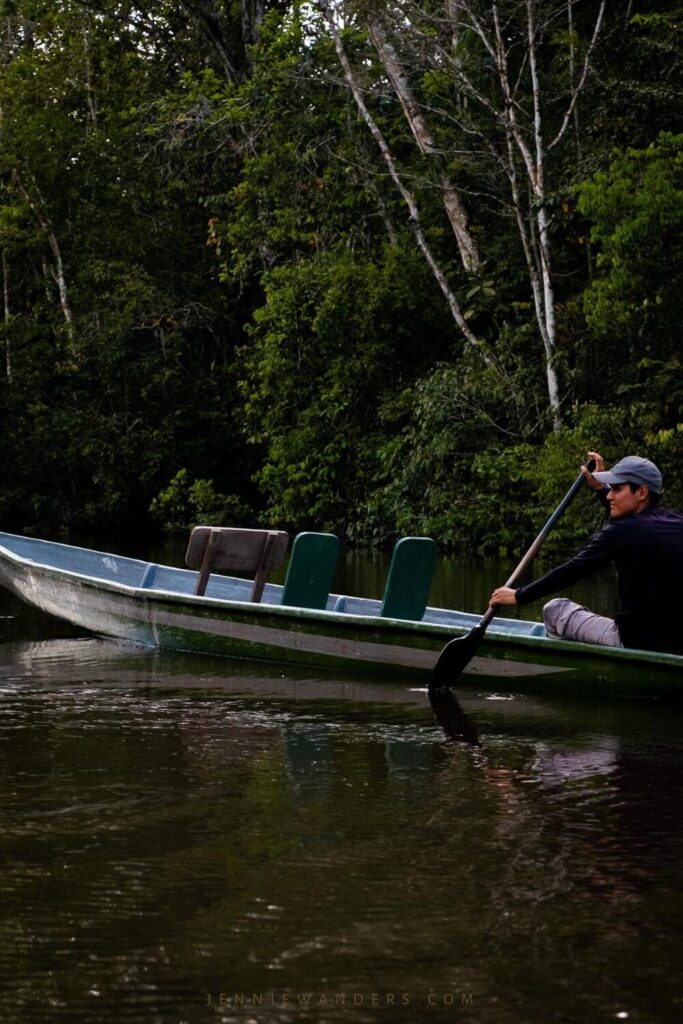
10 Days In Ecuador: A Summary
Below I have created two separate ten-day itineraries for Ecuador. Why? Because one includes the Galapagos, and one doesn’t. The Galapagos is a big expense, and if you’re travelling on a shoestring budget, it just might not be possible.
A trip to the Galapagos also takes up a lot of your time. Most travellers visit the Galapagos for at least 5-9 days, so on a ten-day itinerary, it can get a little tight!
So you have two options; one route with the Amazon Rainforest and some of Ecuador’s most iconic locations, and route two, one that has few places, but includes the incredible Galapagos.
Use these 10-day routes and itineraries for Ecuador as you will – change them around, rearrange them and make them fit your wants and needs!
Related posts: What To Pack For Ecuador: All-Year Round Guide | Ecuador Itinerary 3 Weeks: FULL Route + Guide | 2 Weeks In Ecuador: Routes, Itineraries & Guides!
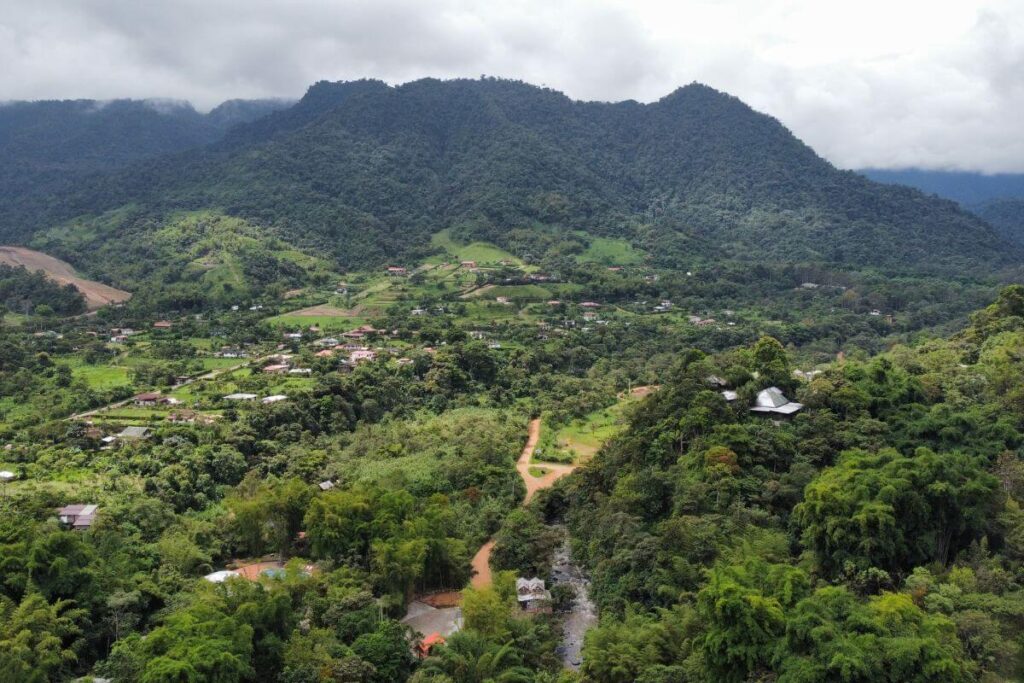
10 Days In Ecuador: The Routes
It’s important to bear in mind that ten days is not a long time in Ecuador. Yes, you can have a great trip, but you will need to miss out on some of the major sites.
For example, it would be pretty tough to fit both the Amazon Rainforest AND the Galapagos Islands into a ten-day trip. That’s why I’ve created two different itineraries for you below, one with the Galapagos Islands included, and one without.
Oh, and if you’re on a tight budget, I recommend the one without the Galapagos. Unfortunately, it’s not a budget destination (it can be done but with meticulous planning!)
For advice on how to get around the country, skip to the section ‘getting around Ecuador’. Planning a trip has never been easier, right?!
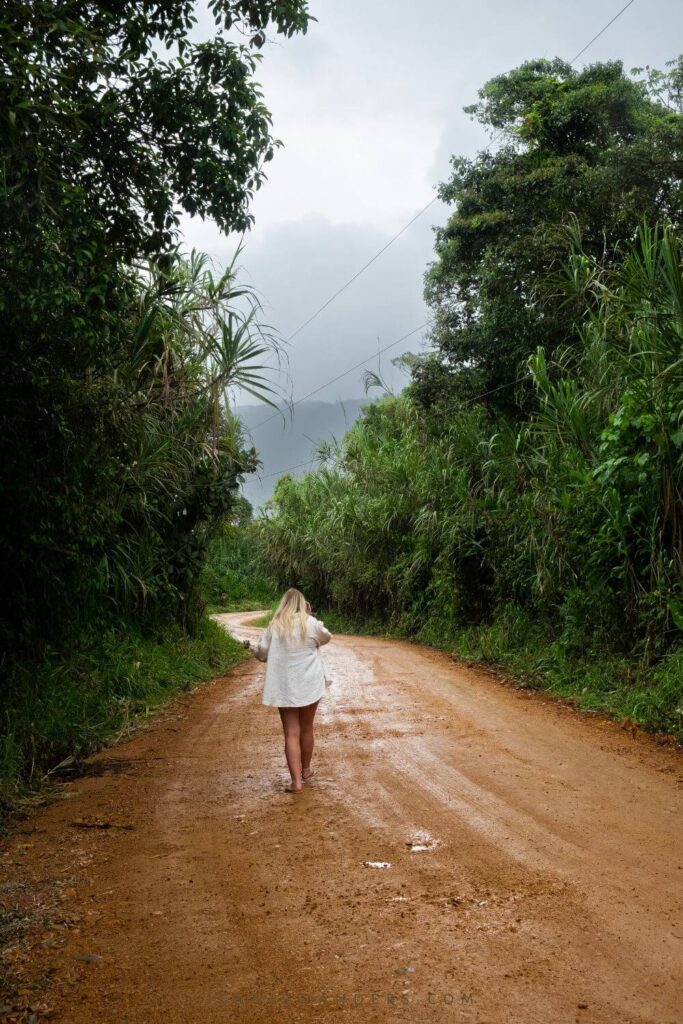
Route 1: Adventure Seeking in Ecuador
🗺️ Arrive in Quito > Amazon Rainforest > Cotopaxi > Banos > Onward travel.
Night 1: Arrive in Quito. Stay at Community Hostel to prep for your Amazon Rainforest tour starting the next day. If you arrive early enough, take a free walking tour or visit the equator line. Both can be organised with Community Hostel.
Night 2, 3, 4, 5: Amazon Rainforest tour with Community Adventures . Travel deep into the Cuyabeno Wildlife Reserve and have a bucket list adventure of a lifetime!
Night 6: You’ll arrive back in Quito quite late (midnight/1 am), so book another night at Community Hostel to rest and reset. You’ll be heading off to Cotopaxi, the iconic active volcano tomorrow!
Night 7, 8: Leave Quito early to head for Cotopaxi . One of the most beautiful sights in Ecuador, this one isn’t to be skipped unless you really have to! Short on time? You can even do a day trip to Cotopaxi from Quito!
Night 9, 10: Your final couple of days will be in the adventure capital of the country; Banos! Get ready for waterfall hikes, ziplining, white water rafting and incredible scenery. When you’re finished, either travel back to Quito for your international flight (exact route and ways here ) or head to your next destination.
Need help getting around Ecuador? I have in-depth guides on how to travel from Quito to Cotopaxi , Banos to Guayaquil and Banos to Cuenca . Check them out!
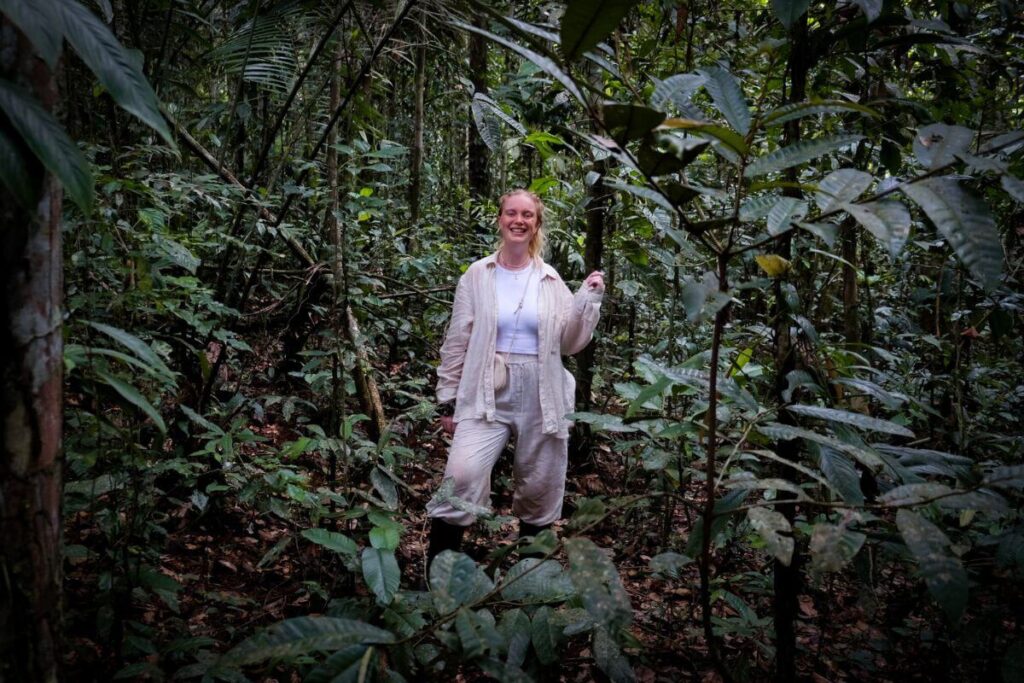
Route 2: Galapagos and beyond
🗺️ Arrive in Quito > Mindo > Galapagos Islands .
Night 1: Arrive in Quito and spend some time exploring. I recommend taking a free walking tour, heading to the historic centre and taking a trip to the ‘Middle of the World’ equator line.
Nights 2, 3: Take the short 2-hour trip to the beautiful Mindo Valley. Located in a cloud forest, it’s one of the most stunning locations in Ecuador.
Nights 4, 5, 6, 7, 8, 9, 10: Travel back to Quito and fly to the Galapagos Islands. You can fly to the Galapagos from either Quito or Guayaquil, so if you’d prefer to explore Guayaquil, you can change your itinerary to go there first instead.
The Galapagos Islands can be explored for any length of time, but the recommended amount is at least five days. Most backpackers and travellers spend 9-15 days on the islands, as there is just so much to see and do.
Want everything sorted and planned for you? Take a look at this five day Galapagos trip from Quito!
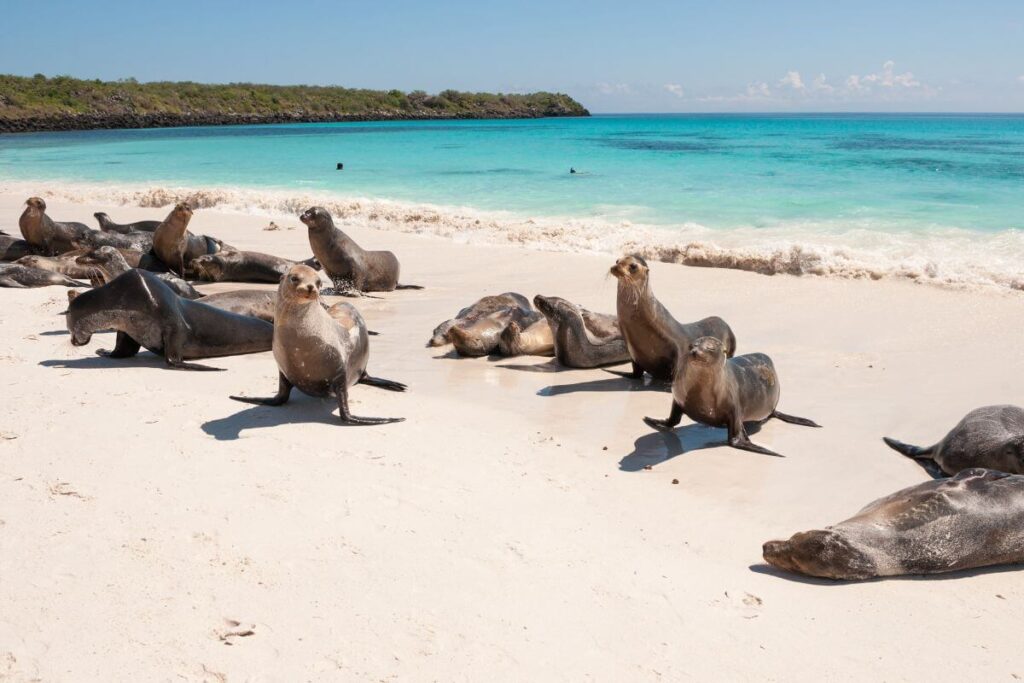
Best locations to visit for your 10 days in Ecuador
Quito is the capital of Ecuador, and you are likely to start your trip here. It often gets quite a bad rep, but it isn’t even nearly as bad as the media portrays it. In fact, we found the locals to be some of the kindest we met in South America!
Whilst in Quito, you can take a free walking tour with Community Hostel , or visit the ‘ Middle of the World ‘, a monument that sits directly on the Equator. You’ll also get a certificate to prove you’ve been there!
Sadly, we were told – even by locals themselves – to not walk around Quito at night. Quito at night is exceptionally quiet, and we didn’t even want to walk around after sundown. For safety reasons, we recommend only walking around at night in Quito if it is absolutely necessary.
🦉TOP TIP: If you’re travelling from Colombia, it’s recommended to book flights (rather than taking the bus) to Ecuador. We don’t recommend getting the bus across the border for both safety and comfort reasons.
Where to stay in Quito
Some of the best accommodations in Quito include:
- Community Hostel (city centre): the perfect social hostel for the Amazon Rainforest tour!
- Viajero Hostel (city centre): a beautiful hostel that includes free breakfast!
- Secret Garden : (city centre): around a 15-minute walk to the main square
- Hotel Stubel Suites & Cafe (La Floresta): a hotel with offers stunning views of the Guápulo Valley.
- NH Collection Quito Royal (La Floresta): a more luxurious stay with a health club, free WiFi and free breakfast.
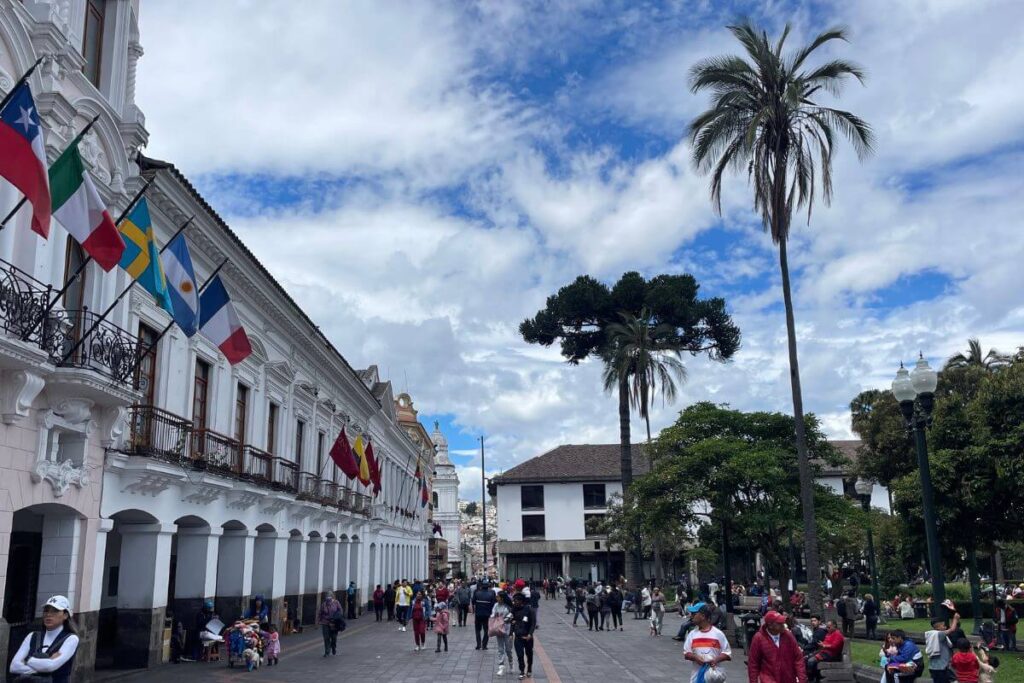
The Amazon Rainforest
If you’ve seen any of my other Ecuador posts, you’ll know how much of a fan I am of the Amazon Rainforest. If you’re in the country, you do not want to miss out on a chance to explore the biggest rainforest in the world!
Our Amazon tour with Community Hostel was perfect; from start to finish . From spotting wildlife in the trees, standing 3m from a wild caiman, watching pink river dolphins swim whilst we ate breakfast, taking canoe rides to watch the blood-orange sunset and swimming in giant lagoons, it was truly the best few days of our lives.
For more information about how to book a Cuyabeno tour, check out my in-depth and detailed Amazon Rainforest guide here!
Related post: What To Wear In The Amazon Rainforest (That Isn’t Ugly)
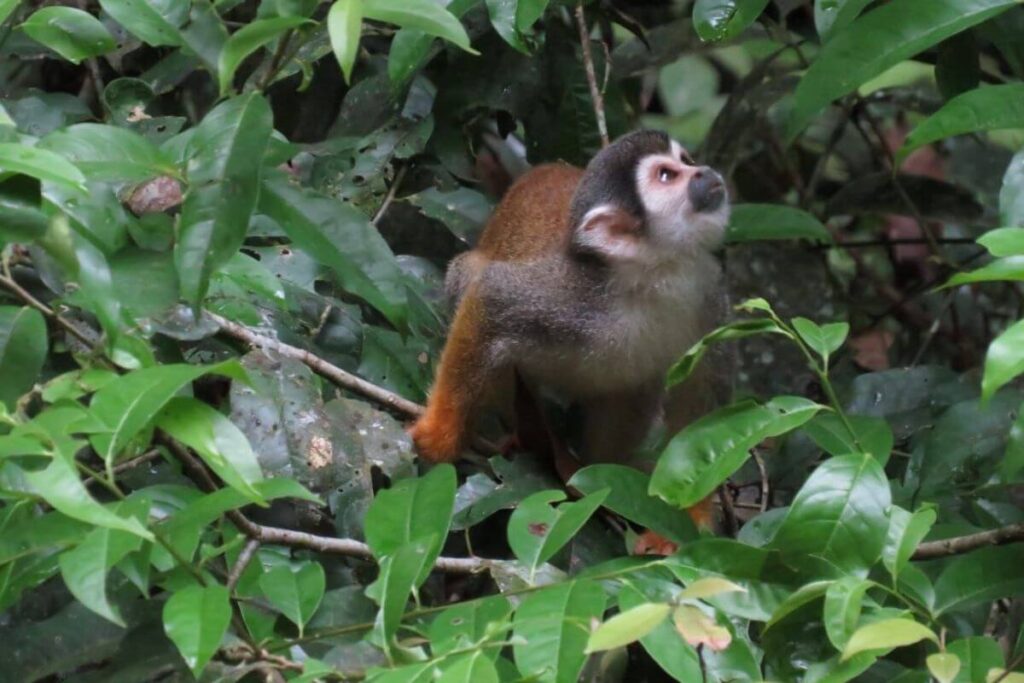
Cotopaxi is one of the most iconic and well-known sights in Ecuador. It’s worth visiting for at least a day (you can do day trips from Quito ), or for at least one night if you’d like to hike or climb the volcano.
Even if you don’t want to hike Cotopaxi it’s worth the visit. The pure magnitude of how big the snow-capped volcano is is breathtaking, and is one of the most beautiful sights in South America!
Related posts: Qutio to Cotopaxi
Where to stay in Cotopaxi
If you’re visiting Cotopaxi for the first time, I recommend the following accommodations:
- Secret Garden Cotopaxi (book via Secret Garden Quito ): perfect for backpackers, couples, solo travellers and those wanting a once-in-a-lifetime trip in Cotopaxi.
- Tambopaxi Lodge : a remote lodge in the Cotopaxi National Park. Perfect for those who want to escape the real world, hunker down in front of a fire and be surrounded by incredible landscapes.
- Cuscungo Cotopaxi Hostel & Lodge : perfect for all ages, another traditional and beautiful wood cabin in the middle of Cotopaxi.
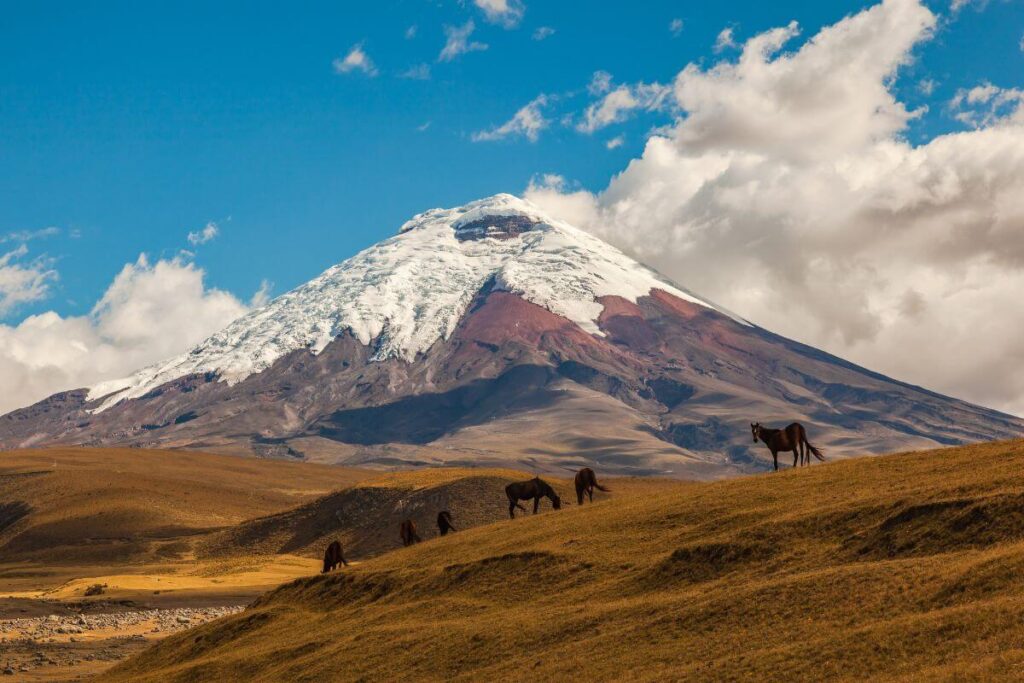
Mindo is nestled in a cloud forest in Ecuador. It quickly became one of my favourite places in the country when we visited, and I truly couldn’t fault it. With a perfect balance between adventure and relaxation, it’s the perfect spot for a couple of nights during your ten day trip.
With over 500 species of birds, Mindo is a popular birdwatching spot, so you can book an early morning tour and enjoy the scenery. Or, if you prefer something a little faster, you can hike through the forest, explore the stunning waterfalls, and zipline through the treetops!
Related posts: Quito To Mindo: BEST And Easiest Routes
Where to stay in Mindo
- Saguamby Mindo Lodge : my top choice for couples or groups in Mindo! It may be a little quiet if you’re a solo traveller, but if you don’t mind having a relaxing few days by yourself, this hotel is perfect.
- Terrabambu Lodge : another tranquil and peaceful lodge in the rainforest.
- Cinnamon House : for solo travellers or couples wanting a hostel in Mindo.
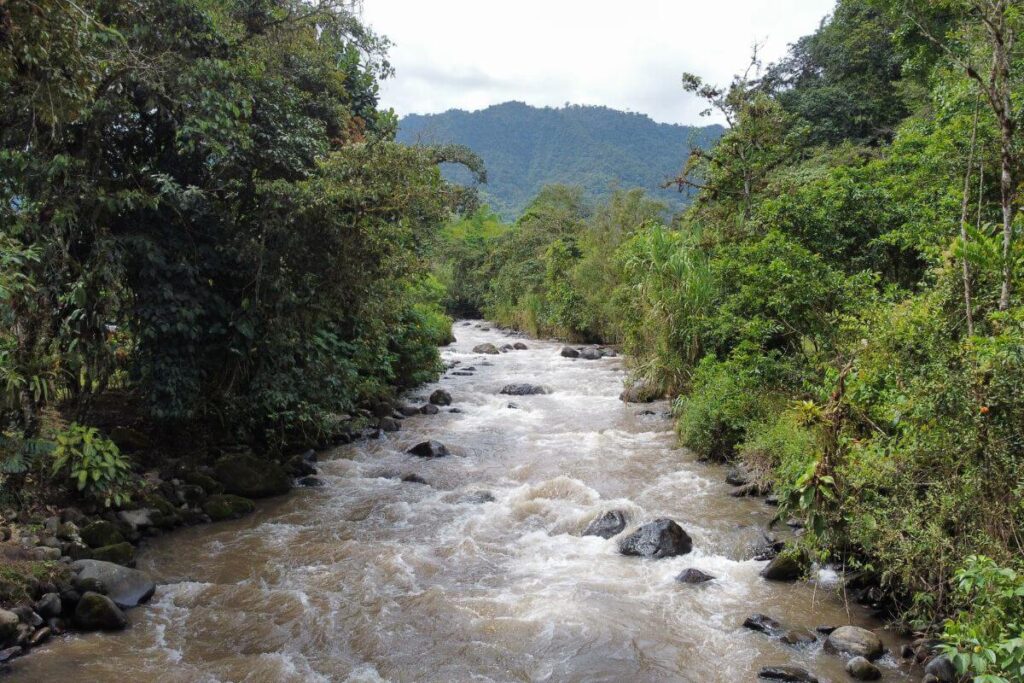
From epic white water rafting and heart-pounding canyoning to ziplining over jaw-dropping waterfalls and cycling through the beautiful rainforest, Banos has it all for those seeking an adrenaline rush.
But Banos is also a small town that offers a charming vibe with cozy restaurants serving up delicious local cuisine. Don’t miss the chance to take cooking classes and unwind in the hot springs.
If it’s your first visit, I’d recommend staying in Banos for two to three nights.
Related posts: Banos to Guayaquil: Routes + Guide | How to get from Banos to Cuenca | Quito To Banos: FULL Guide + Route
Where to stay in Banos
Some of the best accommodations in Banos include:
- Mama Tungu Hostel : the perfect hostel in Banos for solo travellers, digital nomads and couples. Well-located, great facilities and comfy rooms!
- Erupcion Art Hotel & Hostel: the best social hostel with a rooftop in Banos!
- Papacho’s Hostel : another great hostel in Banos for solo travellers and couples wanting to be in the middle of all of the action.
- La Posada del Arte : A great hotel in Banos for couples or those who don’t want to stay in a hostel.
- Aldea Real Eco-Friendly : An amazing eco-friendly hostel in Banos.
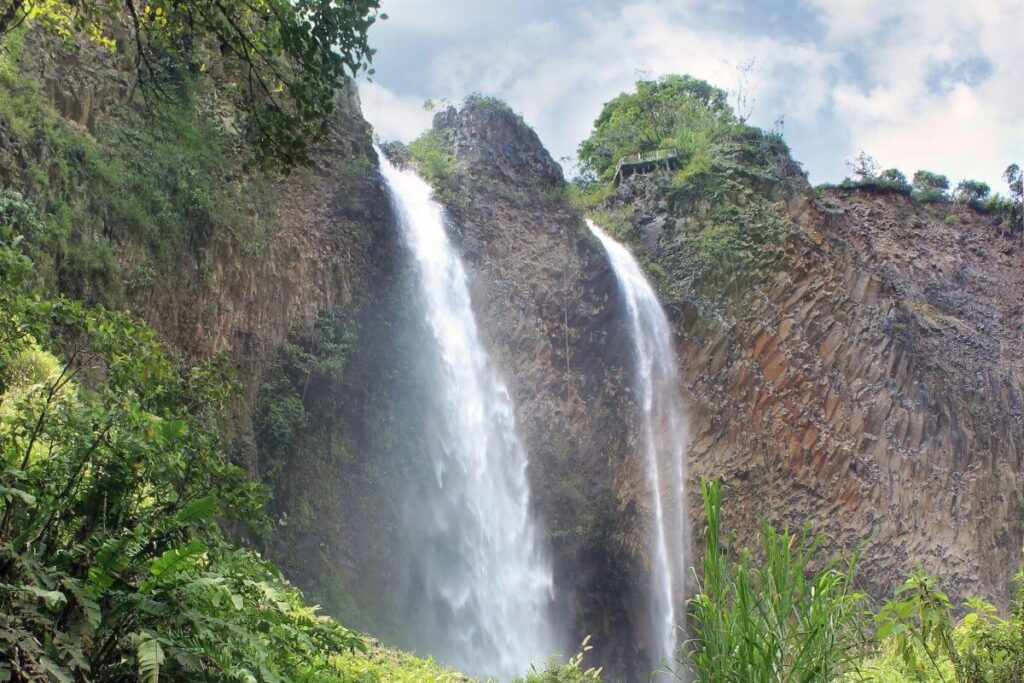
Guayaquil, the mighty metropolis of Ecuador (yep, it outshines Quito in size!), is the ultimate gateway to the legendary Galapagos Islands.
This bustling city offers a ton of activities, but if urban vibes aren’t your thing, I’d suggest a one-night stay. You can enjoy walks through gorgeous parks, spot iguanas chilling in the trees, visit iconic landmarks and soak up the lively atmosphere of the Malecón 2000 boardwalk.
🦉 TOP TIP: As the largest city in the country, it’s always wise to take some extra safety measures, especially when venturing out at night.
Related posts: Banos to Guayaquil: Routes + Guide
Where to stay in Guayaquil
- Manso Boutique Guesthouse : conveniently located near the Malecón 2000 and the Guayas River.
- Casa Michael : a great hostel for backpackers.
- Wyndham Guayaquil: for a luxury stay in Guayaquil.
- Unipark Hotel : for a budget-friendly hotel stay in Guayaquil.
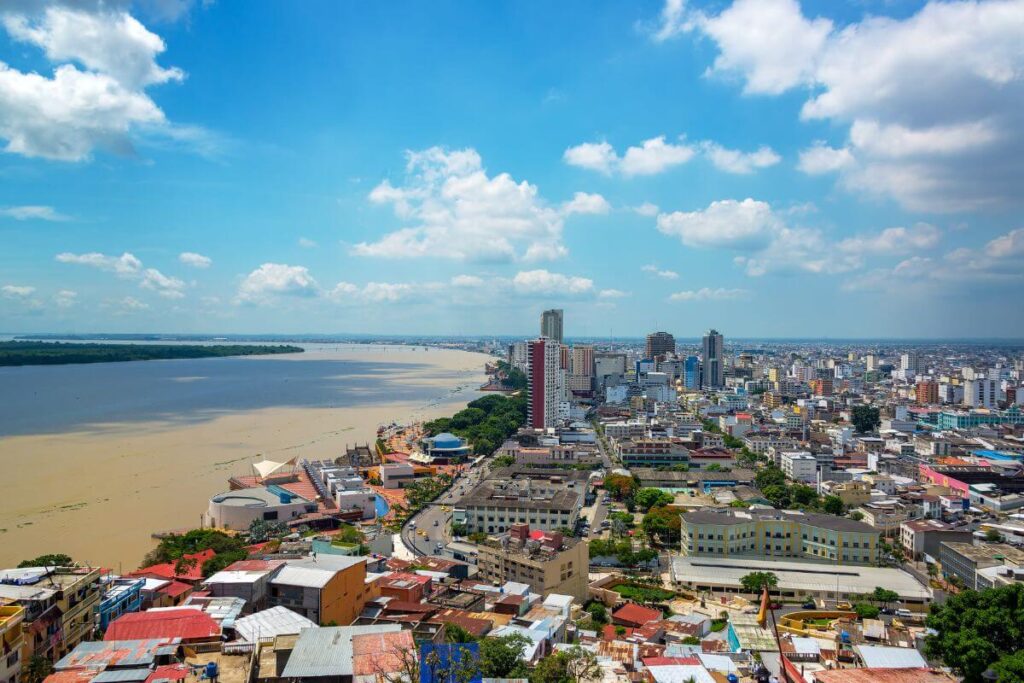
The Galapagos Islands
The Galapagos Islands are the ultimate hotspot for epic wildlife adventures. They’re not the most budget-friendly of destinations , but if you can afford to visit, they’re well worth it.
The Galapagos are a group of volcanic islands in the Pacific Ocean, just off the coast of Ecuador. The animals are incredible, and you’ll likely see giant tortoises strolling around like they own the place, marine iguanas that can totally rock a snorkel, and funky blue-footed boobies that will make you do a double-take.
➡ Note that you cannot get a boat from the mainland to the Galapagos Islands at this current time. Book your plane tickets to the Galapagos Islands now!

Other locations to consider when in Ecuador
As I previously mentioned, ten days isn’t a long time! But if you do want to squeeze in any other locations, these are some that I highly recommend.
🇪🇨 Otavalo: A lively market town surrounded by volcanoes within the scenic Andes mountain range.
🇪🇨 Cuenca: A charming and vibrant city nestled in the picturesque Andes mountains. Revered as “the most exquisite of all cities” by local Ecuadorians!
🇪🇨 Montanita: An energetic and wild backpacker town ideal for beachside parties. It’s located on the equator line, so expect hot hot hot temperatures!
🇪🇨 Ingapirca: A destination for those wanting to know more about Ecuador’s history and ancient ruins.
Related posts: 2 Weeks In Ecuador: Routes, Itineraries & Guides! | Banos To Cuenca (Ecuador) Full Guide & Routes
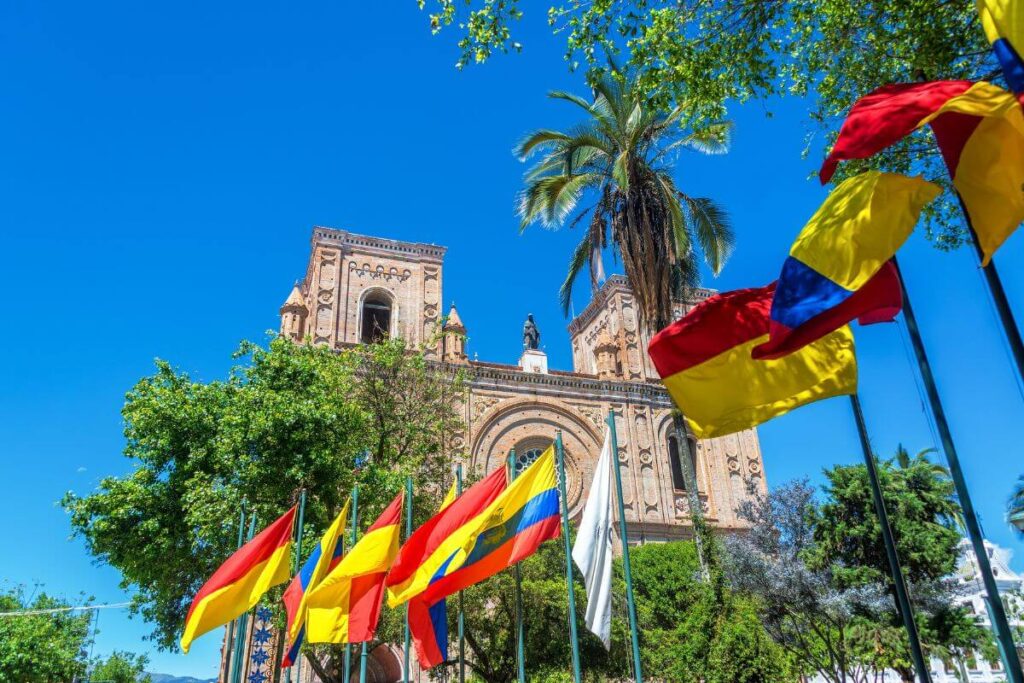
Getting around Ecuador
Before our visit to Ecuador, I did have concerns about getting around. Would it be necessary to rent a car? Are the buses safe? Are taxis or private transfers easy to book?
Luckily, getting around Ecuador is not as hard as you think! You can even forget public buses if that’s not your thing. I’ve found backpackers commonly take the secure, dependable, and modern shuttle buses in Ecuador (which is what we preferred).
For those with a limited ten-day timeframe in Ecuador, I highly recommend shuttles and private transfers to get around the country. Shuttles and private transfers can be easily pre-booked online, or via your hostel.
Even better than this, most Ecuador tours run excursions that include transport in the price. For example, the Amazon Rainforest (Cuyabeno) or visiting Cotopaxi from Quito can both be done as tours with included shuttles or private transfers.
Budget for 10 days in Ecuador
Ecuador, in general, is budget-friendly. It has similar prices to its neighbouring country Colombia (but maybe a tiny bit more expensive in restaurants and cafes).
Note the Galapagos can be done on a budget but needs specific additional savings and planning.
💸 For a budget backpacker: I recommend taking at least £500 ($630 USD) for spending money in Ecuador over ten days. This includes staying in a budget dorm room, cooking most of your own food or buying street food, taking public buses and doing mostly free tours.
🤑 Or if you’re a mid-range traveller (like we are): I recommend a little more than this. Take an average of £900 ($1130 USD) for the 10 days. This includes staying in Airbnbs and hotels, booking tours like the Amazon Rainforest and getting private transfers.
However, if you want to visit the Galapagos, your budget will need to be considerably higher. This will need to be planned and budgeted for separately.
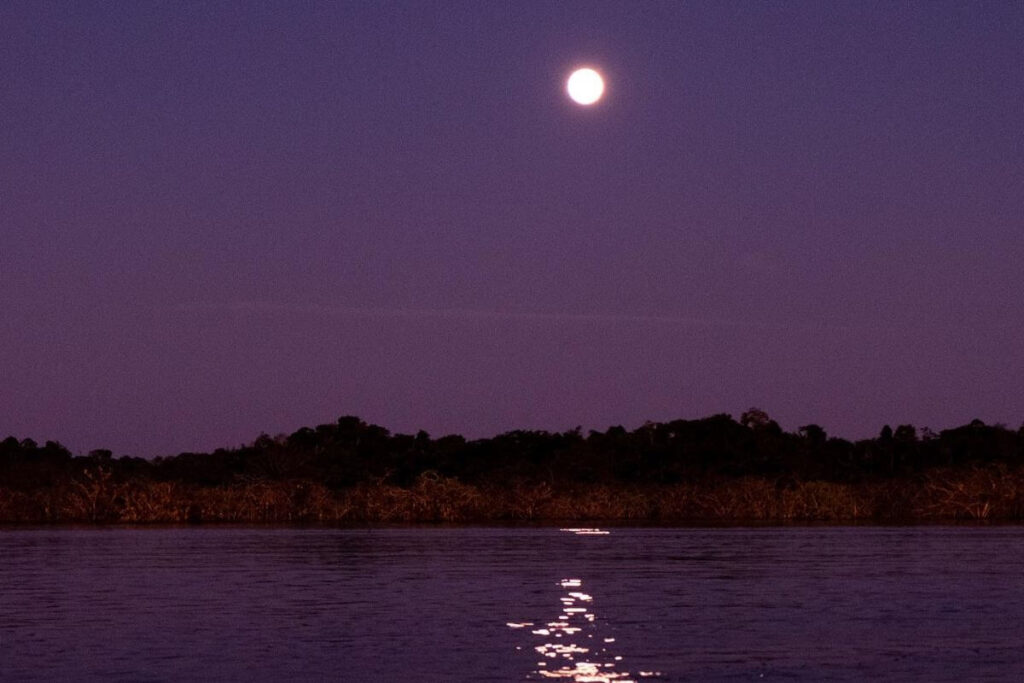
Best time to visit Ecuador
Ecuador has a warm climate, and averages between 22-25°C/70-77°F throughout the year. The mountainous areas have a year-round temperate climate, whereas the rainforest and jungle areas have a tropical climate with humid and hot days.
You can visit Ecuador 365 days a year. There are no distinct ‘best’ times to go, as you will generally find tourists visiting throughout the year.
The hottest month is August and the coldest is February. However, even at the coldest time (unless you’re at the top of a mountain or volcano) shouldn’t drop to lower than 13°C/55°F.
The months from October-May are in the ‘wet season’ , and are known for being overly humid with heavy showers.
Visiting the Amazon rainforest ? It’s good to know that the rainy season in the Cuyabeno Wildlife Reserve starts in February and lasts until November.
- 🌎 Best overall time to visit Ecuador: June – September (average 15°C-25°C/59°F-77°F)
- 💸 Cheapest time to visit Ecuador : February to March or November.
- 🌳 Best time to visit the Cuyabeno Reserve (Amazon Rainforest): Any time of year, just expect rain!
- ☀️ Hottest time to visit Ecuador: June – September
- 🥶 Coldest month in Ecuador: February (average 12°C/55°F)
- ☔️ Rainiest months in Ecuador : February (average 100mm)
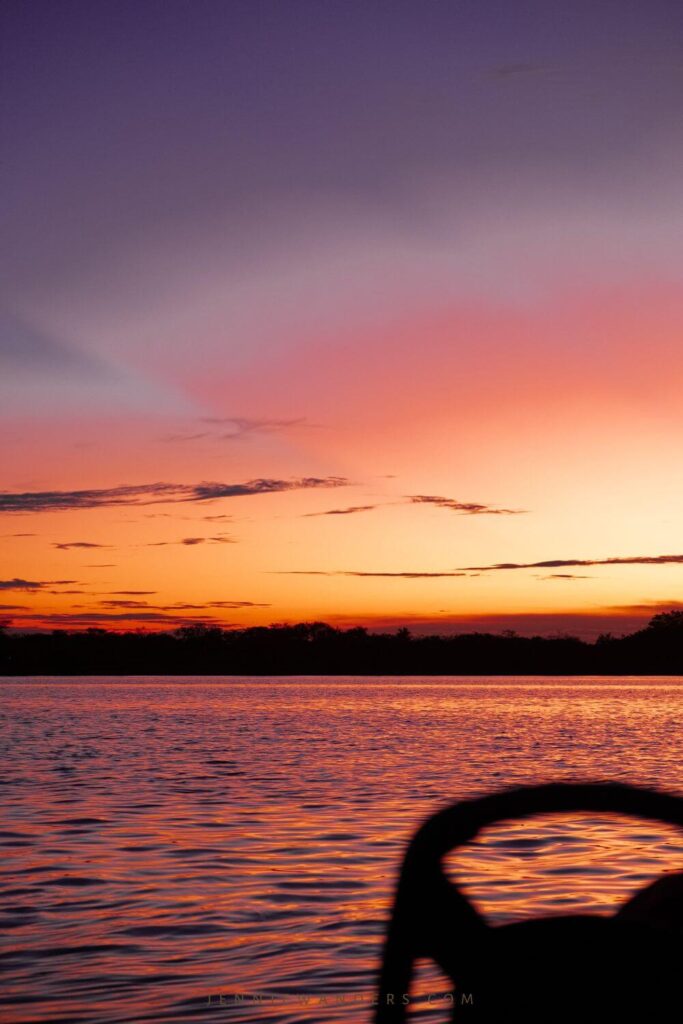
What to pack for Ecuador
Packing for Ecuador is similar to most Central/South American countries, although you need to pack some warmer clothes for locations like Quito.
Luckily for you, I’ve written an entire, lengthy blog post about what to pack for Ecuador ; from daily clothes to gadgets and tech, the right kind of backpack and things you may have forgotten. You can check out my full Ecuador packing list here!
Visiting the Amazon Rainforest? Don’t forget to check out my complete Amazon packing list too!
Where to go AFTER Ecuador
If you aren’t going home after Ecuador (yay!), and are backpacking Central or South America, here are some of the most popular onward routes:
✈️ Fly out of the country from Quito or Guayaquil airport. Both have international departures.
🇨🇴 Colombia: many backpackers head north to Colombia after Ecuador. We loved both Medellin and Cartagena !
🇵🇪 Peru: we also had some friends who headed south to Peru. Another bordering country, this one is easy to fly to from Quito or Guayaquil.
🌎 Heading to Central America? This blog is packed full of information on Belize , Mexico , El Salvador and Guatemala . Check out my blog posts and start planning here!
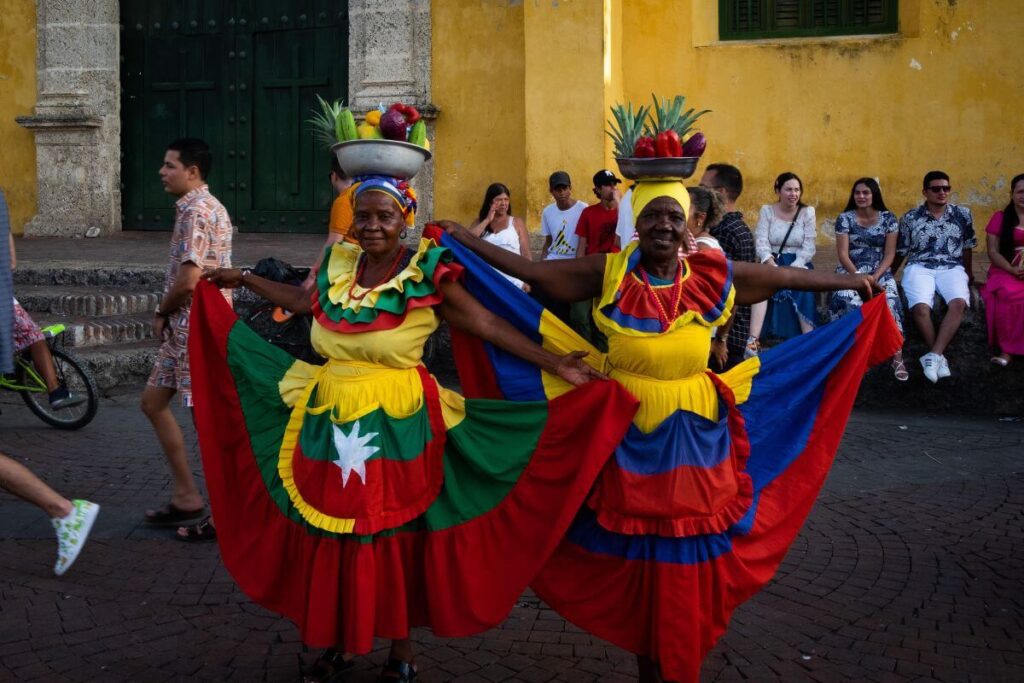
Is Ecuador safe for tourists and backpackers?
Safety in different countries, cities and towns is subjective. However, I am going to talk about my personal experience of safety in Ecuador and how we found it.
We travelled around Ecuador and felt safe most of the time. However, we did not walk around at night. We had been advised by both locals and tourists to stay indoors after dark; especially in cities such as Quito.
For me, Mindo felt exceptionally safe. Due to it being such a sleepy and small village, I felt safe walking around solo most of the time (but again, only during the day).
Quito felt safe during the day. We didn’t get heckled even nearly as much as we did in locations such as Cartagena or Medellin. However, there were areas that did feel a little sketchier than others (I highly recommend sticking to the historic centre and La Floresta when visiting).
But safety is subjective. What feels safe for me might not feel safe to you. Always take safety precautions and use common sense. It also helps to know basic Spanish!
I recommend joining the Facebook group ‘Backpacking Ecuador’ when visiting for inside info from the people who are actually there at the moment. This helped us a lot when deciding whether or not to go to Quito (as there were expected protests).
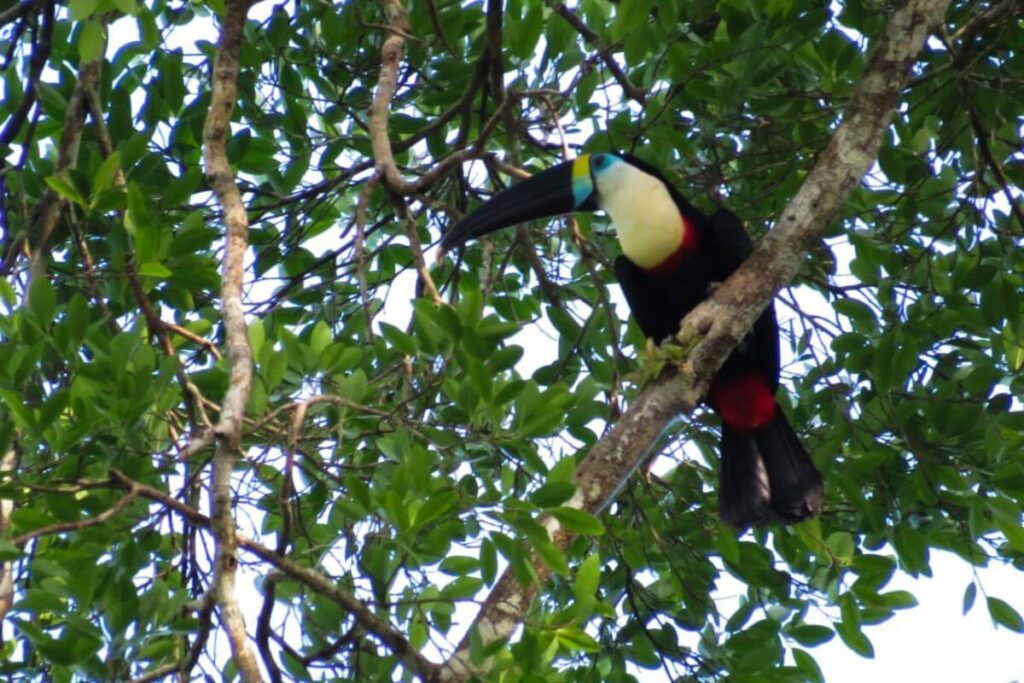
10 days in Ecuador: FAQs
1) is 10 days enough for ecuador.
Ten days is a good amount of time to explore certain parts of Ecuador. You won’t be able to fit everything in, but you’ll be able to visit at least two or three major destinations in the country.
2) Is Ecuador cheap or expensive?
Ecuador is known for being one of the cheapest countries in South America. It is perfect for those who want to have a great, adventure-filled time on a budget.
3) Is Ecuador friendly to tourists?
Yes! Of course, this varies from person to person, but we met so many friendly locals whilst in Ecuador. We enjoyed getting to know some of the local traditions, and our (limited) Spanish went a long way when it came to building connections.
4) Do I need an eSim to travel around Ecuador?
Yes, I highly recommend downloading an eSIM on your phone to ensure you can use it for directions and safety in Ecuador .
We found most of the cities to be chaotic and difficult to find local SIM cards. ESIMs are easy to download and ready to use within a few minutes of purchasing, so there’s no longer a need to hunt down free Wifi! ➡ You can check out the prices and packages for eSIMs here!
Don’t forget travel insurance for South America!
If you’re visiting South America as a backpacker, or even for a short vacation, it is so important to have travel insurance . And if you ended up on a post that’s called ‘epic party tips’, you know (just as well as I do) that you definitely need travel insurance.
Personally, I recommend SafetyWing . As a digital nomad and world traveller myself, I can confirm it is the best travel insurance out there. And one of the cheapest – they have deals that start at just $42 USD per month.
I know, I know, you’re thinking ‘but I can’t afford that!’ . I was the same! It’s tough to fork out $42 a month on something ‘you might not need’. But what if something DOES happen? That extra Mezcal shot results in you falling down the stairs, or you eat something dodgy from a street food van.
If you need medical help at any point whilst in South America, you need travel insurance.
With SafetyWing , you’re covered on travel emergencies, basic medical costs and medical expenses throughout your trip, so you can travel without worry (at a backpacker’s price!)
Don’t even think twice about getting travel insurance for South America . Trust me, I have heard enough horror stories about backpackers who haven’t had insurance and have ended up in a lot of debt. Don’t be that person!
If you’ve been putting the job off because it takes a lot of time and effort to research the best travel insurance companies , I understand. That’s why I’ve done the hard work for you. Sign up for SafetyWing , and the job is done!

10 Days in Ecuador: In a Nutshell
So, there you have it! Everything you need to know about the perfect 10 days in Ecuador. When you’re planning a trip to Ecuador, make sure you let me know over on Instagram or in the comments below!
If you haven’t seen my blog before, I write posts aimed at real-life travellers wanting authentic and down-to-earth information. I’m currently travelling around the world with my boyfriend (read more here !), creating guides and itineraries for you to follow in our footsteps!
Keep an eye out for more Ecuador content, all written from a personal and realistic point of view. You can sign up for my newsletter and juicy travel updates here!
As always, thanks for reading and supporting the blog!
Happy travelling 🙂
🇪🇨 Other Ecuador posts:
- Quito to Mindo: Full Travel Route
- Frog Concert Mindo: WHAT Is It?!
- Amazon Tours Ecuador: BEST Cuyabeno Tour
MEET THE AUTHOR!

Hi! I'm Jennie! As a part-time travel blogger based in London, I'm using my 10+ years of travel expertise to encourage & inspire you to step out of your comfort zone through sustainable, mindful and purposeful travel.
If I'm not writing, I'm either reading, drinking coffee or taking a wild swim (all at the same time if I'm feeling impressive).
Similar Posts
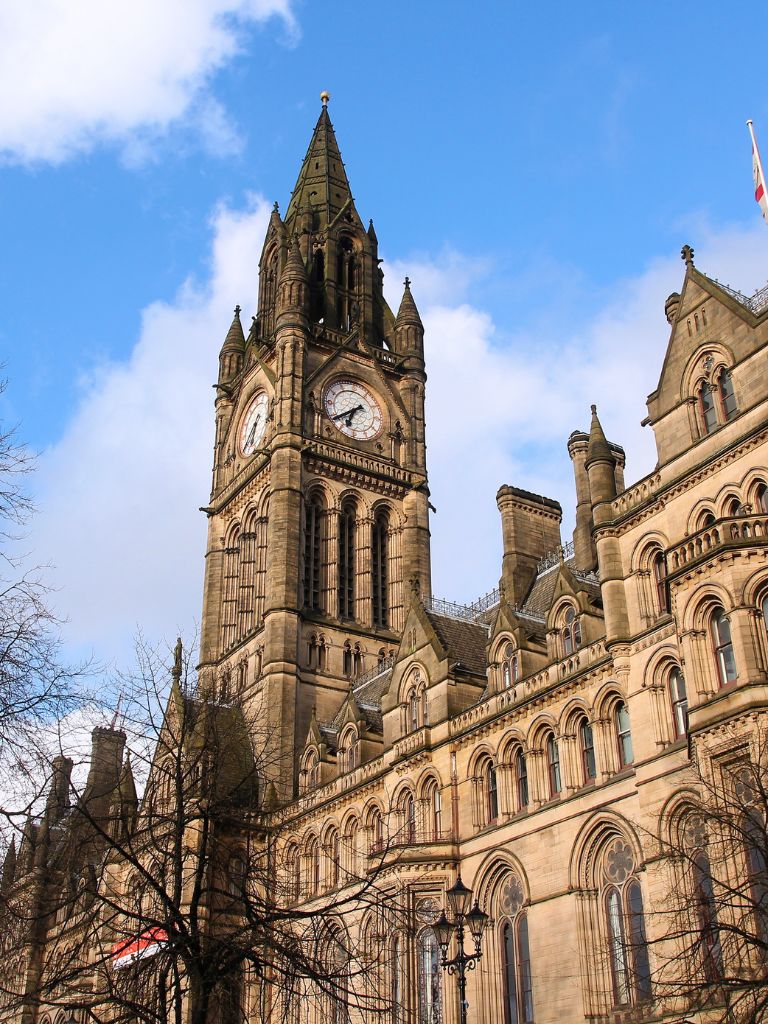
Cities Near The Lake District That Are Worth VIsiting!
If you’re visiting the Lake District for the first time, you may be looking at what cities are nearby to extend your trip and explore some more of England! Luckily, the Lake District is super accessible and is close to a number of cities such as Carlisle, Preston, Blackpool and even Manchester. Even London is…
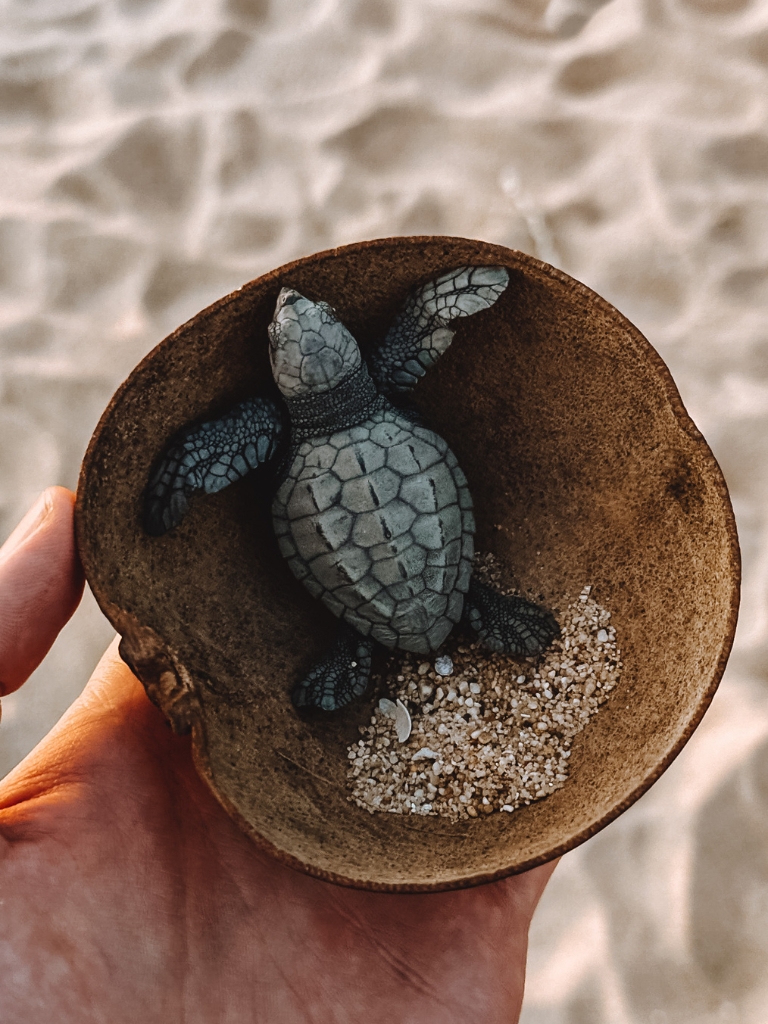
Turtle Release Puerto Escondido, Playa Bacocho (2023)
Looking for more information on the turtle release in Puerto Escondido, on Playa Bacocho? This post outlines everything you need to know! Releasing a baby turtle into the ocean in Puerto Escondido really was one of those ‘pinch-me’ moments. We didn’t really know what to expect, and we had no idea just how special it…
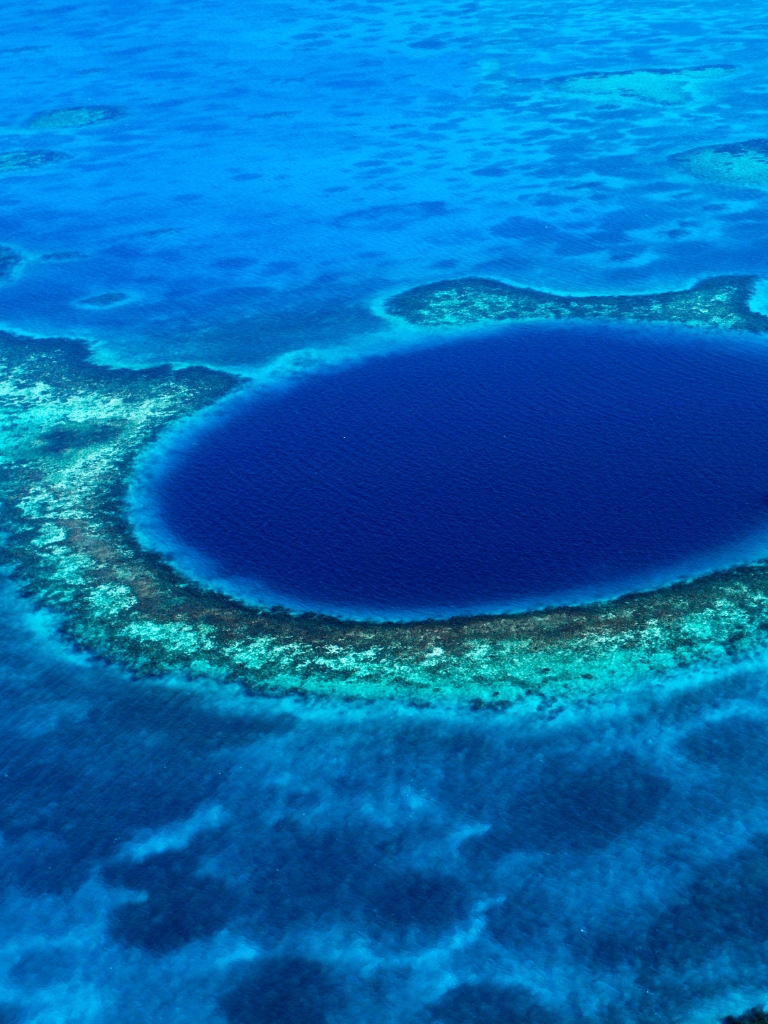
Belize 7 Day Itinerary: One Week COMPLETE Guide! (2023)
Looking for the best Belize 7 day itinerary? I’ve got you covered! Belize is one of my favourite countries in Central America, and after spending almost a month backpacking Belize in 2023, I know it’s a country we will return to time and time again! Whether you’re looking to visit Belize as part of your…
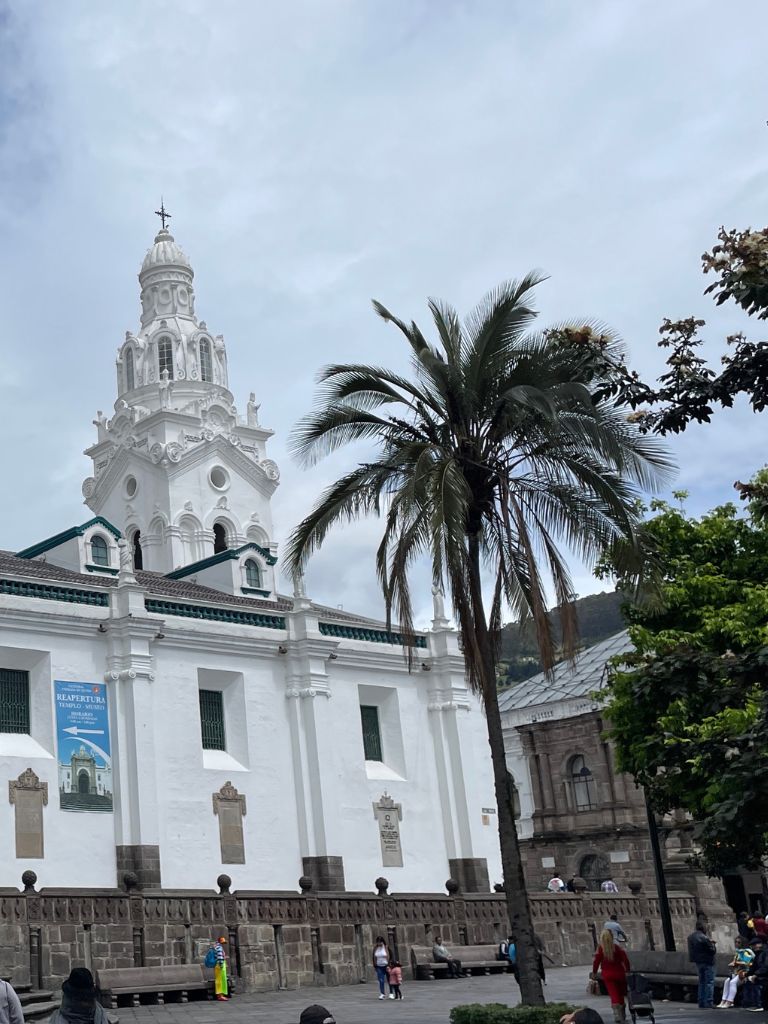
Quito To Guayaquil: Full Guide & Transport Options (2023)
Looking for the best ways to get from Quito to Guayaquil? You’re in the right place! Quito, the second-highest city in the world, is one of the best locations to start your Ecuador trip. Then there’s Guayaquil, known for being the biggest city in Ecuador, and the gateway to one of the biggest bucket-list destinations on earth;…
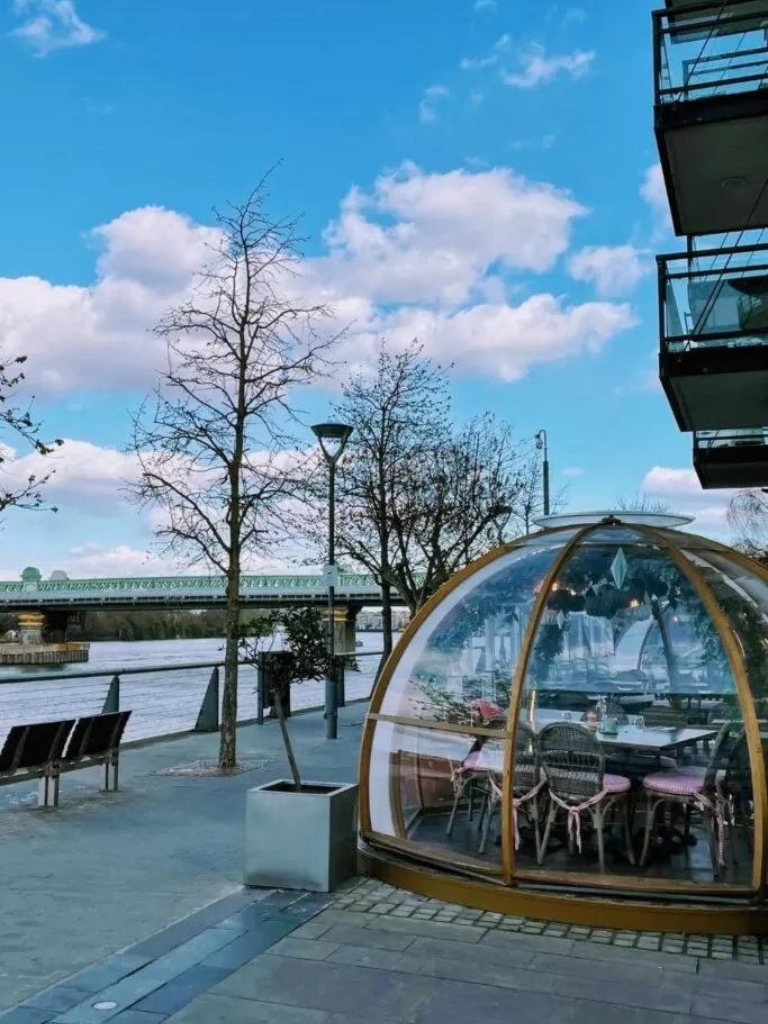
Shops in Putney: High Street, Supermarkets & Beyond
Looking for the best shops in Putney? Whether you’re moving to the location or just here for a visit, it’s always useful knowing what shops are in the area! Where and what are the best shops in Putney? If you’ve read any of my blogs, you’ll know how much of a huge fan I am of Putney…
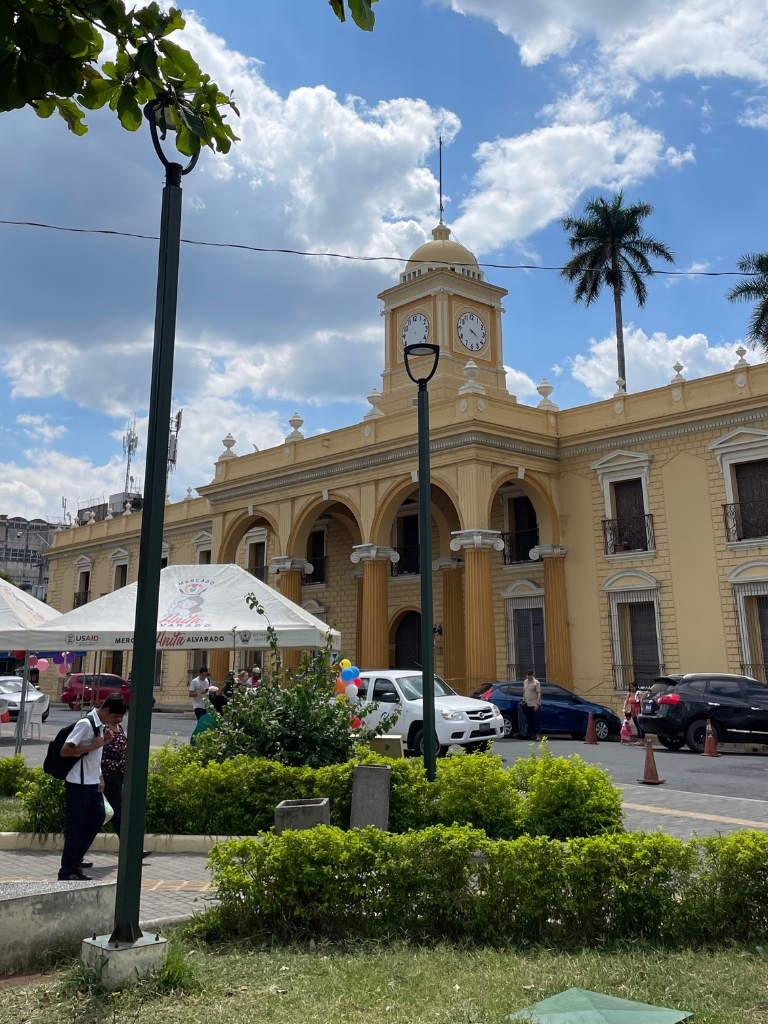
Backpacking El Salvador: Routes, Itinerary, Safety + More! 2023
Backpacking El Salvador? Yay! El Salvador is one of the most beautiful countries in Central America, and it’s still pretty untouched by tourism. We absolutely loved our backpacking trip to El Salvador. Whilst we did make a few mistakes (you’ll have to keep reading to find out what), we had an amazing time. From meeting…
Leave a Reply Cancel reply
You must be logged in to post a comment.

2 Weeks in Ecuador – Travel Itinerary
- By Robby Owenby
- Published June 29, 2019
- Posted in Destinations / South America
- Updated October 15, 2022
- 18 mins read
- Tagged as 2 week itinerary , 2 weeks in ecuador , budget travel , cotopaxi , ecuador , isla de la plata , mindo , montanita , puerto lopez , quito , secret garden , travel itinerary

Definitely believe the hype! South America is beautiful, and backpacking Ecuador is not only easy, it’s also cheap! When you think of Ecuador you probably immediately think of Charles Darwin and the famous Galapagos Islands, right? Sure. Me too, at first. But, I’m here to tell you that Ecuador is more than just the Galapagos. So much more. Whether you enjoy the hustle and bustle of vibrant city life or the relaxation of an ocean breeze, this itinerary for 2 weeks in Ecuador will satisfy even the pickiest of travelers.
Table of Contents
- Day 1 – Quito
- Day 2 – Quito to Montañita
- Explore The Town
- Isla de la Plata
- Los Friales
- *Bonus* Sunset in Puerto Lopez
- Mitad del Mundo
- Day 12-14 – Cotopaxi
- Day 15 – Quito then back home
Planning is key!
For me, my friends and I knew that we wanted to plan an international trip, but none of us really knew where we wanted to go. Originally, it was Croatia, then maybe Hungary, then Guatemala, maybe Costa Rica. Finally, and thankfully, we decided on Ecuador because of it’s varied climate, rich culture, and easy going vibes.
Things to consider:
- Do you want to visit a lot of places for a short time or really take your time in just a few locations?
- Would you like to go from North to South or vice versa?
- Will you be traveling to the Galapagos?
- Do you want more adventure or relaxation?
- Are you flying in straight from your home base?
- Will you be coming from a neighboring country?
- Where would you like to end up?
Once you’ve answered those questions, you can decide which airport makes the most sense for you to use. There are two international airports in Ecuador: one in Quito ( UIO ) and one in Guayaquil ( GYE ). Both are very busy and service lots of destinations. Personally, I recommend flying into Quito because the prices are generally substantially lower unless you’ll be coming from a neighboring country to the south. For tips on how to find the cheapest flights, check out my aptly named article, 3 Best Tools To Find Cheap Flights . I live in Atlanta so I’ve learned that JetBlue typically has great fares depending on when you’re traveling. I was able to snag a round trip ticket for about $400.
A quick word on safety in Quito
Quito is a major South American city, and like any big city, that means there are certain things to be cautious about. However, Ecuador as a whole has a pretty good track record in terms of safety so as long as you use common sense you’ll be totally fine. For a more information, check out my article Is Ecuador Safe? A Guide to Safety in Ecuador .

Day 1 - Explore Quito and make some new friends
We couldn’t have made a better choice for our accommodations in Quito. The Secret Garden Quito quickly became our home base for our entire Ecuador trip. We loved it for a lot of reasons but two of the biggest ones were the views of the city from the rooftop balcony and the welcoming and communal vibe with all the guests. When we arrived at the hostel, we quickly learned that a guy from our flight was actually staying there as well. So after hanging out and chatting for a bit we exchanged contact information and went about our day. He would actually join us for about a week in Montañita, but I’ll get to that later.

Quito sits at 9,350 above sea level, and the terrain of the city is very hilly, so your first day or so should really be used to get yourself acclimated to the altitude. While sometimes a little strenuous, the city is definitely walkable and there’s tons of great places to see. So on your first day in Ecuador I recommend taking it easy, and just take in some of the sights and sounds of the bustling city. There are tons of great places to eat all over Quito. Our first lunch in South America was just down the street from the hostel at one of the many local restaurants serving up hearty almuerzos. It was about $4 and it included an awesome soup, chicken, and a huge portion of ubiquitous rice and beans.
About mid-day we went back to our hostel to get some advice about how to get to our next destination. Originally, we were planning to go Mindo next. But we were advised that since Semana Santa was coming up, we should really head down south the next morning if we didn’t want to risk all the buses being sold out. So we texted our new friend explaining that we were switching gears and would actually be headed to Montañita next. He was on board to join us, so with our new plan set, we started making the arrangements. We spent most of the afternoon on a wild goose chase that took us on a hour and a half walk across the city to a bus company to buy our tickets only to discover that they didn’t sell tickets there at all. We were in such a hurry that we didn’t bring our water bottles nor apply sunscreen, so you can imagine the lobsters that we were when we finally got back to the hostel.

Day 2 - Bus from Quito to Montañita
Wake up early and get to the bus station, because this is going to be a full day of travel. we thought about flying, which would have been SO much quicker, but we actually were really excited about taking the bus through the Andes. And I’m so glad that we did. Not only did it give my crazy sunburn a chance to heal a bit, it also offered hours upon hours of breathtaking views from my window seat on the bus. Travelling by bus in Ecuador really gives you more of an authentic vibe, in my opinion, so I highly recommend it. There was a little girl seated in front of me who loved to chat and practice her English. For the most part, she was adorable and hilarious, but one time when I was waking up from a nap she definitely called me diablo blanco as she squirmed around in her seat trying to get my attention . She wasn’t being mean or anything, she just wanted her travel buddy to wake up…I think. ;-P

Days 3-7 - Montañita, party capital of Ecuador
We loved Montañita so much! If you’re looking for a place to party in Ecuador, look no further. Year round, this little slice of paradise is host to not only international travelers but also Ecuadorians looking to unwind and get away from the city. If you’re like me, you appreciate a good adult beverage. And boy oh boy does Montañita have you covered there!
While Montañita is probably best known as the party capital of Ecuador, there’s also way more to do here than drink and dance! Voted as one of the top 5 Spanish schools worldwide in 2009, the Montañita Spanish School offers lots of ways to improve your Spanish. Our new friend who joined us back in Quito actually ended up enrolling in classes while we were there. But if you’re looking for a bit more of an adventure, there are tons of places to take some surfing lessons in Montañita as well, and most hostels will rent you a surfboard for next to nothing.

What to do around Montañita
Explore the town.
Grab your sunscreen and water bottle and and start exploring. There are lots of restaurants serving up the freshest seafood you’ve ever had and plenty of places to grab a quick souvenir for your friends and family back home. plus the beach in Montañita is beautiful all on it’s own!

Isla de la Plata
Known as the Poor Man’s Galapagos, Isla de la Plata is a must see day trip from Montañita.

Los Frailes
Visit this beautiful beach located inside Machalilla National Park. Los Frailes is hailed as one of the absolute BEST beaches in all of Ecuador

*Bonus* Sunset in Puerto Lopez
You’ll be hard pressed to find a better sunset experience than in Puerto Lopez. Relax with a drink in hand as you watch the sun set over the harbor while local kids show off their acrobatics.
For more in depth information about this awesome town, check out my article, A Backpackers Guide to Montañita !
Day 8-11 - Enjoy the capital and take some day trips from Quito!
Take a tuk-tuk to the bus station just outside of Puerto Lopez and book an overnight bus from the coast and head back up to Quito! You’ll have just spent nearly a full week of fun in the sun in the coastal region of Ecuador, so you’ll be thankful for the long night bus to recuperate. That is, if you get luckier than we did. Everyone was enjoying their well earned sleep until around 3am when we were told the bus had broken down and we’d need to deboard to wait for a new bus to pick us up. Thankfully, we were able to pull over into a well lit area, so we were never in any danger. But it certainly made for an uneasy feeling for most of us who, in the midst of our slumber, didn’t really know what was going on at the time. But within an hour or so, we were back on track and eventually made it back to Quito safely by around 10am.
What to do around Quito
National basilica and la ronda.
Bascilica del Voto Nacional where we were happy to pay $2.00 for a self guided tour of the neo-Gothic church. The views of the city from the spires are breathtaking, so I highly recommend carving out time to check it out. From there, we started to make our way towards Calle La Ronda, a beautiful street in the historic district of Quito. La Ronda is very popular with tourists because of it’s old world charm mixed with world class artisan store fronts and local restaurants that pepper the colorful street. After sampling several awesome icecreams at Dulce Placer , learning about the honey production in Ecuador at Api Real , and visiting a handmade toymaker’s workshop at Zabalartes , we decided to start walking back towards our hostel to enjoy the family style dinner that we’d signed up for before heading out.

Mindo – Adventuring in a Cloud Forest
Baños is the undisputed adventure capital of Ecuador, but it just wasn’t in the cards for us during this trip. So after a little bit of research I found Mindo. To get there, take a taxi to Terminal La Ofelia and buy your ticket from the bus company, Flor de Valle. Your one way ticket will only set you back about $3 and you’ll arrive in Mindo in about 2 hours. When we got there it was raining – you know, like it does in a cloud forest – so we decided to go ahead and buy our return ticket to Quito then grab some food and make a plan for the day. By the time we were finished eating, it was sunny and beautiful so we started out on our day full of adventure. For about $30 we booked a full day of fun with Mindo Canopy Adventure. For that price, we flew through the cloud forest on 10 different zip lines, we tested our fortitude by jumping off a platform on the tarzan swing , and we soared over the valley on the tarabita which took us to the trailhead towards a series of waterfalls.
By the end of the day, we were exhausted but full of memories that will last us a lifetime. Bottom line: don’t skip Mindo!

Mitad del Mundo – Middle of the World!
We couldn’t go to Ecuador and NOT go to the middle of the world! About an hour or so outside of Quito is Mitad del Mundo and (according to who you believe) it sits at the 0º latitude. While more accurate GPS systems tell us that the actual equator is approximately 240 meters north of the marked lines, the monument and museum which was built in 1972 is impressive. And it certainly doesn’t stop thousands of tourists from flocking to the site to take the mandatory equator selfies and explore the museum dedicated to the ethnography of indigenous populations of Ecuador.

Otavalo – Outdoor Market
We had shown great restraint for the majority of our trip when it came to buying souvenirs because we knew that the Otavalo Market would be where we’d want to make some purchases. It’s about 2 hours away from Quito by public bus and it will only cost you around $2.50 one way. Sounds easy enough, right? Well, I’m sure it is for pretty much everyone. But I was instructed to remind the bus driver that I wanted to stop in Otavalo. So I did. And he dropped us off at an intersection. Where is this intersection in regards to the market, you ask? I honestly couldn’t tell you. Turns out, it wasn’t that far at all. But when we stepped off the bus and watched it drive away, we definitely had an “umm, what now?” moment. There was a couple that we came across that must have been dropped off by a different bus recently who were experiencing the same problem. But after 10 or 15 minutes of wandering around and asking for directions, we found our way to the market.
It was absolutely worth the adventure of finding it. Saturdays are the biggest market days, followed by Wednesdays, so we made sure we were there on a Saturday to get the full experience. For at least 3 or 4 blocks the streets were overflowing with tables and racks displaying everything from handmade clothing and crafts to practically drugstore items and knock-off shoes. There were food vendors serving up a variety of street foods, and everywhere you turned there was something more beautiful and interesting than before. I went home with a handmade wool and alpaca poncho-like sweater for $20 and a piece of artwork made by an indigenous artist.
***General Tip – when visiting markets like this one in South America, don’t be afraid to haggle. It’s expected and no one will thing you’re being rude. Just, ya know, don’t be rude.

Day 12-14 - Unplug with 3 days in Cotopaxi
When I look back on my trip to Ecuador, nothing stands out more than the 3 days we spent visiting Cotopaxi. Secret Garden Quito has a sister hostel about 2 hours away at the base of the worlds 2nd largest active volcano, Cotopaxi. Don’t let the price tag of $95.00 per person scare you. For that price you get round trip transportation from Quito, 2 nights of accommodations, all of your meals, a guided hike to a secluded (and frigid) waterfall when you arrive, and a second free and more strenuous trek which takes you to the extinct volcano, Pasachoa. There’s no wifi, which I know can be scary if you’re like me and you’re addicted to social media, but when you arrive and you see that view I promise you won’t care a bit.
In addition to the free activities, there’s several add on options as well:
- Horseback riding – $35-$40/person depending on how many people sign up
- Cotopaxi Summit – $295/person if there are at least 2 people, $395/person if only one person signed up
- Cotopaxi National Park Tour – $30/person + $5-$10/person to rent a bike
- Plus several other options depending on your hiking skill level and desire to pull yourself away from the views at the hostel.
We decided to opt for the horseback riding, since we’d never been before. It was about 3 hours of riding time, and we loved every second of it. Well, almost every second of it. My horse was kind of an asshole, to be honest! He would only go at his own pace, no matter what I did. He did not like being anywhere but the front of the line, and when he wasn’t at the front, he’d pick fights with the other horses. In fact, one time when he bit the horse in front of him, that horse got all kinds of riled up and actually knocked it’s rider off. Meanwhile, my horse just trotted right past them like a little jerk.
I did have better animal luck back at the hostel, though. They have tons of animals around including some llamas and alpacas. This one guy was my absolute best friend for the 30 seconds that I was feeding him a banana!
In all seriousness though, I can’t say enough good things about my time at Secret Garden Cotopaxi . Do yourself a favor schedule enough time so that you can book the 2 night, 3 day package!

Day 15 - Hang out in Quito, then catch your flight home or to your next adventure!
We got back to Secret Garden Quito yesterday evening and were able to reconnect with our new friends and go out partying last night. So today is all about getting ready to say goodbye. Since we stayed out much too late last night, we let ourselves sleep in a little bit before hitting the city one last time. We had nice breakfast at the hostel for about $3.00, then just wandered around for most of the day. By this time, since we had stayed in the same place in Quito on and off for two weeks we knew a several people who were also staying there. We walked around the city with our new friends sharing our favorite moments from the last couple of weeks and talking about where we’d be headed for our next trip. By 6pm, we knew we were quickly approaching the end of this adventure, so we headed up to the rooftop bar to enjoy our last few hours in Ecuador. There was never a shortage of stories as we sat at the long table drinking beer and laughing. Finally, when it was time to go, we gave our hugs, said our goodbyes, and tipped our bartenders. Then we got in our taxi and vowed that while this might have been our first experience in South America, it most certainly would not be our last.

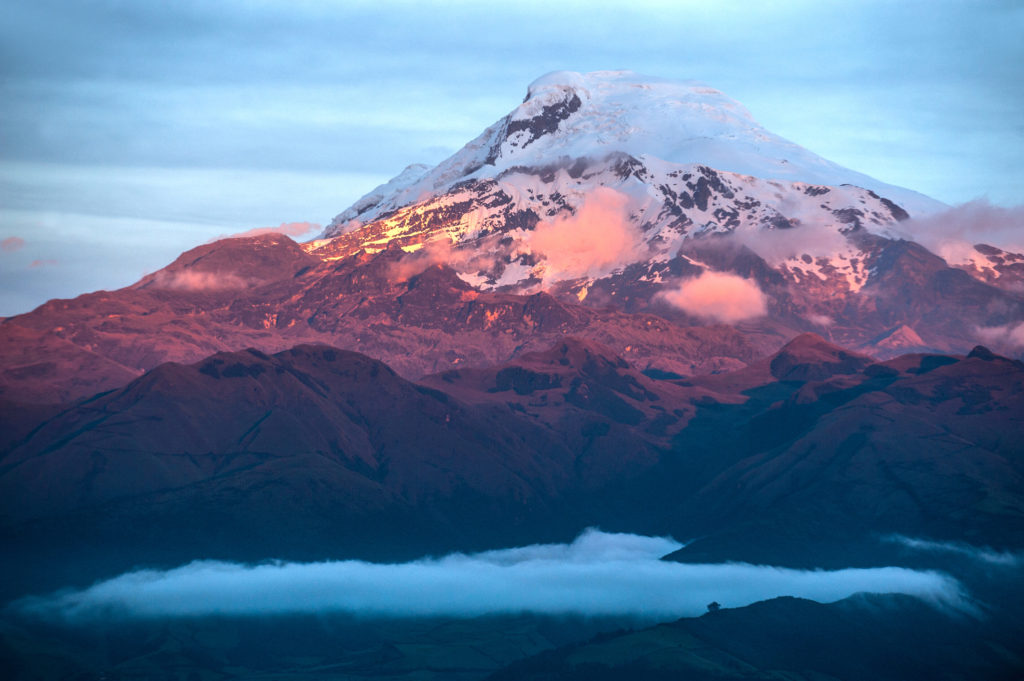
07 Feb The Best 2 Week Ecuador Itinerary
- Written by Adventure Together
- Categorised Central and South America , Destinations , Ecuador
For such a small country, Ecuador packs a powerful punch. At only 110,000 square miles, Ecuador is one the smallest countries in South America, however what it lacks in size it makes up for in incredible diversity. There are few places on the planet that are as diverse in landscape as Ecuador. Here you can drive from the tropical regions of the coast, to the high altitude mountains of the Andes, to the jungle of the Amazon in ONE day if you wanted to. In addition, you can visit the famous Galapagos Islands which feels like an entirely different universe.
We loved Ecuador so much we put together the best 2 week Ecuador itinerary that covers a little of everything–the Andes, the jungle, and of course, the amazing Galapagos.
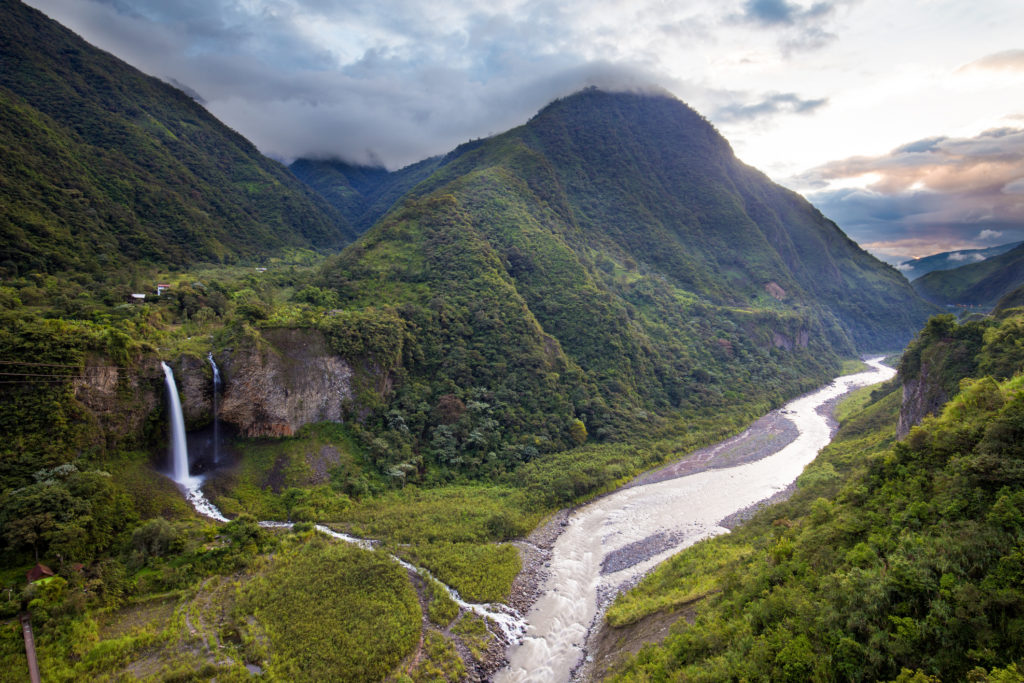
You might think because Ecuador is a small country, what can you possibly do for 14 days? Let me tell you, it was VERY challenging to narrow down where to go in 2 weeks (we spent 4.5 months here)! However, if you’re like us and want to experience the most adventurous destinations and witness epic scenery, we’ve put together the best 2 week Ecuador itinerary that combines both.
This 2 week itinerary will start in Quito, where you will spend 2 days visiting some of the highlights of this beautiful city nestled in the Andes, before heading south to take in the views of the breathtaking Cotopaxi volcano and the Quilotoa crater . After a few days in the Andes, you will make your way to Banos, the adventure capitol of Ecuador . Here you will witness waterfalls galore and participate in adventure sports like whitewater rafting and canyoneering. From there, you will head to the final destination in Ecuador: the Galapagos Islands , where you will sail in a boat to different islands and witness wildlife and nature like you’ve never seen before.

Day 1-2: Quito
Quito is one of two major international airports in Ecuador, and a great access point to many destinations in the country such as the Amazon basin. You should also know that Quito sits in the foothills of the Andes at 10,000 feet (2,800 meters), so if you’re not used to high altitude, come prepared. The best thing to do to prevent altitude sickness is to drink a lot of water, get plenty of sleep, don’t do anything too strenuous the first couple of days, and to bring some altitude sickness medication with you just in case.
Constructed on the foundations of an ancient Incan city, Quito is known for its well-preserved colonial center, rich with 16th- and 17th-century churches and other structures blending European, Moorish and indigenous styles together. It is a beautiful city to spend a week here, however if you only have a couple of days in Quito, you want to spend it wisely.
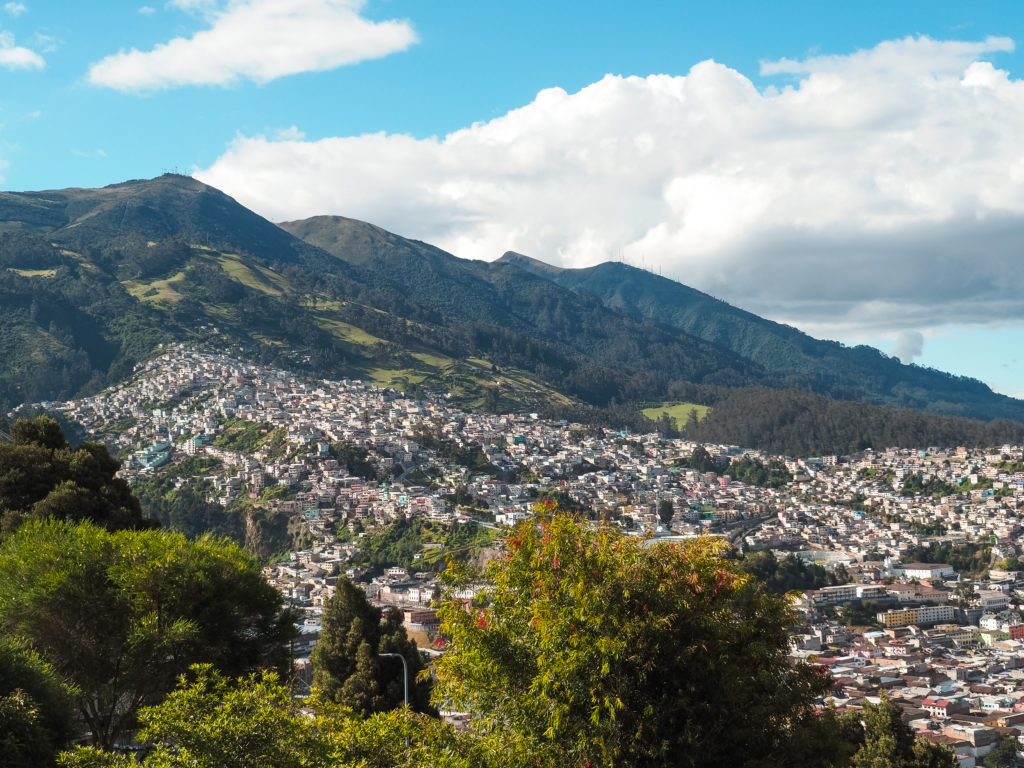
If you plan on staying somewhere in the Old Town, La Mariscal, or La Floresta area (which we would recommend), you should be able to explore Quito on your own, mostly on foot or by Uber. We loved staying right in the historic area at Chakana Boutique Hotel –super charming! Here is a great list of hotels for families in Quito .
There are quite a few noteworthy places that you should definitely try to squeeze in if you only have 48 hours in Quito. Declared a World Heritage Site by UNESCO for its well-preserved historical center, beautiful colonial architecture, and many incredible churches, Old Town is a place where you could easily spend a few hours.

Start at Plaza Grande , also known as Independence Square and wander through all the cobblestone streets lined with cute shops and cafes. Don’t miss the gold church, La Compania de Jesus , and one of Quito’s most notable squares, Plaza San Francisco , where also stands the Roman Catholic San Francisco Church . So many beautiful churches and buildings!
If you’re going to visit any churches, Basilica del Voto Nacional should be at the top of your list. It is the largest neo-Gothic basilica in all of the Americas, and can be seen from any vantage point in downtown Quito. Don’t miss climbing to the top of the tower as the views are out of this world! If you have a fear of heights, the stairs are a little steep, however it’s worth it!
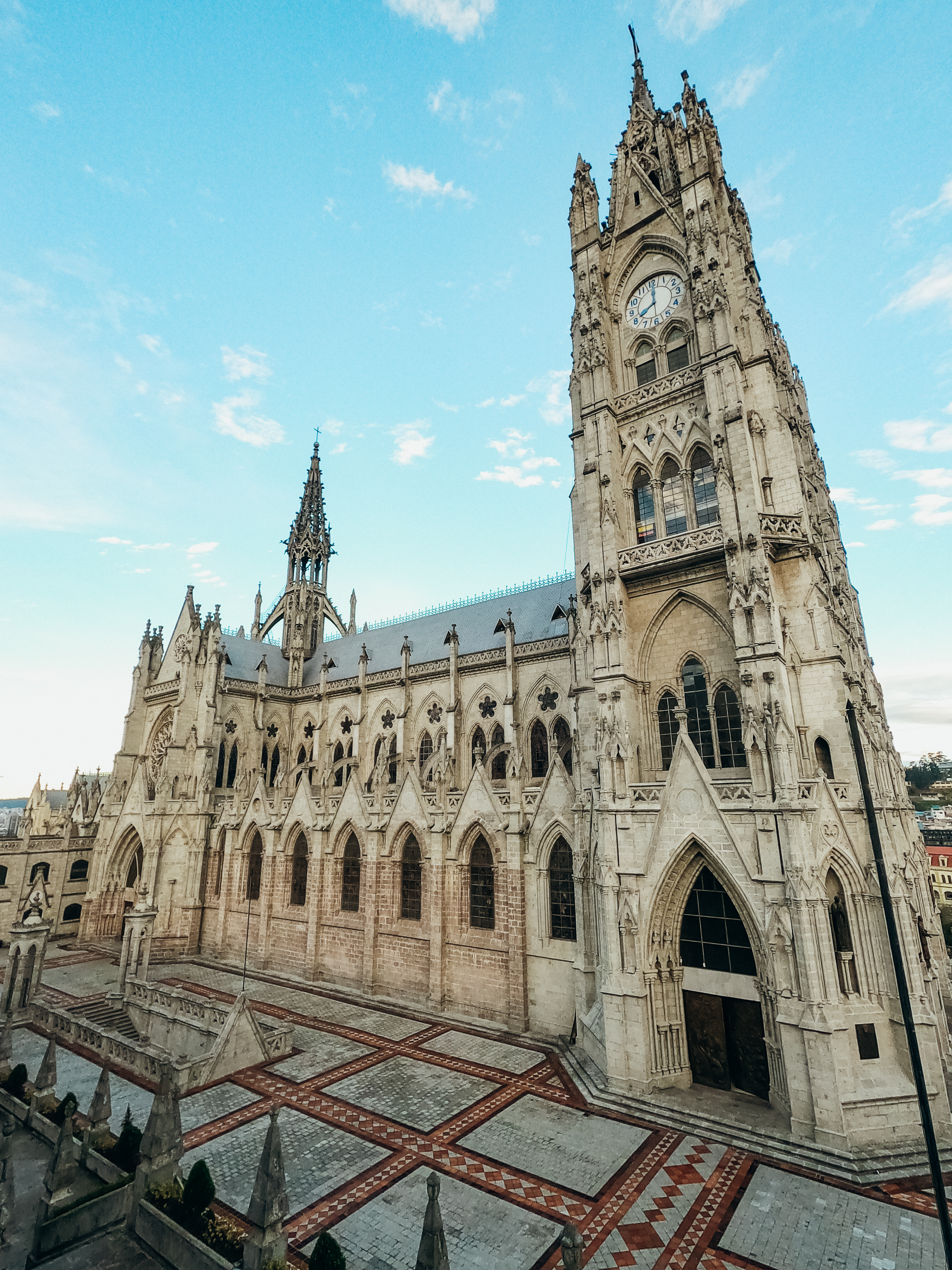
Another must-do in Quito is ride the TeleferiQo , which is a cable car that takes you up the east side of the Pichincha Volcano . Here you will get views of the entire city and other volcanoes in the nearby surroundings. If you want, you can also take a hike to Rucu Pichincha or just enjoy the views and ride the swing. This would be a great place to go for sunset!
Some other places worth visiting over 2 days in Quito is Mitad del Mundo , which is a museum and monument that sits on the equator. It’s about a 45 minute drive north of Quito, and you will want to spend a couple of hours here. At the center of the Mitad del Mundo stands the centerpiece of the park: a 30m-high, stone trapezoidal monument topped by a brass globe containing a viewing platform and a museum, which provides a good introduction to the indigenous peoples of Ecuador in the 4 different regions of the country.

Day 3-4: Cotopaxi and Quilotoa
Not too far from Quito is Cotopaxi National Park which boasts one of the most famous and active volcanoes in all of South America. Cotopaxi is an active stratovolcano in the Andes Mountains, located about 50 km south of Quito. It is the second highest summit in Ecuador, reaching a height of 19,300 feet (5,897 m). Technically you could take a day trip from Quito to Cotopaxi, but we recommend spending 2 nights closer to the park.
We would also suggest renting a car in Quito for the next several days since it will make getting around easier and faster than relying on public transportation. Plus, you will need a car to get to Banos, which is where you will spend days 5-7 before flying to the Galapagos.
We stayed at Hosteria Papagayo in Machachi and absolutely loved it! It’s a sustainable hotel and farm tucked in the foothills overlooking the surrounding mountains (to include Cotopaxi!). We especially loved all the animals which are very kid-friendly. They had horses, llamas, dogs, goats, rabbits. In addition to activities they offer at the hosteria such as horseback riding, mountain biking, tree climbing, and yoga. They can also arrange tours to places like Cotopaxi and Quilotoa.

Here are some more lodging options in Machachi to suit your budget and needs, or if you want to be close to Cotopaxi National Park AND Quilotoa crater, there are plenty of hotels in Latacunga . As far as how to spend your day in Cotopaxi National Park, it really depends on what kind of activities you prefer. You can choose from horseback riding (this is what we did), mountain biking, sightseeing, and of course, hiking. Several tour operators in the area operate these activities, just arrange this with your hotel.
About hiking to the summit of Cotopaxi: it is not advisable to do this if you only have a day in the park because you have to acclimatize first which can take a few days. It is also a very strenuous hike and it requires a guide (plus kids need to be over 16). Andean Summit Adventure are well-experienced guides that take people to the summit of Cotopaxi. Alternatively, you can hike to the refuge which sits below the glacier, or as mentioned, do a mountain biking tour .
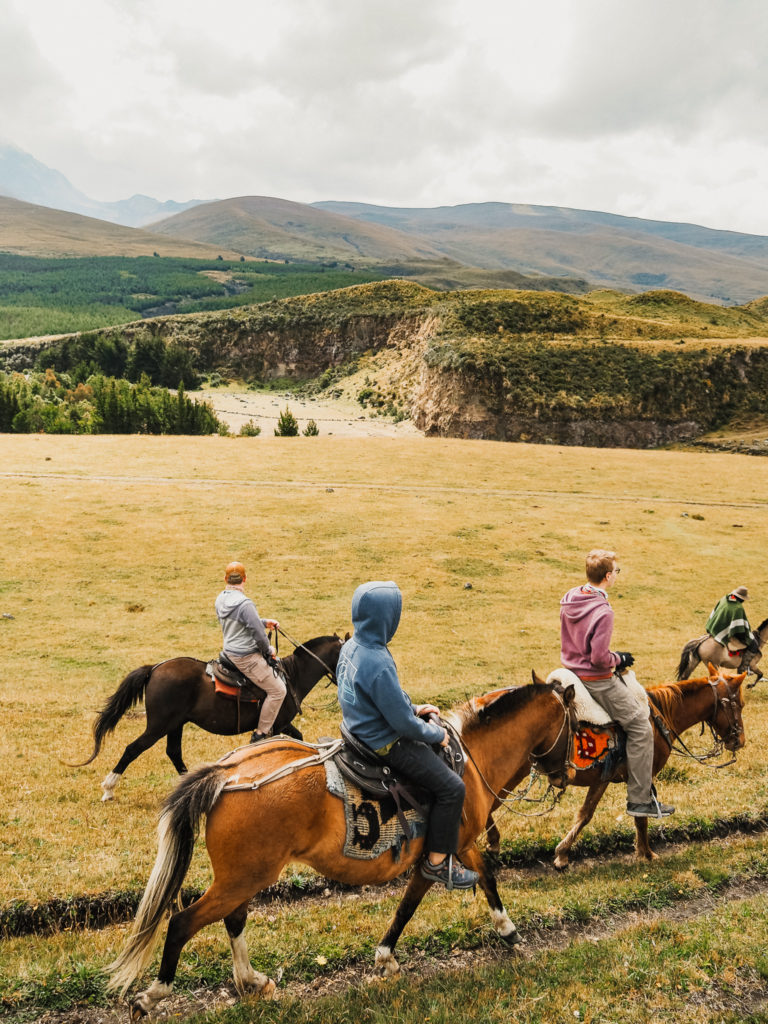
Laguna Quilotoa
Laguna Quilotoa is not to be missed while you’re in Ecuador. It’s one of the most popular destinations in all of Ecuador with multi-day trek options (such as the famous Quilotoa Loop ) or a day hike option, which takes you around the rim of the crater. We opted for the day hike and it was definitely an experience we will never forget. Be prepared though because like many hikes in the Ecuadorian Andes, this hike is high altitude! Even though the rim trail is rated moderate, it is more difficult due to the altitude.
The area around Quilotoa is home to many indigenous peoples, who make their living farming on the land much as they have for thousands of years. You’ll see their homes and farmland dotting the hillsides and even meet them on the trails nearby, usually wearing traditional Andean clothing and often herding sheep with a llama or two. We met a sweet family along our hike and gave them some candy!
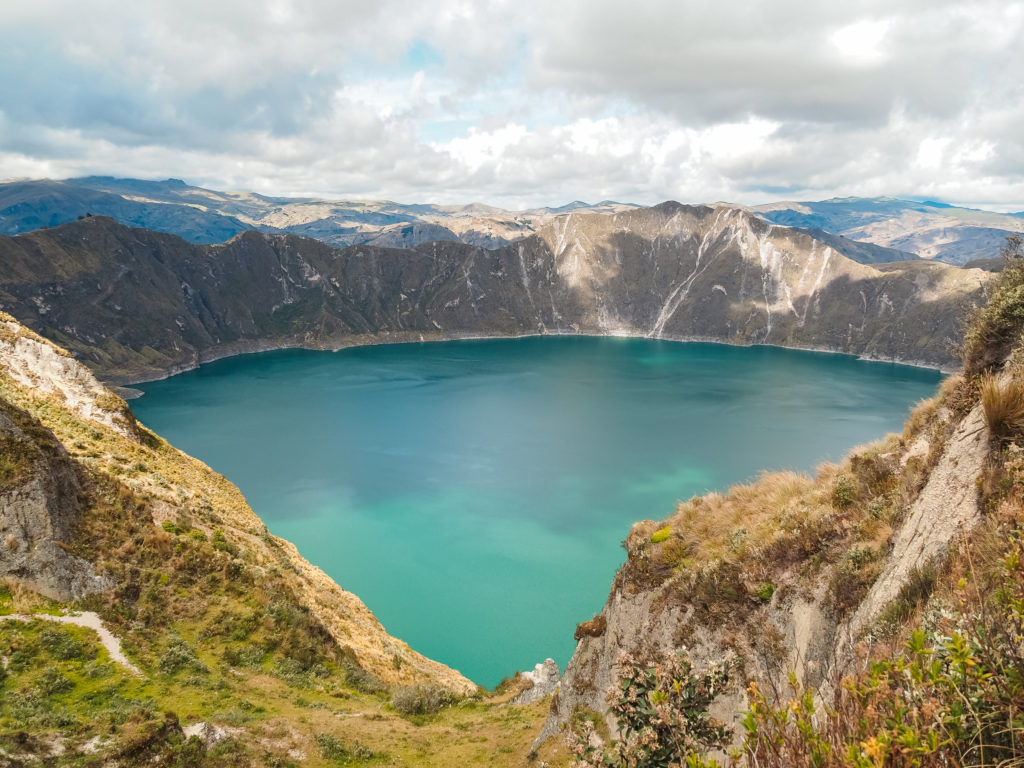
The hike itself along the crater rim is up and down and in some places, may require some scrambling as the trail has much erosion. It is a long day hike, around 6-7 miles (10-11 km) so come prepared with plenty of water, protective clothing (and layers since it can sometimes be cold and windy!), and snacks/food. Also note that because you will be hiking in high altitude, you should bring and reapply sunblock frequently. The sun is strong here.
Once you arrive to the crater via your vehicle, there is a lookout/mirador that looks out over the crater. You can take the trail to the right or the left, however we were told by some locals to go left and hike the rim clockwise because it is slightly easier. The entire hike you will be rewarded with breathtaking views along the whole trail–it truly is like nowhere else we’ve hiked before!
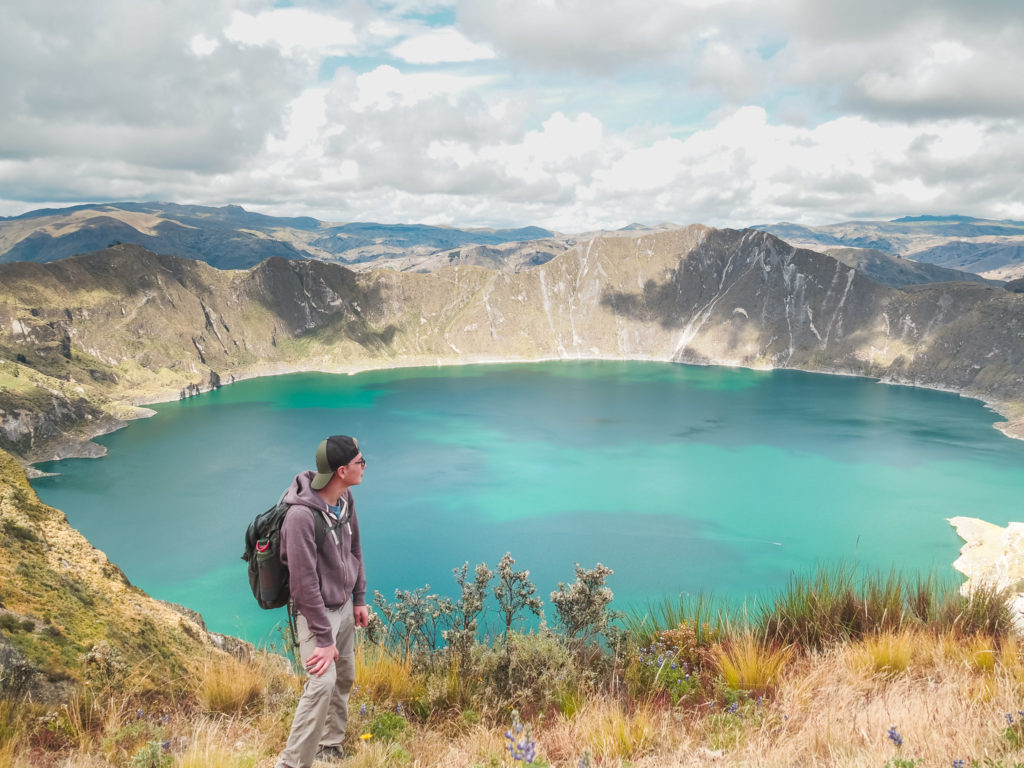
Day 5-7: Banos
The city of Banos de Santos Agua is only a few hours from Quito, so if you’re staying in Machachi or Latacunga, it’s even closer. By bus that may take a bit longer with stops, but if you have a car (which is what we recommend for this trip), it’s only around two hours from either of those places. Known for its lush, green scenery, Banos is also considered the “adventure capital” of Ecuador , full of rapid rivers, waterfalls, mountains and volcanoes, hot springs and of course, adventure sports.
We spent a little over two weeks in Banos during our 4.5 month trip to Ecuador. Out of all the cities we stayed in, Banos was our favorite for the breathtaking beauty and the close proximity to so many outdoor activities. If you’re following this itinerary, you will only have 3 days here, which means you will need to maximize your time in Banos. That’s why we provide a list to our MUST-DOS in Banos, and depending on your interests and level of adrenaline, you can pick and choose what activities suit your interests best.
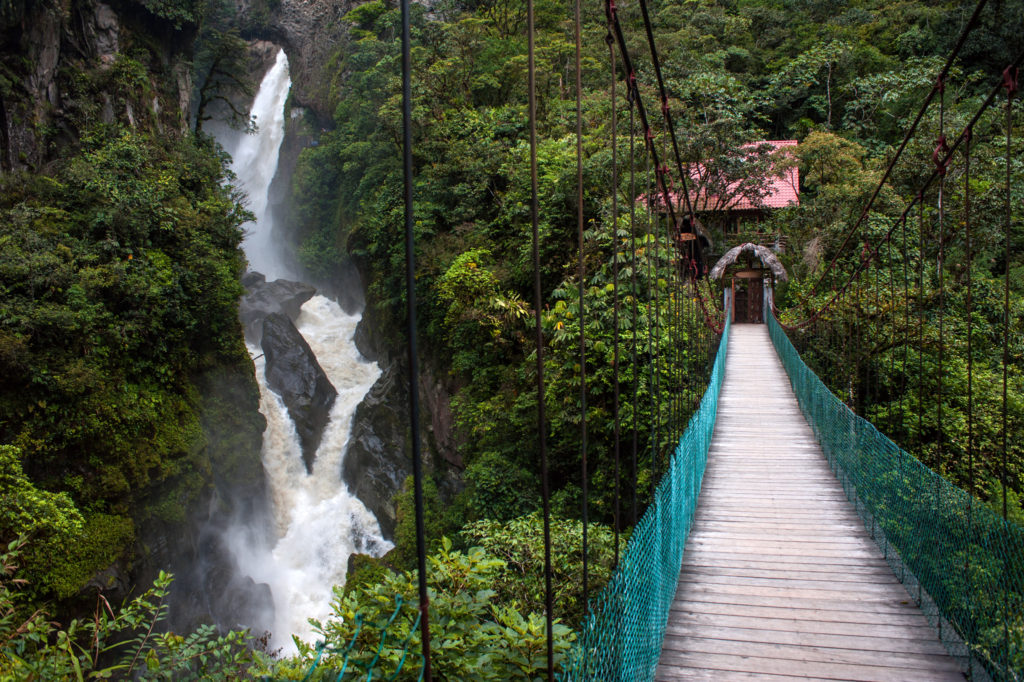
There are lots of accommodation options in Banos–from hostels, low to mid-range budget hotels, luxury resorts, boutique hotels and of course, Airbnb ‘s. We chose to stay in an Airbnb since we stayed in Banos for over 2 weeks, but there are a few hotels I would highly recommend here. A little bit of a splurge, but worth it if you want incredible views is Luna Volcan Spa . They also offer day passes to their spa and pool if you just want to just spend a few hours here. Also beautiful is Casa Giralda and Samari Spa Resort . On the lower to mid-range end is Sangay Spa & Hotel , Iti Moon , and Posada J .

As mentioned above, there are plenty of adventure activities within Banos. Here you can go whitewater rafting, rock climbing, canyoneering, hiking and biking. Banos is surrounded by mountains and volcanoes, so hitting the trail if you’re into hiking is definitely a good idea. Probably the most famous hike in the area is to the summit of Tungurahua Volcano , which is best to go with an organized tour and experienced mountain guide. This is a difficult hike, but if you’re going for “epic”, this is the one to do.
Here is our list for our top picks of outdoor activities and adventures in and around Banos.
Casa del Arbol swing
You can’t come to Banos without visiting this famous “Instagrammable” tree swing. Set high up on a mountain top about a 30 min bus or taxi ride from town is Casa del Arbol . Side note : Try to visit when the weather is ideal, otherwise the views will be less than impressive since it can often be rainy and overcast here. We actually went to Casa Del Arbol twice–the first time it rained and we couldn’t even see the valley or surrounding mountains; the second time we had great conditions.
You really only need a couple hours max for this activity depending on how busy it is.
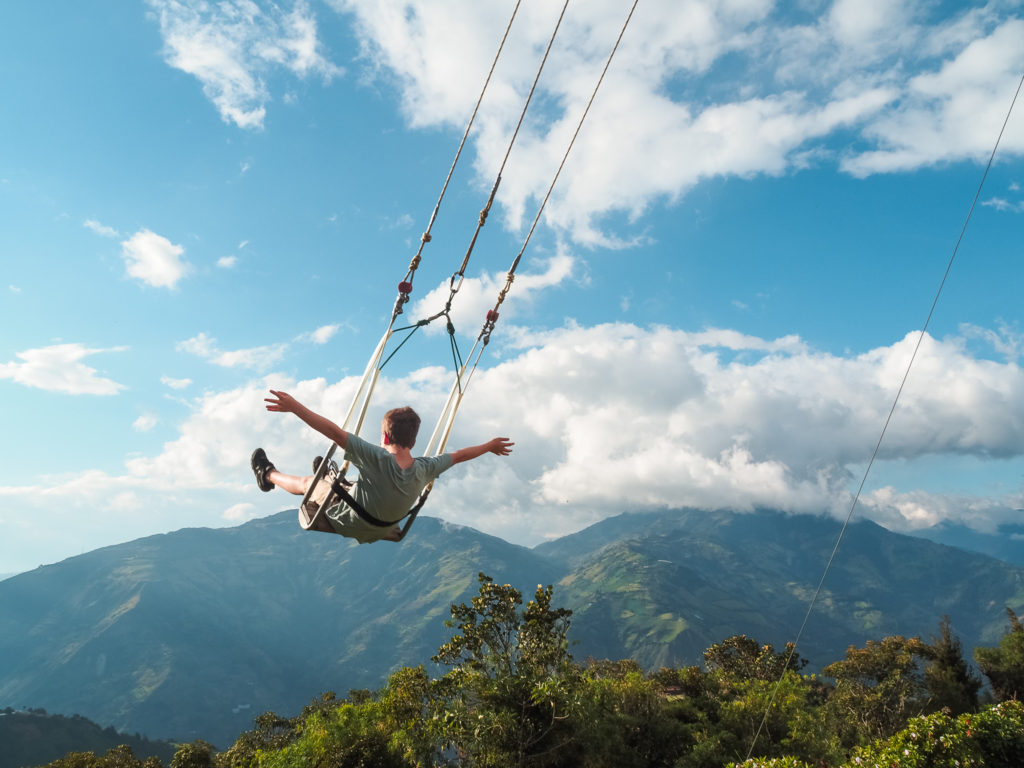
Fortunately, the admission fee to the swing at the “end of the world” is only $1 and to be honest, the park itself isn’t all that impressive. There are some mini zip lines, a cafe and then the swings, of course. Depending on when you go, you might have a line of people waiting to swing and take photos, so be prepared to wait. We got lucky and only waited a few minutes and then enjoyed the swings to ourselves for awhile. I would suggest going first thing in the morning if you can.
You will want to get photos from different angles of this swing because each view offers something unique. From one side, you see the Tungurahua Volcano looming above, from another you can see the mountains and valley below. Casa del Arbol might be a popular, touristy spot but it’s that way for a good reason!

Bike the Ruta de las Cascadas
There are not many better places in Ecuador where you can see several waterfalls along the road’s short stretch than Ruta de las Cascadas in Banos. Rent a bike in town for the day and follow the road from Baños to Puyo. We rented bikes from Geo Tours for $7 each. They also gave us a map and outlined the main points of interests (with Pailon del Diablo being the final destination).
It is worth mentioning that the route is mostly flat and downhill, making this is a fairly easy ride! And if you don’t want to bike back to Banos (uphill), there are trucks at Pailon del Diablo that will take you back to town (cost around $5 each person).
Many people choose to bike all the way to Puyo, but the first 12 miles or so (around 20 km) are rewarding enough – we saw at least seven waterfalls and stopped along the route several times to take photos and enjoy the views. For most of the route, you are sharing the road with cars, however there are a few sections where the path splits off for bikes only. There are also a couple of tunnels you will bike through.
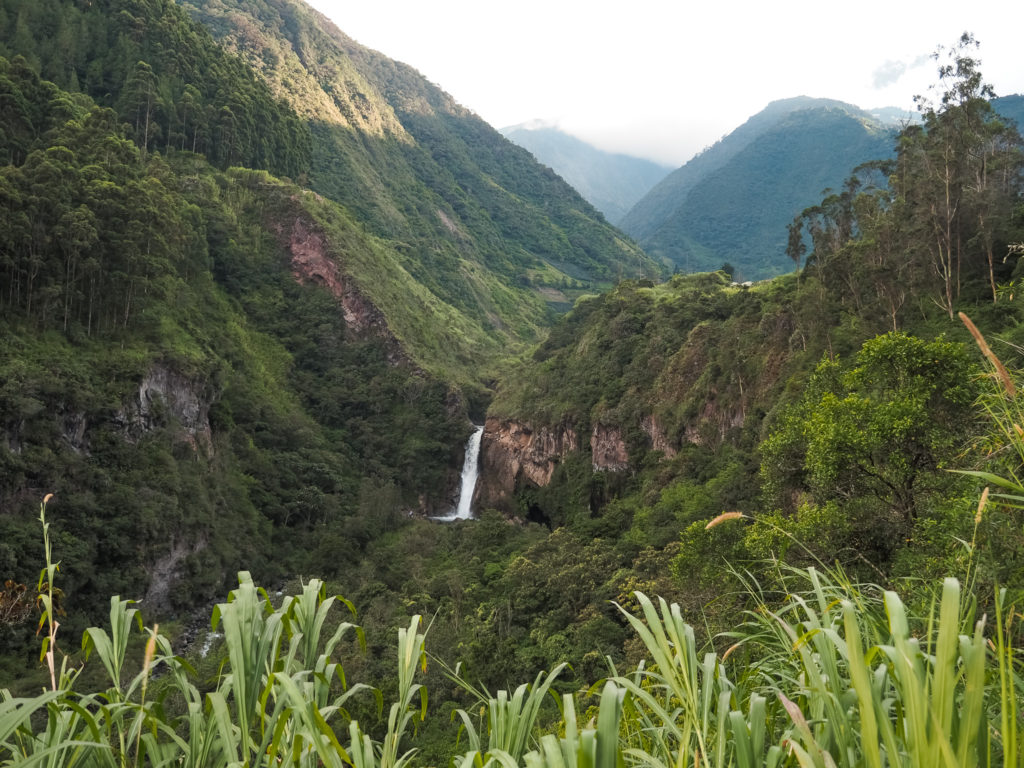
At some of the waterfalls along the way, there are cable cars and zip-line stations across the gorge; you can combine this activity with the biking trip. We stopped at Manta de la Novia to ride the cable car across the gorge–what a thrill! Save the best waterfall for last though–the famous Pailon del Diablo is one of the most breathtaking waterfalls in Ecuador and all of South America.
When you visit Pailon del Diablo, there are actually two entrances. We suggest going to both because you will get two different viewpoints and experiences. From the upper falls, you will witness the power of the waterfall (seen from the photo below), but from the lower entrance, you will see views of the falls from the hanging bridge which are out-of-this-world. From here you can walk across the bridge and up the short trail and stairs, and even walk behind the waterfall! Be prepared to get wet though!

Canyoneering and Whitewater rafting
If you’re into adventure sports like we are, you can’t come to Banos without going canyoneering or whitewater rafting. Both of these activities are popular in the area because Banos is the perfect destination with all the waterfalls and rivers! We spent a day canyoneering with Geo Tours and had an absolute blast jumping off, sliding, and rappelling down several waterfalls. We also waded through rivers, shimmied our way through narrow canyons!
If you have young kids, likely this will not be activity that you will be able to do with small children. Most tour companies have an age requirement of 10 or 12 and up. This is for safety reasons. Whitewater rafting is another activity that you could do just as a half day excursion. In fact, if you really wanted to, you could combine the canyoneering and the rafting in one day! Geo Tours has plenty of options for whitewater rafting too and can arrange those tours for you. Costs range from $30-70 per person.

Other Banos activities:
If you choose to do the waterfall bike route one day, another day you go to Casa del Arbol, and then the last day you go canyoneering and whitewater rafting, then that would likely cover most of your time in Banos for your 3 days. You might have a little extra time on the day you go to Casa del Arbol, or if you choose not to do BOTH whitewater rafting and canyoneering activities, you would have some some free time that day too.
If you find that you are looking for a few extra things to do in Banos, we have a few other suggestions. One is to relax and soak in some hot springs. In fact, the “baths” is what gave Banos de Agua Santa its name (Bath of Holy Water), so you can expect that there would be some famous hot springs here. The hot springs themselves are heated by the massive and active Tungurahua volcano!

Some of the best hot springs include: Termas de la Virgen (right below a waterfall and most popular with the locals), El Salado (less crowded, but not as hot as Virgen), El Refugio , and Luna RunTun (these are the hot springs at Luna Volcan hotel and perhaps boast the best views!). Soaking in some hot springs is the perfect way to end an adventure-filled day!
Other activities to consider in Banos should you have time are rock climbing (also popular in Banos!) and if you’re really into extreme sports, bungee jumping and paragliding . We spent half a day rock climbing with Geo Tours and it was so much fun! We also did the bungee jumping (because why not!?) and that was such an adrenaline rush! Geo Tours set us up with the guide who operates the bungee jumping and reassured us that it was 100% safe and legit. We were very impressed with the equipment and the professionalism dedicated to making sure we were safe.
Did I mention you jump off a bridge over a river? Yep.
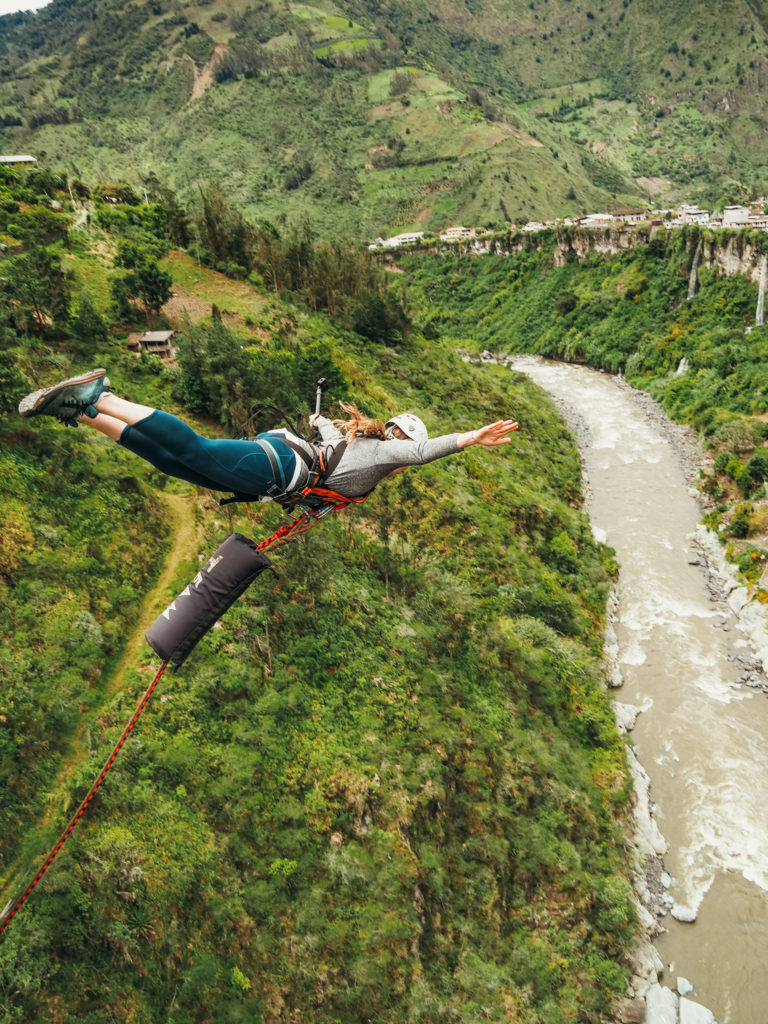
Day 8-14: The Galapagos Islands
Banos is about equal distance to Guayaquil and Quito (around 4 hours), the two major airports in Ecuador that you fly from to get to the Galapagos, so you will need to coordinate flights to the islands. We would suggest checking both airports and seeing whichever is cheapest. If you rented a car in Quito, likely you will return to Quito (unless the rental company allows you to drop off the car in Guayaquil).
There are two airports on the islands, one in Baltra (the main one) and another on San Cristobal (Puerto Baquerizo Moreno). Most tourists fly into Baltra which is adjacent to Santa Cruz (a short 5 min ferry), the most popular tourist hub in the Galapagos Islands . Another reason Baltra is the go-to airport is because if you are going on a cruise, this is where you would start. You can book tickets through domestic airlines with LAN or Avianca . We use Sky Scanner and Momondo for finding the best deals on flights.

Because you only have a little less than a week in the Galapagos (unless you have the flexibility to stay longer), we highly recommend doing a small cruise with Galagents Galapagos Cruises if your budget allows for it. Why? You will see MORE places and get the BEST Galapagos Islands experience in just 5-6 days. We spent a total of 10 days on the Galapagos Islands and our 5 day cruise was hands-down the highlight of our time on the islands.
If you choose to do the cruise, you will want to fly into Baltra. Depending on the itinerary with the cruise, you might plan it so that you start the cruise the day you arrive (this is what many people do). This would be ideal because the cruise company will arrange to pick you up directly at the airport and take you to the ship. However, if you end up having a day or two before the cruise starts, we would recommend staying on the island of Santa Cruz (a short 5 minute ferry ride from Baltra).
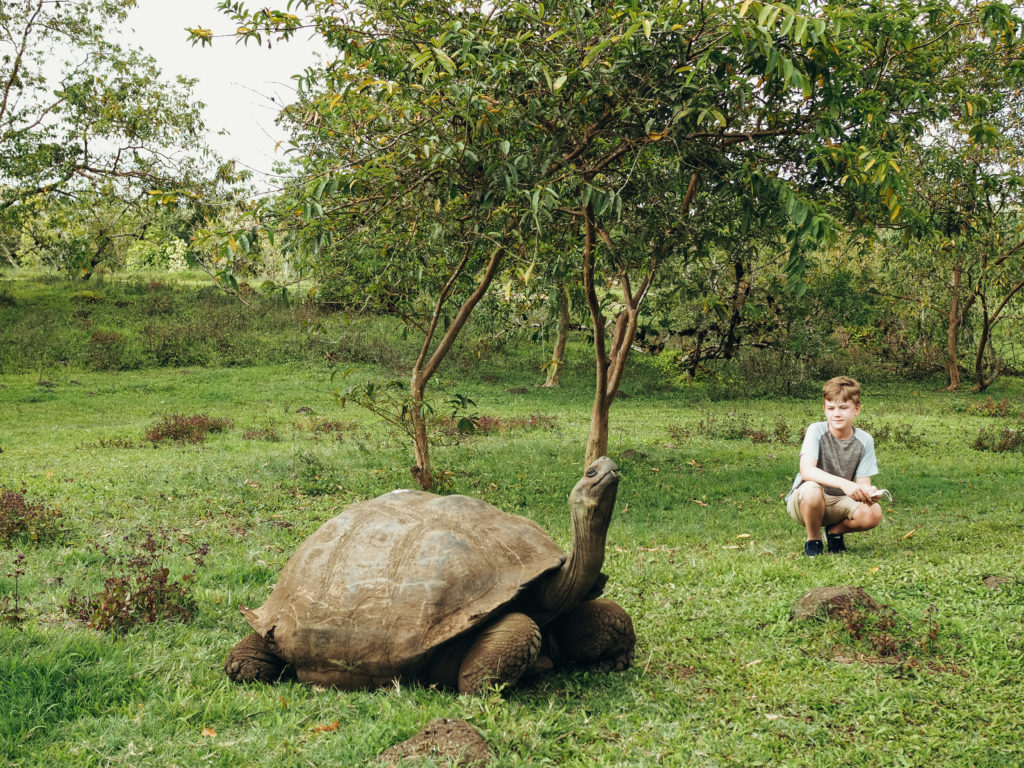
Santa Cruz is the main tourist hub, as well as the most populated island in the Galapagos. Puerto Ayora is the port city on the island where the largest variety of hotels, restaurants, tour companies and shops are located. There are plenty of activities and places of interest on Santa Cruz, most notably the Charles Darwin Center, Fish Market, El Chato Tortoise Reserve, Tortuga Bay , and others.
Santa Cruz has a wide range variety of accommodations ranging from hostels, B & B lodges, high-end hotels and resorts, as well as Airbnb’s. Our top choice in Santa Cruz is the Royal Palm Hotel , located in the highlands away from the hustle and bustle of Puerto Ayora. It is peaceful and beautiful, private and spacious, and offers great amenities for nature lovers and people who want to get away from it all. The Royal Palm mainly consists of private villas of different sizes to accommodate couples or families.
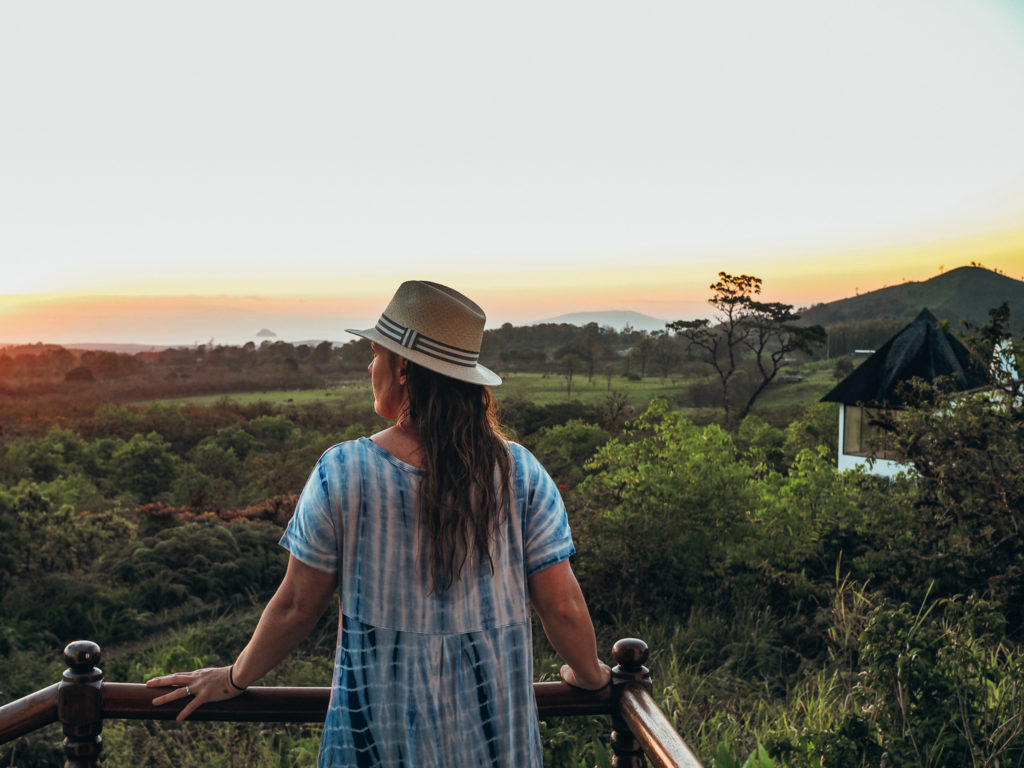
If you only have a day or two to spend on Santa Cruz before your cruise, we would recommend prioritizing Tortuga Bay and the El Chato Tortoise Reserve (unless your cruise itinerary stops here). Theoretically you could get to both of these places in one day, however you might feel rushed and want to just choose one. El Chato is a must if you want to see the famous giant tortoises. It is very fascinating to watch the tortoises in their natural habitat and you will learn a lot about these incredible creatures that can live over 200 years old and weigh up to 700 lbs. Your hotel can arrange for a taxi to take you to El Chato.
If you decide to go to Tortuga Bay , you will not be disappointed. It’s probably the most famous beach on the whole island and for good reason–it’s insanely gorgeous and offers a little of everything for beach and nature lovers. Here you will see plenty of wildlife such as marine iguanas, birds, sea turtles, rays, and even sharks! If you’re looking for more information and details on Tortuga Bay and things to do on the island of Santa Cruz, make sure to check out our full itinerary for the Galapagos Islands .
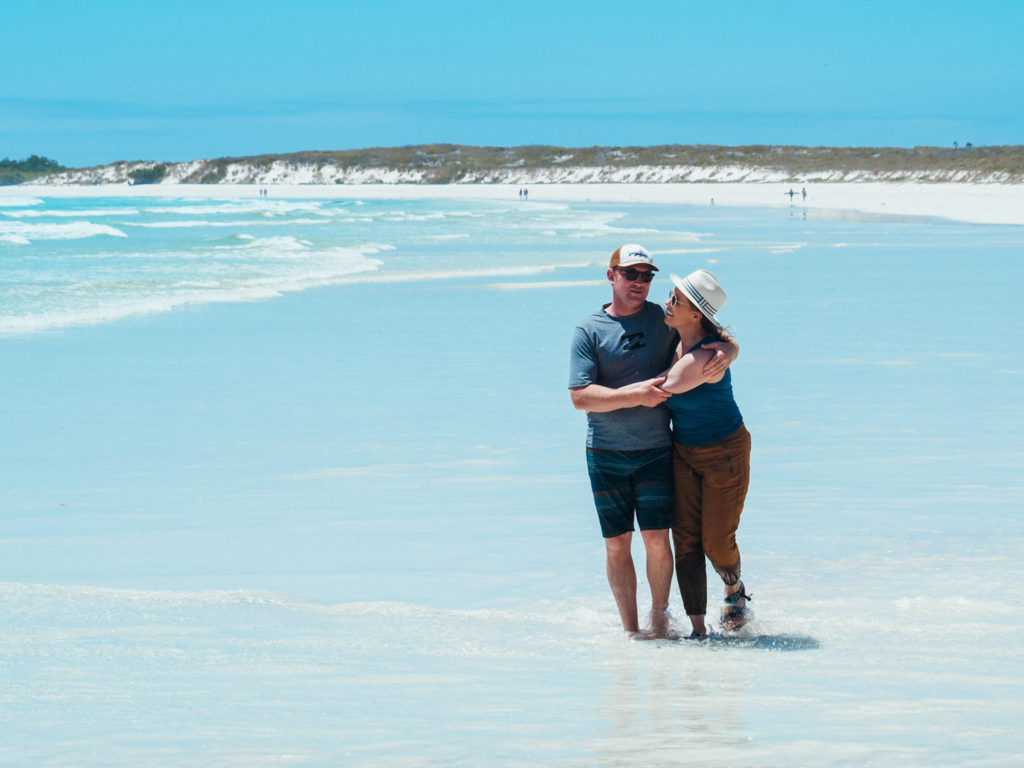
Galapagos Islands Cruise
As mentioned earlier, the highlight of our time in the Galapagos was on a small cruise with Galagents Galapagos Cruises , one of the top cruise operators in the islands. We went on the Eco Galaxy catamaran and honestly, we couldn’t recommend it enough. It was the absolutely the highlight of our entire trip to the Galapagos! One reason we chose to cruise with Galagents is the fact that they are committed to environmentally- friendly practices.
There are a few other really important reasons we chose to cruise with Galagents: one, they only operate small cruises. All of their cruises have a maximum capacity of 16 passengers or guests, plus about 10 staff members. We love this! This makes for a more intimate experience where you get to know the other guests on the ship. After 5 days living aboard the Eco Galaxy, we had made some great friends! (*Side note: You could book a cruise with 16 family members/friends and pay the same price and basically have your own chartered boat!)
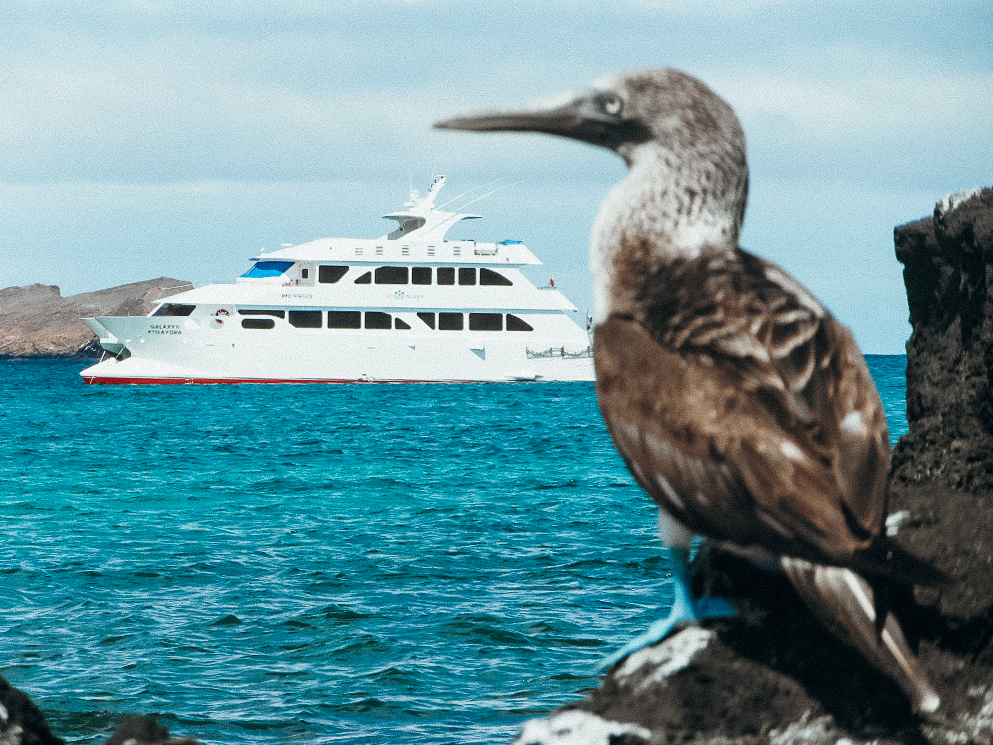
Another perk of going with Galagents Galapagos Cruises is they offer different options in terms of length of cruises and prices. We did the 5 day/4 night cruise, but they offer 4 day up to 8 day options. Make sure to check out all the itineraries and different ships to find the best one to suit your budget and schedule. If you are traveling to the Galapagos during Covid times, it’s important to note that Galagents is following every precaution and biosecurity measure to ensure guests and staff are safe . You can read about Covid requirements to travel to the Galapagos here or here .
What’s included in your cruise with Galagents? Your own private room or cabin (with a bathroom), ALL meals and snacks, a guide, the use of wetsuits and snorkels, kayaks and/or paddle boards . Basically everything is included except alcoholic drinks, tips to the staff/guide, and of course, your transportation to and from the Galapagos. We loved the cabins–they were spacious, comfortable and each had windows with views.
The staff aboard the Eco Galaxy was outstanding, helpful and extremely friendly. Our guide spoke English and was very professional and knowledgable about the islands. In fact, our specific guide (from the Galapagos!) has been guiding for over 30 years! He guided us on both land and sea excursions.

Each day on the cruise you stop at different places of interests on the islands. Depending on your schedule and itinerary, you might have longer travel times between destinations, however most of the “cruising” time happens at night while you are sleeping. This is great because it means more time on land to explore and spot wildlife, plus plenty of snorkeling and water based activities. Generally speaking, every day after breakfast is a land excursion for a few hours where you will walk/hike, and look for wildlife.
You will observe different kinds of iguanas (some endemic to the Galapagos) , frigate birds, blue-footed boobies, flamingoes, pelicans, swallow-tailed gulls, Darwin’s finches, red-billed tropic birds , and more. There are also plenty of sea lions lazily sun bathing on the beach–such fun and curious creatures to watch in the wild. Probably the most significant thing about the wildlife in the Galapagos is they don’t fear humans–even the birds. They co-exist on these islands in peace and harmony because for hundreds of years the wildlife has been protected here, meaning they don’t feel threatened by humans!
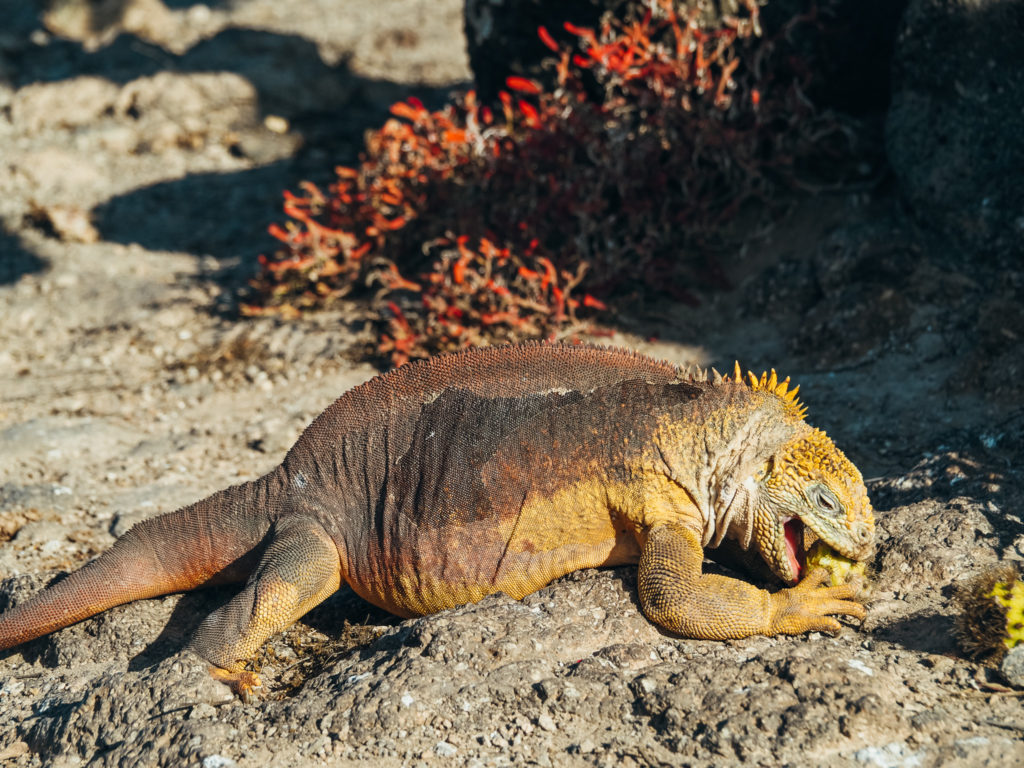
Typically after a land excursion with Galagents , the pangas (small boats) will take you back to the ship where you will eat lunch and have some down time on the boat before heading out for a sea excursion in the afternoon. Some days depending on the length of the land excursion though, you might do a sea excursion first, then have lunch and head to a different island for another land excursion later in the day. It is all dependent on your itinerary and schedule. Swimming with the marine life was the best part of each day on the cruise with Galagents.
Every day you are guaranteed to see a plethora of marine animals and tropical fish–from sea turtles, marine iguanas, sting rays and eagle rays, sea lions, and even sharks . We saw several white tip reef sharks, hammerheads, and even a Galapagos shark. The sea lions were probably our favorite though because they are so playful and curious.
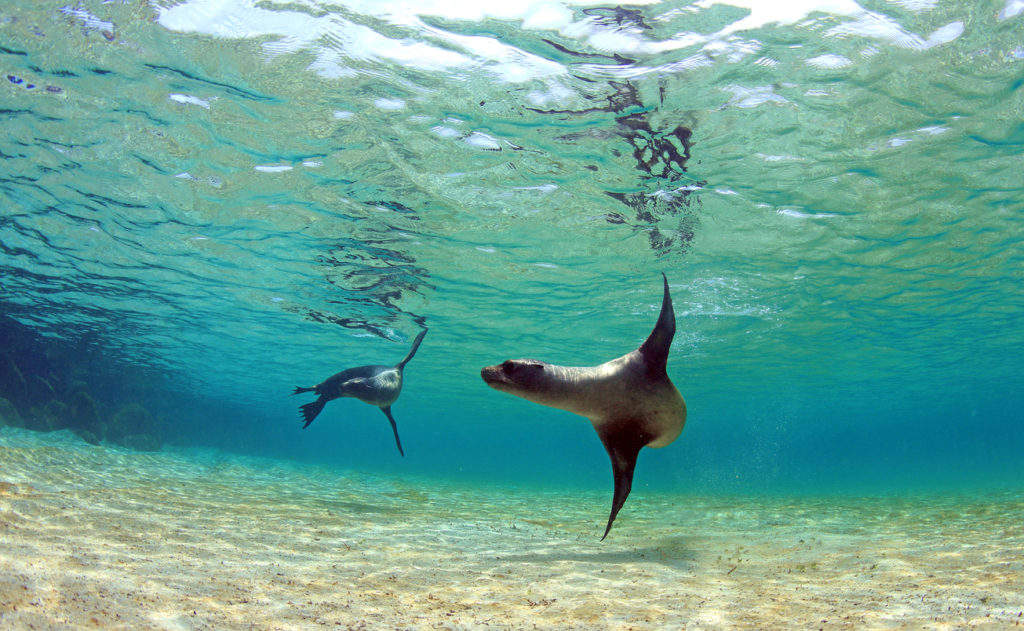
Living aboard a boat and cruising around the Galapagos is absolutely the best way to really experience these enchanting and unique islands because you see a side of the Galapagos that most don’t see. You get off-the-beaten-path and have a once-in-a-lifetime adventure that the whole family will never forget. For more information on your cruising options, including cost, what it includes, itinerary options, activities and more, make sure to check out the Ultimate Galapagos Itinerary .
If you decide against doing a cruise perhaps due to budget, no worries! You can still experience the magic of the Galapagos Islands via more land-based activities on the main islands of Santa Cruz, San Cristobal, and Isabela . We have included more information and details about the Galapagos in our comprehensive guide which covers what to do on some of the other islands, getting around (such as how to island hop), estimated costs for things like national park entrance fees, dining out, and MORE.
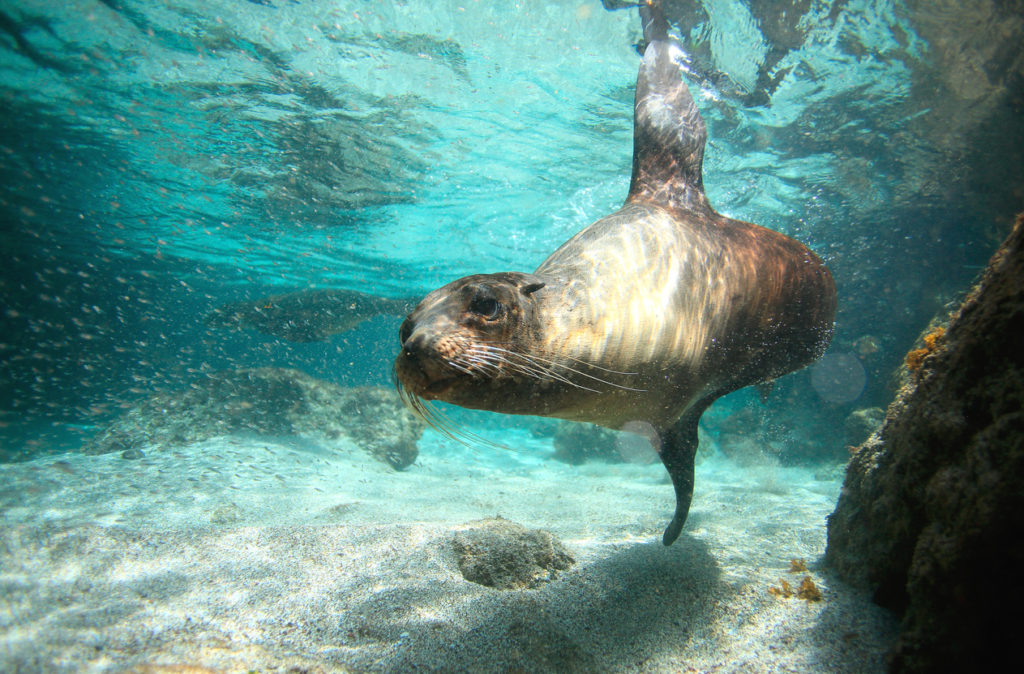
Ecuador is one of our favorite countries for a plethora of reasons–incredibly, diverse landscapes, wildlife, adventure, rich culture and history. We also love that it’s easy to get around since it’s such a small country! It’s one of those places that you want to return to over and over again because you just can’t get enough. If you want a unique trip of a lifetime, you don’t want to miss the best 2 week Ecuador itinerary which will give you a small taste of some of the most incredible places in all of Ecuador.
- Australia and Oceania
- Central and South America
- Destinations
- El Salvador
- Guest Posts
- New Zealand
- North America
- Tips & Recommendations
- United States
- West Virginia
Recent Posts
- The Perfect Winter Road Trip in Wyoming
- The Most Epic 10 Day Patagonia Itinerary
- The Ultimate Fall Road Trip in West Virginia
- The Best Family Winter Trip in Eastern Idaho
- The Best 2 Week Ecuador Itinerary
Nomadic Matt's Travel Site
Travel Better, Cheaper, Longer
Ecuador Travel Guide
Last Updated: September 1, 2023

Offering stunning landscapes, the country also boasts delicious food, plentiful mountains, and hospitable people.
It’s also home to the bucket-list-worthy Galapagos Islands, one of the country’s main draws and home to rare and iconic wildlife.
But there is much more to Ecuador than the Galapagos.
Adventure lovers will be keen to explore the Ecuadorian Amazon or climb one of the country’s many volcanoes, including the world-famous Cotopaxi Mountain.
This tiny country packs a lot of punch and this Ecuador travel guide can help you make the most of your trip.
Table of Contents
- Things to See and Do
- Typical Costs
- Suggested Budget
- Money-Saving Tips
- Where to Stay
- How to Get Around
- How to Stay Safe
- Best Places to Book Your Trip
- Related Blogs on Ecuador
Click Here for City Guides
Top 5 things to see and do in ecuador.
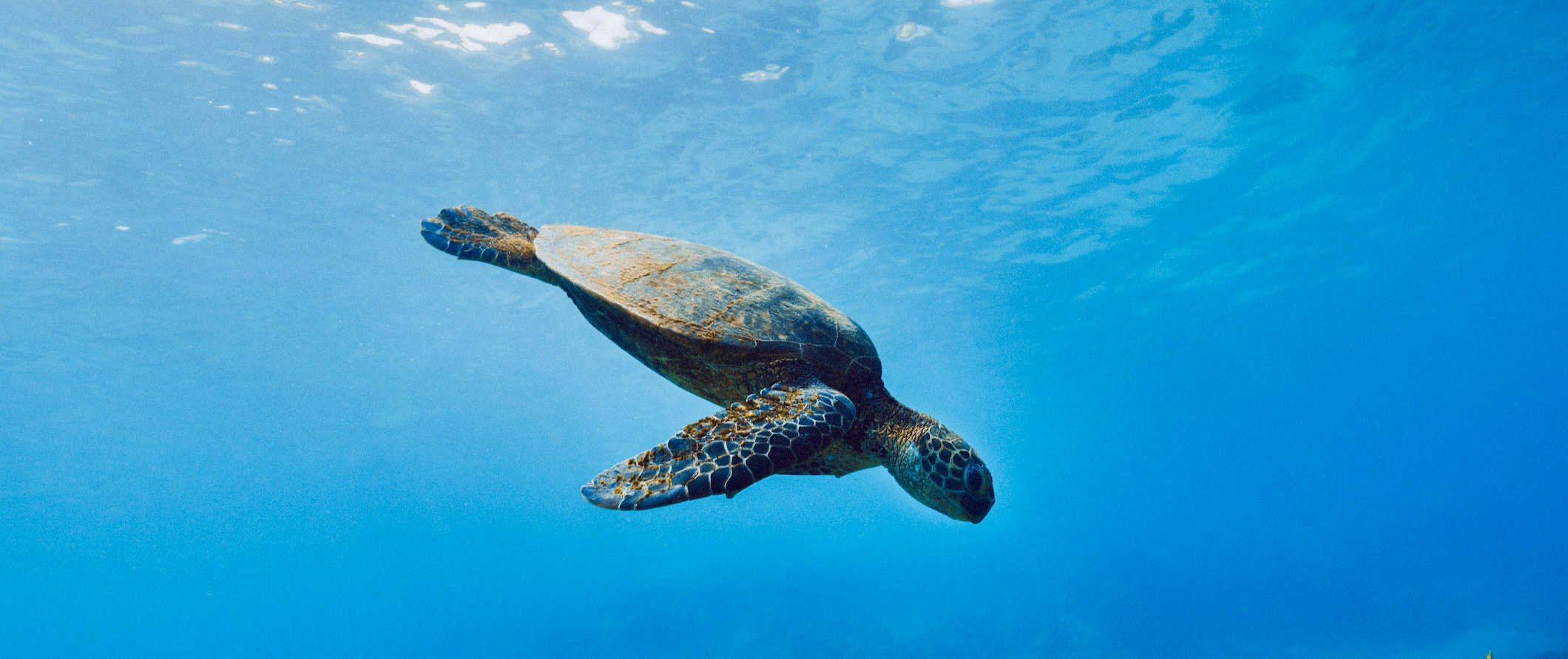
1. Enjoy Quito
Ecuador’s capital is beautiful and energetic. Head to the city’s Old Town to see its historic colonial past. Quito also has plenty of colorful markets to explore with vendors selling incredible indigenous crafts, art, textiles, and delicious local food. The city’s largest and oldest church, Monasterio de San Francisco, features some of the original tilework from its construction in the 16th century and a staircase that was originally designed for the Vatican. Quito is the closest major city to the equator as well, so you can straddle the line and be in both hemispheres at once!
2. Hike Cotopaxi Mountain
Cotopaxi is Ecuador’s second-highest mountain and was the world’s highest volcano until the Chilean volcano Tupungato erupted in 1986. This 12,500-foot-tall snow-capped monster is popular with hikers and mountain bikers. Climbing the entire mountain usually takes about two days and is considered moderately difficult due to the steep climbs and high altitude. It’s best for experienced hikers and climbers who have some training. There are plenty of shorter hikes available, however, including the short (but steep) walk to the first refuge at the base of the volcano. Guided day trips range from $50-90 USD per person.
3. Explore the Galapagos Islands
There are few places in the world that offer wildlife spotting opportunities as good as the Galapagos Islands. The Galapagos Islands were formed from active volcanoes and they’re most famous for being the birthplace of Darwin’s theory of evolution during his visit in 1835. From marine iguanas and Galapagos penguins and sea lions to orcas, manta rays, and the Giant Galapagos tortoise (some tortoises are more than five feet long), these islands are teeming with a wide variety of life. Book a multi-day visit to make the most of your time. While not cheap, it’s worth every penny!
4. Adventure in Ibarra
Located 90 minutes outside of Quito, Ibarra is perfect for adventure travel and indigenous visits. It’s a beautiful city with quaint cobblestone streets and colonial-style whitewashed buildings surrounded by the Andes Mountains. Consider rafting, swing jumping, trekking, climbing, kayaking, and more. Don’t leave without trying their handmade ice cream — it’s a local delicacy made in bronze bowls with fruit, sugar, and ice.
5. See the Amazon rainforest
Approximately half of Ecuador is covered in the Amazon rainforest. There are five National Parks located within Ecuador’s Amazon jungle. Yasuni National Park is believed to be the most biodiverse place on the planet and has been named a UNESCO World Biosphere Reserve. Over 1,000 species of animals can be found in the forests and lagoons of the Ecuadorian Amazon, including tapirs, monkeys, jaguars, and ocelots. Temperatures in the Amazon remain hot year-round, and it might rain at any time, but if you’re prepared it’s possible to visit year-round. Ecuador offers one of the quickest routes to the Amazon in South America. A day trip costs $150 USD while multi-day tours start at $350 USD.
Other Things to See and Do in Ecuador
1. see baños.
This small town lies high in the Andes and on the hillside of Ecuador’s most active volcano, Tungurahua. Besides the fantastic volcano treks, visitors also flock to Baños to experience the healing powers of its hot springs and to give thanks for miracles performed at the Church of the Virgin of the Holy Water. It’s also the country’s adventure capital, with lots of biking, white water rafting, bungee jumping, ATV rentals, and a circuit of beautiful waterfalls to visit. Prices vary, but activities are not expensive. Bungee jumping, for example, is only $20 USD, while white water rafting is just $30 USD for a half-day trip.
2. Wander the Otavalo Market
Otavalo, located less than 100 kilometers (60 miles) from Quito, is Ecuador’s most famous indigenous market. Handicrafts, jewelry, necklaces, musical instruments, and clothing are just a few of the things you can buy at this expansive market, one of the largest in all of Latin America. It’s open daily from 7am-6pm, but it’s best to arrive early in the day.

3. Visit Cuenca
Cuenca is Ecuador’s third-largest city. Designated as a UNESCO World Heritage Site, Cuenca has colonial buildings, churches, and cathedrals that are extremely photogenic. The city is also thought to be Ecuador’s intellectual capital and has been dubbed the “Athens of the Andes.” Activities range from climbing the towers of Cathedral de la Inmaculada, for a stunning view of the city for only $2.50 USD to pampering yourself at Piedra de Agua with a relaxing soak in the heated mineral baths ($15 USD for 3 hours). Be sure to stroll through Mercado de las Flores (Flower Market) to take in the local pace of life.
4. Explore Ingapirca
Ingapirca is Ecuador’s premier Inca site and is located in the Canar Province, near Guayaquil and the country’s Pacific coast. Dating to the 15th century (not long before the Spanish arrived), the crowning glory of the site is the Temple of the Sun, which is a circular building made of intricately carved stones so as to fit together without mortar. There is also a burial site and a series of low walls which are ruins from various other historic buildings. A guided tour costs $45-50 USD.
5. Relax in Montañita
This surfer’s paradise is a relatively new addition to Ecuador’s list of attractions, although its reputation for pristine beaches and perfect waves has been growing steadily over the years. This is a proper backpacker’s paradise with laid-back beach parties, live bands, and inexpensive accommodations. A week-long surf camp (including lessons, accommodation, and food) costs as little as $500 USD.
6. Go whale watching in Puerto Lopez
One of the many tourist towns that lay along the coast is Puerto Lopez. Not so much of a surfing spot, it’s known instead for its incredible whale watching season. Witness the humpback whales in action, and then check out the blue footed boobies (a very rare bird species) at La Plata island (also referred to as “the poor man’s Galapagos” as the same animals found in the Galapagos are also on La Plata). Full-day tours that combine whale watching and an island visit cost $35–45 USD (plus a $15 USD national park fee).
7. Learn Spanish
There are hundreds of places to take a language course in this country if you’re looking to improve your language skills. If you are going to visit for a prolonged period of time, it might be a good idea to take a couple of lessons. Two top-rated schools are Yanapuma Spanish School and Simon Bolivar Spanish School, which have locations in Quito as well as other cities around the country. Each class is about four hours long, with prices ranging from $6-12 USD per hour. Courses run anywhere from 1-4 weeks long so you can pick an option that suits your budget and language needs.
8. Explore the lava tubes
North of Puerto Ayora, there are tons of underground tunnels that have been formed from molten lava. For $3.50 USD, you can take a self-guided tour or pay more to go with a guide. It’s pretty freaky being in these huge lava tubes but pretty amazing too and something you won’t really find in other destinations.
Ecuador Travel Costs
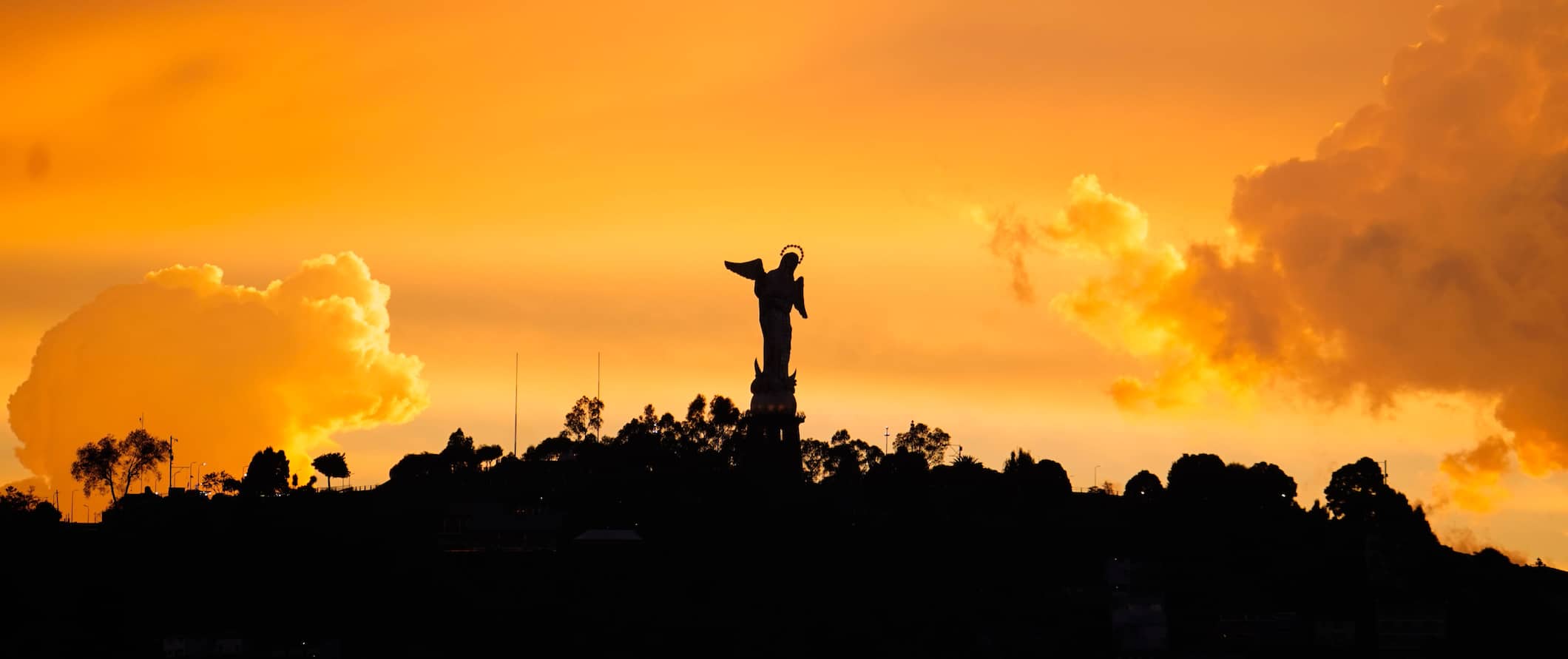
Accommodation – Accommodation is inexpensive in Ecuador. Dorms start around $6 USD per night, while a private room ranges from $10-50 USD. Free Wi-Fi is standard, and many hostels also include free breakfast.
For those traveling with a tent, camping is available all around the country. Campground prices vary but can be found for as little as $5 USD. Most national parks have spots in or around them.
Budget hotels are only slightly more expensive than hostels, with prices starting around $25 USD per night. Free Wi-Fi and free breakfast are common. For a hotel with a pool, prices start at $30-40 USD per night.
Airbnb is also available, with shared accommodation starting at $15-20 USD per night. For an entire home or apartment, expect prices to begin around $25 USD (though prices average closer to $50 USD).
Food – The local fare of Ecuador features ilapinchagos (fried potato cakes stuffed with cheese), ceviche , empanadas, arroz con pollo (chicken with rice) , and cuy (roasted guinea pig). Seafood is common, owing to its location on the ocean. Potatoes with roasted pig is a popular dish in the mountainous regions, while cassava (also known as yuca) is a common staple near the jungle.
Traditional meals typically cost between $3-5 USD. You can find food stalls on the street for around $1-2 USD. Western-style meals cost around $10-12 USD.
For a meal at a mid-range restaurant, expect to spend around $20 USD per person.
Beer is just $2.50 USD while a latte/cappuccino is $2.34 USD. Bottled water is $0.60 USD.
If you’re planning on shopping in the markets and grocery stores, you can expect to spend around $20-30 USD per week on basic groceries like bread, milk, eggs, cheese, chicken, fruit, and veggies.
Backpacking Ecuador Suggested Budgets
On a backpacking budget of $30 USD per day, you can stay in a hostel dorm, eat some street food and cook some meals, take a free walking tour, and use public transportation to get around. If you plan on drinking, add $5-10 USD per day to your budget.
On a mid-range budget of $105 USD per day, you can stay in a decent hotel, eat out for all your meals, take the occasional taxi to get around, enjoy a few drinks, paid tours, and visit most museums.
On a “luxury” budget of $245 USD per day, you can stay in a top hotel, rent a car or take more taxis, eat out anywhere you want, and take as many tours as you want. This is just the ground floor for luxury though. The sky is the limit!
You can use the chart below to get some idea of how much you need to budget daily, depending on your travel style. Keep in mind these are daily averages — some days you’ll spend more, some days you’ll spend less (you might spend less every day). We just want to give you a general idea of how to make your budget. Prices are in USD.
Ecuador Travel Guide: Money-Saving Tips
Ecuador is an affordable destination, however, it never hurts to save money! Here are a few tips to cut down your costs during your visit:
- Stay at hospedajes – These family-run guesthouses are all over the country and have rooms for just a few dollars per night. They’re one of the cheapest options available for accommodation.
- Eat at the markets – This is the place to do your food shopping. You can find meals (or buy groceries) for just a few dollars, making this the best way to eat cheaply in the country!
- Embrace almuerzos – Many restaurants have almuerzos , cheap lunches from a set menu. These are usually just a couple of dollars and usually include a drink. If you want to eat out for cheap, this is a great choice.
- Carry small change – Forget about carrying any bills over $20 USD as you’ll have trouble changing them — even $20s can be difficult to break in small towns. Keep change on hand for smaller purchases.
- Book last minute tours – Galapagos cruises are expensive. By booking your tour in Quito last minute, you can save up to 40% off the cost of the trip. You can also just fly there and see what is around too. If you’re flexible in when you go and can wait around for a spot to open, this is the cheapest option.
- Couchsurf – Use Couchsurfing to find a local who can host you for free. You’ll only get a free place to stay but you get to connect with a local who can share their insider tips and advice.
- Stay at a Hola Hostel – Hola Hostels is a network of hostels predominantly in South and Central America. They offer 10% off to their members, as well as other discounts for food and activities. Joining is free, and their hostels are also committed to environmentally sustainable practices.
- Pack a water bottle – A water bottle with a purifier will come particularly in handy in Ecuador since you can’t always drink the tap water. Save money and thousands of plastic bottles and get a reusable bottle that can purify the tap water for you. My preferred bottle is LifeStraw .
Where to Stay in Ecuador
Ecuador has plenty of fun and affordable hostels. Here are my top suggested places to stay while there:
- Community Hostel (Quito)
- Vibes Hostel (Quito)
- Esperanto B&B Surf Backpacker Hostel (Montanita)
- Hostel Nucapacha (Guayaquil)
- Dreamkapture Hostel (Guayaquil)
How to Get Around Ecuador
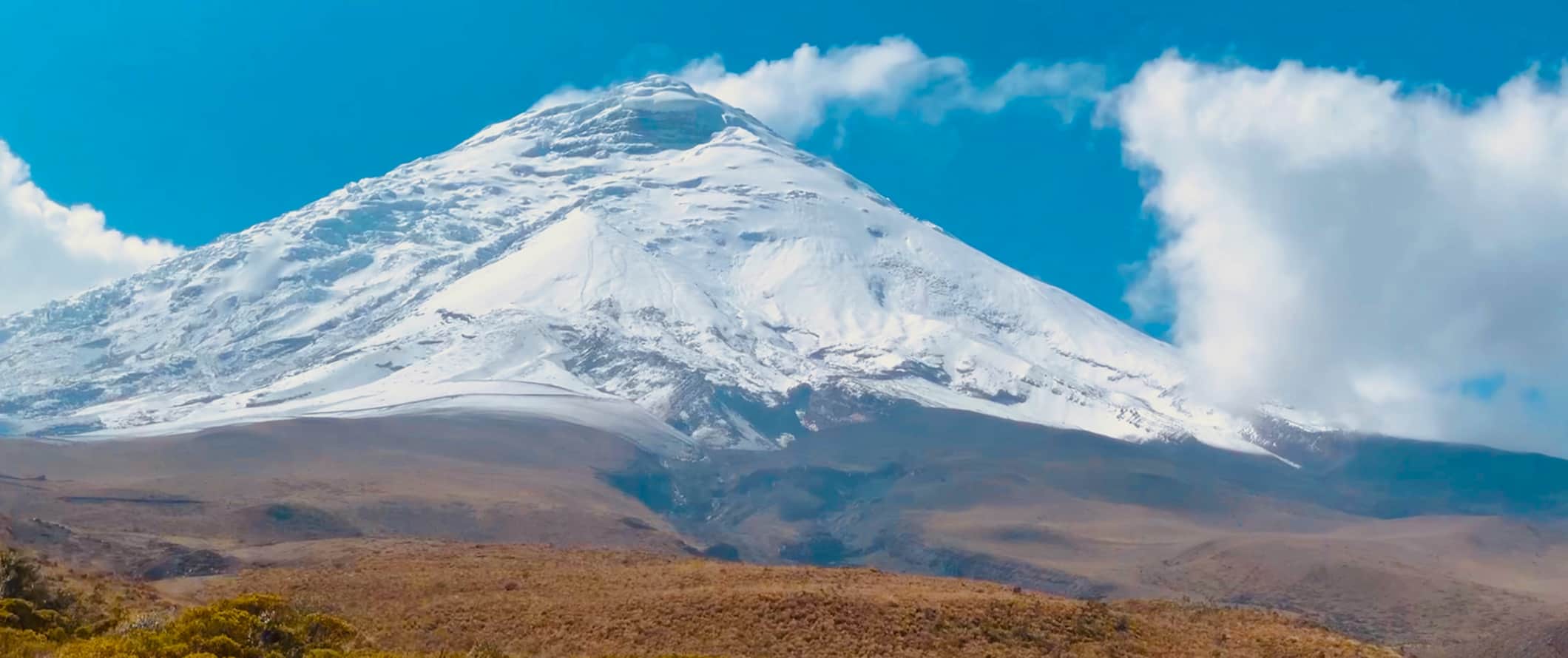
Public transportation – The bus is the most common, efficient way to get around Ecuadorian cities. A local bus ticket costs around $0.25 USD. Bus stops are really only existent in Quito — outside of the city, you’ll generally just have to flag one down and request your stop whenever it comes along.
Bus – The bus network in Ecuador is incredibly extensive, and it’s an easy way to get around the country. Most buses travel along the common backpacking routes. For the 7-hour ride from Quito to Guayaquil, expect to pay between $11-28 USD for a one-way ticket. A 20-hour ride from Quito to Bogota, Colombia costs between $80-100 USD. From Quito to Lima, Peru tickets start at $95 USD for the 29-hour ride.
Typically you can just show up at the bus station to get your ticket, but you can also use latinbus.com to look up routes and prices.
Another option is to book a hop-on/hop-off pass. These passes give you flexibility in your travel but are only available along specific routes. You can hop off and hop on at any time. Wanderbus Ecuador passes start around $249 USD for 11 stops, while longer routes can cost up to $699 USD for 20 stops.
Train – Ecuador’s national railway company shut down during the pandemic and due to lack of funding, has yet to resume operations. There are currently no trains running in Ecuador.
Flying – Flying within Ecuador is affordable, with most destinations being serviced from Quito or Guayaquil. Ecuador’s airlines are:
- Emetebe (Galápagos-based airline)
Flights from Quito to Guayaquil start at $58 USD each way. TAME will also get you to some smaller Ecuadorian destinations, like Quito to Loja for $43 USD (one-way). Flying to the Galapagos Islands is obviously the most practical way to get there, but it’s certainly not cheap. One way from Quito to Baltra (the busiest airport) starts from about $133 USD. Guayaquil to Baltra is about $155 USD. Expect prices to double if you don’t book in advance.
Car rental – Car rentals cost around $35 USD per day, however, the driving conditions are far from ideal (poor road conditions, no driving signs, etc.). Unless you have experience driving in Central or South America, I’d skip the rental as buses are much cheaper and safer.
Renters need to be at least 21 years old. For the best car rental prices, use Discover Cars .
When to Go to Ecuador
Ecuador technically only has two seasons: the wet season and the dry season. But since Ecuador has such varying altitudes, it really depends on where/when you visit.
January to May is the coolest, wettest time of year for most of the country. Navigating the Amazon can be difficult during this time due to road closures and flooding. Temperatures along the coast are milder, and it’s actually quite pleasant in the Galapagos as the ocean waters are calm and warm.
June to the end of September is very dry, and you’ll also experience some of the warmest temperatures in Ecuador. This is peak season, so you can expect higher prices for flights and accommodations. Still, the weather is always nice and the entire country has a fun, upbeat atmosphere. Temperatures near the coast hover around 25°C (77°F), while in Quito the daily average is around 21°C (70°F).
How to Stay Safe in Ecuador
Ecuador is generally a safe place to travel around, even if you’re traveling alone or as a solo female traveler. Petty theft is the most common type of crime in Ecuador. Valuables like laptops, jewelry, and cell phones should be hidden from sight. Transport terminals are especially a hot spot for petty theft so stay vigilant.
In Quito, avoid the Old Town at night. Taxi crimes are a danger in places like Quito, Guayaquil, Manta, and Playas. The US consulate in Guayaquil even forbids its staff from hailing cabs in the street because of the risk of crime.
In a popular scam, someone will hop into your taxi with you once the journey has started and take you on a little tour of the city’s ATMs as they rob you blind. So use caution and have your accommodation call a taxi for you whenever possible.
If you’re worried about scams, read about common travel scams to avoid here .
Solo female travelers should generally feel safe in the country, however, the standard precautions apply (never leave your drink unattended at the bar, never walk home alone intoxicated, etc.). For more information, check out one of the many solo female travel blogs on the country.
If you go out hiking, always check the weather beforehand and bring appropriate clothing, as well as water and a hat.
Always trust your gut instinct. If a taxi driver seems shady, stop the cab and get out. If your hotel is seedier than you thought, move. Make copies of your personal documents, including your passport and ID, in case of emergencies.
The most important piece of advice I can offer is to purchase good travel insurance. Travel insurance will protect you against illness, injury, theft, and cancellations. It’s comprehensive protection in case anything goes wrong. I never go on a trip without it as I’ve had to use it many times in the past. You can use the widget below to find the policy right for you:
Ecuador Travel Guide: The Best Booking Resources
These are my favorite companies to use when I travel. They consistently have the best deals, offer world-class customer service and great value, and overall, are better than their competitors. They are the companies I use the most and are always the starting point in my search for travel deals.
- Skyscanner – Skyscanner is my favorite flight search engine. They search small websites and budget airlines that larger search sites tend to miss. They are hands down the number one place to start.
- Hostelworld – This is the best hostel accommodation site out there with the largest inventory, best search interface, and widest availability.
- Booking.com – The best all around booking site that constantly provides the cheapest and lowest rates. They have the widest selection of budget accommodation. In all my tests, they’ve always had the cheapest rates out of all the booking websites.
- Get Your Guide – Get Your Guide is a huge online marketplace for tours and excursions. They have tons of tour options available in cities all around the world, including everything from cooking classes, walking tours, street art lessons, and more!
- SafetyWing – Safety Wing offers convenient and affordable plans tailored to digital nomads and long-term travelers. They have cheap monthly plans, great customer service, and an easy-to-use claims process that makes it perfect for those on the road.
- LifeStraw – My go-to company for reusable water bottles with built-in filters so you can ensure your drinking water is always clean and safe.
- Unbound Merino – They make lightweight, durable, easy-to-clean travel clothing.
- Top Travel Credit Cards – Points are the best way to cut down travel expenses. Here’s my favorite point earning credit cards so you can get free travel!
Ecuador Travel Guide: Related Articles
Want more info? Check out all the articles I’ve written on Ecuador travel and continue planning your trip:
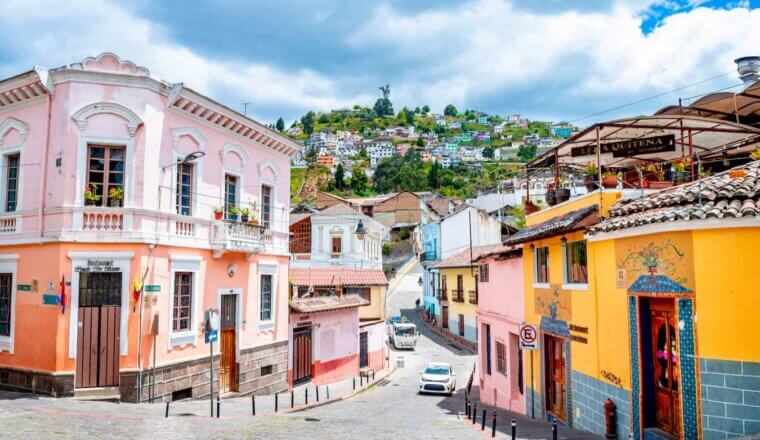
The 13 Best Things to Do in Quito, Ecuador
Get my best stuff sent straight to you, pin it on pinterest.
- Where To Stay
- Transportation
- Booking Resources
- Related Blogs

A 3 Week Ecuador Itinerary for Travelling Around Ecuador!
Categories Itinerary , South America
I spent 3 weeks in Ecuador and I really loved it! In fact, I would go as far as saying it was my favourite country that I visited in South America, and in my top 5 favourite countries ever so I really wanted to share my Ecuador itinerary with you!
Like many countries in South America, Ecuador is very diverse with lots of landscapes but because of its small size, well at least compared to many other countries in South America like Argentina and Brazil!
Ecuador is a lot easier to travel around and one of the cheapest countries in South America to travel around – on average one hour of bus travel in Ecuador is $1.00 USD and there are plenty of really good hostels, therefore it makes backpacking Ecuador really easy or visiting Ecuador on holiday really easy.
This was my 3 week Ecuador itinerary which you can follow or use for inspiration for your 2 weeks in Ecuador itinerary, 1 month in Ecuador itinerary, or however long your Ecuador itinerary needs to be!
3 Week Ecuador Itinerary
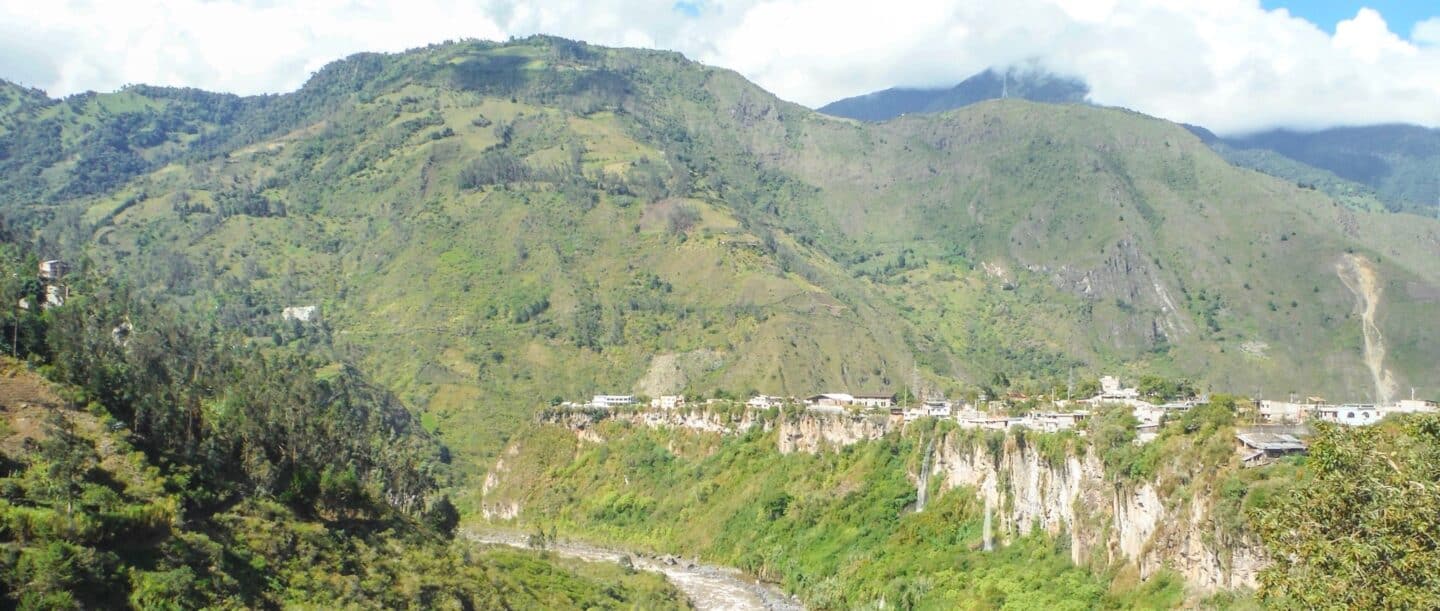
Keep Reading for my Perfect 3 week Ecuador Itinerary!
Ecuador itinerary map
Ecuador Itinerary
I started my trip to Ecuador on the coast because I travelled from P eru into Ecuador by bus to Guayaquil .
I had heard and read that Guayaquil is not a city to be visited because it can be a bit dangerous and, to be honest I was over cities after visiting so many in my South America backpacking trip so far. I stayed in Guayaquil for one night in a hostel near the bus station and the next morning I got a 3-hour bus journey to Montanita.
Montanita is one of the main party towns and party destinations in Ecuador (and South America for that matter) but because I was travelling Ecuador solo and I wasn’t interested in nightlife I didn’t get a good first impression of Montanita.
Even though I was there on a Sunday and it was ‘apparently’ quiet I didn’t like the number of people trying to sell me things, all the neon signs, and the hoards of people on the beach. Montanita felt like Haad Rin in Koh Phangan in Thailand for me, which is great if that’s what you want at that time, but not great if you don’t want it.
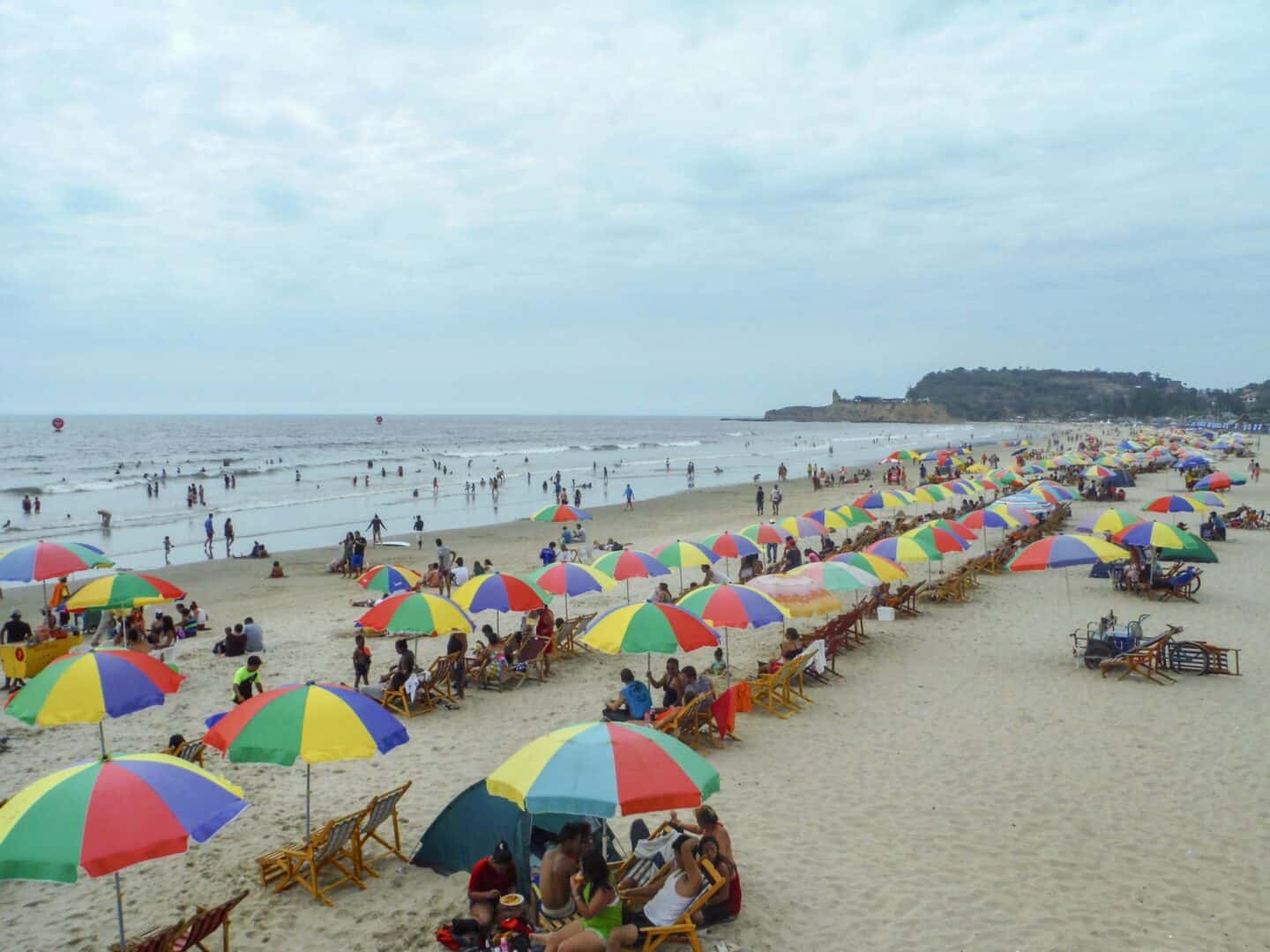
I ended up only staying in Montanita for 1 night on my Ecuador itinerary as it wasn’t my scene but if it sounds like you’ll like it, stay longer!
I decided to spend the rest of the 5 days I’d given myself on the coast of Ecuador on my Ecuador itinerary in a quiet village just 30 minutes up the coast from Monanita- Ayampe.
Ayampe was my favourite place in Ecuador, I was craving a beautiful but quiet beach and this is just what I found!
The village of Ayampe is made up of a few dusty streets, a few restaurants, a surprisingly good number of places to stay, a huge beach and big waves. If you’re looking for a place to surf in Ecuador , this is it and it’s most famous with surfers because of its waves. Along with surf and that general vibe, comes a yoga vibe and community so there are also a number of places to do yoga in Ayampe too.
I spent 3 nights in Ayampe sunbathing, reading, watching the amazing sunsets (the beach is perfectly west facing) and generally relaxing after a busy 2 months in South America so far.
If you’re on a budget in Ecuador note that Ayampe is more expensive than many other places in Ecuador including accommodation and food but this is because it’s pretty remote, not as visited, and the locals want to keep it that way!
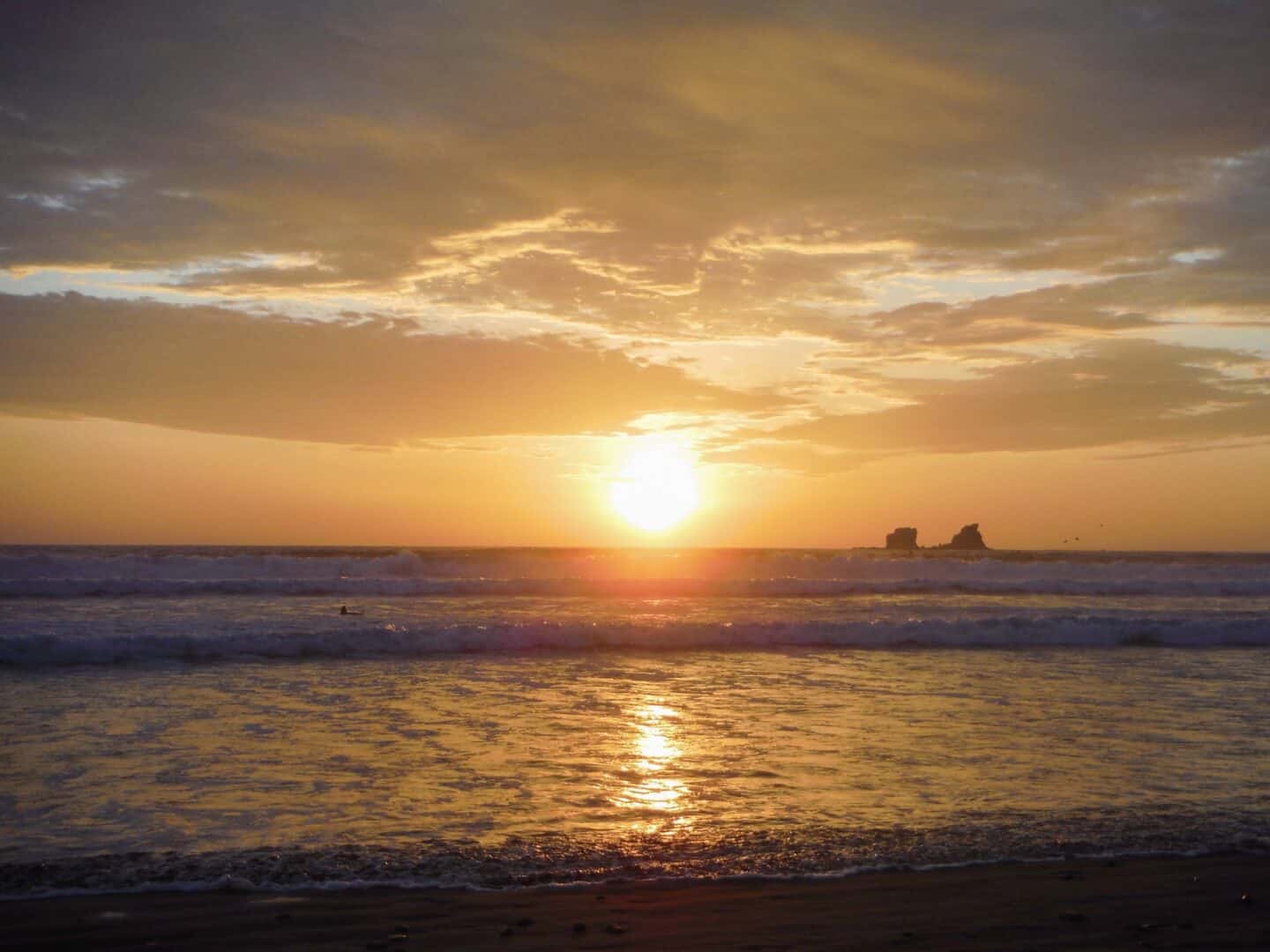
- Related Posts:
- 9 Places you MUST visit in South America as a Backpacker!
- 3 Months in South America Budget! How Much I Spent!
There are many beaches to visit in Ecuador and after being so impressed with the coastline I had seen so far, I toyed with the idea of going further up the coast to the beaches near Manta and even further North to Esmeraldas because I was reading great things about them, but I also had plans of going inland and to the Amazon Rainforest in Ecuador which wasn’t leaving me much time on my 3 week Ecuador itinerary as I only had a few weeks left on my 3 month South America backpacking trip!
So after Ayampe, I headed to the Capital of Ecuador – Quito ! I had to get the public bus back to Guayaquil from Ayampe and then get another bus to Quito which equated to a full travel day and I ended up getting to Quito pretty late at night. I later learned that Quito is not the ideal city to be walking around late in but thankfully I had no issues!
I spent a few days in Quito wandering around the plaza’s and seeing the old buildings. I wasn’t a huge fan of Quito and I did find it a hard city to get around because it’s so huge.
Travel Insurance for Ecuador
Have you got travel insurance for India yet? I am insured with World Nomad’s who I really like because they designed by travellers, for travellers, you can even purchase insurance with them once you have left for your trip. Whilst you’re thinking about it, get a quote from them here !

One of the most popular things to do in Quito is to go to the Equator line which I did! It’s funny because there are 2 tourist information centres at the equator line. One was built but later on, GPS identified it wasn’t in the accurate position, so they built another (LOL)! The biggest tourist complex (pictured below) is the incorrect one and what’s even funnier is the people who work there won’t admit it! You have to go looking for the smaller, real one just a few meters away.
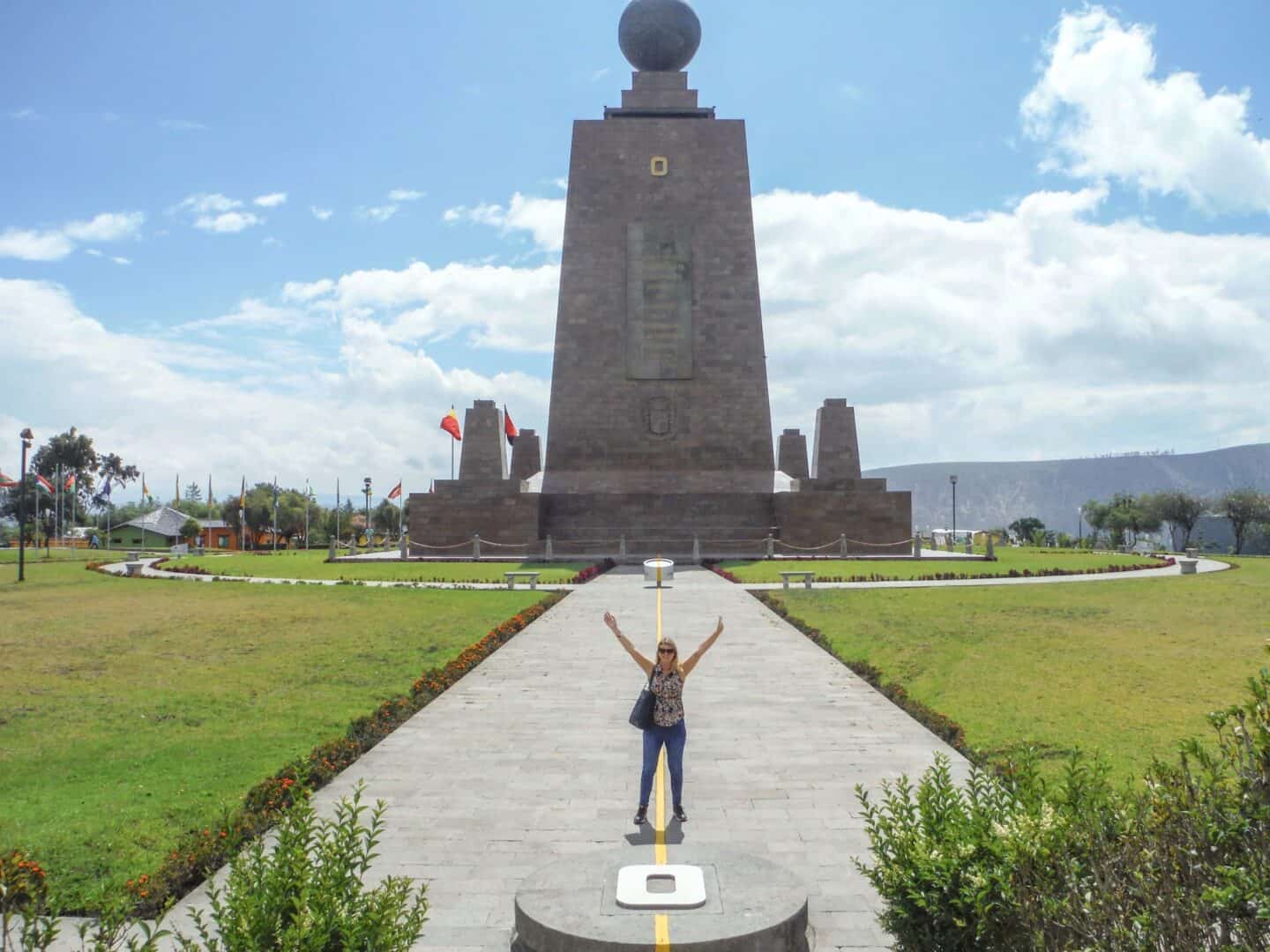
After 2 days in Quito, I got the bus to Banos, the bus journey is only 4 hours from Quito to Banos which is nice and short for Ecuador and South America in general.
I loved Banos ! After Quito, I was pleased to be in a small town with everything nearby and a touristic, backpacker vibe . The hostel I stayed in- Great Hostels Backpackers was really social and I met and got on with more people here than I did on the rest of my 3-month trip! Lots of British backpackers, Aussies and Europeans all up for a good time and a few drinks at the hostel and in the bars and clubs in town.
There are lots of things to do in Banos and lots of places to visit near Banos! Banos is full of adventure activities like canyoning, white water rafting, canoeing, and there’s even a bungee jump off a bridge in the town centre!
Banos is a place you can easily stay for 3-5 nights and I really recommend that you do. It’s the perfect place to chill as a backpacker in Ecuador with plenty to do in the town and outside the town, it’s not as tiring as many of the big South American cities are, so it has to be high on your list of places to visit in Ecuador!
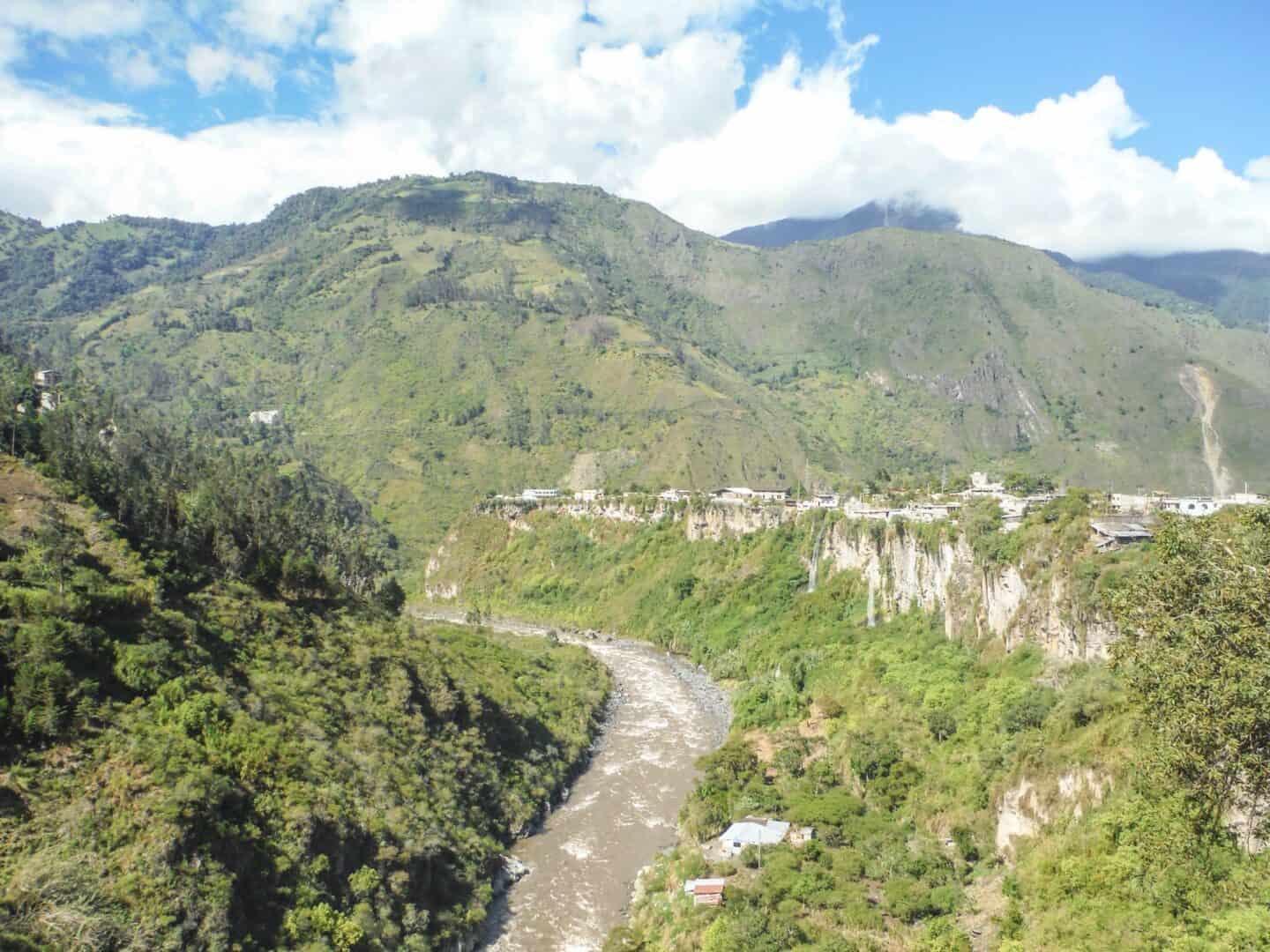
Amazon Rainforest
In Banos, I booked a 4-day, 3-night tour into the Amazon Rainforest for the next stop on my Ecuador itinerary!
From Banos, I got a bus to Ambato which is the nearest city to Banos, waited in the bus station for a few hours and then got an 8-hour overnight bus to Lago Agrio which is where I got picked up and started my tour from. This Amazon Rainforest tour in Ecuador was a highlight of my time in South America!
I spent 4 days staying at Caiman Lodge with a small group of people canoeing around the rivers, looking out for monkeys, birds, snakes, spiders, sloths, dolphins and so much more! We swam in the river and watched some great sunsets from our boat.
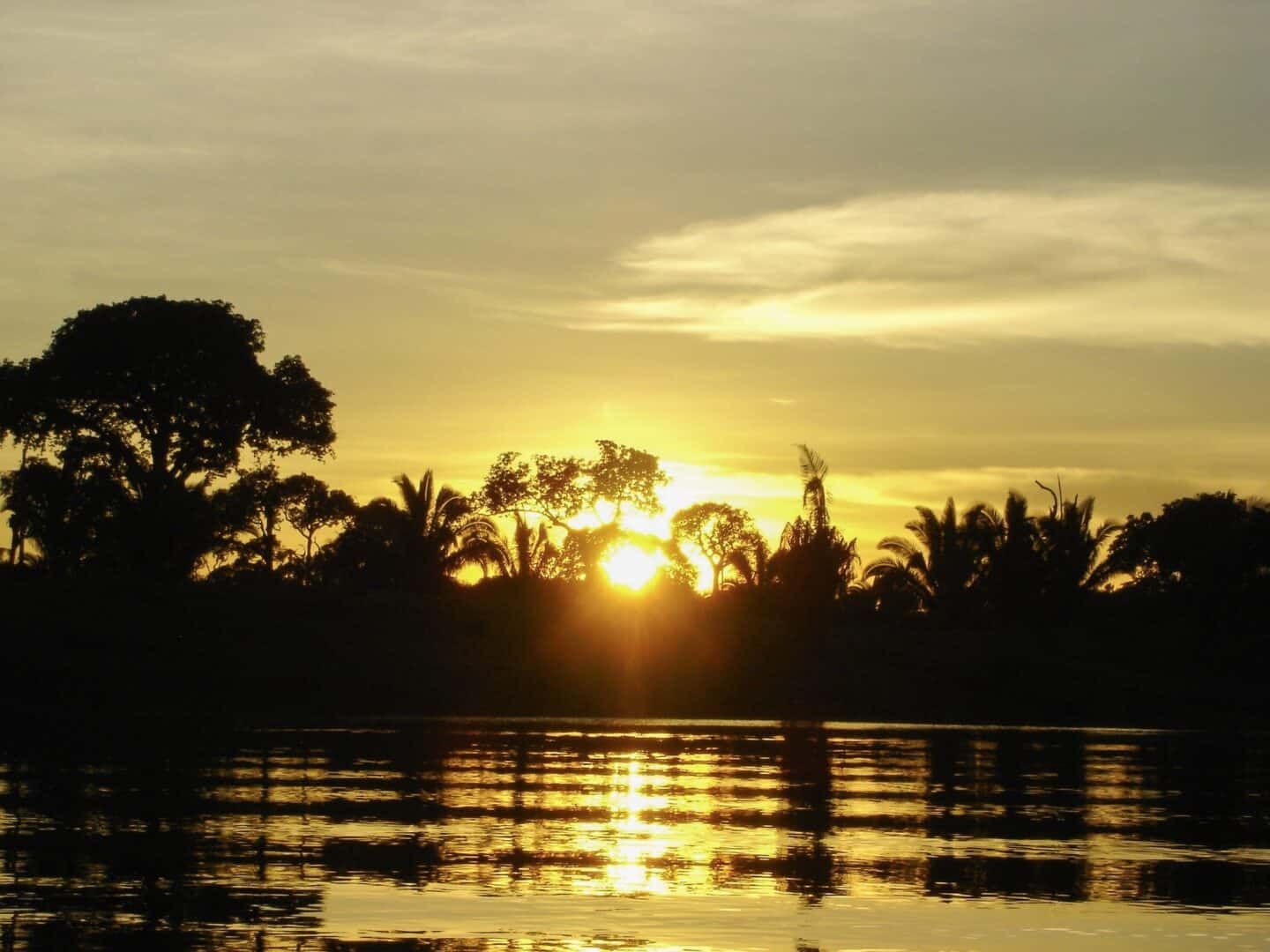
My last stop on my backpacking trip around Ecuador was somewhere I was really looking forward to having been told about it by a few girls I met in Peru a few weeks before. They told me to visit a retreat centre in the mountains of South Ecuador which offers free yoga, a swimming pool, gorgeous views and they have dorm rooms so it’s affordable for travelling Ecuador on a budget! I’m happy to confirm that everything the girls told me about Vilcabamba was true!
I stopped for one night in the city of Cuenca to break up my travels from the North of Ecuador where I’d finished the Amazon Rainforest trip, further South to my final destination. I didn’t expect much of Cuenca but I actually really enjoyed it for the limited time I was there, it’s a very traditional South American city with beautiful buildings!
From Cuenca, I headed to Loja by bus and from Loja I finally reached Vilcabamba! Vilcabamba is pretty close to the Ecuador Peru border and it’s most famous because it’s known as the valley of longevity – aka the town where people live the longest due to the climate, water and generally relaxed way of life!
The town itself is only very small, the centre is literally just a plaza with shops and restaurants surrounding the 4 sides, most of which have been opened by ex-pats because this is also a really popular place for ex-pats to live and work in Ecuador due to the lifestyle they can get here. The plus of that is that there’s some delicious fresh food on offer, in fact as a vegetarian in South America I ate the best food in Vilcabamba of my trip, and there are lots of nice jewellery shops too!
2km from the town centre of Vilcabamba is Hosteria Izhcayluma run by 2 German guys and this is not your usual hotel or hostel. I spent 4 nights and 4 full days here going to morning yoga (in Spanish I’ll add), eating a huge breakfast of fresh fruit, lying in a hammock or by the pool reading, going on some nearby hikes, having a massage and popping into town to eat even more food.
If I hadn’t had to get back to Peru because my flight was leaving Lima soon, I could have easily stayed for one week in Vilcabamba but 4 nights on my Ecuador itinerary was still long enough.
Hosteria Izhcayluma is a hotel but as mentioned they have dormitory rooms for a really reasonable price so be sure to check them out if you want an affordable retreat in Ecuador!
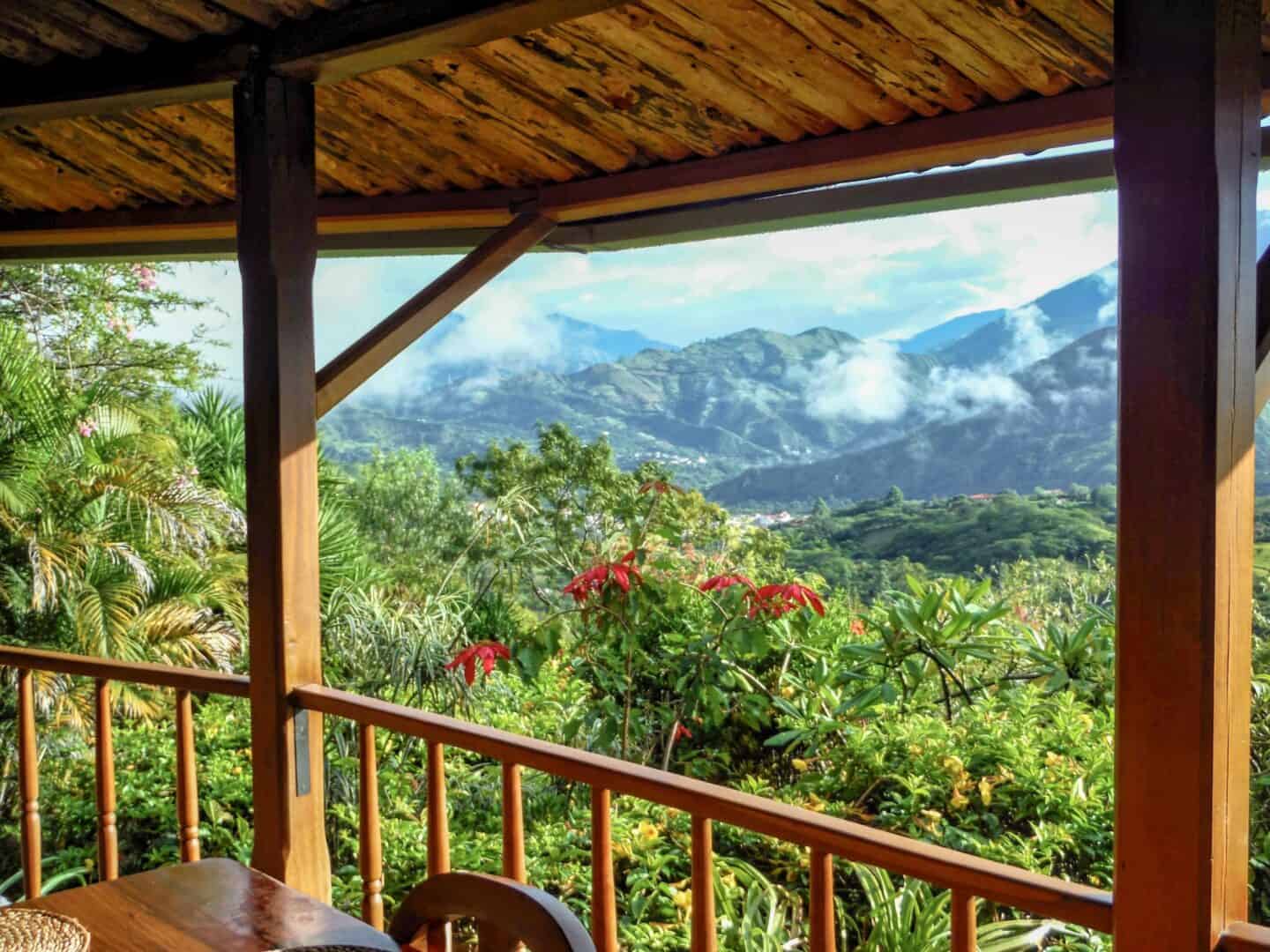
From Vilcabamba, I got a local bus back to Loja to get a bus back to Peru as my flight was leaving Lima in a few days time.
Ecuador was a huge highlight for me on my 3 month South America backpacking trip. It felt s o much easier to travel than Brazil, Argentina, Chile, Bolivia and even Peru which is where I had before Ecuador. It’s cheap to get around on the buses and the journeys are not as long as elsewhere in South America. The backpacker and travel vibe was much more apparent , it was easier to eat as a vegetarian with lots of fresh fruit and there are so many places to visit in Ecuador.
In my 3 weeks in Ecuador, I didn’t get to the Galapagos Islands . I could have gone to way more beaches in the North, I also could have done much more hiking as there are so many volcano hikes in Ecuador plus many mountains to climb.
It’s a country I’m sure I’ll visit again though and I know that you’ll love it too!
If you liked this please share it! 🙂
- Click to share on Facebook (Opens in new window)
- Click to share on Twitter (Opens in new window)
- Click to share on Pinterest (Opens in new window)
- Click to email a link to a friend (Opens in new window)
By using this form you agree with the storage and handling of your data by this website. *
Tuesday 7th of April 2015
I've always wanted to visit South America and really enjoyed seeing all your photos from your trip on Instagram. I never thought about visiting Ecuador before but you have me convinced to make a stop here! Great post! :)
http://www.mintnotion.com
TheWanderingQuinn
Thank you so much! To be honest as you probably read, it wasn't on my original plan either, for some reason I just didn't know much about it or heard much but it was so great! Glad you're planning on visiting. I love seeing your updates too! X
Ecuador in one week: The ultimate guide
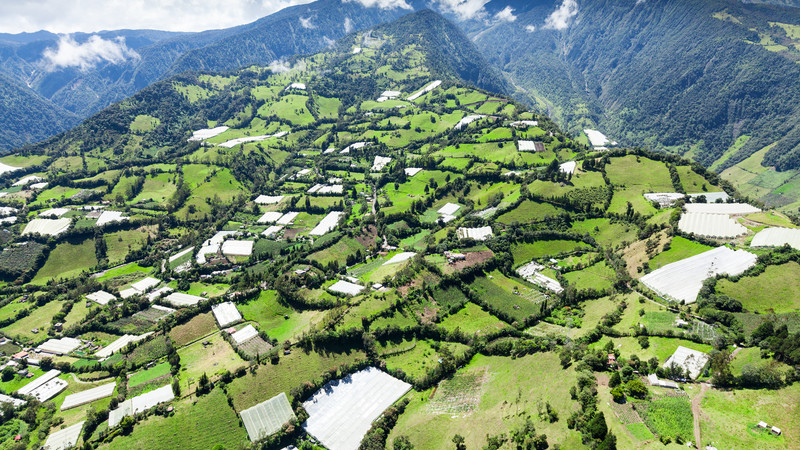
NOTE: This article was inspired by our 9-day Southern Ecuador Highlights adventure.
Bisected by the mighty Andes, with the Amazon on one side and the Pacific Coast on the other, mainland Ecuador only looks small on a map.
Don’t be deceived; you could spend months exploring this country. But if you’re a vacation-deprived North American, take heart: you can still see a lot in a single week.
This 7-day itinerary takes you along Ecuador’s mountainous spine from Quito to Cuenca.
Day 1: Quito
Start your exploration of Ecuador in capital city, Quito. Declared a UNESCO World Heritage Site, Quito’s center deserves the best part of a day. Wander the narrow streets and rest in the leafy squares. Take it easy today as Quito sits at an altitude of 2850 meters (9350 feet), and you will feel easily out of breath.
Whatever you do, don’t miss the ridiculously ornate interior of the Compañía de Jesús and San Francisco churches. The latter sits on its own pigeon-strewn plaza, complete with an outdoor café that is perfect for people watching.
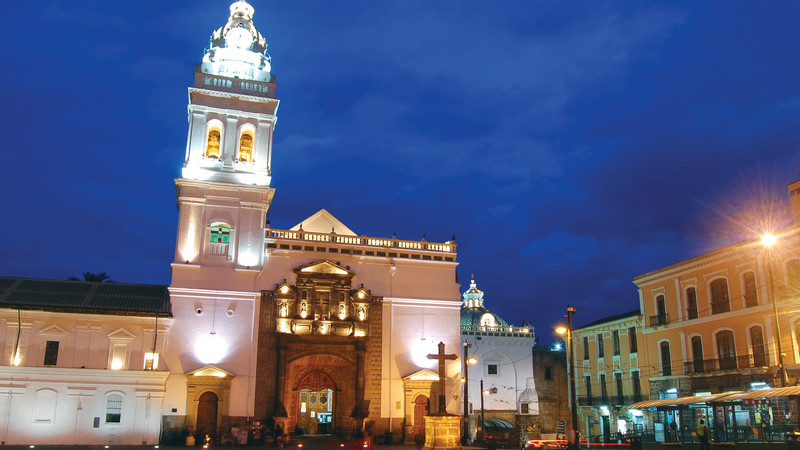
Quito is enchanting by night
In the evening, head to Calle La Ronda, a cobblestone street lined with whitewashed buildings. Have dinner at one of the many restaurants serving typical Ecuadorian cuisine to the sound of live musicians.
READ MORE: EVERYTHING YOU NEED TO KNOW ABOUT VISITING QUITO
Day 2: Quito
Since Quito tends to be sunnier in the morning, start the day with a bird’s eye view over the city. To do this, you have a few options:
- The Basilica del Voto Nacional provides wonderful views of the Old Town and the Virgen de Quito statue on a nearby hill. Be warned that accessing the viewing platform requires crossing a bridge under the roof of the church, then climbing a few narrow ladders.
- If this is not your cup of tea, you could instead walk up to Parque Itchimbia for magnificent views of the city and lots of grassy areas to spread out a picnic lunch.
Those with the soul of an eagle can also ride the telefériQo (cable car) up the side of Pichincha volcano. Reaching a height of 4100 meters (13,451 feet), this gives you the most expansive view over the city and surrounding countryside.
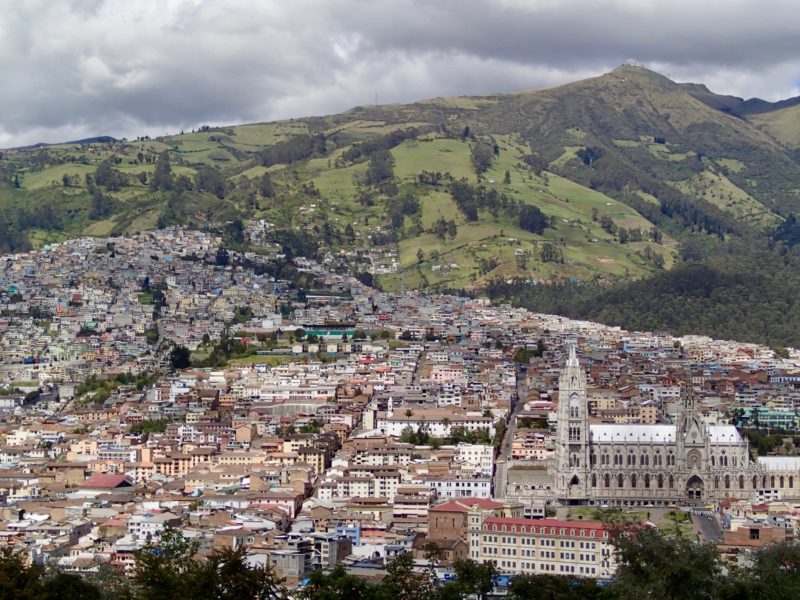
The view of Quito from Itchimbia
In the afternoon, visit Mitad del Mundo , a 20-minute bus ride north of the city. This location marks the site of the Equator, represented by a monument and a line painted on the ground. Have your photo taken with a foot in each hemisphere. Yes, everyone does it!
SUBSCRIBE TO INTREPID’S NEWSLETTER FOR TRAVEL TIPS, COMPETITIONS, GIVEAWAYS & MORE
Day 3: Baños
Set amid gorgeous mountain scenery, Baños is the center for outdoors activities in Ecuador’s highlands. If you don’t arrive too late, eat a cheap set lunch at a local restaurant or grab a bite at the Mercado Central . Also try the sugar cane taffy called melcocha , which is hand-spun in several shops here.
Wandering the streets of this compact town will give you an idea of all the activities on offer: hiking, horseback riding, mountain biking, river rafting, as well as more extreme options. You may want to book something for tomorrow.
Beautiful Banos
On your stroll, also check out Basílica de Nuestra Señora del Agua Santa (Church of the Virgin of the Holy Water), a basilica made of volcanic rock that was built after the Virgin Mary appeared to a local priest in the late 16th century.
If you’re not too tired and have a couple of hours of daylight left, hike up to Mirador Bellavista for a bird’s eye view of the town hemmed in by mountains.
For dinner, try Mestizart for top notch Ecuadorian cuisine or one of the many high quality international restaurants such as Zumo (Japanese fusion).
LOVE BEING ACTIVE? CHECK OUT INTREPID’S 10-DAY RAFT, HIKE & BIKE TRIP
Day 4: Baños
Today you get to indulge in some of your favorite outdoor activities. If you’re just keen on hiking, various trails of different degrees of difficulty leave right from town and take you through lush forests, along the sides of mountains, and past some waterfalls.
After exercising all day, a soak into one of the thermal baths that give the town its name may be just what your weary bones need. You could try the brand new facilities at Termas de la Virgen at the foot of a 79-meter (259 feet) waterfall, right in town. Active volcano Tungurahua is responsible for heating the water of the pools!
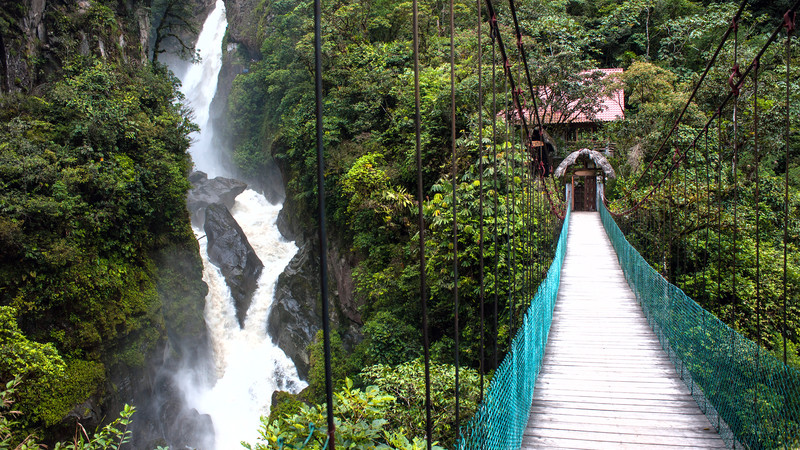
Pailon del Diablo waterfall in Ecuador
If you don’t like crowds, try a spa treatment instead. Jade Spa and El Refugio Spa Garden get very good reviews. Several hotels also offer them.
Either before of after your soak, stop by nearby Casa Hood, a popular and comfy hangout that serves Asian and vegetarian fare.
READ MORE: PROOF THAT ECUADOR IS SO MUCH MORE THAN THE GALAPAGOS ISLANDS
Day 5: Cuenca
Cuenca is my favorite place in Ecuador. It’s a mid-size city with beautiful 16th-century-style Spanish buildings, friendly people, and plenty of restaurants and cultural venues. From Baños, it’s six hours by bus, so you will be getting here by mid-afternoon.
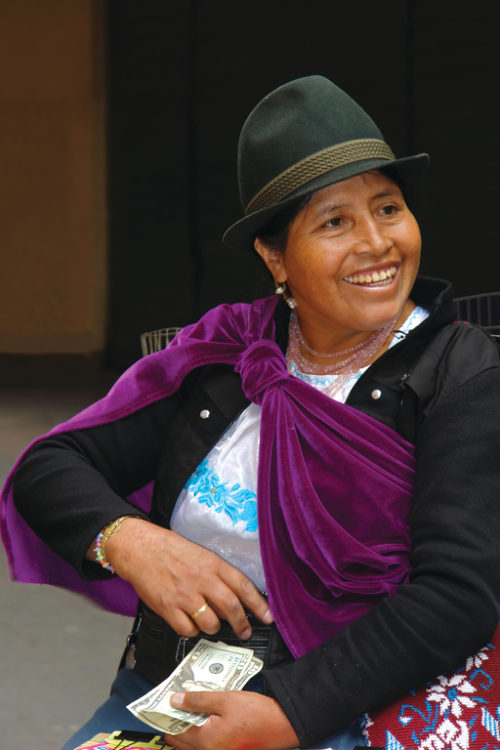
Warm Ecuadorian hospitality
Start your visit of the Old Town by stretching your legs at Parque Calderón , the city’s main square and a pleasant spot to people watch. On the west side is the blue-domed cathedral, whose size you can better appreciate by walking along Calle Mariscal Sucre . Don’t forget to take a look at the flower market across the street.
Spend the rest of the day wandering the narrow streets of the Old Town and making your own discoveries. Then have dinner in one of the small local restaurants, or more mid-range and upscale ones along Calle Gran Colombia .
CHECK OUT INTREPID’S RANGE OF SMALL GROUP TOURS IN ECUADOR
Day 6: Cuenca
After breakfast, walk towards photogenic Tomebamba River, which cascades over boulders and separates the Old Town from the New. A footpath follows the grassy banks of the river and lets you relax away from the traffic. Start by walking northwest, perhaps as far as whimsical little plaza Cruz del Vado .
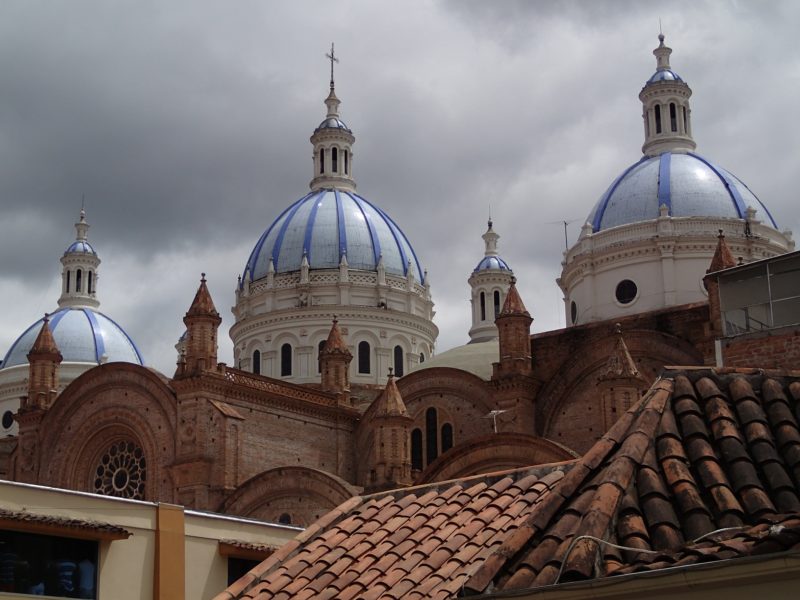
Cuenca’s Cathedral
Double back and head towards popular Moliendo Café where you can grab a cheap-but-filling lunch of Colombian arepas.
On nearby Calle Larga , two museums and some ruins deserve your attention this afternoon: Museo de las Culturas Aborigenes (Museum of Indigenous Cultures), the Ruinas de Todos Santos (a combination of Cañari, Inca, and Spanish ruins) and the Museo Pumapungo, which comes with its own Inca archaeological site.
Have dinner at El Maiz , one of my favorite Ecuadorian restaurants. At night, several bars and nightspots come to life in this part of town.
READ MORE: WHERE TO FIND THE BEST STREET ART IN SOUTH AMERICA
Day 7: Cuenca
Ingapirca is the largest Inca ruin in Ecuador, and while it’s not Machu Picchu, it’s definitely worth a look. The main structure is actually an unusual oval building of Cañari design. Local buses take only 1.5 hours to get there, and two hours should be enough to spend at the site.
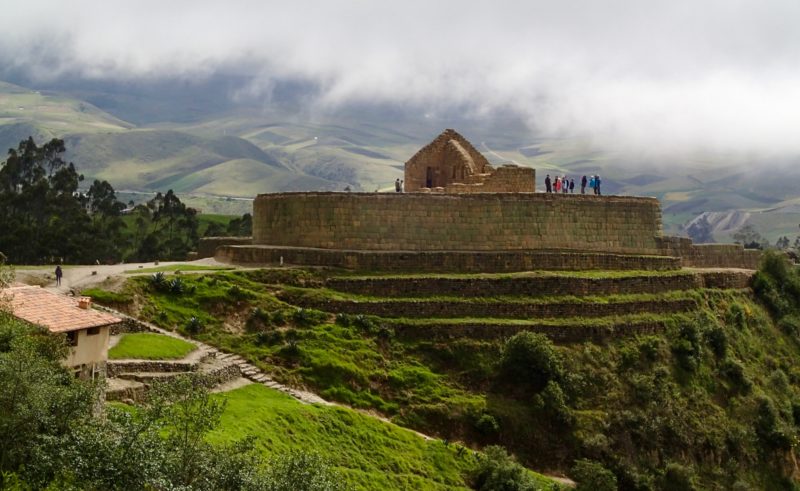
If instead you prefer shopping and handicrafts, make a day trip to some of the artisan villages that surround Cuenca. San Bartolomé is known for handmade guitars, Gualaceo for weavings and fresh produce (including unusual Ecuadorian fruits), and Chordeleg for gold and silver filigree jewelry, ceramic pottery, and Panama hats. (Did you know that Panama hats originate from Ecuador, not Panama?!)
You can get around here by local bus, but it’s easier to join a tour , which also provides English commentary (and local guides) if you don’t speak Spanish. Pick up the perfect souvenir to finish up your incredible one-week trip in Ecuador.
Ready to take on this stunning South American country? Check out Intrepid’s range of small group tours in Ecuador.
(Image credits from top to bottom: Intrepid Travel x2, Marie-France Roy, Intrepid Travel x3, Marie-France Roy x2.)
Feeling inspired?
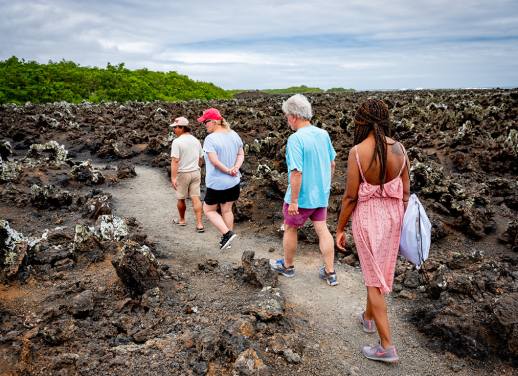
Marie-France Roy
A long-time resident of Toronto, Marie-France is a freelance writer who’s been exploring the world mostly solo for 25 years (although not continuously). She’s especially fond of sunny destinations with good coffee. Her blog bigtravelnut.com focuses on affordable solo travel for the 40+ crowd.
You might also like
5 reasons to visit sri lanka in the..., why 2024 is the best year to see..., 6 unique experiences you can have in el..., from delhi to udaipur, here are the five..., cinque terre vs amalfi coast: which destination to..., love at first bite: 10 famous sandwiches from..., galapagos or madagascar which unique destination should be..., central vs south america: how to plan your..., why road-tripping is the best way to see..., lessons learned on intrepid’s sabah adventure, travelling to chile here’s the best time to....
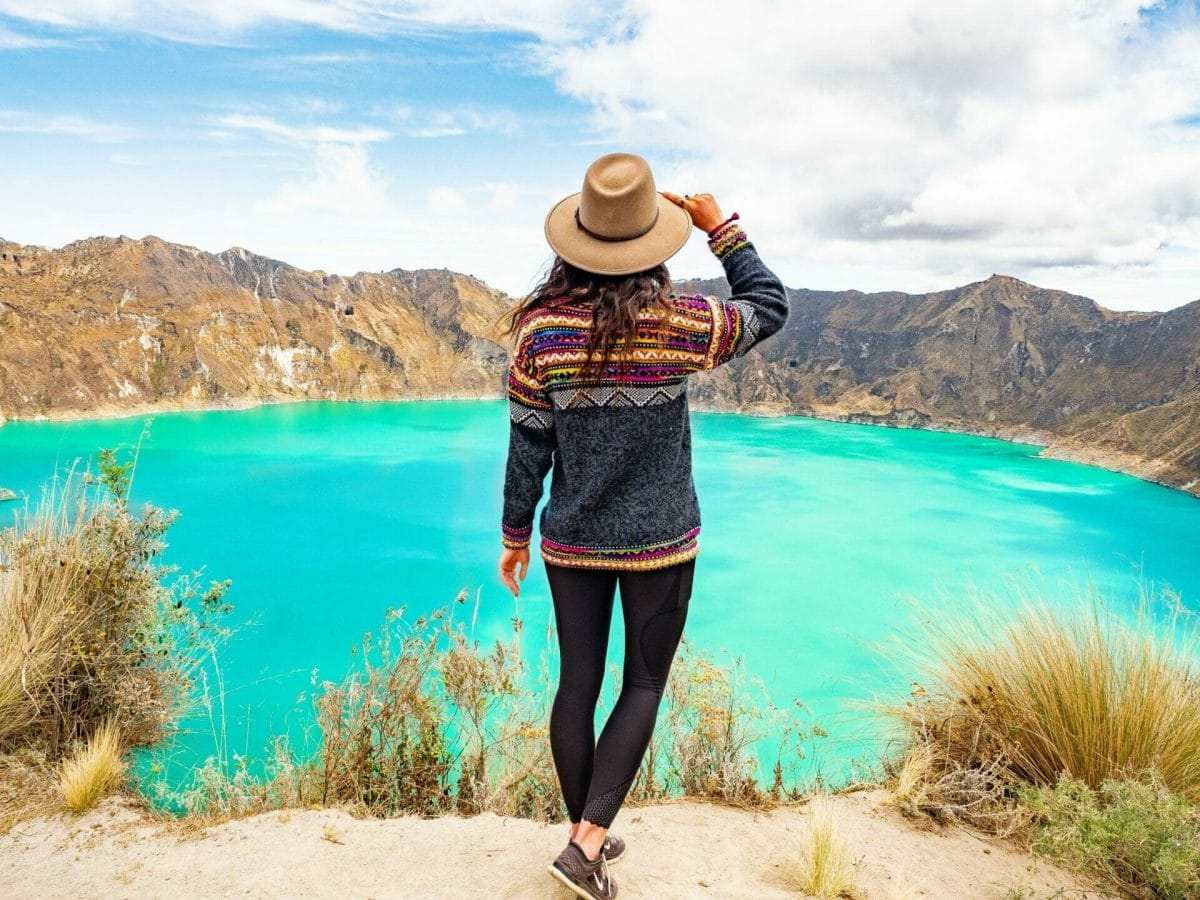
The ultimate Ecuador travel guide
Dozens of active volcanoes, lush Amazon Jungle, UNESCO World Heritage-listed cities, the incomparable Galápagos Islands, and some of the best beaches in South America come together to form this small but amazingly diverse country, a destination quite unlike anywhere else.
Ecuador dazzles, from its incredible food and charming people to its natural beauty and abundance of wildlife, and I can absolutely guarantee that you’ll leave feeling like you experienced something truly special here. This travel guide contains absolutely everything you need to know before visiting Ecuador , including when to visit, how to get around, top sights, itinerary recommendations, health & safety, typical costs, a packing list & heaps more.
What's in this travel guide

Population: 17.6 million
Capital: Quito
Language: Spanish— read more about the Language barrier below
Currency: US Dollars— read more about Money in Ecuador below
Power: Type A plug or B plug (same as the 2- or 3-prong types used in America) at 120V
Visa: A free 90-day travel visa is issued on arrival (at the airport) for citizens of most countries, including Australia , America , and UK
Good to know: The Galápagos have a reputation for being incredibly expensive, and as a result, a lot of visitors to Ecuador skip the islands— but it’s definitely possible to plan an awesome budget-friendly trip! Check out this post for more details on a land-based Galápagos adventure.
Planning your trip to Ecuador
Best time to visit ecuador.
Despite being a rather small country, Ecuador is amazingly diverse in terms of both landscape and climate , often meaning that one region is experiencing heavy rain while another is quite dry.
In the Galápagos , there are generally just two seasons: a wet, warmer season from December to June and a dry, colder season from July to November . Both water temps and underwater visibility can be better in the wet season, but you’ll have clearer days in the dry season and it never really drops below 20, so both are good options. I go into a lot more detail about the best time to visit the Galápagos in terms of weather and wildlife in this post , but suffice to say that anytime is going to be really special. My main advice is to, if possible, avoid high season from November to March and June to August , as the islands will be more crowded, prices will increase, and tours can book out.
Back on the mainland, the Ecuadorian highlands around Quito and the Andes tend to experience their dry season from June to September , whereas the Amazon is (slightly) drier from August to February . Diving with Manta Ray near Montañita ( Bajo Cope or Isla de la Plata) is also best from July to October. Like the Galápagos, mainland Ecuador can be a little busier during European and North American holiday periods , but it shouldn’t really impact your travels at all.

Getting to Ecuador
Flights to ecuador.
A majority of travellers to Ecuador will fly into Quito through the Mariscal Sucre International Airport (UIO), about 1hr outside of the city itself ($25USD in a taxi).
It’s also possible to fly into Guayaquil’s Aeropuerto Internacional José Joaquín De Olmedo (GYE ), and since you’ll probably want to travel between these 2 cities anyway, choose flights based on whatever is cheapest for your dates. It’s also worth noting that you can reach the Galápagos directly from Quito or Guayaquil for essentially the same price and flight time.
Flights to Ecuador can be really reasonable if you shop around, with Sydney to Quito as low as $1400AUD return and LAX to Quito usually hovering around $200-400USD. Use Skyscanner or Momondo to check for the best flight prices.
Buses to Ecuador
It’s also possible to arrive into Ecuador overland from Peru or Colombia on a long bus. There’s a bit of a shuffle involved at the border when you have to disembark, typically walking the final metres into the country via an immigration office to stamp in and out, and then re-boarding the bus on the other side. It’s manageable if you have a basic understanding of Spanish and you keep your wits about you.
If you’re arriving into Quito overland, you’ll most likely come into Terminal Quitumbe, the city’s large bus station located about 30min south of the centre . Expect to pay around $15USD for a taxi , or if you have a local SIM card (see Communication & connectivity below), definitely use Uber for a lower fare.

Getting around Ecuador
Transport between cities, internal flights in ecuador.
Of course it’s possible to fly between cities in Ecuador, but it’s such a small country that I really wouldn’t recommend it over taking incredibly inexpensive and reasonably comfortable public buses. The one exception is getting to the Galápagos Islands , which will obviously necessitate air travel.
LATAM , TAME , and Avianca all operate daily flights from the mainland (Quito or Guayaquil) to Baltra (GPS), which is the main airport for the islands located near Santa Cruz and the route I’d recommend for most people. Read more about flying to the Galápagos in this post.
Public buses in Ecuador
As with most South American countries, Ecuador has a brilliant network of public buses connecting every city, town, and natural attraction , and this is absolutely the best way to get around.
The buses in Ecuador don’t usually have a toilet on board or offer the super comfy semi-cama seats that you’ll find in larger countries, but they do make up for it by being incredibly inexpensive . The general rule is that you’ll pay just $1-2USD per hour of bus travel . You also don’t need to reserve tickets in advance, you can just rock up to the station and buy on the day.
Tourist buses in Ecuador
For most itineraries through Ecuador, there’s also the option to travel with Ecuador Hop , a new hop-on/hop-off bus service from Quito to Montañita via Laguna Quilotoa, Volcán Cotopaxi , Baños , Riobamba, Cuenca, and Guayaquil .
It’s more expensive than travelling by public bus , true, but it has some definite draws— added convenience of hostel pick-up/drop-off, cool extra stops along the journey, and a whole bus of fun backpackers to hang out with. After travelling around Ecuador by public bus and then with Ecuador Hop, I wrote a super in-depth comparison to help you decide which is better for you!
Read more: AN HONEST REVIEW OF ECUADOR HOP
Transport within the city
Taxis in ecuador.
Taxis are an inexpensive way to get around any city in Ecuador (or even between cities if it’s not too far, like Montañita to Ayangue ), but you need to exercise some additional caution. According to several locals, it’s absolutely not safe for a solo female to take a taxi in Quito at night , so either Uber or make sure you’re travelling with a group (make friends at the hostel!)
If you do want to use a taxi, either have your hostel call one for you OR use an app like Cabify or Easy Taxi — this will ensure that you’re getting into a registered taxi who’s far less likely to scam you. These apps also remove the need to negotiate a fare when you have absolutely no idea what a ride should cost. I haven’t heard of anyone having safety issues while using Cabify or Easy Taxi , so they can be a great option if Uber isn’t available.
Uber in Ecuador
Uber is typically the safest, cheapest, and most convenient way to get around, but it’s only in larger cities like Quito and Guayaquil.
Technically, Uber is illegal in Ecuador , so you’ll usually have to sit in the front seat so it looks like you’re just a pair of friends, but I found Uber to be very reliable and consistently inexpensive . I’d recommend it over taking a taxi in almost every situation (with the main exception being the airport, where it’s usually way easier to get a taxi).
Get a local SIM card when you arrive (see Communication & connectivity below) so that you’re able to use Uber, as well as Google Maps, to get around.

Overlooking Isla Bartolomé
What to do in Ecuador
Top sights & destinations in ecuador.
I’ve written comprehensive guides to heaps of destinations around Ecuador, so this is just a brief idea of where to go and what you might do on your trip. Links to more detailed posts are provided throughout.
The country’s high-altitude, volcano-circled capital is one of the absolute best places to visit in Ecuador, with impeccably preserved colonial streets, rich Andean culture, a thriving food scene, and some seriously spectacular views. You’ll likely pass through Quito at the start of your trip and/or en route to the Galápagos, so just make sure to set aside a few days to explore this underrated but vibrant city in the highlands.
WHAT TO DO IN QUITO: 12 AWESOME THINGS TO DO IN ECUADOR’S CAPITAL

Cotopaxi National Park
Home to one of the world’s highest active volcanos, Cotopaxi National Park is just a few hours from Quito and among the best ways to get outside in the high-altitude mountains of Ecuador. Some of the top activities in the National Park include scenic horse rides through the mountains, beautiful Laguna Limpiopungo, and hiking to the base of the Cotopaxi Glacier at 5,000m.
HIKING TO REFUGIO JOSÉ RIVAS & COTOPAXI GLACIER IN ECUADOR

Laguna Quilotoa
This impossibly-turquoise crater lake situated in the caldera of an active volcano is one of Ecuador’s most impressive natural wonders. Whether you have several days to complete the Quilotoa Loop trek or just an afternoon to walk around the rim, Laguna Quilotoa is a definite highlight.
THE PERFECT 2-3 WEEK GALÁPAGOS & MAINLAND ECUADOR TRAVEL ITINERARY

As Ecuador’s undisputed adventure capital, Baños is the best place to go for high-adrenaline activities like ziplining, canyoning, white water rafting, and giant swings, but it’s also home to a spectacularly lush jungle full of waterfalls and steamy hot springs. There’s an absolutely awesome backpacker vibe here, and somehow the town still manages to feel energetic and unhurried at the same time, without ever being tacky.
9 AMAZING THINGS TO DO IN BAÑOS: A GUIDE TO ECUADOR’S ADVENTURE CAPITAL
RUTA DE LAS CASCADAS: BIKING THE WATERFALL ROUTE IN BAÑOS, ECUADOR

Montañita is a formerly sleepy village along the Ruta del Sol that is now widely known as one of the best places in Ecuador to surf (and party); slightly less-known is its close proximity to the best diving in mainland Ecuador. Isla de la Plata and Bajo Cope are home to the largest population of oceanic Manta Ray in the world, and an intimate dive in these waters is truly magical.
THE BEST PLACE TO SCUBA DIVE WITH MANTA RAY IN ECUADOR: BAJO COPE, AYANGUE

Ecuador’s largest city is the gateway to the Galápagos Islands, but also a colourful coastal paradise of its own, overflowing with metropolitan parks, vibrant architecture, and unique wildlife.

Galápagos Islands
Among the best places in the world to see wildlife and marinelife, the Galápagos Islands are absolutely incomparable when it comes to scuba diving, beautiful volcanic landscapes, secluded beaches, and encounters with rare species. For both their natural beauty and immense biodiversity, this is one of the most incredible places you can visit in Ecuador and it would be absolutely insane to travel the country without including the Galápagos in your itinerary.
ABSOLUTELY EVERYTHING YOU NEED TO KNOW ABOUT A LAND-BASED TRIP TO THE GALÁPAGOS (WITHOUT A CRUISE)
GALÁPAGOS PACKING LIST: WHAT TO PACK FOR A LAND-BASED TRIP
GALÁPAGOS ON A BUDGET: SANTA CRUZ ISLAND & PUERTO AYORA TRAVEL GUIDE
GALÁPAGOS ON A BUDGET: ISLA ISABELA & PUERTO VILLAMIL TRAVEL GUIDE

Itinerary recommendations for Ecuador
- I wrote a super-detailed 2-3 week itinerary for Ecuador that covers some of the country’s main highlights, so I’d highly suggest checking that out: THE PERFECT 2-3 WEEK GALÁPAGOS & MAINLAND ECUADOR TRAVEL ITINERARY . With more time, you can add destinations like Cuenca, Papallacta, Selinas, and Riobamba to your itinerary.
- To craft a Galápagos-based itinerary, use this comprehensive guide: ABSOLUTELY EVERYTHING YOU NEED TO KNOW ABOUT A LAND-BASED TRIP TO THE GALÁPAGOS (WITHOUT A CRUISE)
Best food & drink in Ecuador
Ecuadorian cuisine is amazingly good, primarily consisting of ocean-fresh seafood on the coast and Galápagos, mouthwatering grilled meat on the mainland, aji for a bit of spice, and a lot of delicious starchy sides . I actually found the food to be one of the main highlights of travelling in Ecuador, and it helped that everything was very inexpensive and full of flavour!
Unfortunately, Ecuador is probably a pretty hard place to be as a vegetarian, as almost every dish centres around meat or seafood . The few times I ate with a vegetarian at a restaurant in Ecuador, she was basically just served banana, rice, potato, and egg, which did not seem super appealing. I imagine it’s possible to find more vegetable-based dishes if you seek out vegetarian cafes, but it’s certainly the meat-lovers who will most enjoy Ecuadorian cuisine.
Here are some of the absolute best foods to try in Ecuador:
- Patacones: fried plantains (big green bananas) pressed into flat disc, a common and absolutely delicious side to basically every dish
- Ají: a moderately spicy salsa, sometimes a little chunky like pico de gallo , served on the side of every dish in Ecuador
- Llapingachos: incredibly delicious fried potato pancakes stuffed with cheese, similar to Colombian arepas
- Encebollado: a super flavourful seafood, red onion, and coriander soup
- Cuy: guinea pig roasted on a spit, very common in the Andes (including other countries like Peru); it’s actually pretty good and worth a try if you can get over the fact that it’s a cute little guinea pig
- Carne asada: thin beef marinated and grilled to a somewhat crispy texture, absolutely my favourite type of steak in the world
- Ceviche: raw fish marinated in lime juice and served with red onions, cilantro, chilli, and corn ( similar to the ceviche made in Peru )

Recommended reading for Ecuador
I always love reading about a country before/while I’m visiting! It’s a great way to learn more about the history of the places you’ll be seeing, but also about the culture, people, and unique landscapes. Here are my top picks for Ecuador:
- The Voyage of the Beagle // Charles Darwin: A young Charles Darwin documents his journey around the world on the HMS Beagle , famously sailing through the Galápagos Islands and beginning to formulate what would one day become his Theory of Natural Selection, the most rigorous scientific understanding of human evolution ever posited. Even a century and a half later, Darwin’s theories remain relevant, and this is probably one of the greatest books any scientist or keen naturalist can read to appreciate the biodiversity of the Galápagos.
- The Queen of Water // Laura Resau : Based on the real life of a indígena girl born in a small Andean village in Ecuador, this novel follows the young life of María Virginia Farinango as she is taken from her home at age 7 and forced to serve a middle-class mestizo family who leads her to resent her heritage and discourages her from pursuing any kind of life beyond that of a “stupid Indian” servant. This is a really inspiring read that will absolutely deepen your appreciation for the classism and racism that once existed in Ecuador, but also for the bravery and resilience of the indigenous people.
- Satan Came to Eden // Dore Strauch: A firsthand account of what would later be called “The Galápagos Affair”, a series of bizarre happenings (and a disappearance) on Isla Floreana in the 1930s after a group of Europeans seeking to escape traditional civilisation created their own utopia in the Galápagos. Most of these characters, all real people, were probably what I’d describe as mentally unhinged, so you can imagine this makes for entertaining reading.
- Floreana: A Woman’s Pilgrimage to the Galápagos // Margaret Wittmer : Another perspective on the strange “Galápagos Affair” on Isla Floreana in the 1930s, written by a woman living on the island with her husband and their two young sons.
- Galápagos // Kurt Vonnegut: A strange, satirical, and classically-Vonnegut tale about a group of travellers en route to the Galápagos for a nature cruise who, after an apocalypse, become the last people on earth and must then colonise one of the islands to repopulate. This might not be the kind of book that appeals to everyone, but I did actually learn a bit about the Galápagos along the way, and of course also enjoyed the poignant commentary on human egotism (you’ll see).

Tortoise crossing the road on Isabela
Money in Ecuador
Cash & cards in ecuador.
Ecuador did away with their own national currency, the sucre, back in 2000 due to skyrocketing inflation and now uses the US Dollar as their official currency .
All the notes used in Ecuador are identical to those used in the US, but you won’t find a lot of $1 notes in circulation— instead, Ecuador seems to favour gold $1 Sacagawea coins that, although still legal tender in the US, aren’t all that common there.
Credit cards
Cards are not a great option for everyday purchases in Ecuador. Debit or credit card surcharges are often as high as 12% and most local restaurants, artisans, and markets won’t accept card anyway. As such, it’s a good idea to book tours or accommodation in advance whenever possible to avoid paying a huge fee or carrying hundreds of US dollars in cash.
If you do end up paying with card and copping the hefty fee, VISA is sometimes preferred over Mastercard (and definitely over AMEX). I’ve had cards randomly and inexplicably rejected from certain machines in Latin America, so it’s also a smart idea to have at least two debit/credit cards with you , just in case.
For those travelling to the Galápagos, be aware that there are ATMs in Puerto Ayora (Santa Cruz) and Puerto Baquerizo Moreno (San Cristóbal), but no where else. If you’re going to Isabela or Floreana, make sure to bring enough cash for your entire stay, as there will be no way to get money without travelling back to the other islands.

Trip budget for Ecuador
Ecuador is an inexpensive travel destination, particularly compared to other countries in Latin America. If you’re just exploring the mainland, travelling by public bus, staying in hostels, and doing the occasional paid activity, you can see Ecuador for about $28USD ($44AUD) per day.
For a 8-day, land-based trip to the Galápagos, I’ve worked out that you need about $1,000USD ($200AUD per day) including flights and national park fees, inexpensive accomodation, lunch and dinner at a restaurant, 2 diving tours, and 2 other island hopping or snorkelling tours.
Some people might say you can do it even cheaper than that, but it takes a lot of effort to get here, so my suggestion is to not scrimp too hard and really make sure you see a lot! Obviously $125USD per day is not sustainable for a long-term trip, but for just one week in the Galápagos, it really is worth it. The mainland is cheap enough to make up for it!
Cost-cutting tips
- Instead of buying breakfast at a restaurant, grab a few rolls or pastries from a local bakery for just a handful of centavos !
- Look for small local restaurants rather than touristy restaurant and always ask if they have a menu del día — this is an inexpensive daily set menu that usually includes a soup, main dish, and drink for $4-8USD (also a great way to try new local food!). Even many restaurants in the Galápagos offer a menu del día , which helps keep your budget under control on the islands.
- In terms of visiting the Galápagos, a land-based DIY adventure is going to be much cheaper than booking a cruise or going through a tour agent. Most excursions can be booked as soon as you arrive on the island and will be a fraction of the price listed online.
- Research DIY alternatives to popular tours and see if you can embark on your own, cheaper adventure without a group! For example, you can visit the popular Otavalo Markets from Quito for just $2.60USD each way on the bus compared to paying $50+ for a tour.
- Take public buses whenever possible; they cover every imaginable route in Ecuador and usually cost just $1-2USD per hour of travel .
- If it’s an option, always choose the night bus — not only does it maximise your time in each city, but it also saves money on accomodation for that night.

Typical expenses in Ecuador
- Dorm bed in a hostel: $10-15USD
- Airbnb, whole apartment: $25-40USD
- Private room for two: $20-40USD
- Lunch at a casual restaurant: $4-8USD for the menu del día
- Street food meal: $1-2USD
- Dinner at a restaurant: $10-20USD
- Drink from a restaurant or bar: $2-5USD
- Bottle of water: 50c
- Snack from convenience store: 50c-$2USD
- Ticket on public transport: 50c-$1USD
- Taxi from Quito to the airport: $25USD
- Bus to another city: $1-2USD per hour of bus travel
- Flights from Quito or Guayaquil to Galápagos : $300-500USD return
- Entry to Casa del Arbol : $2USD
- Day tour from Quito to Cotopaxi National Park : $49USD
- Ecuador Hop pas s from Quito to Montañita: $159USD

Colourful buildings in Quito, Ecuador
Practical considerations for Ecuador
Health concerns in ecuador.
The water in Ecuador is not safe to drink straight from the tap , which leaves most travellers to buy several plastic water bottles every single day. Although inexpensive, this is TERRIBLE for the environment, so I’d strongly encourage you to get a filtered water bottle instead, which will allow you to fill up from any water source (bathroom tap, stream, etc) and still enjoy clean, safe drinking water.
Some very sensitive people avoid brushing their teeth with tap water, but I’ve never had (or known anyone who has had) an issue with this in Ecuador. It is also true that you should avoid ice cubes in places where the water is unsafe, but it should be fine to have ice in your drinks or eat washed vegetables in most restaurants, particularly touristy restaurants.

Vaccinations & medication
For most travellers to Ecuador, there aren’t too many diseases you need to worry about and no vaccinations actually required for entry .
Malaria and yellow fever risk are considered to be very low or actually non-existent in all of the country’s popular destinations like Quito, Baños, Montañita, Guayaquil, Galápagos, etc, so unless you’re planning extensive travel into the Amazon, there’s probably no need to take a prophylaxis.
Most doctors will also suggest routine vaccinations like Hep A/B, typhoid, and rabies before your trip, but these are not a requirement to enter the country.
Altitude & acclimatisation
Minor symptoms related to the altitude (and, to a lesser extent, true altitude sickness ) is a possibility when travelling in Ecuador, including Quito (2,850m) or trekking up Volcán Cotopaxi (5,897m). These symptoms can be as minor as general fatigue and lightheadedness, and most people probably won’t even notice anything until they go up the TelefériQo or actually do some hiking, but it’s still good to be aware of what altitude sickness looks like.
If you’re doing extended solo trekking (i.e. without a guide or tour group) in Ecuador or if know you have a bad reaction to altitude, I’d recommend getting a prescription for altitude sickness medication from your doctor. For most people, this will be entirely unnecessary, but trekkers should get Acetazolamide (Diamox), Dexamethasone, and Nifedipine and understand how to use them in case of an adverse reaction to the altitude.
I wrote two extremely detailed posts about the different types of altitude sickness and how to prevent/treat it on your trip , so I’d recommend reading both of these for a lot more info:
- For general altitude info relevant to all travellers in Ecuador: A PRACTICAL GUIDE TO ALTITUDE SICKNESS IN SOUTH AMERICA
- For altitude advice specific to hikers in Ecuador: HIGH-ALTITUDE TREKKING: A COMPLETE GUIDE TO PREVENTING & TREATING ALTITUDE SICKNESS IN THE MOUNTAINS

Safety in Ecuador
Generally speaking, Ecuador is a very safe country, even for solo female travellers , as long as you use common sense and take some basic safety precautions.
Really, the main places you need to be alert are Quito and Guayaquil — it’s probably best not to walk around alone at night, always take an Uber rather than a taxi, and keep your personal belongings close in crowded public areas. During the day, I was more than comfortable alone, even carrying my camera, but don’t do anything to make yourself a target for petty theft (e.g. don’t put your phone/money in a back pocket if you’re walking through a crowd of people).
Travelling on public buses, you also need to be very aware of your belongings , such as placing your large backpack/suitcase under the bus by yourself (not letting someone carry it off the bus “to put it underneath for you”) and keeping your carry on items in your lap or at your feet. I didn’t experience it myself, but there are a number of known bus-related scams in Ecuador , so just make sure to keep an eye on your valuables and you should be fine.
Here are some BASIC and very common sense tips for keeping safe in Ecuador:
- Buy a local SIM card and use Google Maps to avoid getting lost in a new city. Read more about that in Communication & connectivity below.
- Rather than getting in a taxi off the street, call an Uber, have your hostel call you a taxi, or use an app like Cabify . This is especially important at night or if you are travelling alone!
- Ask at hostel reception if it’s safe to visit a certain area alone at night before you go out, and if not, make some friends to go with you or wait until a safer time.
- Don’t carry large amounts of cash on your person and definitely don’t carry them in an obvious way. It’s fine to bring a purse or backpack around town if you keep a close watch on it (so don’t set it down), and you REALLY don’t need a ridiculous nude-coloured money belt.
- There was no where in Ecuador where I felt like I couldn’t have my camera out during the day (and I’ve got a pretty large DSLR), so as long as you keep a hold on your electronics and pay attention to your surroundings, and you should be fine.
- Bring a lock so you can secure your valuables in a locker at your hostel while you’re out during the day.
- Bus stations in Ecuador, and even buses themselves, are the most likely places to encounter petty thieves , so make sure to hold your bags securely, place any large items under the bus YOURSELF, and keep your valuables in your lap for the ride.

Language barrier in Ecuador
As with most everywhere in South America, there is a very real language barrier in Ecuador and I really wouldn’t recommend travelling here without learning some basic Spanish phrases . Any tour guides will speak English, but most waiters, cashiers, hostel staff, taxi drivers, bus station employees, and just general people on the street won’t speak a word. Yes, seriously, sometimes hostel reception will not speak ANY English.
The exception to this is the Galápagos, where most everyone works in tourism and therefore typically speaks at least a basic level of English, but it still doesn’t mean that everyone does (at one of the hotels I stayed in, none of the staff knew any English at all).
Even just learning how to order food, buy bus tickets, ask for directions, and pay for things in Spanish will make your trip to Ecuador so much smoother (and actually more enjoyable). When in doubt: Google Translate, which can be downloaded for offline use).
Some useful phrases to master now:
- Habla Inglés? | Do you speak English?
- Lo siento | I’m sorry
- Disculpe | Excuse me
- De donde eres? | Where are you from?
- Me llamo [your name] | My name is ….
- Yo tengo venticinco años | I am 25 years old
- Estoy viajando por seis meses | I am travelling for 6 months
- Yo necesito comprar un boleto a [your destination] | I need to buy a bus ticket to [your destination]
- A qué hora es el próximo bus? | What time is the next bus?
- Cuánto cuesta? | How much does it cost?
- Donde esta el baño? | Where is the bathroom?
- La cuenta, por favour | The check, please.

Communication & connectivity in Ecuador
Local sim cards.
I’d highly recommend getting a local SIM card when you arrive in Ecuador , as this will allow you to use Google Maps and Uber to get around (absolutely essential in bigger cities like Quito and Guayaquil). Apparently only citizens can buy an actual SIM card, so you’ll probably end up buying a tourist SIM card at a higher rate, but it’s still worthwhile!
Movistar tourist SIM cards are available in the Arrivals Hall of the Quito airport for $25USD , which includes 2GB of data, unlimited WhatsApp , and some calling/texting credit (which you probably won’t use). I found reception to be perfectly adequate, especially on the mainland, and it was excellent peace of mind to know that I could always pull up maps if I got lost or call a car if I wanted to head back to my hostel!
Wifi access
Most every hostel or Airbnb in Ecuador offers wifi, but outside of this, you can also find free wifi at some cafes and restaurants . This is obviously restricted to more touristy destinations, but there are very few occasions travelling through Ecuador where you wouldn’t be able to find wifi somewhere if you really needed it— and the places where you can’t, like the National Park, it’s probably better to unplug anyway!
You can use an app like Wifi Map to find heaps of free public wifi hotspots or restaurants that offer wifi to customers in any city, including most of Ecuador.
Packing list for Ecuador
I’ve written 2 different detailed packing lists for Ecuador, so you can check them out below:
- Packing list for mainland and Galápagos: THE PERFECT 2-3 WEEK GALÁPAGOS & MAINLAND ECUADOR TRAVEL ITINERARY
- Packing list just for the Galápagos: GALÁPAGOS PACKING LIST: WHAT TO PACK FOR A LAND-BASED TRIP

Water taxis in the Galápagos
More about Ecuador on Brooke Around Town
AN HONEST REVIEW OF ECUADOR HOP
A DAY TRIP TO ISLA BARTOLOMÉ, THE MOST PHOTOGENIC ISLAND IN THE GALÁPAGOS
SNORKELLING AT LAS TINTORERAS ON ISLA ISABELA, GALÁPAGOS
LOS HUMEDALES & EL MURO DE LAS LÁGRIMAS: A GUIDE TO CYCLING TO THE WALL OF TEARS ON ISLA ISABELA
SNORKELLING AT LOS TUNELES: THE BEST DAY TOUR ON ISLA ISABELA, GALÁPAGOS
brooke brisbine
I've spent the last decade exploring the world— everything from solo trekking in the Andes to overlanding in Zambia, all while completing a PhD in Biomechanics, teaching at a university & securing permanent residency in Australia. In 2020, I finally fulfilled my dream of becoming a full-time nomad! Whether it’s vanlife in Mexico, scuba diving in the Galápagos, ticking off incredible US National Parks, or climbing in the Dolomites, I hope this blog will inspire your future adventures & help you find wonder in every corner of the globe. xx bb
Leave a Comment Cancel Comment
You may also like, vanlife diaries #49: tlaquepaque & guadalajara, jalisco to guanajuato & san miguel de allende, mexico, via ferrata climbing & ziplining in the sacred valley: an adrenaline-filled day trip from cusco, ba’s parque 3 de febrero.
The Partying Traveler
Survival of the littest.

One Month Ecuador Travel Itinerary For Backpackers
Ecuador was a country that really surprised me. My sister had moved there as a Peace Corps volunteer after her graduation. Looking for any excuse to go back to Peru, I decided to fly over and visit her. I was planning on spending at most two weeks in Ecuador before working my way to the mountains of northern Peru. I ended up staying three times longer than planned.
Despite being one of the smallest countries in South America, Ecuador packs quite a punch. There is a huge variety of things to do. From the Andes Mountains to the Amazon Rainforest, and of course, the world-renowned Galapagos Islands, Ecuador is brimming with adventures. Even in my six weeks there, I felt like I barely scratched the surface. I wasn’t able to make it to the Amazon Jungle, nor the Galapagos Islands, and only transited over its largest city of Guayaquil. This itinerary does lean towards the budget backpacker, so unfortunately, I’ve excluded the Galapagos trips from this itinerary. If you’ve got a couple thousand to throw around, you’re probably not reading this blog anyway.
Quito: The Chaotic Capital City
Recommended time: 3 days.
Whether you’re flying in or bussing down from Cali, Colombia, the chaotic capital of Ecuador is most likely going to be your first stop in the country. There is a lot to explore around the colonial city center and beyond. Quito became one of my favorite capital cities in Latin America, boasting a good mix of outdoor adventures and beautiful sites within the city.
While in Quito, you’ll definitely want to make a day trip to the equator at the Mitad del Mundo. If you’re the adventurous type, a hike up Rui Pichincha will give you some stunning views of the city and the mountains. You could roam through the city center and experience the beautiful architecture. Make sure to pay a visit to Basilica del Voto Nacional, pictured below.

A night out at Plaza Foch will round out Quito as a perfect introduction to the country of Ecuador. For backpackers, I’d recommend staying at Community Hostel Quito , perfectly located close to the center. It was one of the most social hostels I’d ever stayed at, and it’s hard not to make friends while you’re there. They really drive home the “community” part of their name.
Cotopaxi National Park and Quilotoa: The Outdoorsman’s Paradise
Alright, time to get you out of the city. Two of the most popular day trips from Quito are Volcan Cotopaxi and Laguna Quilotoa. While both can be done as separate day trips, I recommend getting straight to the heart of wild Ecuador. A popular option for backpackers looking for an amazing experience at Cotopaxi is by staying at the Secret Garden Cotopaxi hostel. They usually package their stays in three day experiences of Cotopaxi National Park that include meals, accommodation, treks, and more.
For the adrenaline-seekers, the two-day hike to Cotopaxi’s summit is a must-do. Be warned, though. Only half of the hikers who attempt the summit actually make it up there. It is very difficult, and most travelers opt to just do the hike to the refuge. That’s what I did and I still struggled mightily with the altitude.

For Quilotoa, I stayed at the tiny farm village of Chugchilan. I spent three days hiking pristine landscapes and local hikes that you won’t find on any Internet guide. Seriously, I don’t even know what the hikes are called. I stayed at the Black Sheep Inn where they had a list of hikes, some of which were discovered or trail blazed by the owner himself. The best of those hikes would be the loop from Chugchilan to Quilotoa . It took us nearly a full day, but it was one hell of an adventure and absolutely stunning.

Baños de Agua Santa: Waterfalls and Adrenaline
Recommended time: 4 days.
I recommend four days but the reality is that the adventurous traveler could stay here forever. I initially only booked for four nights and ended up staying an extra two days. I could have stayed much longer, mostly because I enjoyed the small town vibe and party atmosphere. There was no better balance than exploring all day and hitting the Leprechaun Bar until late at night.
During the day, there are so many hikes, waterfalls, and other thrilling things to do in and around Baños. One of the must-do adventures would be the Ruta de las Cataratas, or the Waterfall Route. Rent a bicycle or hop on a local bus and stop at a few of the waterfalls along the way. There are a lot of waterfalls to see, but the most incredible of these would be the majestic and powerful Paillon del Diablo. This waterfall was one of the most epic I’d ever seen. It’s hard to describe the experience but it was absolute awe-inspiring.

Other highlights of Baños include zip-lining, bungee jumping, canyoning, horse riding, and the challenging hike up Volcan Tungarahua. Oh yeah, and the famous swing at the end of the world . It might be a very touristy thing to do, but I had a good group and we were able to enjoy ourselves. Don’t take yourself and your travels too seriously and it’ll be a fun experience and a great photo opportunity.
The only other thing I did in Baños aside from a few hikes, the swing, and the Paillon del Diablo was canyoning. I had to be practically dragged screaming and kicking by my friends. I’m not ashamed to say I was absolutely terrified but I’m still here today. Would I do it again? Voluntarily, no. But I did end up having to rappel down a waterfall when the trail got washed out on a 5,150 meter summit in Peru a month later. Again, I wouldn’t do it voluntarily, but it was still fun in hindsight.
The Backpacker’s Guide to Baños, Ecuador
The Amazon Rainforest
Recommended time: 4 or 5 days.

Baños is considered to be the gateway to the Amazon, but if you really want to get in the heart of the jungle, you’ll want to go even deeper. Cuyabeno and Puya are two popular locations for jungle adventures. It does take a while to get to both places, so make sure to allot at least three or four days so that you can truly experience the Amazon without spending most of your time just getting there and back.
I was a bit wary of my budget early on in my South America trip, and like I said, was not expecting to spend so much time in Ecuador. I ended up skipping the Amazon in Ecuador in favor of a cheaper (but still amazing) Amazon experience in Rurrenabaque, Bolivia . Here’s someone else’s guide on their Amazon Rainforest experience in Ecuador .
Montañita and Puerto Lopez: Surf All Day, Party All Night

Who am I kidding? Four days might seem like a lot of time for a small surf town such as Montañita , but believe me, you will get sucked in. The parties here are absolutely hectic. I decided to celebrate my birthday here and it was surprisingly one of the wildest birthdays I had ever had. I wish I could remember most of it, but I was told by my friends that I had a good night.
Like I said, the parties here are way crazier than any town of Montañita’s size should be. After the adventures in the Andes, the Amazon, and Baños, you’ll want to chill out for a few days anyway. Surf is the name of the game in Montañita and the neighboring village of Olon. If you don’t surf, chilling out along the beach, eating good, and partying all night can be how to spend the day.

Of course, you can also take day trips up to Puerto Lopez for some adventures during the day. In Puerto Lopez, you can visit Isla de la Plata and see whales and blue-footed boobies. You can also pay a visit to Los Frailes, part of the national park with some beautiful beaches and views. On a sunny day, the beaches at this national park are much nicer to spend time in than Montañita’s own strip of beach.
Guayaquil: Sizzling Nightlife and Weather
Recommended time: 2 days.

Ecuador’s largest city is often overlooked by backpackers. Unfortunately, that list includes me. I only spent the night here, and since my bus arrived really late, I wasn’t able to explore at all before my bus the following morning. Guayaquil has a reputation for being dangerous, but keep your wits about you and you can really enjoy your time in this city. Guayaquil is without a doubt home to the best and most modern nightlife in Ecuador. There’s not too many must-dos in Guayaquil , but it is still a pretty good stop for a day or two.
Since Guayaquil is the main hub in southern Ecuador, most travelers coming from or going to Peru will make Guayaquil their first or last stop. However, just make sure you don’t ignore the destinations further south. Especially not…
Cuenca: Colonial City in the Mountains
Recommended time: 5 days.

I really can’t say enough good things about Cuenca. I absolutely adore this city. Cuenca boasts one of the most beautiful colonial city centers in all of Latin America. It is a big city that feels a bit like a small town. The best thing one could do is just aimlessly wander through the historic center. Don’t get me wrong, there are plenty of things to do in Cuenca but you could roam around for hours without ever getting bored.
Cuenca is also a perfect city for nature-lovers. Cuenca is surrounded by mountains and has plenty of hikes outside and inside the city, including trails along the many rivers that run through the city. It’s no surprise that many travelers find themselves getting sucked into staying for much longer than planned. I stayed for a week on a project with Alternative Hostel and the only reason I left was because my friend dragged me away to other destinations. To be fair, had a car. After all the soul-sucking bus rides I’d been on, I couldn’t turn that down.
Of course, no adventurer can visit Cuenca without also visiting Cajas National Park. On the way to Cuenca from Guayaquil, I found myself glued to the window. The views here are absolutely gorgeous. Thankfully, we were able to drive out and do a bit of exploring on our own, doing the hike around Laguna Toreadora. Other highlights of Cuenca include a visit to the lesser-known ruins of Ingapirca . If you’ve got a car, make sure to visit the waterfalls of Giron a couple of hours down south.

The Backpacker’s Complete Guide to Cuenca
Loja and Vilcabamba: Culture and the Outdoors

One of the best hidden gems of Ecuador are the little town of Loja and the even smaller village of Vilcabamba . These two destinations are off the beaten path, with most backpackers traveling no further south than Cuenca. It is also quite difficult to get to, needing a five or six hour bus from Cuenca. However, for the rare traveler that comes by, they are rewarded with some pristine outdoor adventures. Vilcabamba is a hiker’s paradise.
And for backpackers, the best hostel in Ecuador might just be Hosteria Izhcayluma. Complete with free yoga classes, a swimming pool, and large cabin-style hostel rooms, this was one of my favorite places I have ever stayed. You can even start your hikes straight from the hostel, which itself boasts one of the best sunset views in the area.
Some highlights of Vilcabamba included the Izhcayluma Hike and horseback riding to the waterfalls at the nearby national park. The village itself feels weird, kind of like a retirement home for American expats. However, you’ll be spending much more time in the great outdoors than in the village.

And what’s crazy about this itinerary is that a month sounds like it’s a lot for Ecuador. Yet, I feel like there’s so many more places that I could include on here. Like I said, this list entirely ignores the Galapagos, which deserves a trip on their own to truly appreciate. Many people who visit Ecuador come for the Galapagos before realizing just how much else there is to do. Many more come only expecting to brush over it on their way from Colombia to Peru or vice versa. But seriously, Ecuador is criminally underrated. If you get the chance to visit this beautiful country, give it the due it deserves.
View this post on Instagram A post shared by eli solidum | 📍 mexico 🇲🇽 (@thepartyingtraveler)
If this post helped you out, show some love and support for the blog and help keep my adventures going by buying me a beer ! My adventures are entirely self-funded, so any show of support is greatly appreciated, and allows me to keep writing helpful travel guides and creating travel content to help you all travel the world on a budget.
As always, make sure you have good travel insurance handy while you’re off adventuring across the world. I use SafetyWing to keep me covered throughout my travels for as low as $40 a month.
Share this:
21 thoughts on “ one month ecuador travel itinerary for backpackers ”.
Sounds like you had a great time exploring Ecuador. They certainly have some of the most beautiful mountain views and national parks! If only we were allowed to travel. We were supposed to be in Scotland right now visiting friends and exploring the Isle of Skye but our plans got cancelled due to the coronavirus. Thanks for sharing and fueling my wanderlust 😊 Aiva
Yeah, it’s a shame hey? Hopefully soon we can all get back out there!
Wow, loved your blog! Fingers crossed this whole pandemic is gone soon and we’ll figure out a way to travel safely despite all possible odds. Thanks for posting this. Greetings from a new follower!
Thanks so much for the kind words! Fingers crossed as well!
I’ve heard so many great things about Ecuador. I hope to travel there one day.
Wow, I never knew there was so much to do in Ecuador. This is now on my bucket list of places to go. The Amazon Rainforest looks intriguing.
What an amazing adventure, I love that you given a guide to how long you’ll need in each place to make the most it before moving on to the next destination.
So many adventures in Ecuador!
I love how you have split each city and stated the recommended days to spend in each location as that is one of the problems I face when I am travelling is to decide for how long I need to stay in each spot.
I don’t think I’d make it to the summit of cotopaxi. The views from there must have been stunning. Your whole trip sounds wonderful and one I know a few of my friends would enjoy.
I love experiencing these travels with you! Look at those views and man what an experience! I’m highkey jealous lol
Oh wow I have always wanted to visit Ecuador. I really hope that one day we will be able to visit and soak in all these incredible sights and experiences above!
I didn’t realize how beautiful of a country it was. The basilica is stunning…thanks for sharing these images and sights with us!
Definitely one of the most underrated countries in South America. It has it all for such a small size!
This is a dream!! And your pictures are simply breathtaking!
I’ve never been to Ecuador before, but this sounds like a fabulous trip! I would love to go someday.
I’m not a backpacker, but I’d love to visit Ecuador and see many of these places. Cuenca looks incredibly stunning, as does Vilcabamba. I really can’t wait to visit one day.
LOVE this…I need to do some more travels once all this is over. I am loving all your pictures too by the way x
Cannot get over those beautiful pictures from Ecuador! We would love to visit this beautiful coutry one day – hope it will be safe soon. Take care, Martina
I would love to visit Ecuador! It sounds like a great country, and the pictures are aaaaammmmaazzziinnnggggg!!!
Thanks so much for your one month Ecuador itinerary – super helpful for my trip planning! Can I ask roughly how much you spent in Ecuador over this month? Were all the hikes/activities expensive or were you able to do some of these unguided?
Leave a Reply Cancel reply
Discover more from the partying traveler.
Subscribe now to keep reading and get access to the full archive.
Type your email…
Continue reading

3 of the Best Ecuador Itineraries
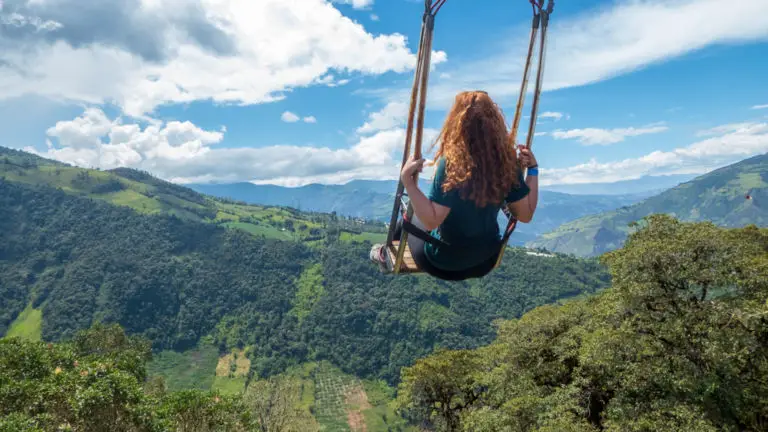
Ecuador is one of the best countries in South America to travel around. Aside from offering incredible diversity in both flora and fauna, it is small which makes getting from A to B, a doddle!
Planning your Ecuador itinerary can be challenging because there is just so much to see! I spent three months in the country and saw most of the top attractions but I could have easily stayed so much longer. With everything from the famous Galapagos Islands , to Quito and of course, the Amazon Rainforest , Ecuador has plenty for your bucket list!
If you are feeling overwhelmed by the choice of destinations in the country, make sure you check out the recommended Ecuador itineraries below. Whether your trip covers 7 days, 2 weeks or an incredible 1 month, these Ecuador itineraries are sure to help you plan your visit!
This post contains affiliate links. If you use them, I will receive a small commission at no extra cost to you.
Ecuador Itinerary 1 Month
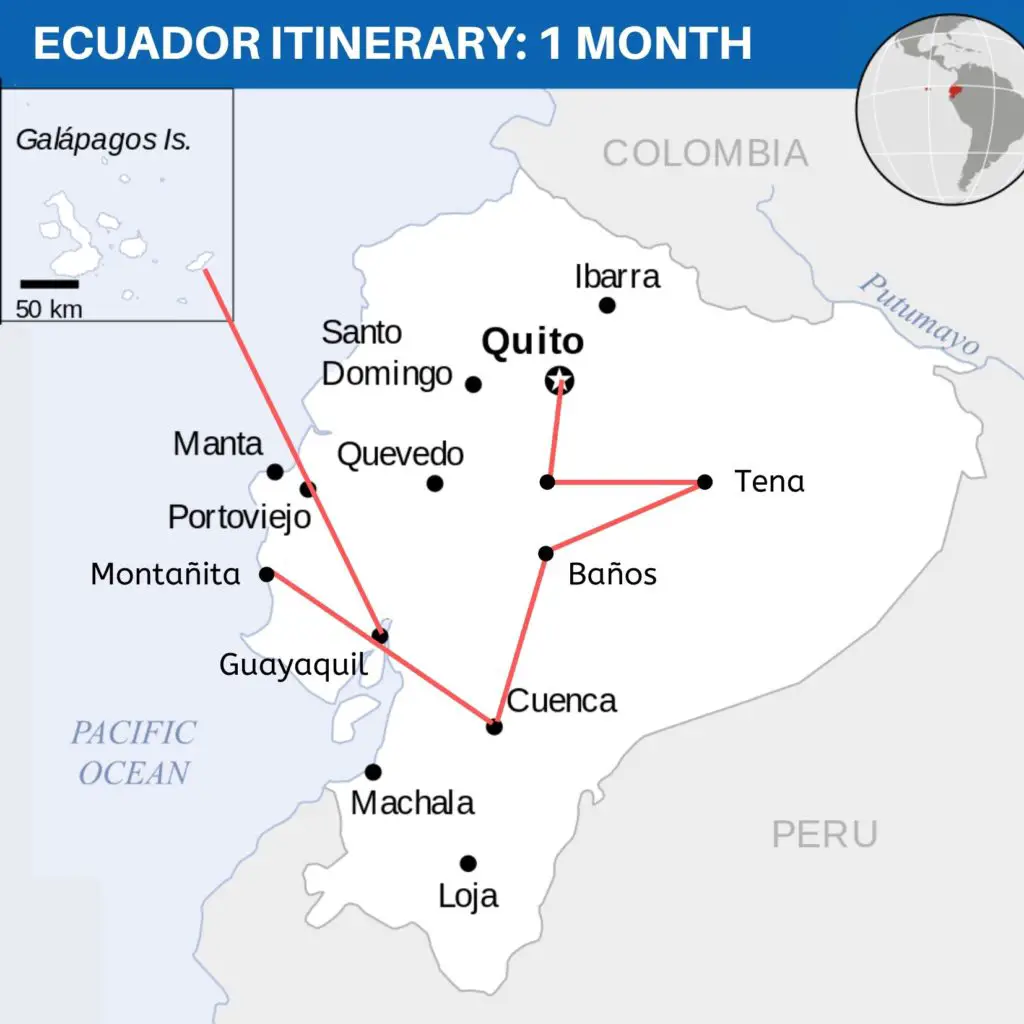
- Quito – 5 days
Begin your journey in Quito by flying directly into the airport. There is heaps to do in Quito but you should first prioritise allowing yourself to acclimatise. Quito is the highest capital in the world, located at a staggering 2850 metres above sea level. Although Diamox is often prescribed for travellers heading to South America, the best way to avoid altitude sickness naturally is to allow your body time to get used to the change.
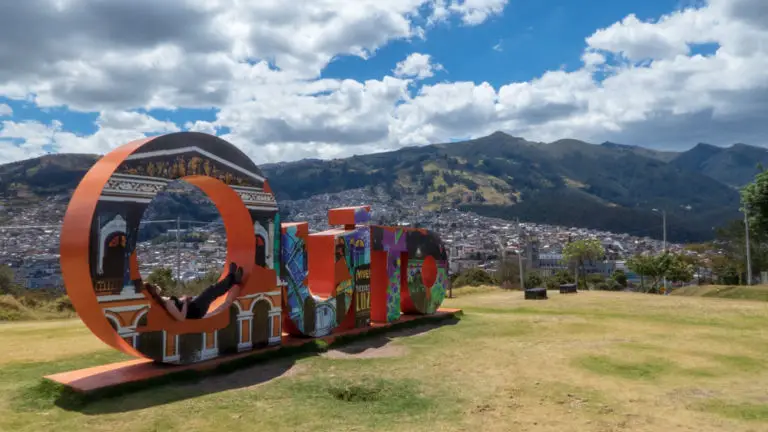
Best Things to do in Quito:
Ecuador’s capital has plenty for an adventurer. Lose yourself for hours wandering around the city and don’t forget to embark on a free walking tour to help you get your bearings. Foodies should definitely schedule in a stop at one of La Ronda’s many restaurants, the cheesy empanadas are to die for!
La Mitad del Mundo
Ecuador gets its name from its location along the equator. A trip out to La Mitad del Mundo is well worth it but remember to ignore the big monument as this doesn’t actually mark the equator line. In actual fact, the real equator line is located just a few hundred metres away at the Inti Nan Museum. Have fun taking photos here and trying to balance an egg on a nail. The science might not be as legitimate as it is presented to be but it is still a good trip out!
La Basilica del Voto Nacional
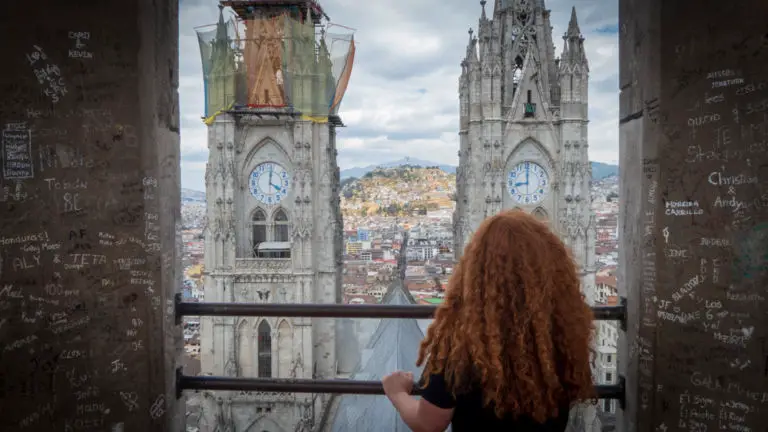
Whilst you’re in Quito, make time to see the La Basilica del Voto Nacional. Arrive before 4 pm and you are able to climb the towers which offer some incredible views of the city. Beware though, those with a fear of heights may find this a challenge! (I did but the views were well worth it!)
La Virgen del Panecillo
La Virgen del Panecillo stands at an incredible 134 feet, making it even taller than Christ the Redeemer in Rio. It is possible to climb the statue which gives way to some incredible views over the city. The Virgin is said to watch over the city’s people but in reality this is not quite true. She has her back to a large part of Quito which people claim is representative of the wealth inequality that plagues the city. Visitors are advised to use Uber to get here as muggings occur frequently on the steps up to the monument.
Hike Pichincha Volcano
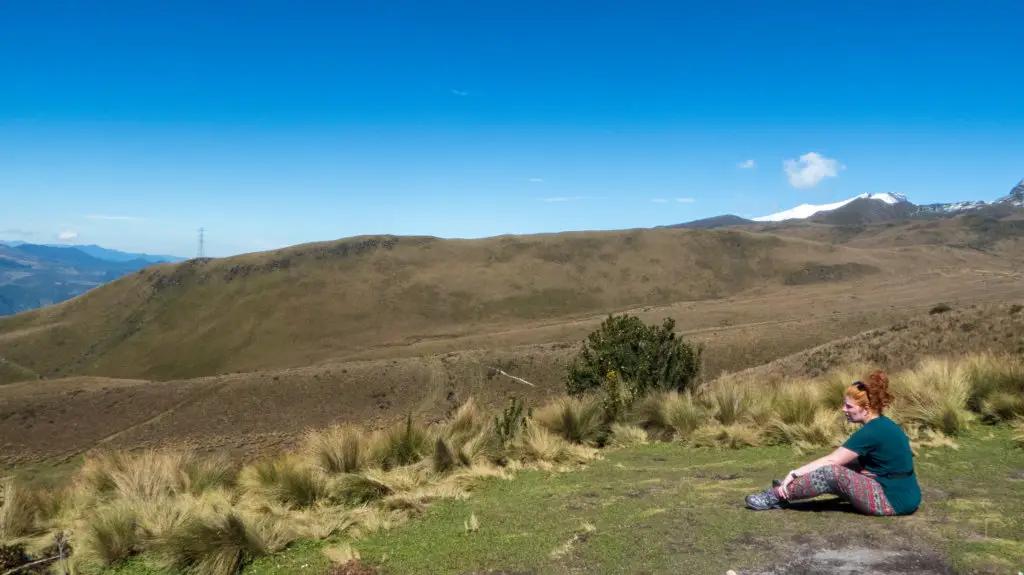
Intrepid hikers will adore this hike up to Pichincha Volcano . Begin by catching the Teleferico, South America’s highest gondola to the starting point of the hike. The hike can be completed in a day without a guide in good weather. However, heed my advice (learned from my very own mistakes) and allow yourself some time to acclimatise. Two days is recommended but isn’t a hard and fast rule. It took me nearly a week before I felt comfortable at the altitude so always listen to your body.
Recommended day trips from Quito:
Home to one of the largest indigenous markets in South America, Otavalo is a bustling nucleus of colour, bargaining and activity. The market offers travellers an interesting insight into the lives of the indigenous community there and also gives you a chance to buy plenty of good souvenirs. Just remember to pull out your haggling skills ! The journey to Otavalo takes around two hours from Quito.
Located around 2 hours from Quito, the cloud forest of Mindo is the perfect retreat from the chaos of the city. Enjoy a day immersed in nature and get up close to butterflies and birds. It is easy to spot different kinds of hummingbird here as there are actually 152 species throughout Ecuador!
Where to stay in Quito:
Selina Quito : Located in the swanky Mariscal district, Selina Quito can offer you everything you want from a city stay. A firm favourite with digital nomads because of their excellent co-working spaces and also popular with backpackers thanks to their great bars, Selina will not disappoint!
Community Hostel : A safe haven in the historic centre, Community Hostel has everything a traveller needs. They offer their own tours both in and around the city, including a highly recommended walking tour which really helps you get your bearings in this huge city. Beds are comfortable and the social vibe is great.
- Latacunga – 1 day
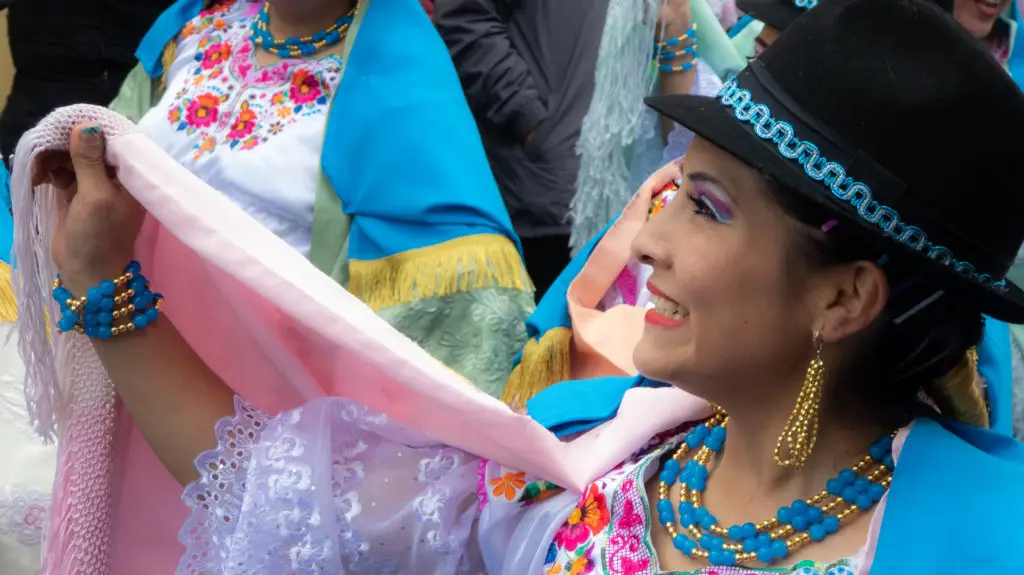
Latacunga is a popular base for backpackers looking to hike the Quilotoa Loop or head to Cotopaxi National Park. Despite the neighbouring features that draw many people into the city, it is an interesting place to explore for a day. To get there from Quito, simply jump on one of the buses that leave the city regularly.
If you like a party and can time your visit with the Mama Negra festival , definitely do. This is one celebration you won’t want to miss!
Where to stay in Latacunga:
Hostel Tiana : Close to the centre is the popular backpacker choice, Hostel Tiana. The rooftop terrace offers stunning views over the city and the free breakfast which is included is good quality. It is cheap and cheerful, offering everything you need. There is also the opportunity to book tours from here.
Cotopaxi National Park – 1 day
The reason for visiting Cotopaxi National Park is clear and you have probably already seen it looming over Latacunga! Many tour agencies are located all around the city and offer trips up Cotopaxi Volcano. Most of these tours will allow travellers to hike up to the glacier and then cycle back down.
Although I never braved the Cotopaxi trek myself, everyone I talked to who had, spoke really highly of their experience and it would definitely be on my list for my return to Ecuador. Those wanting to reach the summit of the volcano will need to find a specialist agency and be prepared to use ice axes and crampons. It is certainly not an expedition for the faint of heart!
Where to stay in Cotopaxi:
The Secret Garden : Potentially one of the most popular budget accommodation options in the whole of the country is the Secret Garden, Cotopaxi. Located in the thick of spectacular mountain scenery, this place will quickly become your home away from home!
- Quilotoa Loop – 3 days
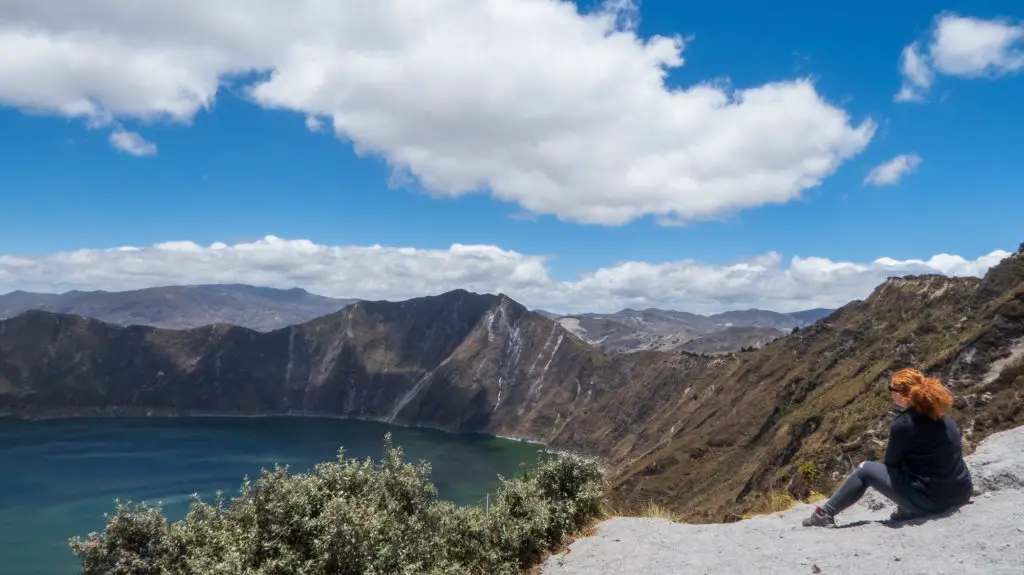
Ecuador’s most popular hiking trail has undergone a bit of a facelift in the last few years. It is now well signposted and marked on maps.me . It will take you around 3 days to walk the whole thing, depending on your fitness level and how you deal with the altitude. Travellers looking to find out more about the Quilotoa Loop should check out this article by Roaming Around the World .
The highlight of the trail is the stunningly beautiful Quilotoa crater lake. Although the whole hike comes with glowing reviews, travellers who don’t fancy hiking the entire thing can always opt to visit a lake on a day trip. There are plenty of these running from both Latacunga and Quito.
Where to stay on the Quilotoa Loop:
Hostal Cloud Forest : Treat yourself and book into the most popular hostel in Chugchilán! Hostal Cloud Forest offers clean and reasonably priced lodging as well as hammocks for relaxing in. They provide a big breakfast which promises to set you up for a day of hiking.
Hostal Taita Cristobal : Located in Isinliví, t his is a great option for solo backpackers doing the loop as they can meet other travellers here. Breakfast and dinner are included in the price and served communally so you really have the chance to get to know the others staying at the hostel.
- Tena – 2 days
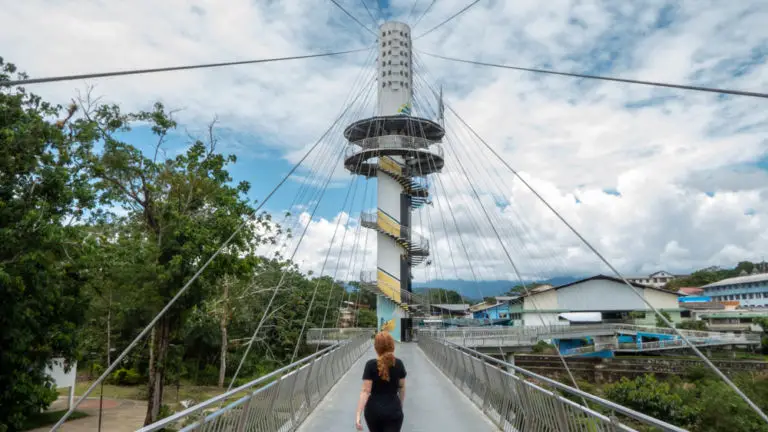
Still relatively up and coming on the travel scene is the jungle city of Tena. If you are craving some R&R, then Tena is the perfect place to come to recharge your batteries.
Best things to do in Tena:
Whitewater rafting or kayaking
Tena is the whitewater capital of Ecuador so no trip is complete without a kayaking or rafting session. During my trip, I headed out with Kayak Ecuador who were fantastic and really calmed my nerves. Despite my initial reservations, the adrenaline pumped day actually ended up being one of my fondest memories from my time in Ecuador.
Jungle Hopping
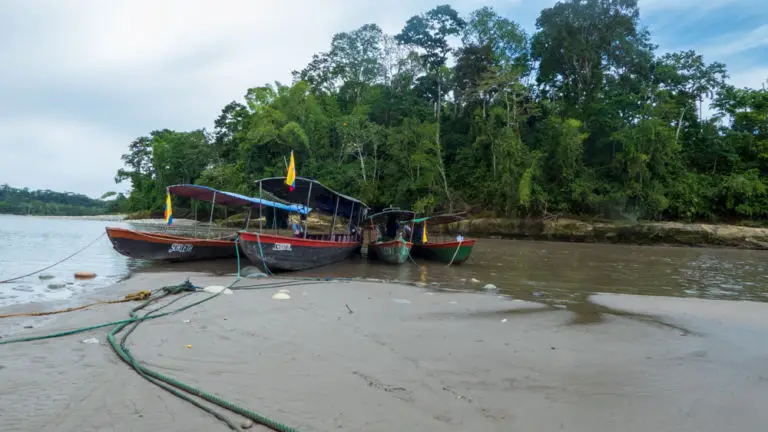
The jungle town of Misahuallí is located just a stone’s throw from Tena and is easily accessible by local bus. It is a great place to organise trips to the Amazon or alternatively, visitors can just while away the day with a beer whilst they watch the playful resident monkeys in the main square.
Always book with ethical tour providers who operate a policy of no feeding or touching. Too much human interaction can mean wild animals lose their independence and are more easily hunted.
Where to Stay in Tena:
Jungle Roots Camping : Offering beautiful glamping lodges, Jungle Roots promises an unforgettable stay. The whole place is run with an eco-friendly ethos and even has a composting toilet. Don’t come expecting WiFi or other modern facilities, the owner has a very back to basics approach.
- Baños – 3 days
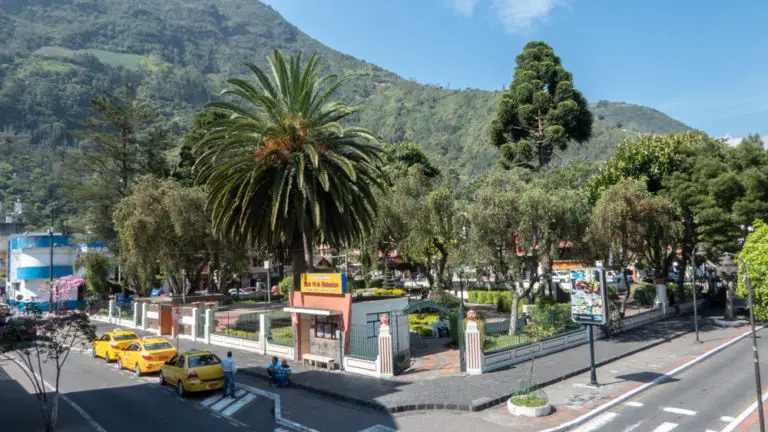
In my opinion, there is nothing to hate about Baños. It draws a good traveller crowd with buzzing nightlife, western comfort food, hiking trails and adventure sports. You are guaranteed a good time if you come to Baños!
Best Things to do in Baños:
Swing at the End of the World
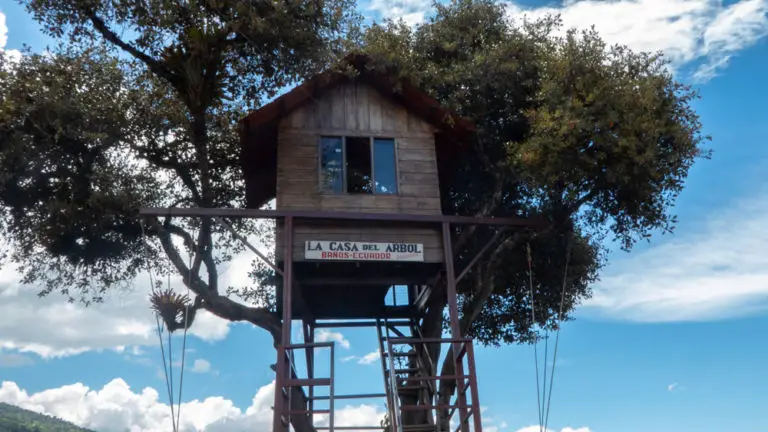
By now, I’m pretty sure we have all seen the Instagram pictures of brave adventurers swinging over the jungle below. It will surprise and impress some of you to know, even I, the wimpiest wimp of them all actually include myself in this category! Just see the photo for proof!
Located at Casa del Arbol, there are guides to help you strap you in the swing and of course, take photos. Be warned though, the seatbelts are flimsy and sometimes the guides will really challenge your fear of heights!
Relax in the Spas
As well as being a thrill-seekers playground, Baños is also a great place to relax. The streets are dotted with massage parlours and there are even a few spas around. My personal favourite is that of Luna Volcan , located up in the hills. Although technically a hotel resort, you can get access to the pools for just $20USD per person. When you see the views from up there, not to mention the different pools available, I’m sure you will agree that this is an absolute bargain!
Adrenaline Sports
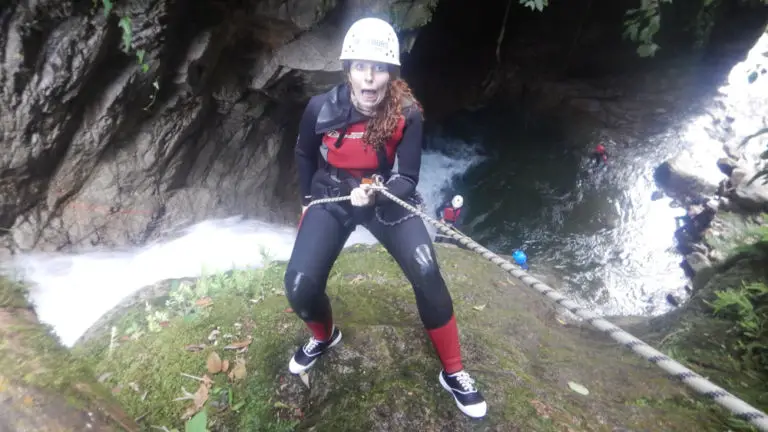
With everything from zip-lining to canyoning, Baños is guaranteed to get your heart pumping. Rafting is also popular here but the rivers offer less challenge than in Tena so I would definitely recommend prioritising that activity there and skipping it in Baños.
Where to stay in Baños:
Community Hostel : Potentially my favourite hostel in the world, no stay in Baños is complete without a visit to Community. Offering immaculately clean privates and dorms, this hostel suits both budget backpackers and couples. There are evening activities and delicious meals on offer at the in house restaurant.
- Cuenca – 3 days
This beautiful colonial city is located in Ecuador’s southern Andes. Sadly, during my visit, I had the flu so I didn’t get to explore as much of it as I wanted but there is plenty to do there. Cuenca, I will be back!
Best Things to do in Cuenca:
Explore the City on Foot
Perhaps the best thing to do in this UNESCO World Heritage site is to wander the streets on foot. The city is truly idyllic and plays host to a number of beautiful bars and restaurants. Make the most of the views by heading to one of the riverfront restaurants and watching the sunset. Cuenca is also a great place to try Ecuador’s most famous delicacy: cuy .
Check out the Museums
Cuenca is a history lovers dream and they have plenty of museums to enhance your knowledge and spark your curiosity. The hat museum Homero Ortega is an unusual stop but also one very popular with visitors.
Recommended day trips from Cuenca:
Cajas National Park
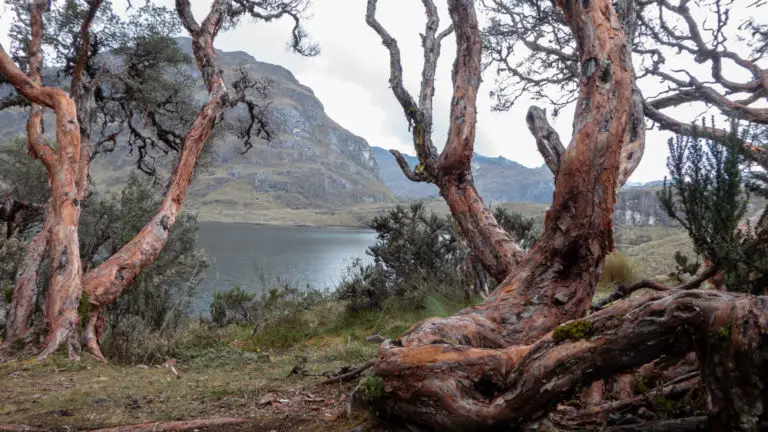
The otherworldly landscape of Cajas National Park is a must for nature enthusiasts. Come explore the Polylepis forest and take in the mountain views. Cajas reminded me a lot of the Highlands of Scotland, just with more breathlessness as I was ascending the hills! This is a great place to spot llamas and alpacas.
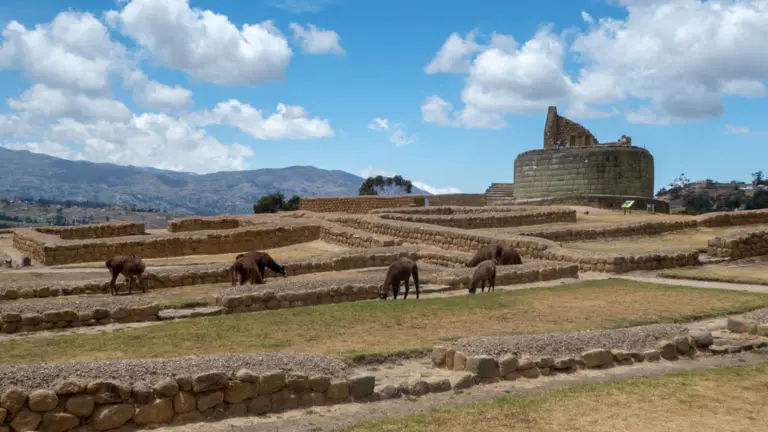
This Incan ruin so often overshadowed by its more popular brother Machu Picchu, is a surprisingly off the beaten track attraction. Easily visited on a day trip from Cuenca , Ingapirca features the only Incan elliptical temple in the whole of South America.
Where to stay in Cuenca:
Casa Macondo Bed & Breakfast : Despite being centrally located, this bed and breakfast offers a quiet escape from the bustle of the city. The staff speak English and are very helpful when recommending attractions in and around Cuenca.
- Montañita – 2 days
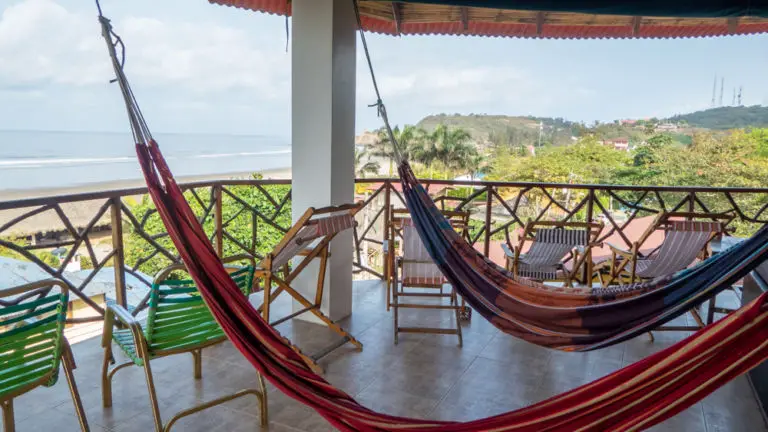
Say hello to the party town of Montañita! By this time, you’ll probably fancy a Canelazo and a little bit of sun.
Realistically, Montañita offers little else apart from a buzzing party scene with a laid back surf vibe. However, solo travellers will love the social nature of the town and the sun is always shining.
Recommended Day Trips from Montañita:
Isla de la Plata
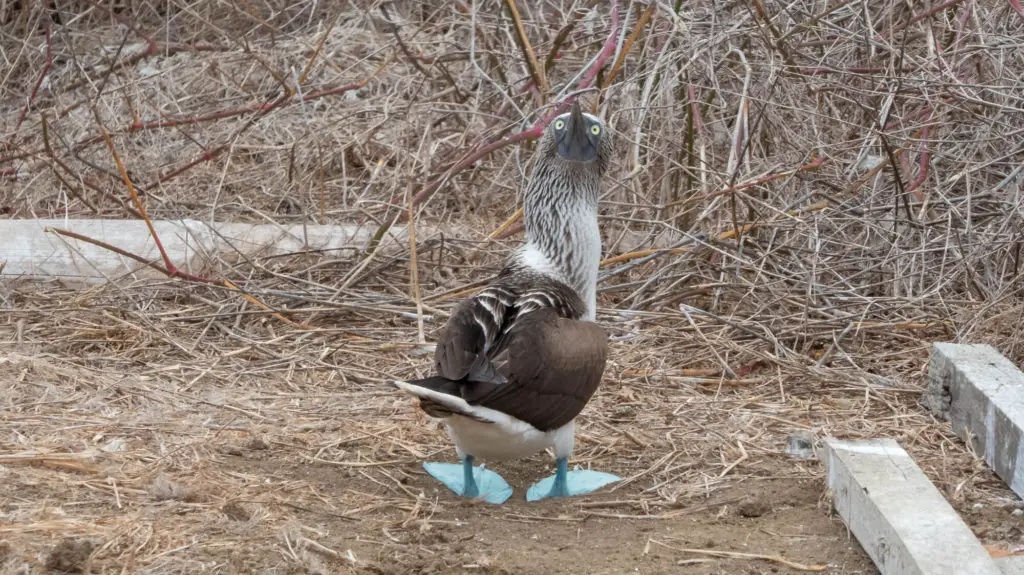
Known as the ‘ Poor Man’s Galapagos ’, Isla de la Plata showcases some of Ecuador’s most notable wildlife. Keep your eye out for albatross, boobys, sea turtles and cormorants, all of which call the island home. Day trips can easily be arranged from the town and offer a refreshing break from the bars.
If your hangover is too severe to cope with the thumping music in Montañita, then head out to nearby Ayampe for a day of beach lounging. This small seaside town is way more chilled than Montañita and offers the chance to truly relax (and recover from those beers!)
Where to stay in Montañita:
Esperanto Hostel : A sociable hostel without a crazy party vibe, Esperanto was my favourite of the places I stayed in Montañita. Manager Rocky will do everything he can to make your stay pleasant and the staff quickly become your friends. This is a great option for solo backpackers looking to have a laugh but not at the expense of a good nights sleep!
- Guayaquil – 1 day
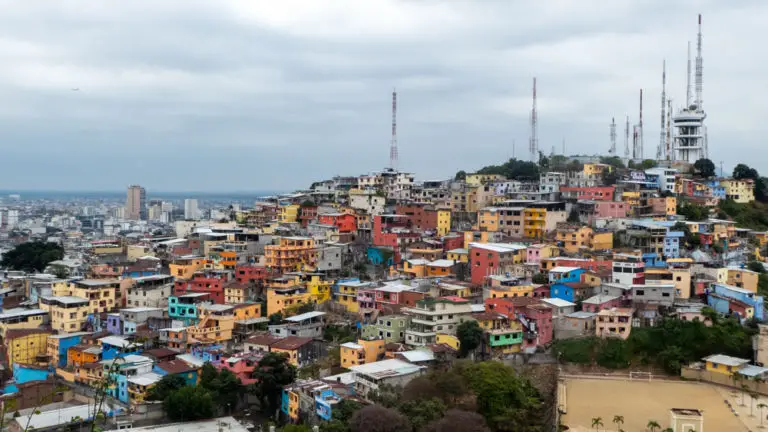
For a long time, Guayaquil was a place in Ecuador which travellers were actively encouraged to avoid. It had a bad reputation and was touted as the most dangerous city in the country. Despite its checkered past, Guayaquil is has seen massive investment and a drop in crime rate. It is still somewhere you want to keep your wits about you but definitely don’t be deterred from visiting.
Best Things to do in Guayaquil:
Parque Seminario
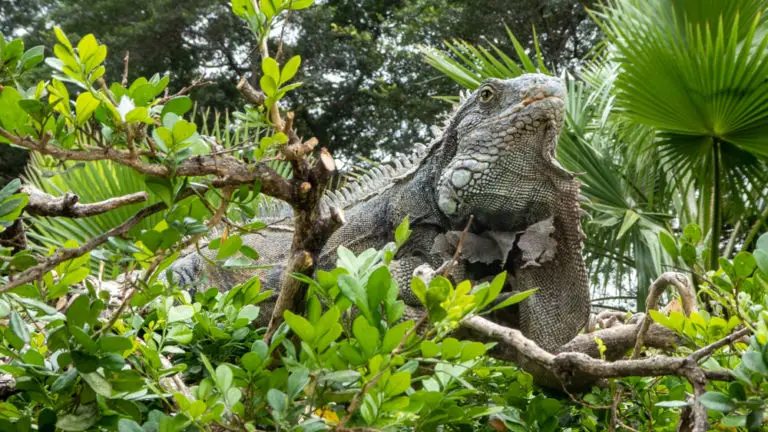
This large, open green space in the middle of the city is known for its resident iguanas. They freely roam the park, sneaking up on visitors and unleashing their urine onto unsuspecting people’s heads. The park is a cool place to spend a couple of hours but do make sure you keep looking up…just in case!
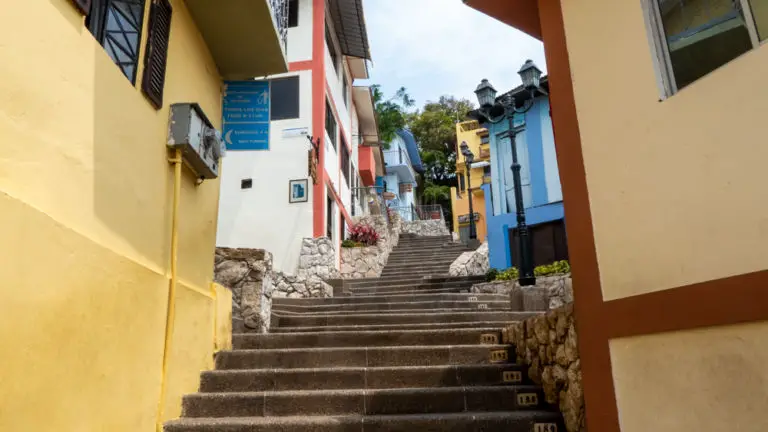
This colourful neighbourhood is the best place in Guayaquil to grab a drink. The whole place is built up around a central staircase which ascends right to the blue and white lighthouse atop the hill. The 444 steps can be hard going especially when it is hot (that is pretty much the whole time) but the views from the top are gorgeous.
Where to Stay in Guayaquil:
Manso Boutique Guesthouse : Overlooking the Malecón 2000, you will be hard-pressed to find a better location for a guesthouse than here. Manso Boutique Guesthouse offers spacious and clean rooms, both privates and dorms. It is in the perfect area for exploring the city and there are plenty of places to eat nearby.
- Galapagos – 9 days
Let’s end on a high! The Galapagos Islands are an absolute bucket list destination that any traveller would be devastated to miss. Don’t get me a wrong, a trip here isn’t going to be cheap but it may well be the best one you ever take!
Read more: Animals of the Galapagos .
Best Things to do the Galapagos Islands:
Cheap cruises are sometimes available last minute so it is worth searching around both Quito and Guayaquil to see what you can find. If you decide to land hop the Galapagos, I would recommend splitting your time amongst the following three islands, with day trips to places you are unable to reach independently.
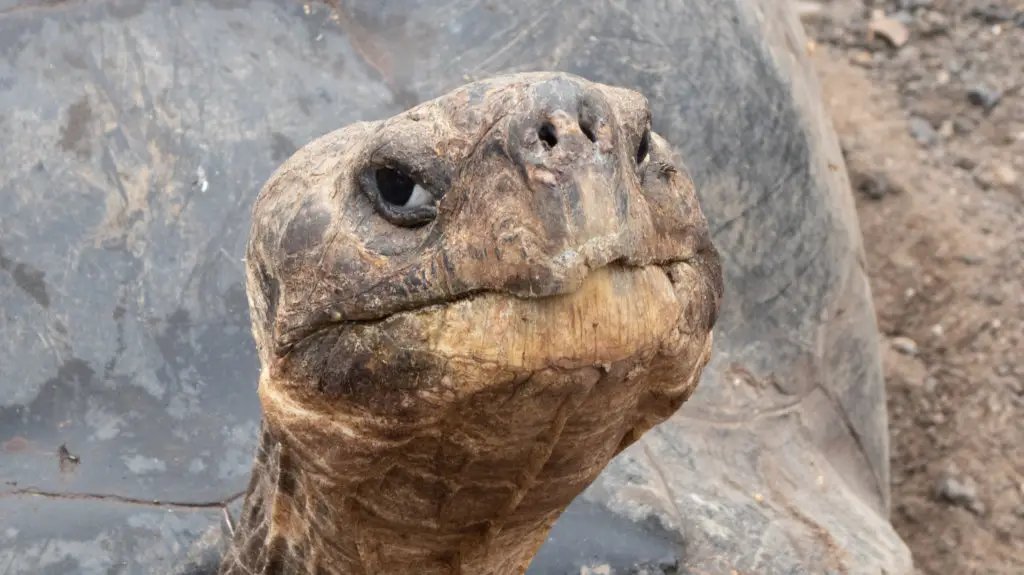
Kayaking in Tortuga Bay is a must-do and relatively cheap at $20pp. Here you can see turtles and reef sharks just metres below you!
El Chato tortoise reserve is another favourite which allows these gentle giants to roam free. Another place where it is possible to see them is at the Darwin Research Centre, which is free to enter.
A day trip to Los Tuneles is for many, the highlight of their Galapagos trip. This snorkelling outing will offer the chance to see turtles, sharks, seahorses and a whole manner of other wildlife up close. In low season, it is possible to bargain for a place on this tour.
Don’t miss the chance to hike Sierra Negra and Volcán Chico . This area cannot be accessed without a guide but allows you to see the second largest caldera in the world. Don’t forget to bring your walking shoes because the day will see you cover 16km!
San Cristobal
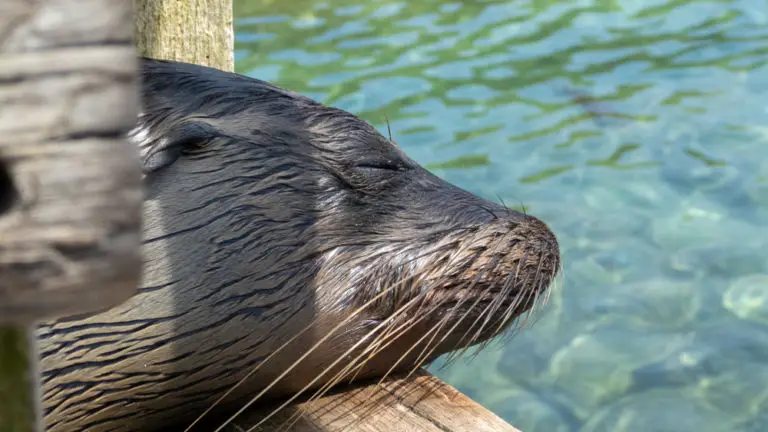
Home to some of the best beaches in the archipelago, make sure you head to Playa Mann and La Loberia. The latter is a great place to spot baby sea lions.
Kicker Rock is commonly agreed to be the best day trip from San Cristobal. This snorkelling trip is usually split with a visit to a beach and the snorkelling around the rock itself offers the opportunity to see Hammerhead sharks!
Get clued up on what you need to know before you book your Galapagos adventure!
Where to stay on Galapagos:
La K Leta Guesthouse : A trip to the Galapagos Islands is a special trip so why not splash out on a special place to stay? La K Leta, located in Santa Cruz offers beautiful apartments which are as comfortable as they are cute.
Hotel Neptuno : Located in Isabela, close to the restaurants and the beach, is Hotel Neptuno. Although it is one of the cheapest accommodation options on the island (starting at $40USD for a room), the beds are comfortable and towels are included. They have air conditioning and provide drinking water at reception.
Casa de Jeimy : Easy to walk to from San Cristobal airport, this budget guesthouse gets rave reviews. The drinking water is filtered and there are balconies for guests to relax on. The staff are rated particularly highly and are able to advise about the must-do things on the islands.
Top tip: If you are land hopping the Galapagos, it is well worth flying into one airport and out of the other, this will save you the cost of at least one ferry. All Galapagos flights head to Guayaquil and Quito, where it is possible to pick up one of the hundreds of international flights.
Less Time in Ecuador?
For those of you with less time, you can pick out the highlights and adapt the above Ecuador itinerary to suit shorter trips. Alternatively, check out my other suggested Ecuador itineraries below:
Ecuador Itinerary 2 weeks
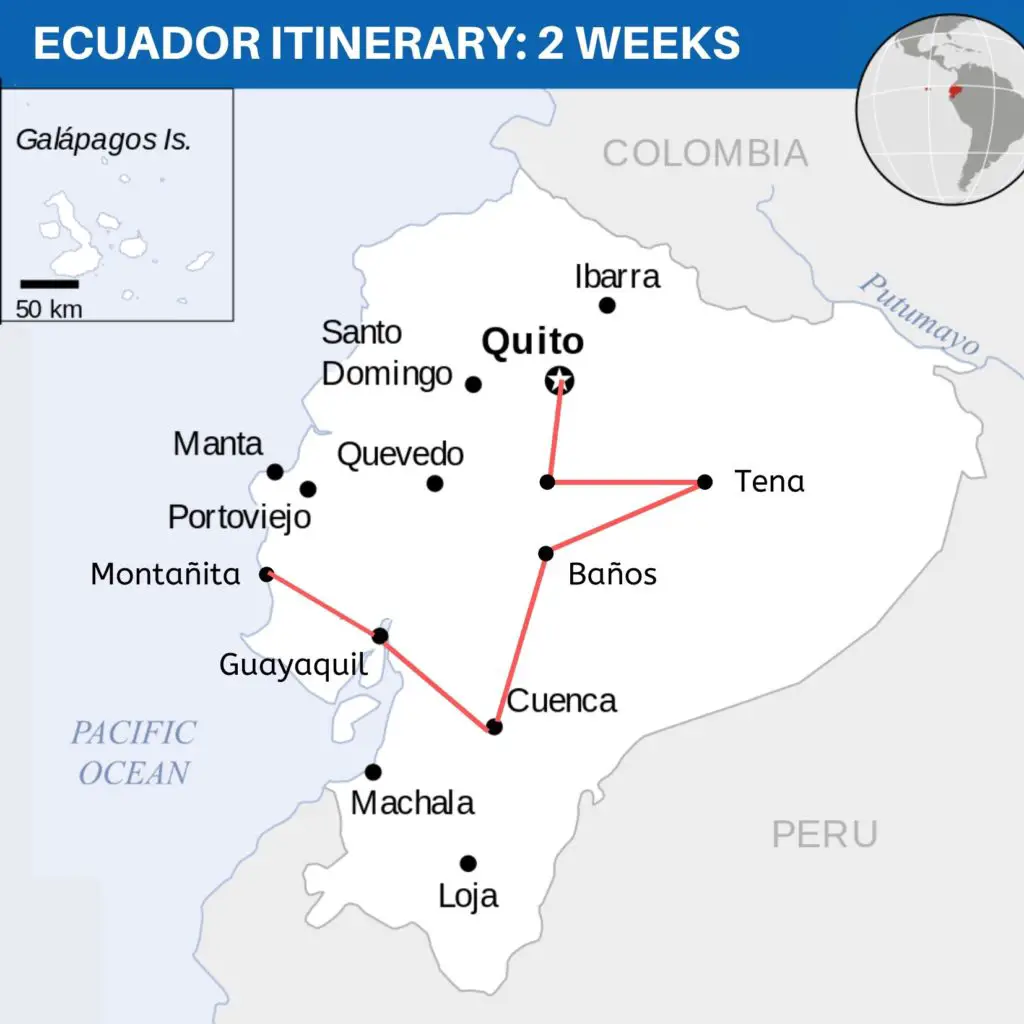
- Quito – 3 days: Soak up the city atmosphere and go sightseeing ! If you are a keen hiker, don’t miss Pichincha volcano but do allow yourself the time to acclimatise first!
- Latacunga – 1 day: Use the city as a base for exploring either Quilotoa crater lake or Cotopaxi National Park . Tours leave daily from agencies all over the city.
- Tena – 2 days: Get your blood pumping with a rafting adventure through the jungle! Spent the remaining day in Mishauallí , getting to know the cheeky monkeys and eating some of the delicacies sold on the beach.
- Banos – 2 days: Try your hand at everything adventure. Challenge yourself with a canyoning trip or grab a bicycle to head out and see the waterfalls .
- Cuenca – 3 days: Sample guinea pig (if you’re brave enough) and explore the city. Don’t miss day trips to both Cajas National Park and Ingapirca .
- Montañita – 2 days: Get your party hat on and hit the bars ! You can while away the hangover lazing on the beach. If you can drag yourself away from the strip long enough, a day trip to Isla de la Plata is well worth it.
- Guayaquil – 1 day: Embark on a free walking tour to see the city’s sights and find out where Guayaquil’s rescued giant land tortoises live!
Ecuador Itinerary 1 week
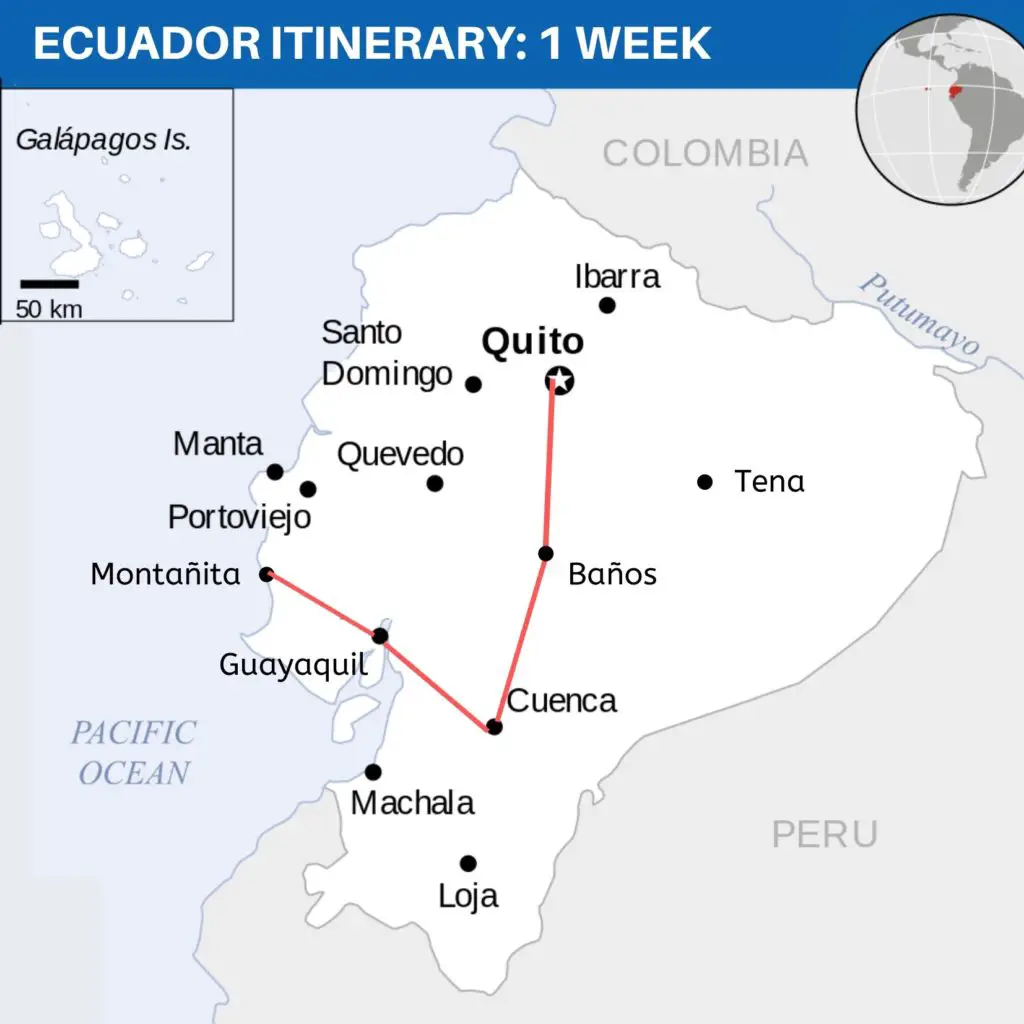
- Quito – 2 days: Use day one to explore the city on foot and spend the second day on a day trip to one of the nearby popular locations. Mindo, Otavalo, Quilotoa and Cotopaxi are all good options depending on your interests.
- Baños – 1 day: Head up to Casa de Arbol to swing at the end of the world. Finish the day off with a zip-lining adventure before hitting the bars!
- Cuenca – 2 days: Get your sightseeing in on day one and take in the city views. Head to Cajas National Park on day two for a taste of the mountains.
- Montañita – 1 day: Have a tipple down cocktail street and try your hand at surfing !
- Guayaquil – 1 day: Stroll around the Malecón 2000 and visit Parque Seminario . Finish your trip with some great seafood at Restaurante El Malecón .
How to get to Ecuador
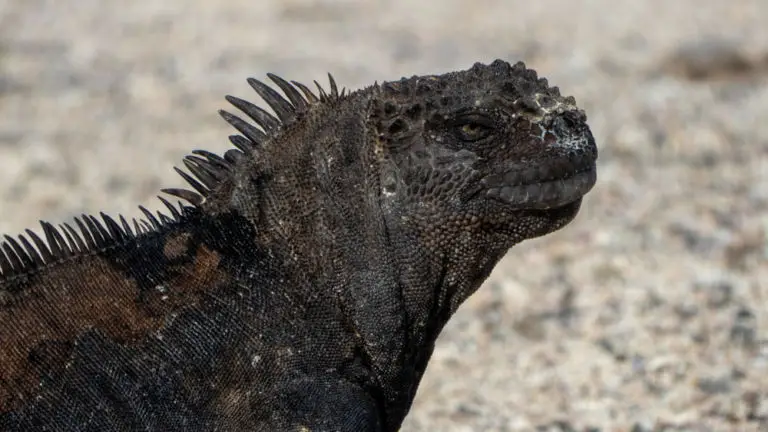
Both Quito and Guayaquil airports receive international travellers, however, generally, it will only be bigger airports that will fly to the country direct.
In the UK, there are no direct flights, although plenty of indirect routes head to Ecuador, usually stopping in Europe or the US. Be aware of visa rules because some changeovers require documentation.
US citizens will be able to make the most of direct routes leaving from many cities but even indirect routes usually only involve one change, either in the US or South America. There are no direct flights from Canada, and passengers leaving from there will have to change at another location.
Australia and New Zealand also don’t offer direct flights so usually passengers will need to change elsewhere in South America.
Ecuador can be reached by land from neighbouring countries Peru and Colombia. If done with a reputable bus company, these border crossings can be easy but be aware that crime is commonplace in these areas. Scams regarding closed roads or protests are commonly used to confuse travellers and make them easier to rob. Travellers are advised to avoid crossing borders at night if possible.
All flights to the Galapagos Islands go to both Quito and Guayaquil. LATAM and Tame are the only serving airlines.
How to get Around Ecuador
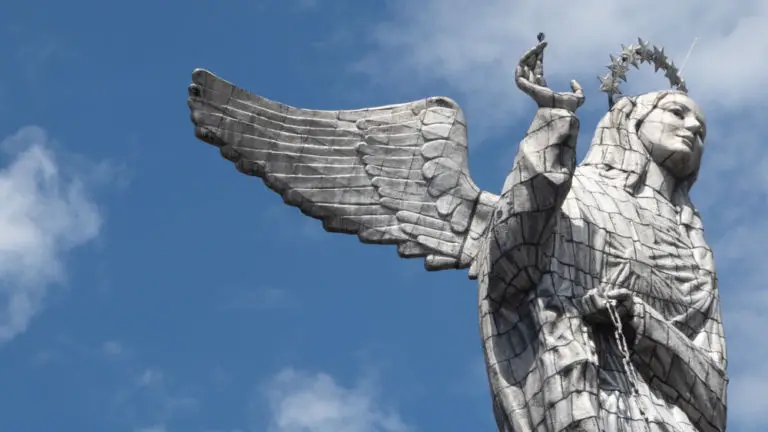
Owing to the size of Ecuador, it is one of the easiest countries in South America to travel around. Competition on the most well-travelled routes is fierce and as a result, backpackers usually don’t have to splash much cash to get around. Following the itineraries listed above generally means your average journey time will be short.
There are different classes of bus so opt for the luxury or tourist version if you want the most comfort. As you would expect, local buses are the cheapest options and will differ hugely in quality to tourist transport.
The roads in Ecuador are pretty good compared to many places in South America. The Pan American Highway runs through most of the country and is frequently used to get to many of the most popular destinations.
Uber is also available in some areas. It is worth using it in big cities such as Quito where you have to be conscious of safety. Uber is recommended over taxis, especially during nighttime hours.
Average Costs of Travelling in Ecuador
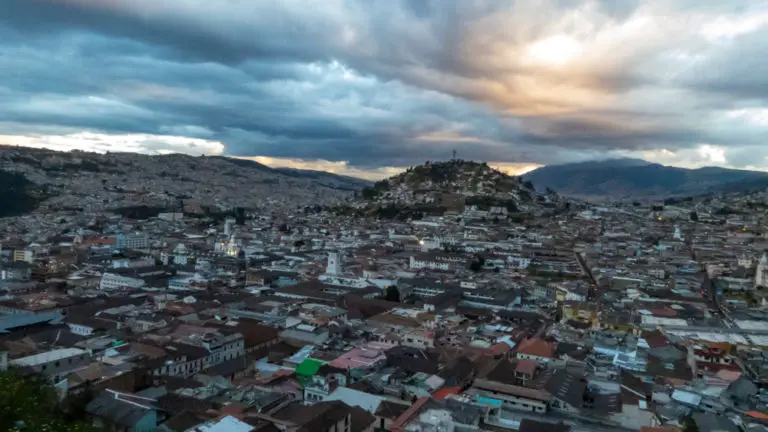
Although not the cheapest country to travel in South America, Ecuador is generally very cheap (excluding the Galapagos Islands).
After a severe financial crisis which saw the collapse of Ecuador’s own currency (the Sucre), they underwent dollarisation. As a result, the currency used all around Ecuador currently is the US dollar .
Top tip: It is worth noting that although Ecuador uses the US dollar, the coins are specific to the country so you cannot spend them elsewhere. Remember to try and get rid of them before you leave!
Accommodation and local food are generally inexpensive. Dorm rooms begin around $8 but have the potential to be even cheaper if you are in a backpacker area with plenty of competition. In Montañita, there are dorms as cheap as $5 a night! Private rooms are more expensive, costing around $18.
Street food clocks in at a couple of dollars a time but as you would expect, you will pay more for western food. A meal out in a local restaurant (mid-range) will set you back around $25.
Transport is cheap and day trips are also priced fairly reasonably. Most day trips leaving from cities or tourist areas usually cost around $50 per person, including lunch, return transport, English speaking guide and any necessary entrance fees.
Have you ever been to Ecuador? Which of the three Ecuador itineraries is your favourite?
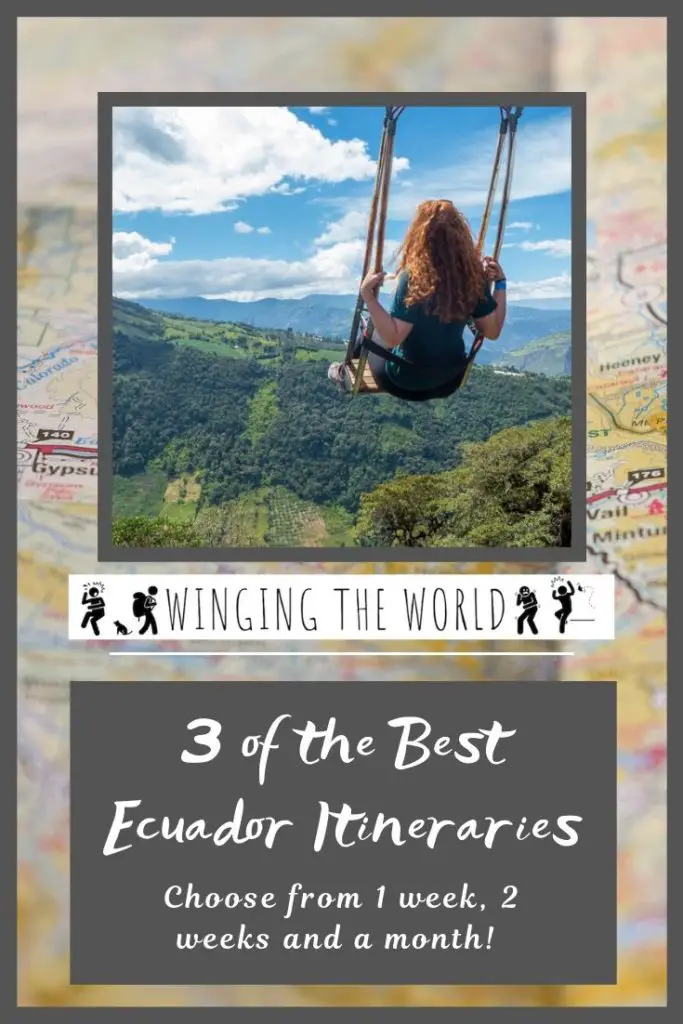
Leave a comment Cancel reply

3 Days in Quito, Ecuador: The Perfect Itinerary and Travel Guide
A World in Reach contains affiliate links. If you make a purchase through these links, I may receive a commission at no cost to you! Read my full disclosure here .
Planning on spending 3 days in Quito, Ecuador? Keep reading for my comprehensive travel guide to Quito, including an itinerary and useful travel tips.
Quito, Ecuador is an incredibly fascinating city. The Ecuadorian capital is a South American gem – as one of the first UNESCO World Cultural Heritage Sites, this is a city that’s worth visiting for much longer than just a quick stop en route to the Galapagos. From the beautiful colonial architecture to the incredible viewpoints throughout the city, there are a ton of things to do in Quito to keep you busy.
During my first visit to Quito, I spent several days taking in the sights and absorbing the Ecuadorian culture. If you only have a short time to spend exploring Quito, or if you’re just stopping over before heading to the Galapagos Islands, 3 days in Quito is the perfect way to introduce yourself to the city and begin your Ecuador adventure. You’ll have plenty of time to explore the city’s top sights, try some delicious local food, and take in the views from some of the most incredible lookouts.

Ready to spend 3 days in Quito, Ecuador? Keep reading for a sample itinerary and helpful travel tips on where to stay in Quito, where to eat, how to stay safe, and more!
Table of Contents
Top Travel Tips for Quito, Ecuador
Quito, ecuador basics.
- Location: South America
- Ecuadorian Currency: US Dollar
- Language: Spanish
- Visa Information: If you’re a US Citizen visiting Ecuador for less than 90 days, you do not need a visa. You do need to have at least six months of validity remaining on your passport. If you’re from a country other than the US, click here to see if you’ll need a visa .
- Tipping: In most restaurants, rounding up your bill is an acceptable tip for the servers. In many fancier restaurants, a service charge (usually 10%) may be added to your bill – in this case, there’s no need to tip. In taxis, it is also acceptable to round up the fare. If the driver assists with your bags, consider giving an extra $1 or so for their help.
When is the best time to visit Quito?
There is truly no bad time to visit Quito. With the city’s high altitude and location near the equator, temperatures remain relatively consistent year-round. June through September are the driest and warmest months. It’s also the high season, so you can expect to see more tourists and slightly higher prices during this time.
From January to May, temperatures tend to be a bit cooler and the city sees more rain (and fewer tourists). October and November generally see lower temperatures, fewer tourists, and cheaper prices, while in December, there tends to be a boost of tourists over the holidays.
I visited Quito between May and June and had excellent weather during my visit. The temperatures were warm but not too hot, and we had little rain other than the occasional sprinkle. Even if you plan to visit during the warm months, bring a jacket with you. The mornings and evenings can get a bit chilly, and if you ride the TeleferiQo, the temperature will be several degrees cooler at the top.
If you enjoy planning your travels around local holidays and festivals, consider checking one of these out:
- Quito Carnival – early February before Ash Wednesday
- Semana Santa (Holy Week) – the week before Easter Sunday (late March or early April)
- Ecuadorian Day of the Dead – November 2
- New Year’s Eve – December 31. Not a local festival, but Quiteños know how to celebrate!

Quito Safety Tips – 3 Days in Quito
When I told my friends and family that I would be traveling to Quito, they were all concerned about my safety. My aunt even told me I should dye my hair dark and go tanning since I wouldn’t fit in as a pale-skinned blonde (spoiler alert: that was not necessary). Despite their worries, I found Quito to be a very safe city. Like anywhere else in the world though, you should always take basic precautions and use your common sense. Here are some of my top tips for staying safe during your 3 days in Quito:
Don’t walk around with your valuables in sight.
Petty theft and pickpocketing are common in Quito. I even nearly got my phone snatched out of my hand! Keep your valuables, like your phone or camera, secure in a purse or backpack when they’re not in use.
Don’t put your wallet or your phone in your back pocket. Carry only the spending that you’ll need for the day, as well as one debit and credit card, while you’re out exploring the city. Leave the rest of your cash as well as a back-up debit card (use a separate bank account from your primary debit card) and credit cards secured safely back at your hotel. I like to keep my extra money hidden in a pocket inside my suitcase.
If you’re concerned about pickpockets or bag slashers, consider getting a pickpocket-proof bag. I bought this Travelon Anti-Theft Backpack for my trip to Quito and love it. It’s traveled the world with me since!
Getting Around Quito: Use only registered taxis, or call an Uber.
Taxis and Ubers are very cheap in Quito; while the buses are cheaper, taxis or Ubers will nearly always be more convenient. To ensure that you get a registered taxi, call one from the Easy Taxi app or Uber .
During my visit to Quito, I had no issues hailing taxis from the street. Each ride generally costs between $2 and $5. If you go this route, make sure to check and see that the taxi has a green sticker on the side – this will let you know that it is an official, registered taxi. When you get in the taxi, make sure to tell the driver to turn on the meter, or else you will get overcharged. If the driver refuses to use the meter, find another taxi. If you’re going on a longer trip, like to/from the airport, agree on a price before getting in the taxi. For example, $25-$30 is a reasonable fare for a trip from the airport to the center of Quito.
Don’t underestimate the altitude.
Quito’s altitude is 9350 feet above sea level. Chances are, that’s a pretty big difference from what you’re used to back home. When you first arrive in Quito, you might notice a slight headache and that you get out of breath sooner than you do at home. You should acclimate after your first day or so, but if you notice your symptoms getting worse, seek medical attention. Altitude sickness can be serious!
Enjoy a drink or two, but don’t drink too much .
This is especially true if you’re traveling solo. There’s nothing wrong with enjoying a night out and a few alcoholic beverages, but make sure not to get too intoxicated. Ensure that you are able to navigate back to your accommodation.
When drinking, never let your drink out of your sight. Walk with your hand covering the opening and never accept a drink from strangers. It could be laced with something, and you could end up being drugged and robbed or sexually assaulted.
If you’re traveling with friends, make sure to take care of one another. If you notice that one of your friends seems like he or she has had too much, make sure that they make it back to your accommodation safe and sound.
Stay safe if you plan on meeting up with someone.
If you plan on using an app like Tinder during your 3 days in Quito, make sure to take necessary precautions so that you stay safe. Have a conversation with them and do a little bit of internet stalking before you decide to meet up, and if you do meet up, do so in a public place. Always let a travel buddy or a friend back home know what’s going on – send them a photo of a person as well as their name and a link to their social media. I also recommend sharing your location on your phone with someone you trust in case something goes wrong.
Spending 3 days in Quito? Don’t forget travel insurance!
When I book a trip, my first step is booking a flight. My second step? I buy travel insurance.
If cases of stolen belongings, altitude sickness, or ankle sprain during your 3 days in Quito, travel insurance will help you get reimbursed for unexpected expenses. During all of my travels, including my trip to Quito, I use World Nomads Travel Insurance. I’ve never had to make a claim but had my phone gotten snatched out of my hand, I would have been so glad that I had the option to do so!
Click here to learn more about World Nomads or get a quote for your next trip .
What to Pack for 3 Days in Quito: The Essentials
- Umbrella – Quito can be rainy at anytime, even during the dry season. Pack an umbrella for those unexpected (or expected) showers!
- Waterproof Jacket – Quito can get a bit chilly, especially if you’re going to be at the top of one of the nearby mountains. Bring a waterproof jacket to help you stay warm. It’ll help keep you dry during the rain too!
- Sunscreen – Quito is located at the equator, so the sun is strong! I got a pretty bad sunburn on one of the coolest, cloudiest days of my trip. Make sure to pack some sunscreen and apply it every day!
- Camera – You’ll want a camera to capture the beauty of Quito. Make sure to have one on hand – it’s up to you whether you use your phone or a dedicated camera! I’m a big fan of my Sony a6000 .
- Pickpocket-Proof Bag – As I said earlier, pickpockets are common around Quito. I chose to protect my belongings with a pickpocket-proof bag. The zippers lock together and the material is slash-proof. It’s not fool-proof, but it will help deter opportunistic thieves. My anti-theft bag is made by Travelon ; they have several options for women and men.
- US Dollar Bills – Ecuador’s currency is the US Dollar. Before you leave the US, go to your bank and get some $1 and $5 bills. In many markets, shops, and cafes, the shopkeepers may be unable to accept larger denomination bills. These small bills are also handy for covering taxi fares.
3 Days in Quito Itinerary
3 days in quito // day 1, morning: take a free walking tour of quito.
Start off the first morning of your 3 days in Quito with a free walking tour . There are a few different tours in Quito, but I recommend Free Walking Tour Ecuador , which is operated by the kind folks at the Community Hostel. On this tour, a local guide will take you around Quito’s beautiful and historic colonial center and tell you all about the history of the city and its sights. You’ll see the plazas, churches, and more that make Quito unique.

Free Walking Tour Ecuador’s morning tour of Quito runs every day and meets at 10:20 AM. The afternoon tour meets at 2:20 PM and runs Monday-Saturday. All tours depart from Community Hostel . Walk-in availability may be available, but I recommend booking your tour in advance to secure your spot.
Make sure to bring along some cash to tip your guide! While the tours are free, the guides do work off tips. I usually budget at least $10 USD as a tip when I take free walking tours.
Afternoon: Take a trip to the Middle of the World
After the walking tour, grab lunch somewhere nearby (I recommend checking out Mercado Central for a delicious, cheap local meal) before heading back to Community Hostel for their Middle of the World Tour .

You can’t visit Quito without paying a visit to Ecuador’s namesake: the equator! First, you’ll be taken to the Intiñan Museum , home to the the most geographically accurate equator line. Here, you’ll spend some time learning about Ecuadorian history and performing some fun experiments to witness the magnetic forces of the equator. Up next, you’ll visit the more widely known Middle of the World Monument before being taken back to Quito. Upon arrival in Quito, the driver may give you the option of being dropped off at the TeleferiQo or back at the meeting point. Skip the TeleferiQo for now as you’ll be going there tomorrow!
The Middle of the World Tours run from Monday to Saturday. The tour is $10, which does not include admission to the Intiñan Museum nor the Middle of the World Monument. Admission to the Intiñan Museum is $4 for adults, while the Middle of the World Monument costs $5. Like the free walking tour, it is recommended to book your spot for the Middle of the World Tour in advance.
Evening: Spend an evening exploring Quito’s Old Town
Quito’s breathtaking Old Town is the centerpiece of the city, and it should be visited both during the daytime and the evening. While you got an introduction to Old Town during the day while on the free walking tour, you’ll spend day 3 of your 3 days in Quito exploring it more in-depth.
During the evening, Quito’s Old Town transforms while retaining its charm. Visit La Ronda, the main street of Old Town, to be wowed by street performers. The area is full of delicious restaurants and there’s a nightlife spot for everyone. If you’re a fan of beer, check out Bandido Brewing , a pub and microbrewery where you can get dinner and a drink (or two).
3 Days in Quito // Day 2
Morning: take the teleferiqo to see quito from above.
Begin day 2 of your 3 days in Quito with beautiful views of the city.
One of my favorite things that I did on my trip to Quito was taking the TeleferiQo up to the Cruz Loma lookout. The TeleferiQo, a combination of the words “teleférico” and “Quito,” is Quito’s version of a sky tram and one of the highest aerial lifts in the world. At the top, you’ll have breathtaking views of sprawling Quito below from atop Cruz Loma lookout.

When you get to the top, spend some time walking around and taking in the gorgeous views. For the adventurous, there are some hiking trails to the summit of Rucu Pichincha. You can hire a guide or go on the trails yourself. If you choose to do the hike, make sure you are well-acclimated to Quito’s altitude!
Tickets for the TeleferiQo are $7.50 for adults. I was recommended to take a taxi to the TeleferiQo entrance as the neighborhood surrounding it is not the safest. Also, make sure to bring a jacket as the temperature is several degrees chillier at the top! The TeleferiQo opens at 9:00 AM; go as early as possible for the clearest views.
Afternoon: Shop for souvenirs at the Mercado Artesenal La Mariscal
When I travel, I love dedicating some time to shopping for souvenirs. My favorite places for souvenir shopping are local markets, and Quito’s Mercado Artesenal La Mariscal is one of the best I’ve visited.

You’ll find everything here: blankets made from alpaca wool, t-shirts, chocolate bars, and more. They even had thimbles, which are my souvenir of choice!
Haggling is necessary when shopping at the market. Typically, you can negotiate the price to about one-third of their original asking price. Make sure you have small bills, as many of the shopkeepers may not be able to make change.
Evening: Have dinner and a drink in Plaza Foch
After your visit to the Middle of the World, take a taxi to Plaza Foch , the main square of Mariscal Sucre, Quito’s New Town. Here, you’ll find tons of cool restaurants, bars, and clubs. Find a nice place to have dinner and a drink to unwind after a long day of exploring. If you still have some energy, visit one of the clubs in the area to dance the night away.

This area is known to have scammers and pickpockets around who prey on tourists, so make sure to stay aware of your surroundings and keep your belongings secure.
3 Days in Quito // Day 3
Spend the last of your 3 days in quito exploring some of the city’s top sights..
As touristy as they may be, I highly recommend spending day 3 of your Quito adventure exploring the rest of the city via the Quito Hop-On Hop-Off Tour Bus .
For just $15, you can get a ticket on the Quito Tour Bus, which will double as your tour guide and mode of transportation for the day. The bus route runs from 9:00 AM to 4:00 PM, so start early to make the most out of your ticket.
Make your way to the tour’s main stop at Boulevard Naciones Unidas . You can book your tickets here on the day of your tour or do so online in advance . From here, you can take the bus around Quito, listening to the audio tour and hopping off at any sites that pique your interest. Here are some of my favorite stops on the tour:
Jardín Botanico de Quito
If you enjoy seeing local fauna and flora, make a stop at Quito’s Botanical Garden. The garden has an extensive collection of Ecuadorian and South American plants. Make sure to check out the orchid garden! Tickets to the botanical garden are $3.50 for adults.

Basílica del Voto Nacional
Located in Quito’s Old Town, the Basílica del Voto Nacional is the largest and most famous church in Quito. Pay the $2 entrance fee to climb to the top of the tower for breathtaking views over Old Town.

I recommend getting off at this stop and spending some time exploring elsewhere in Old Town during the day. Visit Iglesia de la Compañía de Jesús ( Church of the Company of Jesus in English), which is known as Quito’s “gold church” – you’ll see why when you go inside! Other must-see sites in Old Town include Plaza Grande, Quito’s Municipal Building, and the Palacio de Carondelet (the Presidential Palace).
Mirador el Panecillo
At the top of El Panecillo Hill, there is a statue of the Virgin Mary that is visible from nearly all of Quito. The views of Quito from atop the hill are also great. The tour bus stop here is 30 minutes, so you’ll be able to get off and explore a bit while the bus waits on you.

3 Days in Quito – Where to Stay in Quito
During my visit to Quito, I stayed at Otavalo Huasi II , a family-run hostel with comfortable beds and a delicious breakfast served each morning. A bed here costs about $25 a night and includes breakfast.
Here are some of my other picks of great, affordable accommodations in Quito:
- Community Hostel – Located in the historic center of Quito, Community Hostel is consistently ranked as one of Quito’s best hostels. It is the perfect spot for solo travelers who are looking to make friends and who are traveling Ecuador on a budget . Dorm beds cost from $10 a night; private rooms are also available. Read reviews of Community Hostel on TripAdvisor ; when you’re ready to book, you can do so on Booking.com .
- Casa Joaquin Boutique Hotel – On my next visit to Quito, I hope to stay at Casa Joaquin Boutique Hotel . Located in the heart of historic Quito, this small boutique hotel is full of charm. With rooms starting around $80 a night, this hotel is a great value for traveling couples. Read reviews of Casa Joaquin Boutique Hotel on TripAdvisor ; when you’re ready to book, you can do so on Booking.com .
- There are tons of great, affordable vacation rentals in Quito that are perfect for budget travelers. This luxurious apartment is located in a safe neighborhood and has amazing views over the city. This gorgeous Authentic Spanish Colonial Home in Colonial Quito is just steps from Old Town Quito and sleeps up to 8 people, making it perfect for groups. Click here for more Quito vacation rentals .
- Find more Quito hotels on Booking.com
<br /> (function(d, sc, u) {<br /> var s = d.createElement(sc), p = d.getElementsByTagName(sc)[0];<br /> s.type = 'text/javascript';<br /> s.async = true;<br /> s.src = u + '?v=' + (+new Date());<br /> p.parentNode.insertBefore(s,p);<br /> })(document, 'script', '//aff.bstatic.com/static/affiliate_basjs/flexiproduct.js');<br 3 Days in Quito – Where to Eat in Quito
There are tons of affordable, delicious restaurants in Quito. Here are some of my favorite places to eat in Quito:
- Mercado Central – This local market is full of stalls selling fresh produce, juices, and multi-course Ecuadorian meals. A meal here can be as cheap as $5, so this is a great place to try a variety of Ecuadorian staples. I recommend getting seafood from Las Corvinas de Don Jimmy ! ( map )
- Cafe Plaza Grande – Located in the historic Hotel Plaza Grande, Cafe Plaza Grande is a delicious restaurant right in Old Town’s main square. A meal here will cost around $15-20 so it’s a little more expensive than other places in Quito. Make sure to order the homemade ice cream for a unique surprise! ( map )
- Bandido Brewing – This microbrewery/pub combo serves up delicious pizza and cold beer. It’s perfect for when you need a break from Ecuadorian food! ( map )
- La Pradera Food Truck Garden – If you and your travel buddies can’t agree on what to have for dinner, hit up the La Pradera Food Garden. Here, you’ll find all sorts of food trucks that will satisfy everyone’s appetite. ( map )
Spending more than 3 days in Quito?
If you have more than just 3 days to spend exploring Quito, check out my guide to some of the best things to do in Quito, Ecuador . Here are some other great things to do in and around Quito:
- Experience Ecuadorian culture and cuisine by taking a Quito Food and Beer Tour
- Take a day trip to Cotopaxi National Park , where you’ll encounter spectacular views of the Cotopaxi Volcano
- Spend a day in Otavalo , Ecuador’s most famous market town. Saturdays and Wednesdays are the best days to visit.
- Get in touch with nature or have an adrenaline rush by taking a day trip to Mindo Cloud Forest , located just 2 hours from Quito.
This itinerary for 3 days in Quito, Ecuador is a perfect introduction to this charming South American city. Have you been to Quito, or are you planning a trip there? Let me know in the comments!
Planning a trip to Ecuador? Read these posts next:
- How to Travel Ecuador on a Student Budget: Budget Travel in Ecuador
- 13 of the Best Things to Do in Quito, Ecuador
- Ecuador: First Impressions

After traveling outside of the US for the first time while studying abroad, I quickly developed a love for travel and an obsession for exploring as much of the world as possible. Now, I'm on a mission to teach college students, young adults, and anyone else who wants to see the world how to travel while minimizing their expenses and maximizing their experiences.

Backpacking Ecuador: Ultimate Guide + Ecuador Backpacking Itinerary
One of South America’s smallest countries, yet one of its most diverse and beautiful, Ecuador has a lot to offer travelers of all budgets – but is more and more becoming a budget traveler’s paradise. There is an Ecuador backpacking itinerary perfect for every kind of traveler, from surfers and hikers to history buffs and party seekers.
After living in Ecuador for 2+ years, we’ve backpacked through this entire country on a very tight budget, and have learned exactly how to experience the best this country has to offer on a budget.
Our ultimate guide to backpacking Ecuador shares everything we’ve learned and help you have an incredible adventure as you backpack Ecuador. Plus, we’re sharing how to plan your dream trip to Ecuador for cheap – and sharing a backpacking Ecuador budget to help you budget for your trip.
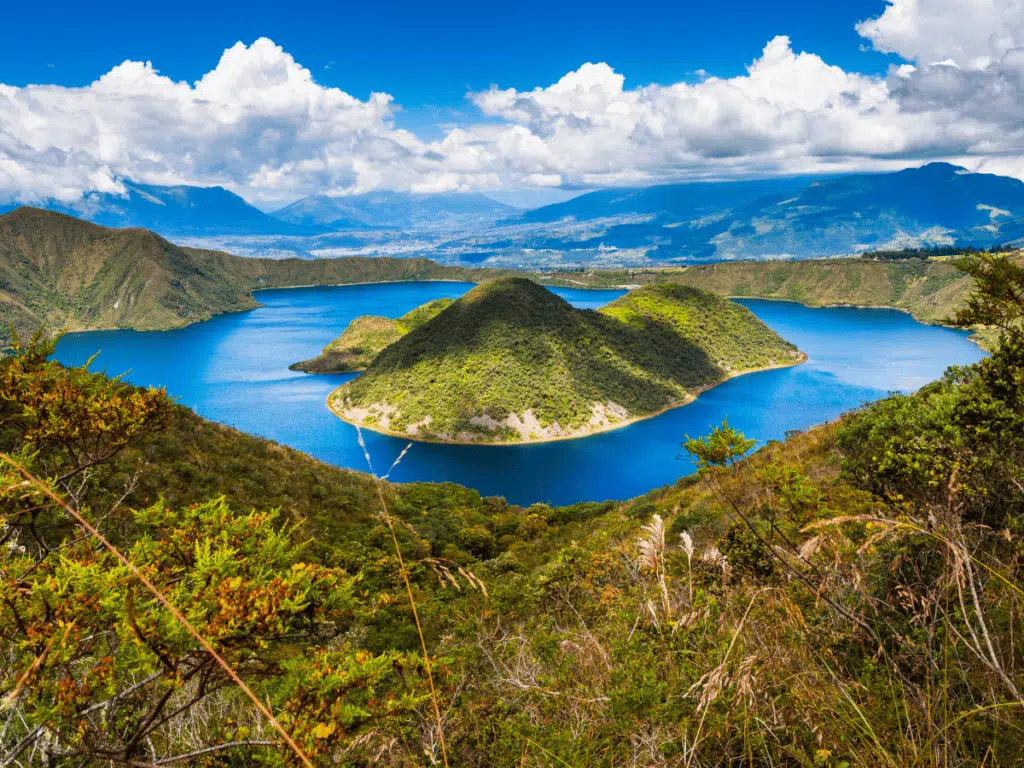
This post contains affiliate links that may reward me monetarily or otherwise when you use them to make qualifying purchases – at no cost to you. As an Amazon Associate, I earn from qualifying purchases. For more information, please read our disclosure policy .
Backpacking Ecuador
For a relatively small country (smaller than many states within the United States!), Ecuador packs a huge punch for travelers .
Mainland Ecuador is generally – unfairly! – overshadowed by next-door neighbors Colombia, Peru, and Brazil. It’s also overlooked far too often by travelers who come here just to visit the Galapagos Islands . But for those who spend the time to explore all that Ecuador has to offer, there is so much to experience!
Ecuador is also truly a backpackers paradise – one of the cheapest and best countries to visit in South America , you could easily spend a month backpacking Ecuador and still have more to see and do.
With an extensive yet inexpensive public transportation system, and the low cost of food and accommodation, your Ecuador backpacking budget will take you far. Plus, with so much to see and do here, you won’t want to leave.
What To Pack for Ecuador
Check out our Ultimate Ecuador Packing List to help you pack for your trip – we’re sharing exactly what to bring to Ecuador and what we never travel without.
Safety in Ecuador
We’re often asked about safety in Ecuador , especially for backpackers and female travelers. I can confidently say that Ecuador is generally quite a safe place to travel – it’s even one of the safer countries in South America .
Living and working in Ecuador for 2+ years, I never had a single incident of being robbed or otherwise threatened or feeling unsafe.
However, it’s important to be aware that petty crime does happen here – mostly pickpocketing. Several friends I lived with or traveled with in Ecuador had their phones or bags snatched over the course of the time they were in Ecuador. It’s important to be aware of, but don’t let this rule your trip or overwhelm you.
When you make sure to take simple safety measures – designed to make you appear not the easiest target for crime – you’re more than likely to have a completely safe and perfectly uneventful trip.
Read More: Is Ecuador Safe? Ultimate Ecuador Safety Guide
Ecuador Travel Safety Tips
Keep your belongings close.
Keep an eye on your backpack under bus seats, and any bags or backpacks while eating in restaurants. Don’t leave your phone or camera sitting out on the table when eating . Ladies – I recommend using a crossbody purse, and keeping it in front of you. Rest your hand over the zipper.
Use S-Biner Micro-Locks
I always use s-biner micro-locks to lock the zippers together on my backpack, and I keep my suitcase locked at all times with a lock with flexible cord . Feel free to use backpacks while out and about, but move them to your front when in public transport, in a market, or in another crowded area.
Walk With Purpose
Even if you’re totally lost, look confident and calm as you walk down the street. Don’t underestimate how much this can make a difference!
Keep Expensive or Flashy Items Hidden
This goes for technology, jewelry, etc. Don’t fear taking out your camera to take pictures or your phone to check a map , but don’t walk down the street with these things on display.
Read More: Is Ecuador Safe? Ecuador Safety Guide

Things To Do in Ecuador
Explore quito.
Exploring Quito merits its own special mention on this list of fantastic things to do in Ecuador. I may be biased – I lived in Quito for 2+ years – but it truly is a wonderful city filled with opportunities to explore historical sites, meet fellow travelers, see modern art, and so much more.
Quito is a backpacker’s dream city, too – check out our Quito Backpacking Guide for more.
Check out these articles on Quito to learn more:
- Best Things to Do in Quito
- Old Town Quito: Ultimate Guide to Quito’s Historic Center
- Where to Stay in Quito
- Day Trips from Quito
- Quito to Cotopaxi Day Trips
Not only is there so much to do in Quito, but it’s also a fantastic base for exploring the rest of the country. Close enough to serve as a base for exploring the Amazon, Cloud Forest, and the rest of the Andes Mountains.
Best Tours of Quito
- Quito Historic Center Walking Tour
- The Delicious Side of Quito: Quito Food Tour
- Quito Historic Center and Mitad del Mundo Excursion
- Personalized Quito Tour, Including TeleferiQo and Mitad del Mundo
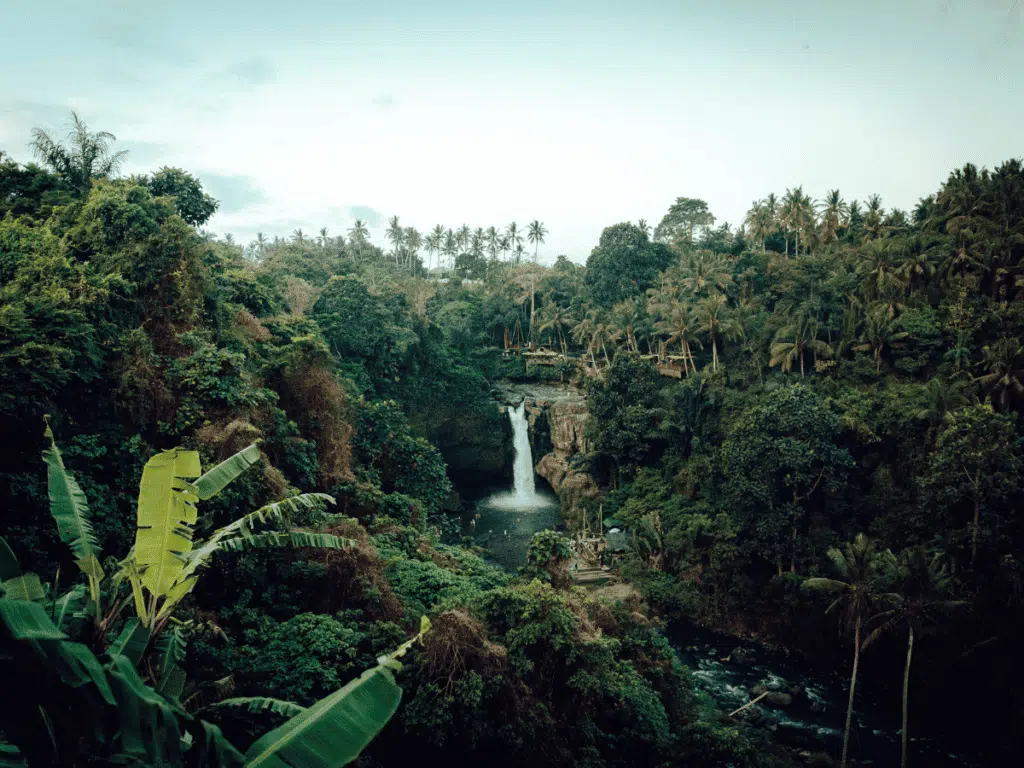
Visit the Amazon
The Amazon Rainforest is a bucket list destination for travelers, and Ecuador is (in my opinion) one of the best countries from which to explore the Rainforest. It’s a particularly great option for backpackers looking to visit the Amazon.
Easily accessible via an inexpensive 4 or 5 hour bus ride from Quito, Tena is the backpacker’s gateway to the Amazon . Here you’ll find accommodations at every price point, including cheap jungle lodges (check out Banana Lodge near Misahualli, or my favorite Hostal Pakay on the edge of the jungle ).
You can also find affordable jungle tours departing from Tena, including either full-day or multi-day tours, with local guides . They’ll take you to discover wildlife (including monkeys!), visit indigenous villages, canoe and kayak along the rivers, and so much more.
These are fantastic and generally quite affordable experiences, well worth the cost!
Read More : Ultimate Guide to The Amazon in Ecuador + Best Jungle Tours
Visit the Cloud Forest
The Cloud Forest is one of Ecuador’s most unique ecosystems. Located between the mountains in the center of the country and the coast to the west, here you’ll find perfect weather year-round, incredible wildlife, and abundant natural beauty.
If you want to visit the Cloud Forest, head to Mindo . This small town is a true paradise – I’ve been countless times and still am dreaming about the next time I can go back!
In Mindo you’ll find adventure sports like ziplining and canyoning, world-class birdwatching, a butterfly sanctuary, local artisan chocolate producers, and much more . Come for all this, or just to kick back and relax in the jungle next to a bubbling river at Casa de Cecilia (one of my favorite hostel in Ecuador).
Interested in trying out Workaway, Worldpacking, or one of the many other work exchange sites that make budget travel super affordable? There are plenty of opportunities available in the Cloud Forest for you to try!
Backpack up the Coast
Ecuador has an incredible Pacific coastline with countless fantastic beaches to explore. You’ll find a great mix of cities, resort towns, and villages along the coast, so there is truly something here for every traveler.
Even if you don’t have time to explore all of Ecuador, backpacking up (or down) the coast of Ecuador is a popular Ecuador backpacking itinerary.
Popular beach towns include Canoa , Mompiche, Ayampe, and Puerto López. Head to Montañita if you’re looking to party – this town has the distinction of being Ecuador’s beach party destination.
Resort towns like Atacames and Súa have more facilities and tourist installations than other beach towns, though they can get more crowded, especially on holiday weekends.
If you’re looking for a larger city with a nearby beach, Salinas is a great bet. This is a fantastic destination for digital nomads in Ecuador who need super-fast internet but want to spend time at the beach.
Plan a Trip to Ecuador’s Coast
- 10 Best Beaches in Ecuador
- Canoa, Ecuador: Ultimate Traveler’s Guide
- Salinas, Ecuador: Ultimate Traveler’s Guide
Adventure Sports
Ecuador is a fantastic destination for adventure sports of all kinds – you’ll find everything here from ziplining and canyoning (repelling down waterfalls) to whitewater rafting and river tubing.
Popular destinations for adventure sports include Baños for canyoning, Mindo for ziplining , and Tena for whitewater rafting .
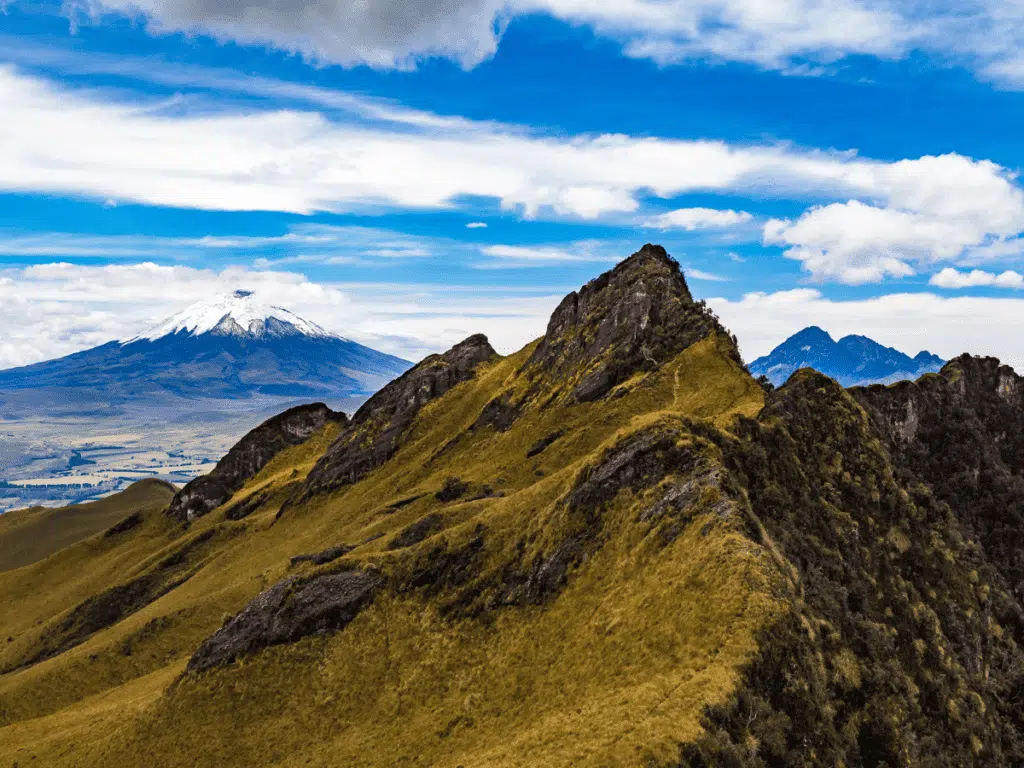
Hike, Trek, and Climb
The Andes Mountains run right through the center of Ecuador, north to south , and make Ecuador an incredible spot for outdoor enthusiasts looking to hike. These are some of Ecuador’s best hiking, trekking, and climbing spots.
Towering over Quito, the Pichincha Volcano is one of the most popular hiking spots near Quito. Ride the TelefériQo to the top, then start the hike to Rucu Pichincha – one of Pichincha’s three peaks – a moderately difficult climb a few hours long.
Check out more about this popular day trip from Quito in our ultimate guide.
One of the best multi-day treks in South America, the famous Quilotoa Loop is a moderate three or four-day trek to the Quilotoa Crater Lake , a stunning volcanic crater lake high in the Andes.
Read More: Ultimate Guide to Quilotoa and the Quilotoa Loop
The ultimate climbing expedition in Ecuador (other than Chimborazo – leave this one to the professionals!) , Cotopaxi volcano is a high-altitude snow-capped volcano and a difficult climb, though possible for fit yet less-experienced climbers.
Even beginners can climb to the glacier line – though a basic level of physical fitness is required!
Read More: Quito to Cotopaxi Visit and Excursion Guide
Another popular day trip from Quito, Pasochoa is an extinct volcano in the Chillos Valley just south of Ecuador. A much easier climb and surrounded by less-visited towns and villages, expect gorgeous views of neighboring Cotopaxi and the surrounding valleys.
Ecuador Backpacking Itinerary
You’ll find a ton of different backpacking itineraries out there for Ecuador; as Ecuador becomes more and more popular with backpackers, there is more content on how to backpack Ecuador well.
There are also some fantastic itineraries out there for specific regions in Ecuador, like detailed itineraries for exploring just Ecuador’s coast, or just the Andes mountains – both are very popular Ecuador backpacking itineraries.
Check out all of our Ecuador itineraries as you plan your ultimate backpacking Ecuador adventure.
- 2 Days in Quito
- 1 Week in Ecuador
- 10 Days in Ecuador
A popular time frame for backpacking Ecuador is one month , so I’ve created an example Ecuador backpacking itinerary for one month in Ecuador. This covers the entire country (except for the Galapagos Islands !), so you’ll have a complete Ecuador experience on your trip.
Check out these recommendations and get planning your perfect Ecuador backpacking itinerary.
- Day One: Quito – Quito is the perfect place to land in Ecuador and get your bearings (and adjust to the altitude). It’s also generally a great place to meet other travelers. Check out my favorite Secret Garden Hostel to get settled and meet other travelers.
- Day Two: Quito
- Day Three: Quito
- Day Four: Cotopaxi – Head to Cotopaxi National Park from Quito – the best way to visit if taking the Secret Garden Hostel shuttle for just $10 USD and staying at their sister location, the Secret Garden Hostel – Cotopaxi .
- Day Five: Cotopaxi
- Day Six: Otavalo – Head for an overnight to Otavalo – see if you can time it so that you’ll be in town on Saturday morning for the market – one of Latin America’s best markets and the largest of its kind in South America.
- Day Seven: Otavalo
- Day Eight: El Ángel – From Otavalo, head north of the incredible El Ángel Ecological Reserve; in this unique micro-ecosystem you’ll find stunning flora and fauna you won’t see anywhere else.
- Day Nine: Quito
- Day Ten: Quilotoa – Head to Quilotoa to start the three- or four-day Quilotoa Loop trek. Check out my ultimate guide to Quilotoa for more, but I recommend starting in Sigchos and ending in Quilotoa at the stunning crater lake.
- Day Eleven: Quilotoa
- Day Twelve: Quilotoa
- Day Thirteen: Quilotoa / Latacunga
- Day Fourteen: Baños – Head from Latacunga to nearby Baños , a favorite backpacker town in Ecuador and home to many adventure sports like bungee jumping and canyoning.
- Day Fifteen: Baños
- Day Sixteen: Tena – Easily accessible from Baños, Tena is the gateway for backpacking Ecuador and exploring the Amazon Rainforest on a budget. Here you’ll want to spend a few days exploring – maybe on a multi-day jungle trek excursion!
- Day Seventeen: Tena
- Day Eighteen: Tena
- Day Nineteen: Quito
- Day Twenty: Guayaquil – Head to the coast to explore this incredible part of the country. While Guayaquil doesn’t have much to offer travelers, it’s the first stop for travelers from Quito who want to start an Ecuador backpacking itinerary up the coast.
- Day Twenty-One: Salinas – One of Ecuador’s larger beach towns, Salinas is actually a small city, making it a comfortable place to hang out for a few days
- Day Twenty-Two: Salinas
- Day Twenty-Three: Puerto López – This peaceful beach town is an absolute favorite with travelers. Here you can trek to the nearby Machalilla National Park (a popular tourist attraction in Ecuador !) and the untouched beach Playa de Los Frailes. Plus, offshore is the Isla de la Plata, known as the poor man’s Galapagos due to its abundance of wildlife and the ability to go whale watching in the summer months!
- Day Twenty-Four: Puerto López
- Day Twenty-Five: Canoa – Canoa is a favorite beach town for surfers, and there are plenty of opportunities to learn here. I loved Canoa and could have easily spent weeks enjoying the beautiful beach and fresh seafood here.
- Day Twenty-Six: Canoa
- Day Twenty-Seven: Canoa
- Day Twenty-Eight: Mompiche – Spend a few days at Mompiche, a small fishing village well worth a visit and perfect for backpackers on a budget. There isn’t much to do here other than kick back and relax – which is perfect.
- Day Twenty-Nine: Mompiche
- Day Thirty: Guayaquil or Quito – Finish your trip back in Guayaquil or Quito to depart from the international airport. Or if you’re lucky, extend your trip in Ecuador a bit longer.
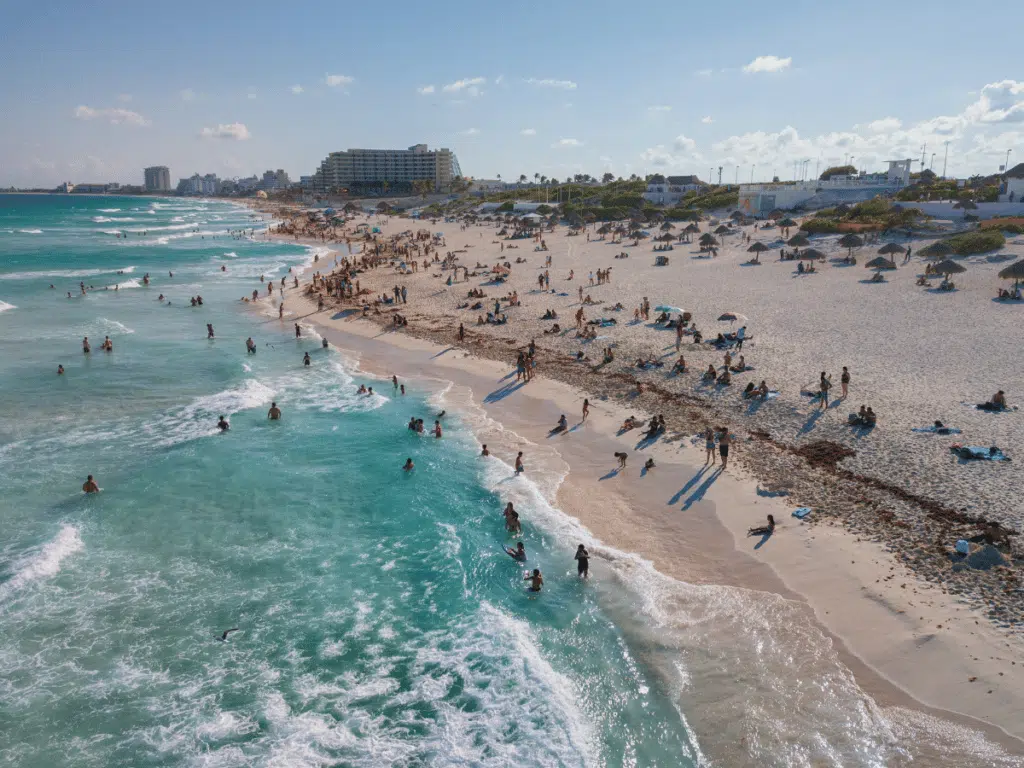
Best Hotels & Hostels in Quito
- The Secret Garden, Quito ($)
- Selina Quito ($ – $$)
- Vista del Angel Boutique Hotel ($$)
- Hotel Carlota ($$ – $$$)
- Casa Gangotena ($$$)
Money-Saving Tips for Ecuador
Choose excursions wisely.
There are plenty of incredible excursions, tours, and activities in Ecuador, which can help make your travel experience that much better.
While most group tours and activities tend to be quite inexpensive for travelers, the cost can add up quickly if you’re not careful.
Choose the activities that will save you time – on transport, on public transportation, etc. – and provide unforgettable travel experiences. You don’t have to do it all, just focus on the ones that will be an irreplaceable opportunity.
These are just a few that I recommend!
- Whale watching in Puerto Lopez
- Biking down the side of Cotopaxi Volcano
- Ziplining in Mindo
Don’t Go to the Galapagos – Maybe?
The Galapagos Islands are a notoriously expensive travel destination. If you’re traveling as a backpacker, I’d generally recommend steering clear of the Galapagos, unless you have money set aside for this bucket list trip.
However, sometimes you can find deeply discounted tour and cruise packages for sale at Galapagos tour companies’ offices in Quito. Often companies will slash the prices for their trips departing in just a day or two, though it would mean getting to the coast quickly for departure!
If you’re interested in traveling to the Galapagos on a backpacker’s budget, stop by tour company offices (there are several just a few blocks north of Plaza Foch in La Mariscal).
This can be a perfect opportunity for travelers with flexible Ecuador backpacking itineraries, so if you have the chance, it’s well worth looking in to.

Learn Some Spanish
Don’t underestimate the power of knowing at least a little Spanish in helping you save money (our guide to basic travel Spanish phrases will help!).
Spend some time practicing and learning some keywords to help you ask directions, read menus in restaurants, ask for advice , and communicate with people you might come in contact with.
Plan on downloading Google Translate as well! This easy-to-use app adds helpful new features all the time, like its image reader, which can help you translate menus.
Save Money on Food
Ecuador has a wide range of food options, from expensive fine dining in large cities to street food stalls in markets. Spending your food budget wisely as a backpacker is an important way to stretch your budget when traveling.
Steer clear of places selling international food and head to the local places, such as markets and hole-in-the-wall restaurants.
Make sure to take advantage of almuerzo specials – for around $3-5 USD, you’ll find delicious multi-course set menus for lunch, while a single plate could easily cost double that at a nicer restaurant.
You’ll generally find the cheapest prices for groceries at markets, especially for fruit and vegetables , so make sure to head to your local market before you visit a supermarket.
Plus, you’ll want to skip imported brands and select local products , as import taxes make these goods much more expensive.
Public Transportation
Ecuador has an extensive and relatively inexpensive public transportation system, one of the main reasons why Ecuador can be so cheap for backpackers. You’ll find interprovincial buses heading everywhere, and tickets that won’t cost more than $10 USD to take you long distances.
All interprovincial buses and most local buses are Greyhound-style buses and are generally relatively comfortable.
You’ll need to have cash ready to pay for bus fare, though if traveling through a bus station you’ll likely buy a ticket at a ticket counter before boarding.
When moving through Quito, make sure to download the Moovit app – this app is a game changer when it comes to figuring out the bus and train system that crisscrosses the city. You’ll simply add your destination and find multiple methods to get to where you’re going.
Guayaquil is the major bus hub for the coast, so you’ll likely have to travel through Guayaquil at some point in your travels . While Quito is an important destination for many bus lines and is a transportation hub, you’ll find many more buses traveling up and down the Andes than you will on the coast

Carley Rojas Avila
Carley Rojas Avila is a bilingual New York-based travel writer, editor, content marketer, and the founder of the digital travel publications Explorers Away and Home to Havana. Carley is an expert on all things Latin America, the Caribbean, and Cuba, having lived and worked in four different countries in the region. Her writing has appeared on the Associated Press wires and in Travel + Leisure, Yahoo, MSN, Euronews, The Weather Channel, and more. When she's not writing about her travels, find her front row at a Bad Bunny concert, befriending street cats, and taste-testing every pizza in Havana.
14 days in Ecuador - 5 travel itineraries
Book your individual trip , stress-free with local travel experts
- roughguides.com
- South America
- itineraries
- 14-days-in-ecuador-itinerary
- Travel guide
- Itineraries
- Local Experts
- Travel Advice
- Accommodation
Plan your tailor-made trip with a local expert
Book securely with money-back guarantee
Travel stress-free with local assistance and 24/7 support
Kerry Moore
Rough Guides hooked me up with a local tour operator to help plan a trip to Colombia. The experience was excellent! I got exactly what I wanted, recommenda...
Picture yourself traversing the vibrant streets of Quito's UNESCO World Heritage Old Town, basking in the glory of the Andean peaks, and immersing in the Amazon's lush rainforest. A trip to Ecuador is a coveted experience on many travel wish lists. Explore our guide for crafting the perfect 14-day itinerary in Ecuador.
Is 14 days enough for Ecuador?
Itinerary #1: classic ecuador, itinerary #2: adventure and nature, itinerary #3: luxury and the galapagos, itinerary #4: galapagos and mainland highlights, itinerary #5: best of the amazon and galapagos, prepare your ecuador itinerary, tailor-made travel itineraries for ecuador, created by local experts.

21 days / from 11900 USD
Ecuador's Best in 3 Weeks
A journey to the heart of Ecuador: discover the Andean highlands, go on a deep dive in the Amazon jungle, explore the colonial cities on the Pacific Coast and end your trip with the incredibly diverse Galapagos Islands. This trip packs all into one, the adventure of a lifetime!

10 days / from 5919 USD
Unique Lodges of Ecuador
Prepare yourself for the epitome of adventure and prestige with not one but two Unique Lodges in Ecuador into the lush and captivating nearby cloud forest to discover Mashpi Lodge. After that, prepare yourself for the wonders at your doorstep at the Finch Bay Galapagos Hotel.

14 days / from 6565 USD
Best of Peru & Galapagos Islands
Split your South America trip into two fascinating countries: Peru with Machu Picchu and the Sacred Valley, as well as ocean-facing capital Lima. Afterwards, proceed to the Galapagos Islands. You will stay on 3 different islands and explore many more.
Tailor-made trips for Ecuador
Yes, a 14 days itinerary to Ecuador can be sufficient. Some may prefer to add a few days if possible, but depending on your interests and planned activities, 14 days can be enough. You’ll want to plan your trip very carefully — although a lot can be done in two weeks, you do want to try to factor in seasonal weather , the altitude in certain destinations, and the need to rest.
Want to make the most of your 10 days in Ecuador? Consider hiring a professional to plan your trip. Our Ecuador travel experts will craft a perfect itinerary for you.

Ancient figure in Ecuador © Shutterstock

Cotopaxi el Panecillo Quito, Ecuador © Shutterstock
On this trip, you'll get a comprehensive take on all of the classic sites of Ecuador. On the first day , your journey starts in Quito , where you'll delve into its Colonial Center and iconic churches.
The third day entails a day trip to the Middle of the World, the monument dedicated to the equator. Moving forward to the fourth day , your expedition leads to Otavalo , famed for its Indigenous Market, while the fifth day is dedicated to exploring Peguche Waterfall and the vibrant Peguche community.
Venturing into days six to eight , immerse yourself in the awe-inspiring landscapes of Cotopaxi National Park and Quilotoa Lagoon. On the ninth day , you'll present yourself with a thrilling drive to Baños, offering adrenaline-fueled adventure sports. The tenth day unfolds with your exploration of waterfalls and relaxing in thermal springs.
Days eleven to thirteen bring the focus to Cuenca, unveiling its historical sites, and a captivating journey to Guayaquil . Your journey on the fourteenth day concludes with a flight to the Galapagos Islands, where unique wildlife and landscapes await your exploration. Book this trip .
Itinerary overview
Check the overview of this 2 weeks itinerary in Ecuador:
- Arrive in Quito at Mariscal Sucre International Airport (UIO).
- Transfer to accommodation in Quito.
- Explore the Colonial Center, Plaza Grande, and La Ronda.
- Visit iconic churches like La Compañía and La Basílica.
- Day trip to the Middle of the World (Mitad del Mundo).
- Overnight stays in Quito.
- Drive or take a bus to Otavalo.
- Explore Otavalo's famous Indigenous Market.
- Visit Peguche Waterfall and Peguche community.
- Overnight stay in Otavalo.
- Drive to Cotopaxi National Park.
- Hike around Lake Limpiopungo with Cotopaxi Volcano views.
- Hike to the refuge Jose Ribas.
- Explore the park's high-altitude flora and fauna.
- Overnight stay near Cotopaxi National Park.
- Drive to Quilotoa Lagoon.
- Hike around the crater or take a boat ride.
- Enjoy breathtaking views of the Andean landscapes.
- Overnight stay near Quilotoa.
- Drive to Baños.
- Explore Baños, known for adventure sports.
- Choose from activities like rafting, ziplining, or biking.
- Visit Pailon del Diablo and Agoyan waterfalls.
- Relax in thermal springs.
- Overnight stays in Baños.
- Drive or take a bus to Cuenca.
- Explore the historical center, a UNESCO World Heritage Site.
- Visit landmarks like New Cathedral and Parque Calderon.
- Explore museums such as Pumapungo Museum.
- Stroll through the charming streets of Cuenca.
- Overnight stays in Cuenca.
- Drive or take a bus to Guayaquil.
- Explore Malecón 2000 and Seminario Park.
- Visit Las Peñas historic neighborhood.
- Enjoy local cuisine along the riverfront.
- Overnight stay in Guayaquil.
- Fly to the Galapagos Islands .
- Explore the chosen island's unique wildlife and landscapes.
- Participate in guided tours or water activities.
- Overnight stay on the Galapagos Islands.
Interested? Don't miss the opportunity to book this trip now .

Blue-footed booby, Galapagos Islands © Shutterstock

Quito, concrete sculpture, Metropolitan Park © Ecuadorpostales/Shutterstock
Explore Ecuador's reputation for thrilling activities and unparalleled natural beauty on this 14 day Ecuador itinerary, where you'll encounter the best of both worlds.
On the first day , your journey commences in Quito. On the second day, you’ll explore Quito's Colonial Center and iconic churches. Day three features a trip to the Middle of the World, followed by overnight stays in Quito. On the fourth day , you embark on a drive or bus journey to Mindo for exploration of the Cloud Forest.
The fifth day takes you to the Mindo Butterfly Farm and Orchid Garden, engaging in activities like birdwatching. Days six and seven guide you through an Amazon Rainforest excursion. Day eight involves a drive to Puyo, exploring the Waterfall Route, and enjoying a scenic drive.
Day nine leads you to Baños for adventure sports, such as mountain biking and white-water rafting. On the tenth day , you visit the hot springs in Baños . Day eleven involves a drive to Chimborazo Volcano for high-altitude landscapes and wildlife reserve exploration.
Day twelve brings you to Cuenca, where you explore the historical center and museums. The thirteenth day includes a hike in El Cajas National Park and leisurely strolls in Cuenca. The fourteenth day concludes with a departure transfer from Cuenca. Book this trip.
Check the overview of this 14 days itinerary in Ecuador:
- Drive or take a bus to Mindo.
- Explore the Cloud Forest, known for its biodiversity.
- Visit Mindo Butterfly Farm and Orchid Garden.
- Enjoy activities like birdwatching and zip-lining.
- Overnight stays in Mindo.
- Drive or take a bus to Tena in the Amazon Rainforest.
- Arrive at the lodge in Tena.
- Explore the rainforest surroundings.
- Guided Amazon Rainforest excursion with local naturalist.
- Participate in cultural activities with indigenous communities.
- Overnight stays in Tena.
- Drive to Puyo.
- Explore the Waterfall Route.
- Visit Pailón del Diablo waterfall and El Pailón del Diablo Park.
- Enjoy a scenic drive through the lush landscapes.
- Overnight stay in Puyo.
- Mountain biking adventure along the famous Avenue of Waterfalls.
- White-water rafting on the Pastaza River.
- Visit hot springs like Termas de la Virgen.
- Drive to Chimborazo Volcano.
- Explore the high-altitude landscapes.
- Visit the Chimborazo Wildlife Reserve.
- Enjoy panoramic views from the Chimborazo Base Camp.
- Overnight stay near Chimborazo.
- Hike in El Cajas National Park.
- Transfer to the airport for departure.
Inspired? Don't waste any time and book this trip now .

Quilotoa Crater Lake, Ecuador © Shutterstock

Middle of the World, Ecuador © Shutterstock
Over the course of two weeks, this itinerary commences in Quito with a leisurely first day adjusting to the altitude at Hacienda Rumiloma. The second day immerses you in exploring Quito's historic center, while the third day involves a private transfer to Otavalo and an evening at Hacienda Zuleta.
Day four unfolds with an exploration of Otavalo Market and Cotacachi's leather artisans. On the fifth day , you transition from Otavalo to Papallacta, indulging in relaxation in hot springs. Day six includes invigorating horseback riding near Cotopaxi, followed by a drive to Baños on the seventh day , where you explore the town and its natural attractions.
Day eight offers leisure in Baños, followed by a return to Quito in the afternoon. Day nine you’ll spend an evening at Galapagos Safari Camp. The tenth day is dedicated to exploring lava tunnels and a tortoise reserve.
Day eleven includes a captivating coffee plantation tour, birdwatching, and biking to Garrapatero Beach. On the twelfth day , a thrilling day trip takes you to uninhabited islands, and day thirteen unfolds with an exploration of the highlands, Charles Darwin Research Station, and Puerto Ayora.
The fourteenth day concludes with a morning of leisure, a ferry to Itabaca Channel, and a transfer to the airport in Quito for your departure. Book this trip .
- Arrive at Mariscal Sucre International Airport (UIO).
- Transfer to Hacienda Rumiloma.
- Explore leisurely, adjust to the altitude.
- Overnight stay in Quito.
- Guided tour of Quito's historic center.
- Visit La Ronda, Plaza de la Independencia, and the Presidential Residence.
- Lunch with a view at Vista Hermosa or other scenic spots.
- Afternoon visit to the Equator Monument and Museo Intiñan.
- Private transfer from Quito to Otavalo.
- Check into Hacienda Zuleta.
- Evening at leisure.
- Visit the famous Otavalo Market.
- Explore stands with diverse products.
- Lunch at Cuicocha Crater Lake.
- Visit leather artisans in Cotacachi.
- Drive to Papallacta.
- Relax and enjoy the hot springs.
- Overnight stay at Termas Papallacta.
- Transfer to Cotopaxi National Park.
- Explore Lake Limpiopungo.
- Optional hike to the Refugio José Rivas.
- Horseback riding around Hacienda El Porvenir.
- Overnight stay near Cotopaxi.
- Visit Saquisilí market.
- Drive through Ambato to Baños.
- Explore Baños de Agua Santa.
- Visit hot springs and waterfalls.
- Overnight stay in Baños.
- Choose from various activities in Baños.
- Optional adventure sports or a visit to the Pailón del Diablo.
- Afternoon drive back to Quito.
- Overnight stay in Hacienda Rumiloma.
- Transfer to the airport.
- Flight to Santa Cruz Island.
- Arrive at Galapagos Safari Camp.
- Overnight stay on Santa Cruz Island.
- Walk to lava tunnels and tortoise reserve.
- Observation of giant Galápagos tortoises.
- Relaxation in the camp's grounds.
- Sunset views and dinner at the camp.
- Tour of an organic coffee plantation.
- Visit Cerro Mesa reserve for birdwatching.
- Downhill biking to Garrapatero Beach.
- Enjoy the beach and wildlife.
- Evening at the camp with dinner.
- Yacht trip to Santa Fé, South Plazas, Bartolomé, or North Seymour.
- Exploration of unique landscapes and wildlife.
- Return to Puerto Ayora for free time.
- Visit the highlands and Charles Darwin Research Station.
- Explore Puerto Ayora, the largest community in the Galápagos.
- Relax at Tortuga Bay or engage in water activities.
- Farewell dinner at the camp.
- Morning at leisure for final activities.
- Transfer to Itabaca Channel via ferry.
Looking for a new experience? Book your trip now .

Galapagos Iguana © Shutterstock

Cononaco River, The Amazon, Ecuador © Shutterstock
On this trip , you’ll get to experience the beauty of Ecuador from the comfort of a super yacht. Over fourteen days, your journey unfolds in Quito. The second day whisks you to Santa Cruz, where you board the Aqua Mar Luxury Yacht, and explore Bahia Borrero.
Day three immerses you in the wonders of Genovesa Island, earning an Equator crossing certification, exploring El Barranco, lava fields, and Bahía Darwin's coralline beach.
On the fourth day , choose between a workout or guided meditation, embark on an excursion to Bahía Sullivan, and visit Sombrero Chino Island. Day five sees you climbing Bartolomé Island, visiting Cerro Dragón, and sailing towards Santa Cruz Island.
The sixth day unfolds with an exploration of El Chato Giant Tortoise Reserve and Puerto Ayora. Day seven involves a morning excursion in Punta Suárez and a visit to Bahía Gardner.
On the eighth day , you'll visit Santa Fé Island and sail to Plaza Sur Island. Day nine marks the transition from Santa Cruz to Guayaquil, with a short excursion to Los Gemelos.
The tenth day explores Las Cajas National Park and day eleven involves a Cuenca city tour and a journey to the Ingapirca Ruins.
Day twelve includes a visit to Chimborazo volcano and continues to Baños for adventure and relaxation at Samari Spa Resort. Day thirteen takes you through the "Avenue of Waterfalls," visits El Pailon del Diablo waterfall, and returns to Quito.
The fourteenth day includes a morning exploration of Cuicocha Lagoon, a visit to the Otavalo market, lunch at Cuicocha, and an exploration of leather artisans in Cotacachi. Book this trip .
- Welcome to Quito - Transfer & Welcome Dinner.
- Private transfer to accommodation in Quito city center.
- Explore the colonial center of Quito.
- Visit Plaza Grande, La Compañía, and La Basílica.
- From Quito to Santa Cruz (flight).
- Flight to Santa Cruz.
- Board the Aqua Mar Luxury Yacht.
- Nikkei-inspired lunch and snorkeling kit distribution.
- Excursion to Bahia Borrero, Santa Cruz.
- Dinner onboard the yacht.
- El Barranco - Bahia Darwin - Genovesa Island.
- Explore Genovesa Island.
- Equator crossing certificate ceremony.
- Visit El Barranco and the lava fields.
- Snorkeling session.
- Visit Bahía Darwin's coralline beach.
- Private movie screening at Beach Club.
- Bahia Sullivan - Santiago Island - Sombrero Chino.
- Morning workout or guided meditation.
- Excursion to Bahía Sullivan on Santiago Island.
- Lecture on the geology of the Galapagos.
- Visit Sombrero Chino Island, snorkeling, and water activities.
- Evening sundowners and barbecue dinner on the upper deck.
- Bartolome Island - Cerro Dragon - Santa Cruz.
- Climb to the summit of Bartolomé Island.
- Sail towards Santa Cruz Island.
- Visit Cerro Dragón and Flamingo Lagoon.
- Al fresco dinner onboard the yacht.
- El Chato Giant Tortoise - Fausto Llerena Breeding Center - Santa Cruz.
- Explore El Chato Giant Tortoise Reserve.
- Lecture on the evolution of Darwin’s finches.
- Tender ride to Darwin Station and Fausto Llerena Breeding Center.
- Free time in Puerto Ayora.
- Superfruit juices at the Beach Club.
- Punta Suarez - Bahia Gardner - Osborn Islet - Española Island.
- Guided meditation and morning excursion in Punta Suárez.
- Afternoon tender ride to islets for snorkeling.
- Visit Bahía Gardner with the sea lion colony.
- Happy Hour at the bar onboard.
- Visit Santa Fé Island.
- Snorkeling, kayaking, or stand-up paddle boarding.
- Lunch onboard.
- Sail to Plaza Sur Island for a hiking excursion.
- From Santa Cruz to Guayaquil (flight).
- Short excursion to Los Gemelos on Santa Cruz.
- Transfer to hotel (Oro Verde).
- From Guayaquil to Las Cajas and Cuenca.
- Breakfast and pick-up by guide/driver.
- Visit Cajas National Park.
- Continue to Cuenca and overnight at Mansion Alcazar.
- Cuenca City Tour.
- Morning city tour in Cuenca.
- Afternoon journey to Ingapirca Ruins.
- Overnight in Riobamba at Hosteria La Andaluza.
- Visit Chimborazo volcano.
- Continue to Baños for adventure and relaxation.
- Overnight at Samari Spa Resort.
- Drive along the "Avenue of Waterfalls".
- Visit El Pailon del Diablo waterfall.
- Return to Quito via Baños.
- Walking city tour in Quito.
- Equatorial monument Mitad del Mundo.
- Morning exploration of Cuicocha Lagoon.
- Visit Otavalo market.
- Lunch at Cuicocha.
- Explore leather artisans in Cotacachi.

Interior of humid cloud forest © Dr Morley Read/Shutterstock

Bartolome Island, Galapagos, Ecuador © Seumas Christie-Johnston/Shutterstock
On this itinerary , you’ll explore three dream destinations in Ecuador: Quito and Otavalo, followed by the Amazon with guided boat tours, and then to the Galapagos Islands.
The first day welcomes you to Quiton, allowing leisurely exploration of the UNESCO World Heritage Site. The second day unfolds with a walking city tour, visiting Plaza Grande, La Compañía, La Basílica, and La Ronda, followed by a cooking class in Old Town Quito and a visit to the Mitad del Mundo monument.
Day three commences with a transfer to the Yasuni Biosphere Reserve in the Amazon. On the fourth day , you’ll explore the Napo Cultural Center. Here you can take an afternoon hike, kayak, and visit the Kuri Muyu and Canopy Tower. Enjoy a traditional dinner, and a Wayusa Ritual, and then with a return to Quito.
Day five involves a day tour of Otavalo and Cuicocha Lagoon, exploring the Otavalo market. The sixth day features a hike around Cuicocha Lagoon and a return to Quito.
On day seven you’ll arrive in Puerto Ayora and visit the Highlands, Charles Darwin Station, and Tortuga Bay. Day eight offers leisure on Santa Cruz and a day trip to an uninhabited island.
The ninth day includes a visit to Floreana Island and a return to Puerto Ayora. Day ten involves a transfer to Quito with arrival and leisure time. The eleventh day explores Isla Floreana, followed by leisure time in Puerto Ayora.
Day twelve allows exploration of Quito at your own pace, enjoying the vibrant culinary and nightlife scene, and preparing for international departure. Day fourteen bids farewell to Ecuador. Book this trip.
- Welcome to Quito - Transfer and day at leisure.
- Arrival at Mariscal Sucre International Airport (UIO).
- Transfer to accommodation.
- Explore Quito, a UNESCO World Heritage Site.
- City Tour, Cooking Class at Lunch & Mitad del Mundo.
- Walking city tour of Quito.
- Visit Plaza Grande, La Compañía, La Basílica, and La Ronda.
- Cooking class in Old Town Quito.
- Visit Mitad del Mundo monument.
- 30-minute flight to Coca.
- Transfer to the port.
- Departure for Yasuni Biosphere Reserve, Amazon.
- Yasuni Biosphere Reserve, Amazon.
- Arrival at Napo Cultural Center.
- Afternoon hike and kayaking.
- Visit to Kuri Muyu and Canopy Tower.
- Traditional dinner.
- Wayusa Ritual.
- Return to Coca and flight to Quito.
- Day Tour to Otavalo and Cuicocha Lagoon.
- Hike around Cuicocha Lagoon.
- Return to Quito.
- Arrival at Puerto Ayora.
- Visit Highlands & Charles Darwin Station.
- Visit Tortuga Bay.
- Santa Cruz Island.
- Day at leisure on Santa Cruz.
- Day trip to an uninhabited island.
- Visit Floreana Island.
- Return to Puerto Ayora.
- Transfer to Quito.
- Arrival and leisure time.
- Visit Isla Floreana.
- Leisure time in Puerto Ayora.
- Return flight to Quito.
- Explore Quito at your own pace.
- Enjoy the vibrant culinary and nightlife scene.
- Rest and prepare for international departure.
- Goodbye Ecuador - Transfer to the airport.

Giant tortoise in El Chato Tortoise Reserve © Alberto Loyo/Shutterstock
Allow our team of local Ecuador travel experts to curate your dream trip to Ecuador. When you're ready to embark on your adventure, reach out to us , and we'll craft a personalized itinerary just for you.
Feel free to browse our pre-designed Ecuador itineraries for ideas, and remember that all can be tailored to meet your specific needs. For more inspiration, discover some of the best things to do in Ecuador.
The Rough Guides to Ecuador and related travel guides
In-depth, easy-to-use travel guides filled with expert advice.

Travel advice for Ecuador
From travel safety to visa requirements, discover the best tips for traveling to Ecuador
- Culture and Etiquette in Ecuador
- Eating and drinking in Ecuador
- How to get to Ecuador
- Getting around Ecuador: Transportation Tips
- Travel Health Ecuador
- National Parks in Ecuador
- Sports and Outdoor activities in Ecuador
- Travel Tips Ecuador for planning and on the go
- Best time to visit Ecuador
Find even more inspiration here

written by Dre Roelandt
updated 05.02.2024
Dre Roelandt is originally from the United States but lives and works in Berlin, Germany. Dre is a freelance writer and artist with a passion for travelling. They are an in-house Content Editor at Rough Guides.
Ready to travel and discover Ecuador?
Get support from our local experts for stress-free planning & worry-free travels.
- Where to stay
- Travel advice

IMAGES
VIDEO
COMMENTS
This blog post includes a detailed one-month Ecuador travel itinerary for backpackers, budget travelers, and vacationers. We share our tips on things to see and do in four weeks in Ecuador. Our detailed Ecuador 4-week itinerary will take you to Quito, Galapagos Islands, Mindo, Otavalo, Banos, Quilotoa Loop, Cuenca, and a few more places ...
What To Expect. Language: The official language of Ecuador is Spanish, with 93% of its population speaking it. Currency: The currency of Ecuador is the United States dollar (USD). Credit Cards & ATMs: Credit cards (Visa, Mastercard, and American Express) are widely accepted in Ecuador. You can use them in hotels, shops, and restaurants. ATMs are located throughout the country if you find ...
The Ultimate Ecuador Itinerary 2023. This is a guest post by Alyssa. There is something extra special about visiting Ecuador. Maybe it's because it is still somewhat off the beaten path, meaning there are far fewer crowds than more popular travel destinations; or perhaps it's because Ecuador is the country of four worlds: coast, jungle ...
Day 1: Arrive in Quito, Ecuador. This 2-week Ecuador itinerary starts in Quito, the capital city of Ecuador. Situated high in the Andes, in the Guayllabamba river basin, Quito is the first city in the world to be crowned a UNESCO World Heritage Site. In the 16th century, the city was rebuilt by the Spanish atop the ruins of an ancient Incan ...
You've come to the right place. The best Ecuador itinerary is going to include the must-see cities of Quito, Baños, and Cuenca. Depending on time, you can include the Galapagos Islands, the Amazon Rainforest, volcano hikes, and Pacific coast beaches. Choose between the catered 7-day, 10-day, 2 week, and 3 week itineraries as it fits your needs.
Day Seven: Quilotoa. Day Eight: Tena. Day Nine: Tena. Day Ten: Quito. This 10-day Ecuador itinerary takes you to some of the most beautiful spots in the country - Quilotoa's blue-green crater lake, the impressive snow-capped Cotopaxi volcano, Otavalo's indigenous market, the Amazon Rainforest, and more.
So I've taken all of my first-hand knowledge and created the perfect two-week itinerary in Ecuador. ... Twelve years, 100 countries, and one successful travel blog later, I'm still going. This website is the result of tens of thousands of hours of on-the-ground research. I pay for all my travels myself, don't take press trips, and travel ...
Keep reading for our ultimate itinerary for 1 week in Ecuador. With the help of this Ecuador itinerary, 1 week should be the perfect amount of time to have a fantastic travel introduction to this unforgettable country. Plus, you'll learn how to customize this itinerary for 7 days in Ecuador to make it exactly the trip you're hoping for.
Route 1: Adventure Seeking in Ecuador. 🗺️ Arrive in Quito > Amazon Rainforest > Cotopaxi > Banos > Onward travel. Night 1: Arrive in Quito. Stay at Community Hostel to prep for your Amazon Rainforest tour starting the next day. If you arrive early enough, take a free walking tour or visit the equator line.
Cotopaxi Summit - $295/person if there are at least 2 people, $395/person if only one person signed up. Cotopaxi National Park Tour - $30/person + $5-$10/person to rent a bike. Plus several other options depending on your hiking skill level and desire to pull yourself away from the views at the hostel.
This 2 week itinerary will start in Quito, where you will spend 2 days visiting some of the highlights of this beautiful city nestled in the Andes, before heading south to take in the views of the breathtaking Cotopaxi volcano and the Quilotoa crater. After a few days in the Andes, you will make your way to Banos, the adventure capitol of Ecuador.
Ecuador Travel Costs. Accommodation - Accommodation is inexpensive in Ecuador. Dorms start around $6 USD per night, while a private room ranges from $10-50 USD. Free Wi-Fi is standard, and many hostels also include free breakfast. For those traveling with a tent, camping is available all around the country.
Ecuador is a lot easier to travel around and one of the cheapest countries in South America to travel around - on average one hour of bus travel in Ecuador is $1.00 USD and there are plenty of really good hostels, therefore it makes backpacking Ecuador really easy or visiting Ecuador on holiday really easy. This was my 3 week Ecuador ...
Total budget for this itinerary. Based on these two separate components of the itinerary, you're looking at anywhere from $1,300USD to $2,000 USD to travel for 18 days around the Galápagos Islands and mainland Ecuador, which equates to about $112AUD or $175AUD per day, respectively.
Bisected by the mighty Andes, with the Amazon on one side and the Pacific Coast on the other, mainland Ecuador only looks small on a map. Don't be deceived; you could spend months exploring this country. But if you're a vacation-deprived North American, take heart: you can still see a lot in a single week. This 7-day itinerary takes you ...
Population: 17.6 million Capital: Quito Language: Spanish— read more about the Language barrier below Currency: US Dollars— read more about Money in Ecuador below Power: Type A plug or B plug (same as the 2- or 3-prong types used in America) at 120V Visa: A free 90-day travel visa is issued on arrival (at the airport) for citizens of most countries, including Australia, America, and UK
One of the best hidden gems of Ecuador are the little town of Loja and the even smaller village of Vilcabamba. These two destinations are off the beaten path, with most backpackers traveling no further south than Cuenca. It is also quite difficult to get to, needing a five or six hour bus from Cuenca.
Ecuador Itinerary 1 Month Suggested Ecuador itinerary for 1 month. Quito - 5 days; Begin your journey in Quito by flying directly into the airport. There is heaps to do in Quito but you should first prioritise allowing yourself to acclimatise. Quito is the highest capital in the world, located at a staggering 2850 metres above sea level.
Quito Carnival - early February before Ash Wednesday. Semana Santa (Holy Week) - the week before Easter Sunday (late March or early April) Ecuadorian Day of the Dead - November 2. New Year's Eve - December 31. Not a local festival, but Quiteños know how to celebrate!
Day 24 - 25: Cuenca (2 nights) Although it is relatively comfortable to go on a cruise in Galapagos, you might feel like you want to relax afterward. Cuenca is the perfect place for that. Take it slow and walk around this wonderful city. The city has one of the most photogenic cathedrals in Ecuador.
The weather in Ecuador generally varies depending on the area. The higher the altitude, the colder and more unpredictable it is. June to September is the warmest and driest period in the mountains, whereas May to November is quite cool in the south and on the coast. Galapagos is good all year round, whereas the Amazon will always be humid and ...
Safety in Ecuador. We're often asked about safety in Ecuador, especially for backpackers and female travelers. I can confidently say that Ecuador is generally quite a safe place to travel - it's even one of the safer countries in South America.. Living and working in Ecuador for 2+ years, I never had a single incident of being robbed or otherwise threatened or feeling unsafe.
Itinerary #1: classic Ecuador. Itinerary #2: adventure and nature. Itinerary #3: luxury and the Galapagos. Itinerary #4: Galapagos and mainland highlights. Itinerary #5: best of the Amazon and Galapagos. Prepare your Ecuador itinerary. Tailor-made travel itineraries for Ecuador, created by local experts.